Antibody Drug Conjugates (adcs) Having Enzymatically Cleavable Groups
LERCHEN; Hans-Georg ; et al.
U.S. patent application number 16/472749 was filed with the patent office on 2019-10-31 for antibody drug conjugates (adcs) having enzymatically cleavable groups. This patent application is currently assigned to Bayer Pharma Aktiengesellschaft. The applicant listed for this patent is Bayer Aktiengesellschaft, Bayer Pharma Aktiengesellschaft. Invention is credited to Sandra BERNDT, Lisa DIETZ, Simone GREVEN, Stefanie HAMMER, Dennis KIRCHHOFF, Hans-Georg LERCHEN, Christoph MAHLERT, Stephan MARSCH, Anne-Sophie REBSTOCK, Anette SOMMER, Beatrix STELTE-LUDWIG.
| Application Number | 20190328897 16/472749 |
| Document ID | / |
| Family ID | 57614197 |
| Filed Date | 2019-10-31 |
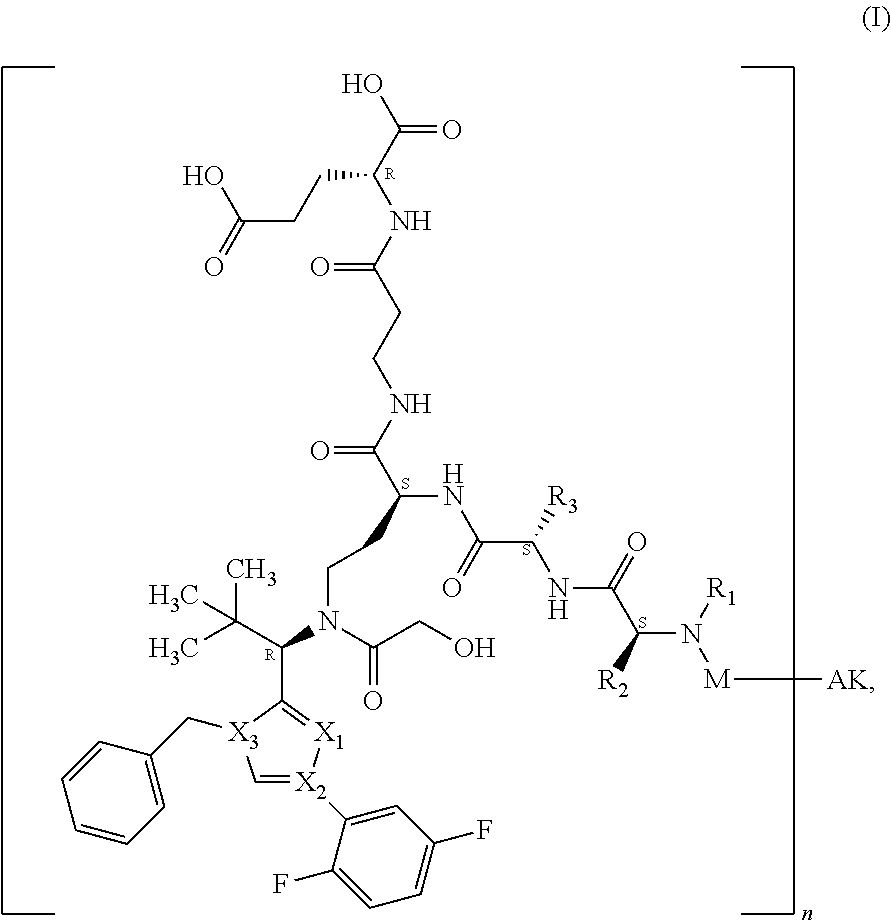
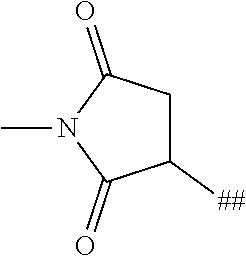
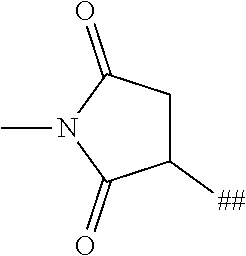
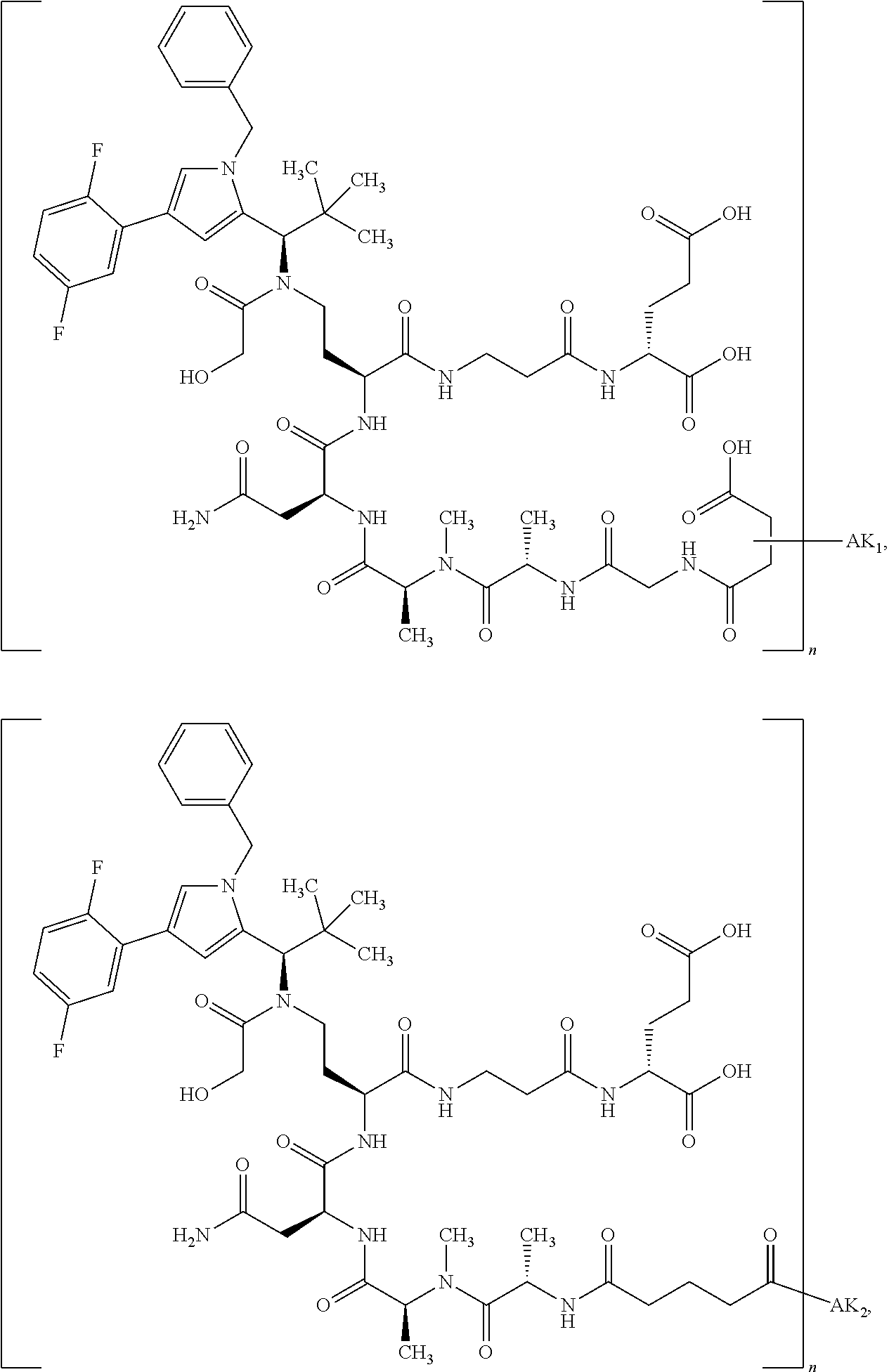
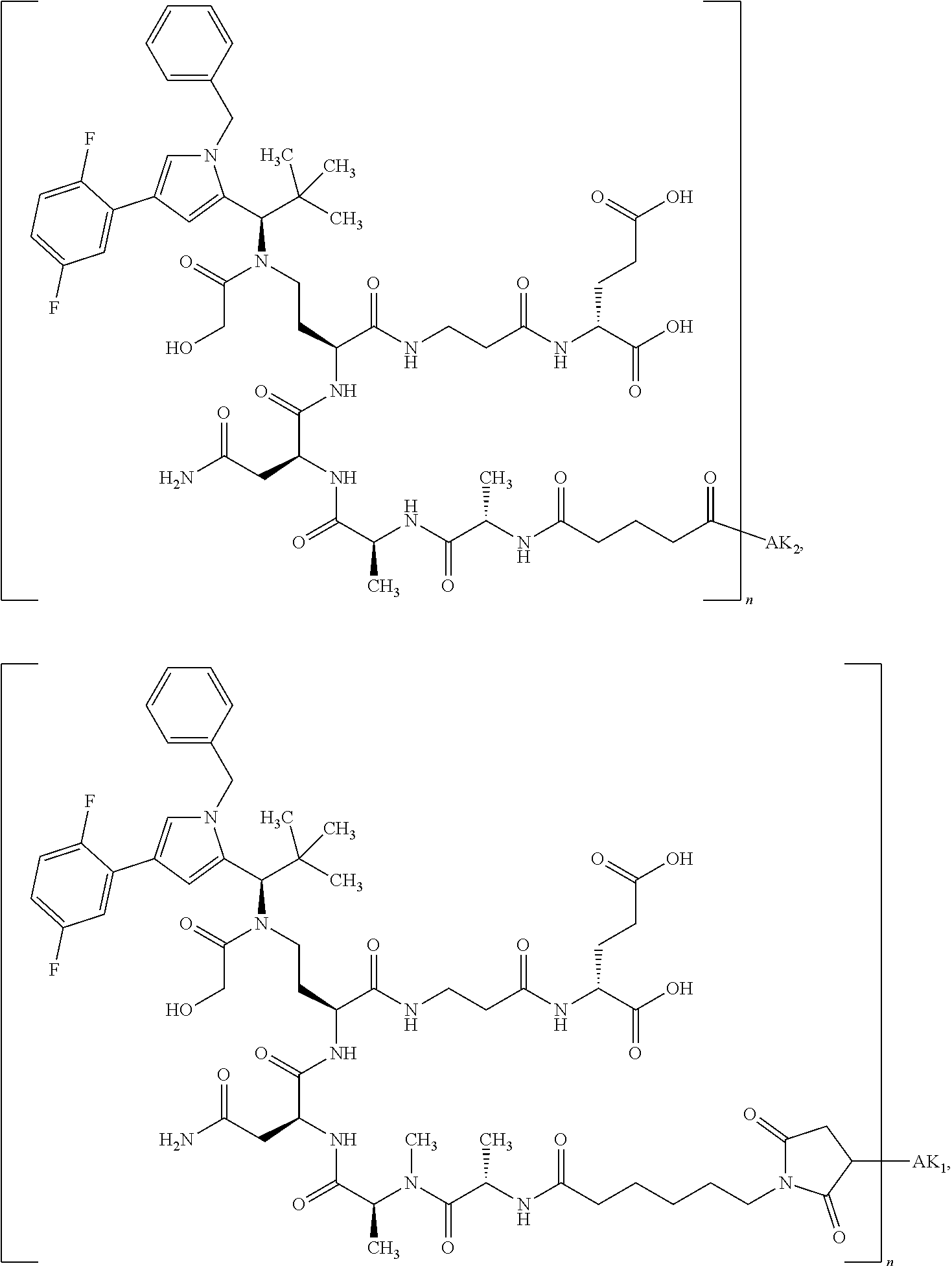
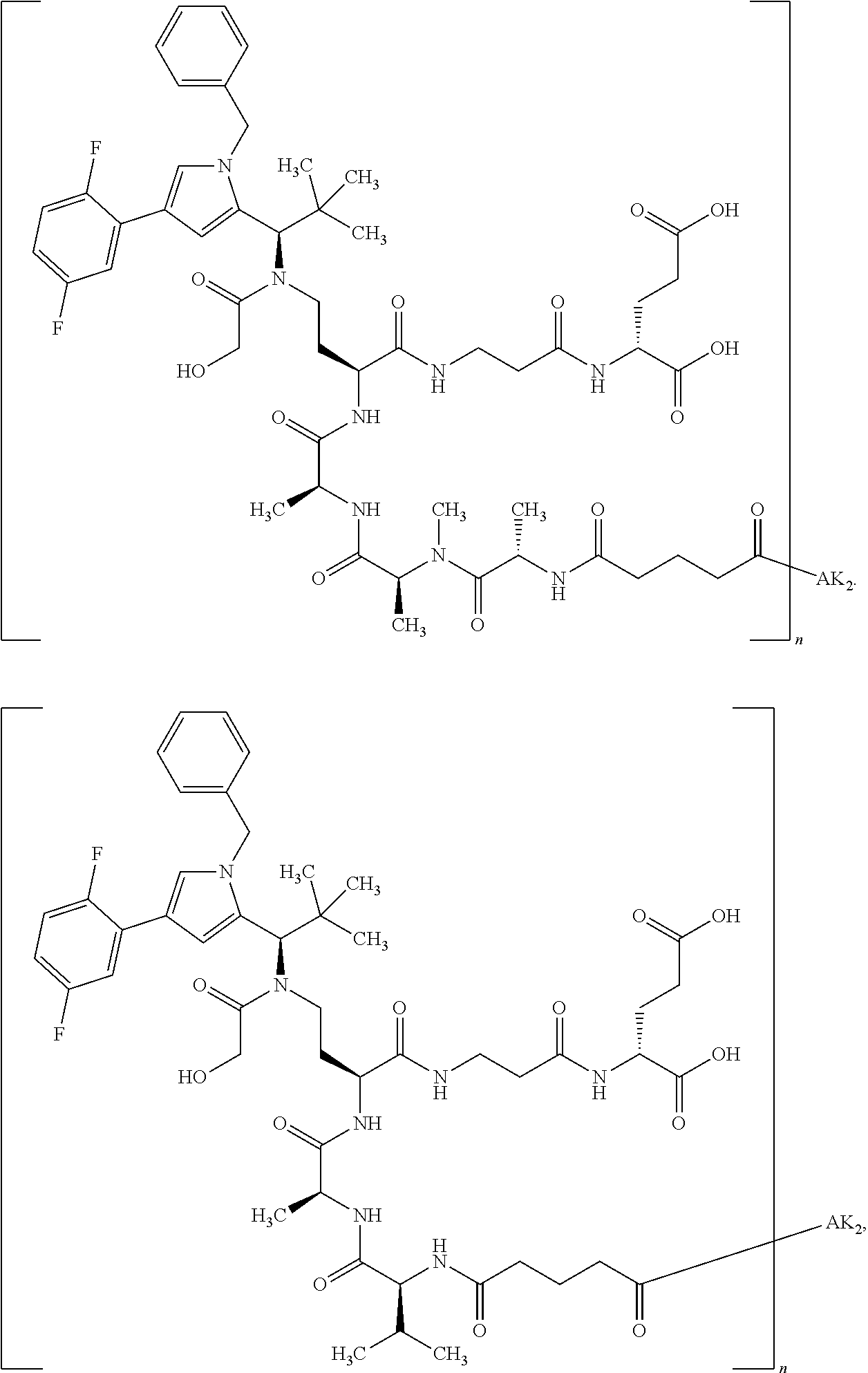
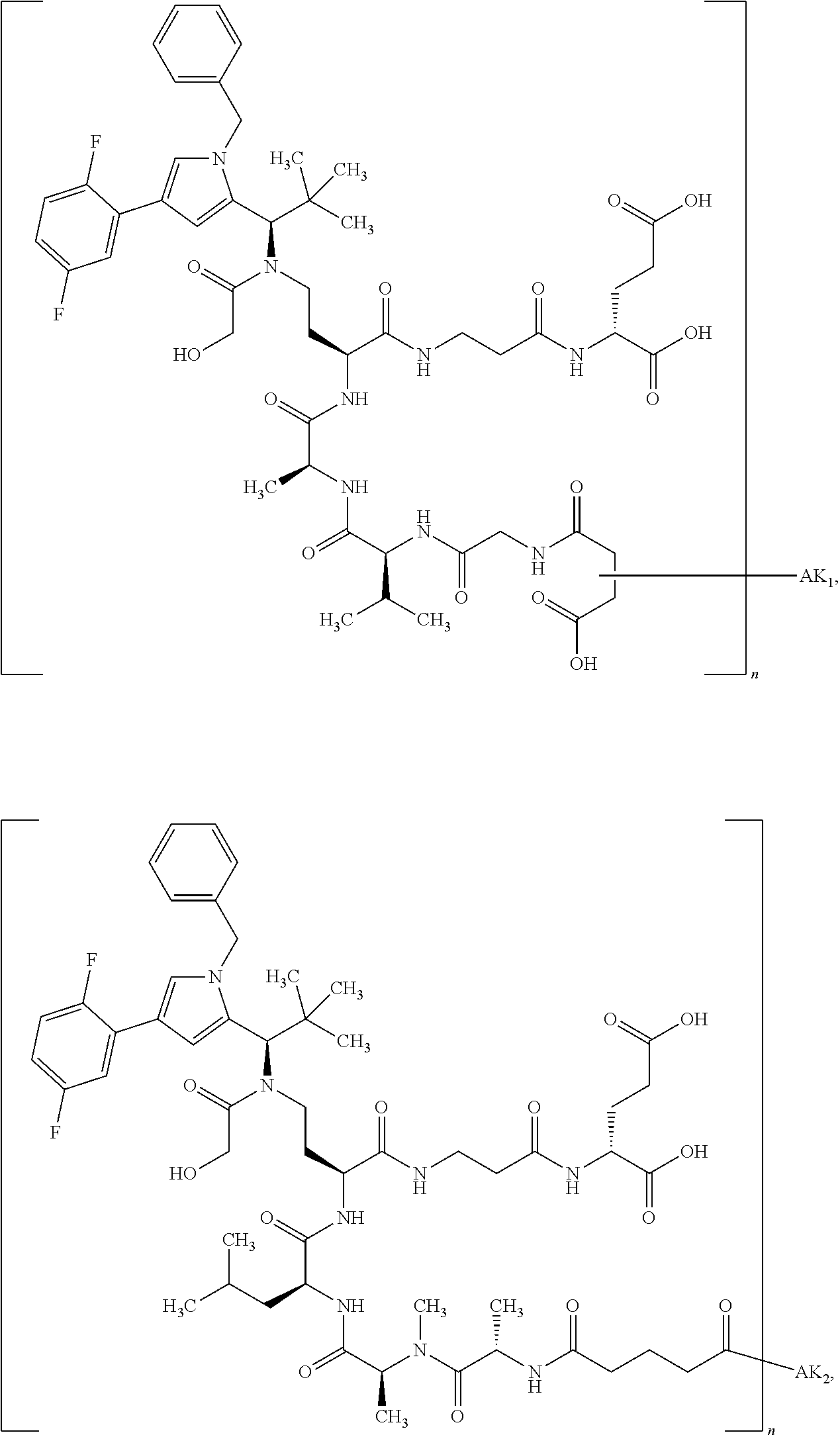
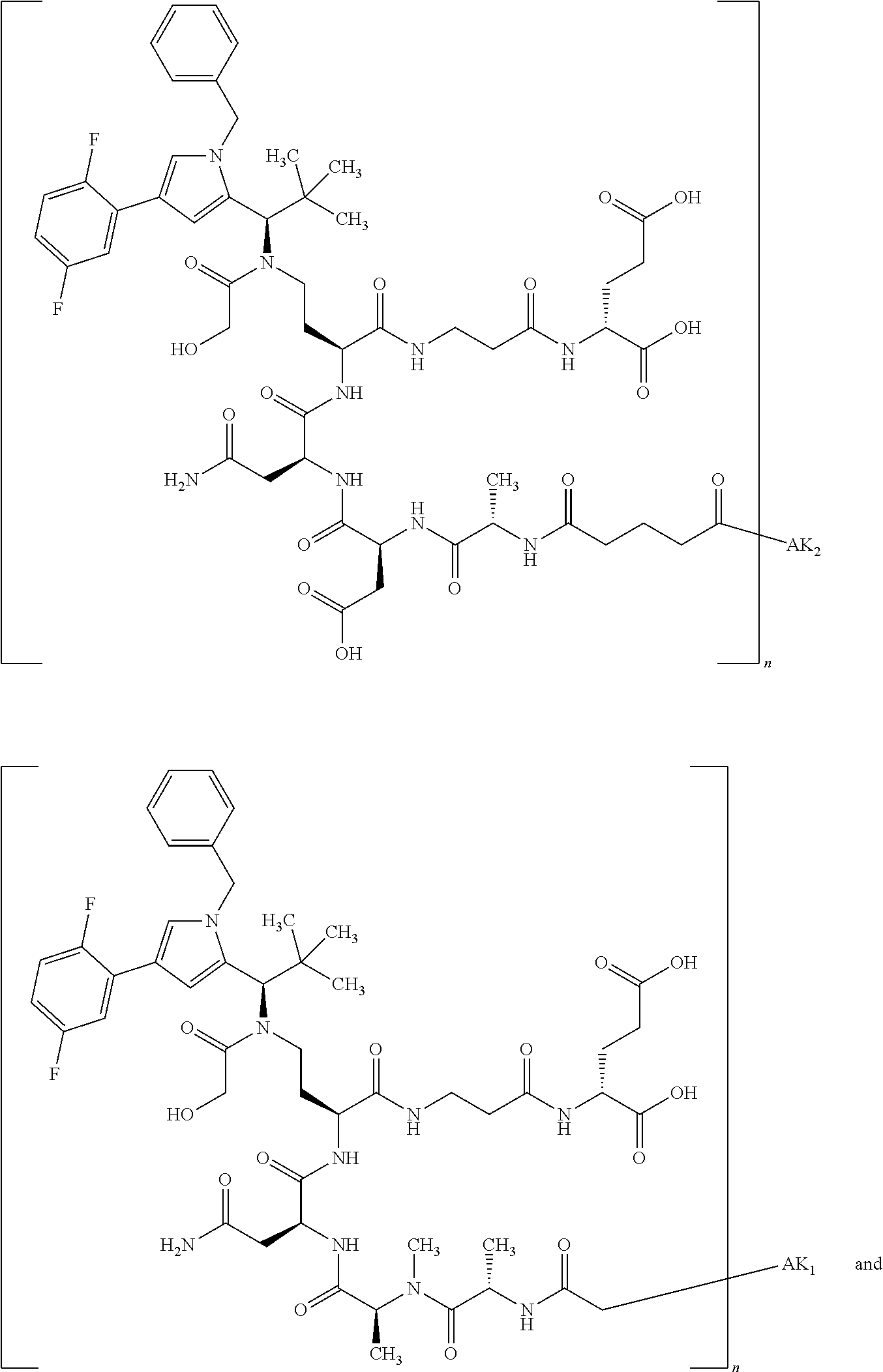
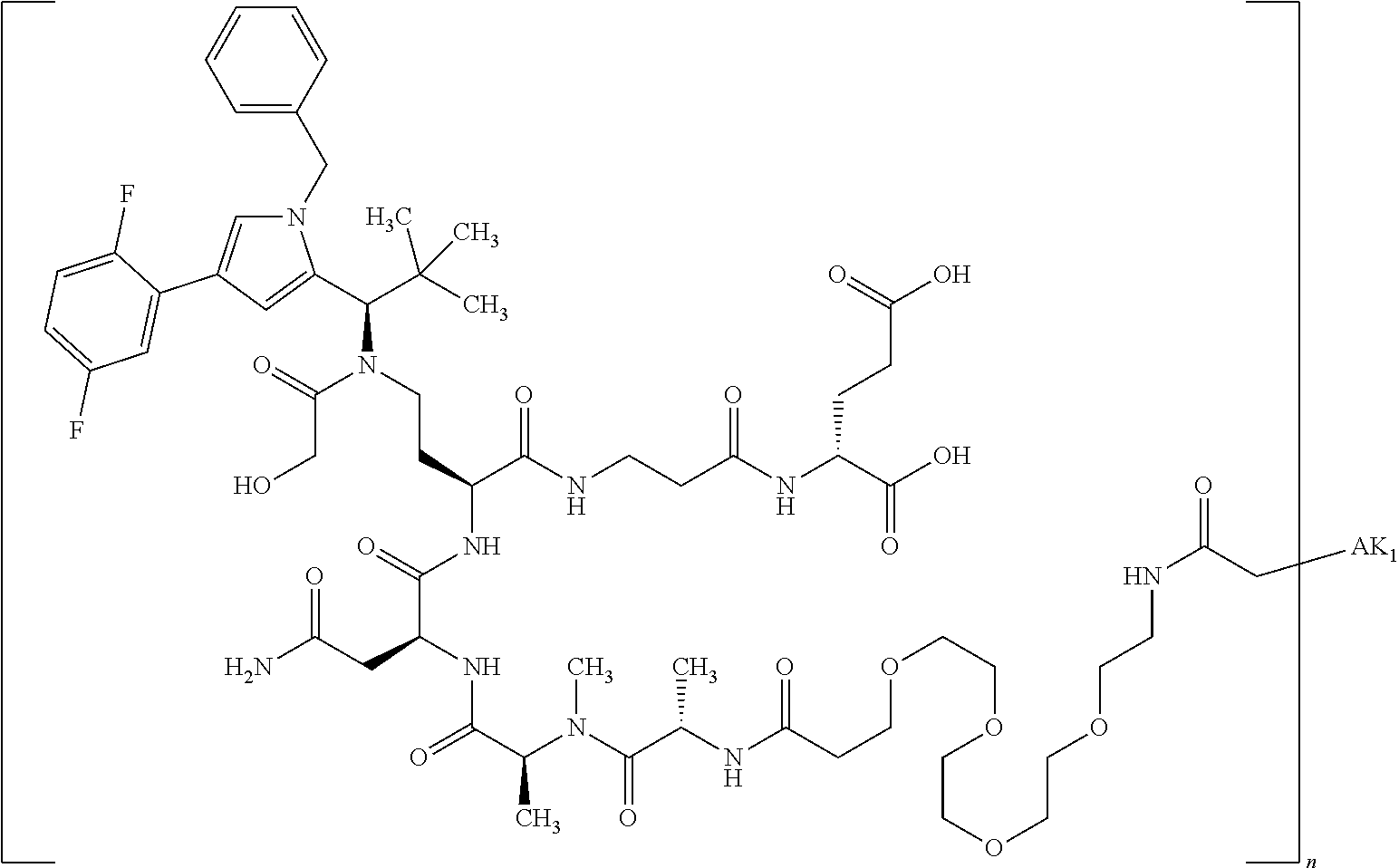
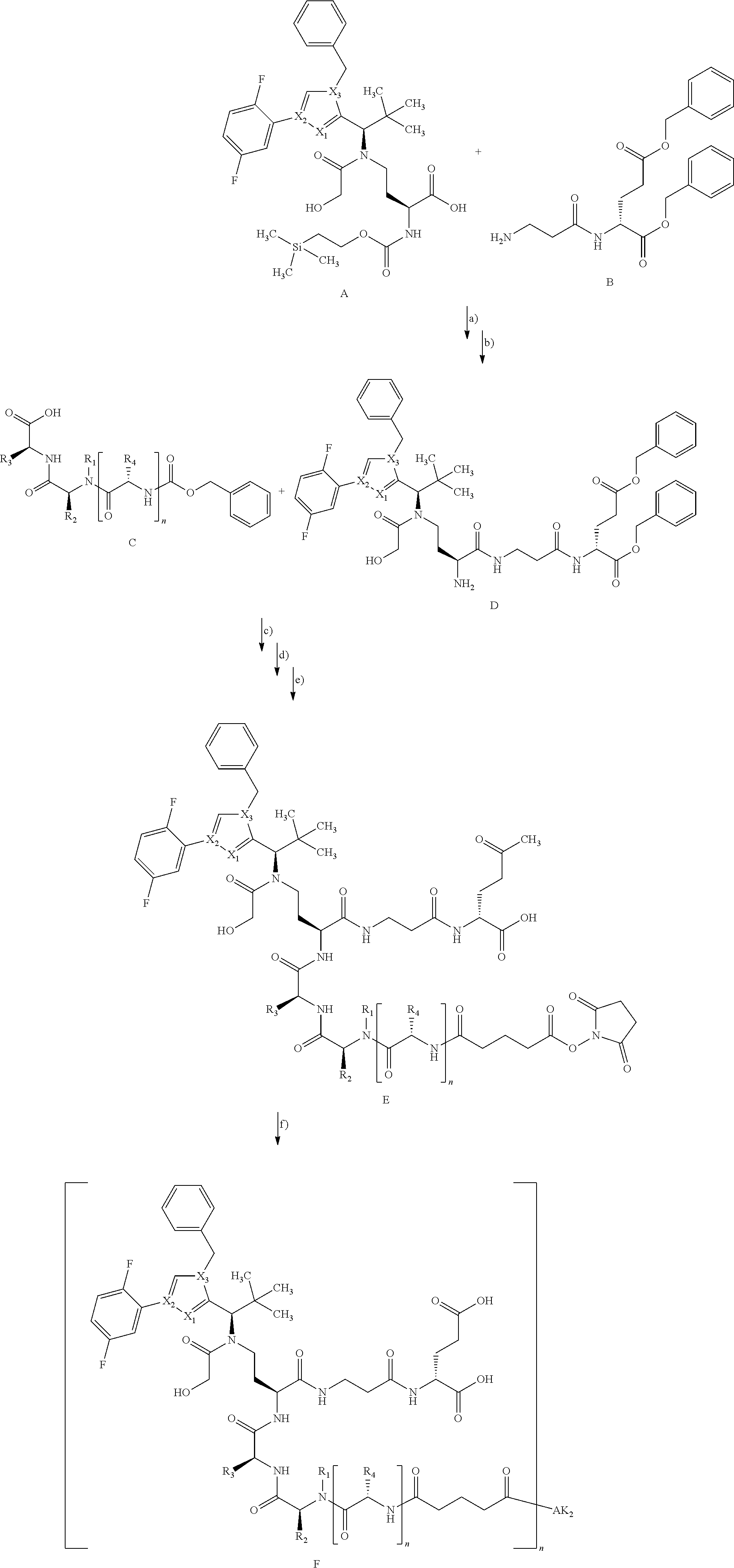
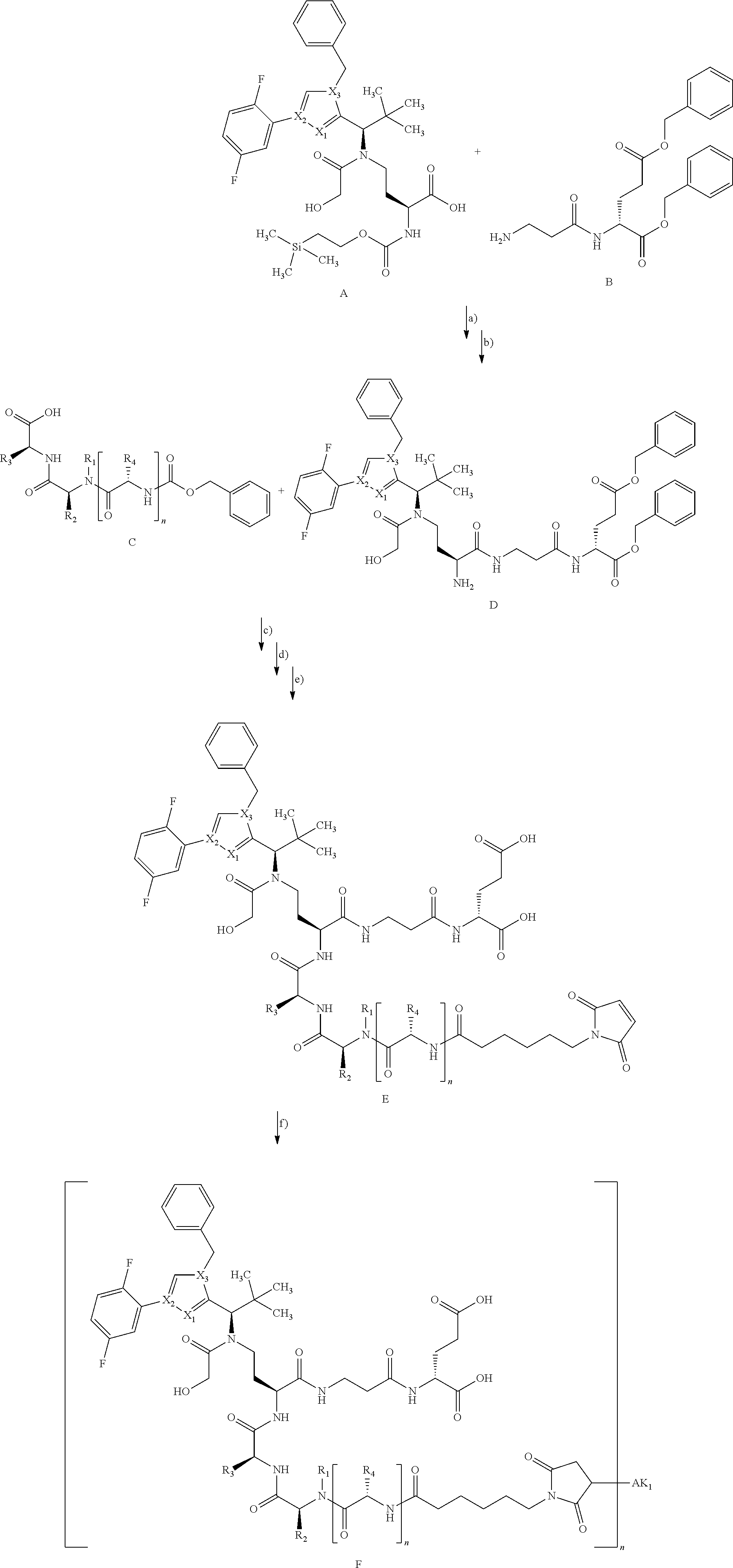
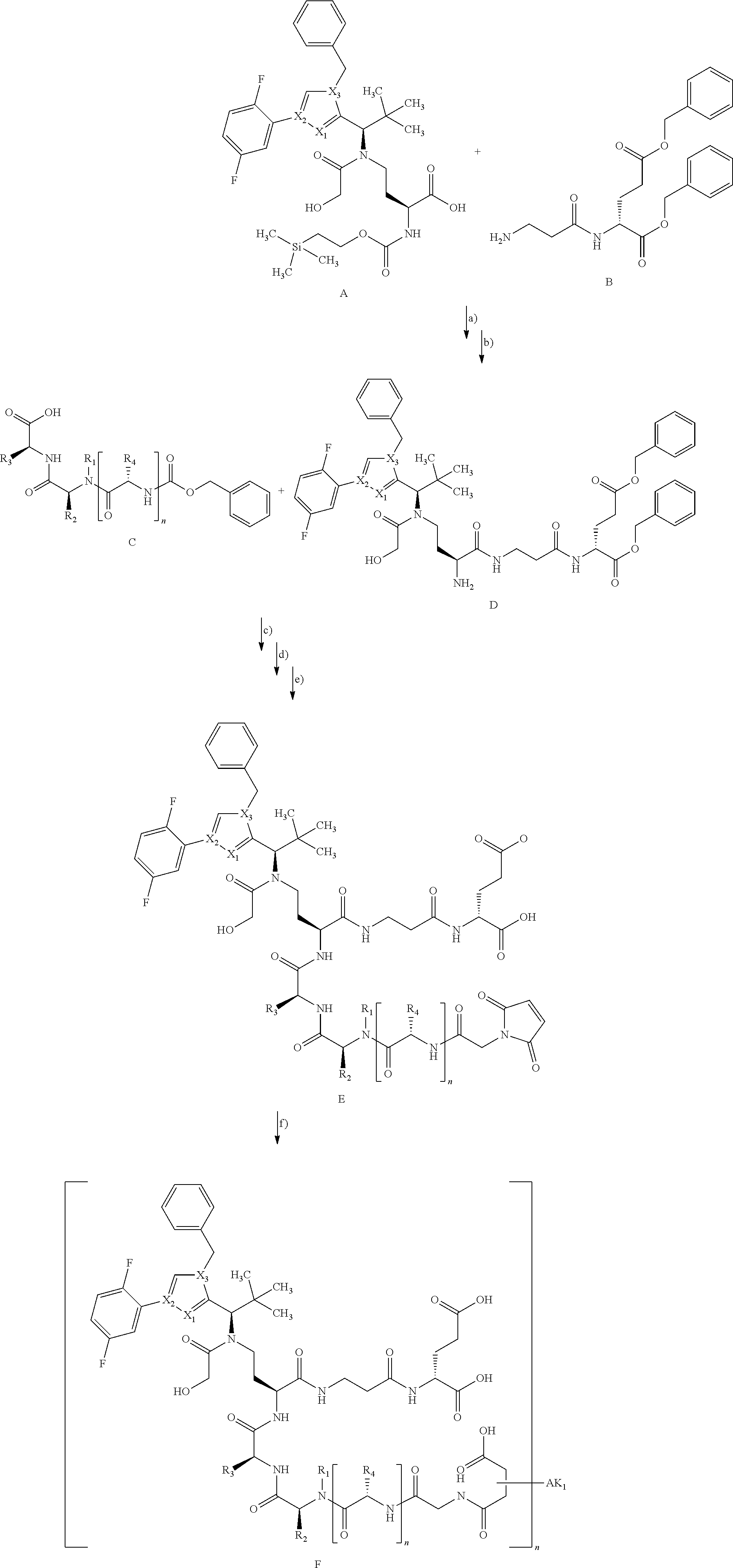
View All Diagrams
| United States Patent Application | 20190328897 |
| Kind Code | A1 |
| LERCHEN; Hans-Georg ; et al. | October 31, 2019 |
ANTIBODY DRUG CONJUGATES (ADCS) HAVING ENZYMATICALLY CLEAVABLE GROUPS
Abstract
The invention relates to novel binder-drug conjugates (ADCs) having improved properties, to active metabolites of these ADCs and to processes for their preparation. The present invention furthermore relates to the use of these conjugates for the treatment and/or prevention of diseases and to the use of these conjugates for preparing medicaments for treatment and/or prevention of diseases, in particular hyperproliferative and/or angiogenic disorders such as, for example, cancer diseases.
| Inventors: | LERCHEN; Hans-Georg; (Leverkusen, DE) ; REBSTOCK; Anne-Sophie; (Champagne au Mont d'Or, FR) ; STELTE-LUDWIG; Beatrix; (Wulfrath, DE) ; KIRCHHOFF; Dennis; (Berlin, DE) ; DIETZ; Lisa; (Wuppertal, DE) ; MAHLERT; Christoph; (Wuppertal, DE) ; GREVEN; Simone; (Dormagen, DE) ; MARSCH; Stephan; (Koln, DE) ; BERNDT; Sandra; (Hohen Neuendorf, DE) ; SOMMER; Anette; (Berlin, DE) ; HAMMER; Stefanie; (Berlin, DE) | ||||||||||
| Applicant: |
|
||||||||||
|---|---|---|---|---|---|---|---|---|---|---|---|
| Assignee: | Bayer Pharma
Aktiengesellschaft Berlin DE Bayer Aktiengesellschaft Leverkusen DE |
||||||||||
| Family ID: | 57614197 | ||||||||||
| Appl. No.: | 16/472749 | ||||||||||
| Filed: | December 14, 2017 | ||||||||||
| PCT Filed: | December 14, 2017 | ||||||||||
| PCT NO: | PCT/EP2017/082789 | ||||||||||
| 371 Date: | June 21, 2019 |
| Current U.S. Class: | 1/1 |
| Current CPC Class: | A61K 47/6849 20170801; A61K 47/65 20170801; A61K 47/6803 20170801; C07K 16/2863 20130101; C07K 16/32 20130101; C07K 16/2866 20130101; C07K 16/2827 20130101; A61P 43/00 20180101; A61K 2039/505 20130101; C07K 2317/24 20130101; C07K 16/2878 20130101; A61P 35/00 20180101; A61K 47/6855 20170801 |
| International Class: | A61K 47/68 20060101 A61K047/68; C07K 16/28 20060101 C07K016/28; C07K 16/32 20060101 C07K016/32; A61P 35/00 20060101 A61P035/00; A61K 47/65 20060101 A61K047/65 |
Foreign Application Data
| Date | Code | Application Number |
|---|---|---|
| Dec 21, 2016 | EP | 16205868.9 |
Claims
1. A binder-drug conjugate of formula (I) ##STR00063## wherein X.sub.1 is N, X.sub.2 is N and X.sub.3 is C; or X.sub.1 is N, X.sub.2 is C and X.sub.3 is N; or X.sub.1 is CH or CF, X.sub.2 is C and X.sub.3 is N; or X.sub.1 is NH, X.sub.2 is C and X.sub.3 is C; or X.sub.1 is CH, X.sub.2 is N and X.sub.3 is C; R.sup.1 is hydrogen or methyl; R.sup.2 is methyl, ethyl, --CH.sub.2--CH(CH.sub.3).sub.2, --CH.sub.2--C(.dbd.O)OH or isopropyl; R.sup.3 is methyl, ethyl, --CH.sub.2--CH(CH.sub.3).sub.2 or --CH.sub.2--C(.dbd.O)--NH.sub.2; M is the group #-C(.dbd.O)--CH(CH.sub.3)--NH--C(.dbd.O)--CH.sub.2--NH--C(.dbd.O)--CH.sub- .2--CH(##)-COOH, #-C(.dbd.O)--CH(CH.sub.3)--NH--C(.dbd.O)--CH.sub.2--NH--C(.dbd.O)--CH(##)- -CH.sub.2--COOH, #-C(.dbd.O)--CH(CH.sub.3)--NH--C(.dbd.O)--CH.sub.2--, #-C(.dbd.O)--CH.sub.2--NH--C(.dbd.O)--CH.sub.2--CH(##)-COOH, #-C(.dbd.O)--CH.sub.2--NH--C(.dbd.O)--CH(##)-CH.sub.2--COOH, #-C(.dbd.O)--CH.sub.2--W, #-C(.dbd.O)--CH(CH.sub.3)--NH--C(.dbd.O)--(CH.sub.2).sub.2-8--C(.dbd.O)-#- ##, #-C(.dbd.O)--(CH.sub.2).sub.3--C(.dbd.O)-###, #-C(.dbd.O)--CH(CH.sub.3)--NH--C(.dbd.O)--(CH.sub.2).sub.5--W, #-C(.dbd.O)--CH(CH.sub.3)--NH--C(.dbd.O)--(CH.sub.2)-##, or #-C(.dbd.O)--CH(CH.sub.3)--NH--C(.dbd.O)--(CH.sub.2--CH.sub.2--O).sub.1-8- --(CH.sub.2).sub.2--NH--C(.dbd.O)--CH.sub.2-##; W is the group ##STR00064## n is a number from 1 to 50; AK is a binder or a derivative thereof; # represents the bond to the compound; ## represents the bond to a sulfur atom of a cysteine side-chain of the binder; and ### represents the bond to a nitrogen atom of a lysine side-chain of the binder, or a salt, a solvate, or a salt of the solvate thereof.
2. The binder-drug conjugate according to claim 1, wherein: X.sub.1 is CH, X.sub.2 is C, X.sub.3 is N; R.sup.1 is hydrogen or methyl; R.sup.2 is methyl, --CH.sub.2--CH(CH.sub.3).sub.2, --CH.sub.2--C(.dbd.O)OH or isopropyl; R.sup.3 is methyl, --CH.sub.2--CH(CH.sub.3).sub.2 or --CH.sub.2--C(.dbd.O)--NH.sub.2; M is the group #-C(.dbd.O)--CH(CH.sub.3)--NH--C(.dbd.O)--CH.sub.2--NH--C(.dbd.O)--CH.sub- .2--CH(##)-COOH, #-C(.dbd.O)--CH(CH.sub.3)--NH--C(.dbd.O)--CH.sub.2--NH--C(.dbd.O)--CH(##)- -CH.sub.2--COOH, #-C(.dbd.O)--CH(CH.sub.3)--NH--C(.dbd.O)--CH.sub.2--W, #-C(.dbd.O)--CH.sub.2--NH--C(.dbd.O)--CH.sub.2--CH(##)-COOH, #-C(.dbd.O)--CH.sub.2--NH--C(.dbd.O)--CH(##)-CH.sub.2--COOH, #-C(.dbd.O)--CH.sub.2--W, #-C(.dbd.O)--CH(CH.sub.3)--NH--C(.dbd.O)--(CH.sub.2).sub.3--C(.dbd.O)-###- , #-C(.dbd.O)--(CH.sub.2).sub.3--C(.dbd.O)-###, #-C(.dbd.O)--CH(CH.sub.3)--NH--C(.dbd.O)--(CH.sub.2).sub.5--W, #-C(.dbd.O)--CH(CH.sub.3)--NH--C(.dbd.O)--(CH.sub.2)-##, or #-C(.dbd.O)--CH(CH.sub.3)--NH--C(.dbd.O)--(CH.sub.2--CH.sub.2--O).sub.4--- (CH.sub.2).sub.2--NH--C(.dbd.O)--CH.sub.2-##; W is the group ##STR00065## n is a number from 1 to 50; AK is a binder or a derivative thereof; # represents the bond to the compound; ## represents the bond to a sulfur atom of a cysteine side-chain of the binder; and ### represents the bond to a nitrogen atom of a lysine side-chain of the binder, or a salt, a solvate, or a salt of the solvate thereof.
3. The binder-drug conjugate according to claim 1, wherein: R.sup.1 is hydrogen or methyl; R.sup.2 is methyl or isopropyl; R.sup.3 is methyl or --CH.sub.2--C(.dbd.O)--NH.sub.2; M is the group #-C(.dbd.O)--CH(CH.sub.3)--NH--C(.dbd.O)--(CH.sub.2).sub.3--C(.dbd.O)-###- ; n is a number from 1 to 50; AK is a binder or a derivative thereof; # represents the bond to the compound; ### represents the bond to a nitrogen atom of a lysine side-chain of the binder, or a salt, a solvate, or a salt of the solvate thereof.
4. The binder-drug conjugate according to claim 1, wherein: R.sup.1 is methyl; R.sup.2 is methyl; R.sup.3 is --CH.sub.2--C(.dbd.O)--NH.sub.2; M is the group #-C(.dbd.O)--CH(CH.sub.3)--NH--C(.dbd.O)--(CH.sub.2).sub.3--C(.dbd.O)-###- ; n is a number from 1 to 50; AK is a binder or a derivative thereof; # represents the bond to the compound; and ### represents the bond to a nitrogen atom of a lysine side-chain of the binder, or a salt, a solvate, or a salt of the solvate thereof.
5. The binder-drug conjugate according to claim 1, wherein: R.sup.1 is methyl; R.sup.2 is methyl; R.sup.3 is --CH.sub.2--C(.dbd.O)--NH.sub.2; M is the group #-C(.dbd.O)--CH(CH.sub.3)--NH--C(.dbd.O)--(CH.sub.2).sub.3--C(.dbd.O)-###- ; n is a number from 1 to 20; AK is a binder or a derivative thereof; # represents the bond to the compound; and ### represents the bond to a nitrogen atom of a lysine side-chain of the binder, or a salt, a solvate, or a salt of the solvate thereof.
6. The binder-drug conjugate according to claim 1, wherein: R.sup.1 is methyl; R.sup.2 is methyl; R.sup.3 is --CH.sub.2--C(.dbd.O)--NH.sub.2; M is the group #-C(.dbd.O)--CH(CH.sub.3)--NH--C(.dbd.O)--(CH.sub.2).sub.3--C(.dbd.O)-###- ; n is a number from 1 to 20; AK is an anti-CD123 antibody, an anti-CXCR5 antibody, an anti-B7H3 antibody, an anti-TWEAKR antibody, an anti-Her2 antibody or an anti-EGFR antibody or is an antigen-binding antibody fragment of these; # represents the bond to the compound; and ### represents the bond to a nitrogen atom of a lysine side-chain of the antibody (AK) or of the antigen-binding antibody fragment thereof, or a salt, a solvate, or a salt of the solvate thereof.
7. The binder-drug conjugate according to claim 1, wherein: R.sup.1 is methyl; R.sup.2 is methyl; R.sup.3 is --CH.sub.2--C(.dbd.O)--NH.sub.2; M is the group #-C(.dbd.O)--CH(CH.sub.3)--NH--C(.dbd.O)--(CH.sub.2).sub.3--C(.dbd.O)-###- ; n is a number from 1 to 20; AK is an anti-CD123 antibody selected from the group consisting of TPP-9476, TPP-8988, TPP-8987 and TPP-6013, or is an anti-CXCR5 antibody selected from the group consisting of TPP-9574 and TPP-9580, or is an anti-B7H3 antibody TPP-8382, or is an anti-TWEAKR antibody selected from the group consisting of TPP-7006 and TPP-7007, or is an anti-Her2 antibody TPP-1015, or is an anti-EGFR antibody TPP-981, or is an antigen-binding antibody fragment of these; # represents the bond to the compound; ### represents the bond to a nitrogen atom of a lysine side-chain of the antibody (AK) or of the antigen-binding antibody fragment thereof, or a salt, a solvate, or a salt of the solvate thereof.
8. The binder-drug conjugate according to claim 1, wherein the binder-drug conjugate has a structure selected from the group consisting of: ##STR00066## ##STR00067## ##STR00068## ##STR00069## ##STR00070## ##STR00071## wherein AK1 is an antibody which is attached via a sulfur atom of a cysteine side-chain, AK2 is an antibody which is attached via a nitrogen atom of a lysine side-chain, and N is a number from 1 to 50, or a salt, a solvate, or a salt of the solvate thereof.
9. The binder-drug conjugate according to claim 8, wherein: n is a number from 1 to 20, or a salt, a solvate, or a salt of the solvate thereof.
10. The binder-drug conjugate according to claim 9, wherein: n is a number from 1 to 8, or a salt, a solvate, or a salt of the solvate thereof.
11. The binder-drug conjugate according to claim 10, wherein: n is a number from 4 to 8, or a salt, a solvate, or a salt of the solvate thereof.
12. The binder-drug conjugate according to claim 1, wherein: AK is an antibody selected from the group consisting of TPP-8382 (anti B7H3), TPP-6013 (anti-CD123), TPP-8987 (anti-CD123), TPP-8988 (anti-CD123), TPP 9476 (anti-CD123), TPP-9580 (anti-CXCR5) and TPP 9574 (anti-CXCR5), or an antigen-binding fragment of these.
13. The binder-drug conjugate according to claim 1, wherein: AK is an anti-CD123 antibody TPP-6013, is an anti-CD123 antibody TPP-8987, is an anti-CD123 antibody TPP-8988 or is an anti-CD123 antibody TPP-9476, or an antigen-binding fragment of these.
14. The binder-drug conjugate according to claim 1, wherein AK (i) is an anti-B7H3 antibody comprising a variable region of the heavy chain (VH) comprising the variable CDR1 sequence of the heavy chain (H-CDR1), as shown by SEQ ID NO: 52, the variable CDR2 sequence of the heavy chain (H-CDR2), as shown by SEQ ID NO: 53 and the variable CDR3 sequence of the heavy chain (H-CDR3), as shown by SEQ ID NO: 54, and a variable region of the light chain (VL) comprising the variable CDR1 sequence of the light chain (L-CDR1), as shown by SEQ ID NO: 56, the variable CDR2 sequence of the light chain (L-CDR2), as shown by SEQ ID NO: 57 and the variable CDR3 sequence of the light chain (L-CDR3), as shown by SEQ ID NO: 58, (ii) is an anti-CD123 antibody comprising a variable region of the heavy chain (VH) comprising the variable CDR1 sequence of the heavy chain (H-CDR1), as shown by SEQ ID NO: 22, the variable CDR2 sequence of the heavy chain (H-CDR2), as shown by SEQ ID NO: 23 and the variable CDR3 sequence of the heavy chain (H-CDR3), as shown by SEQ ID NO: 24, and a variable region of the light chain (VL) comprising the variable CDR1 sequence of the light chain (L-CDR1), as shown by SEQ ID NO: 26, the variable CDR2 sequence of the light chain (L-CDR2), as shown by SEQ ID NO: 27 and the variable CDR3 sequence of the light chain (L-CDR3), as shown by SEQ ID NO: 28, (iii) is an anti-CD123 antibody comprising a variable region of the heavy chain (VH) comprising the variable CDR1 sequence of the heavy chain (H-CDR1), as shown by SEQ ID NO: 62, the variable CDR2 sequence of the heavy chain (H-CDR2), as shown by SEQ ID NO: 63 and the variable CDR3 sequence of the heavy chain (H-CDR3), as shown by SEQ ID NO: 64, and a variable region of the light chain (VL) comprising the variable CDR1 sequence of the light chain (L-CDR1), as shown by SEQ ID NO: 66, the variable CDR2 sequence of the light chain (L-CDR2), as shown by SEQ ID NO: 67 and the variable CDR3 sequence of the light chain (L-CDR3), as shown by SEQ ID NO: 68, (iv) is an anti-CD123 antibody comprising a variable region of the heavy chain (VH) comprising the variable CDR1 sequence of the heavy chain (H-CDR1), as shown by SEQ ID NO: 72, the variable CDR2 sequence of the heavy chain (H-CDR2), as shown by SEQ ID NO: 73 and the variable CDR3 sequence of the heavy chain (H-CDR3), as shown by SEQ ID NO: 74, and a variable region of the light chain (VL) comprising the variable CDR1 sequence of the light chain (L-CDR1), as shown by SEQ ID NO: 76, the variable CDR2 sequence of the light chain (L-CDR2), as shown by SEQ ID NO: 77 and the variable CDR3 sequence of the light chain (L-CDR3), as shown by SEQ ID NO: 78, (v) is an anti-CD123 antibody comprising a variable region of the heavy chain (VH) comprising the variable CDR1 sequence of the heavy chain (H-CDR1), as shown by SEQ ID NO: 82, the variable CDR2 sequence of the heavy chain (H-CDR2), as shown by SEQ ID NO: 83 and the variable CDR3 sequence of the heavy chain (H-CDR3), as shown by SEQ ID NO: 84, and a variable region of the light chain (VL) comprising the variable CDR1 sequence of the light chain (L-CDR1), as shown by SEQ ID NO: 86, the variable CDR2 sequence of the light chain (L-CDR2), as shown by SEQ ID NO: 87 and the variable CDR3 sequence of the light chain (L-CDR3), as shown by SEQ ID NO: 88, (vi) is an anti-CXCR5 antibody comprising a variable region of the heavy chain (VH) comprising the variable CDR1 sequence of the heavy chain (H-CDR1), as shown by SEQ ID NO: 92, the variable CDR2 sequence of the heavy chain (H-CDR2), as shown by SEQ ID NO: 93 and the variable CDR3 sequence of the heavy chain (H-CDR3), as shown by SEQ ID NO: 94, and a variable region of the light chain (VL) comprising the variable CDR1 sequence of the light chain (L-CDR1), as shown by SEQ ID NO: 96, the variable CDR2 sequence of the light chain (L-CDR2), as shown by SEQ ID NO: 97 and the variable CDR3 sequence of the light chain (L-CDR3), as shown by SEQ ID NO: 98, or (vii) is an anti-CXCR5 antibody comprising a variable region of the heavy chain (VH) comprising the variable CDR1 sequence of the heavy chain (H-CDR1), as shown by SEQ ID NO: 102, the variable CDR2 sequence of the heavy chain (H-CDR2), as shown by SEQ ID NO: 103 and the variable CDR3 sequence of the heavy chain (H-CDR3), as shown by SEQ ID NO: 104, and a variable region of the light chain (VL) comprising the variable CDR1 sequence of the light chain (L-CDR1), as shown by SEQ ID NO: 106, the variable CDR2 sequence of the light chain (L-CDR2), as shown by SEQ ID NO: 107 and the variable CDR3 sequence of the light chain (L-CDR3), as shown by SEQ ID NO: 108, or is an antigen-binding fragment of these antibodies.
15. The binder-drug conjugate according to claim 1, wherein AK (i) is an anti-B7H3 antibody comprising a variable region of the heavy chain (VH) as shown in SEQ ID NO: 51 and a variable region of the light chain (VL) as shown in SEQ ID NO: 55, (ii) is an anti-CD123 antibody comprising a variable region of the heavy chain (VH) as shown in SEQ ID NO: 21 and a variable region of the light chain (VL) as shown in SEQ ID NO: 25, (iii) is an anti-CD123 antibody comprising a variable region of the heavy chain (VH) as shown in SEQ ID NO: 61 and a variable region of the light chain (VL) as shown in SEQ ID NO: 65, (iv) is an anti-CD123 antibody comprising a variable region of the heavy chain (VH) as shown in SEQ ID NO: 71 and a variable region of the light chain (VL) as shown in SEQ ID NO: 75, (v) is an anti-CD123 antibody comprising a variable region of the heavy chain (VH) as shown in SEQ ID NO: 81 and a variable region of the light chain (VL) as shown in SEQ ID NO: 85, (vi) is an anti-CXCR5 antibody comprising a variable region of the heavy chain (VH) as shown in SEQ ID NO: 91 and a variable region of the light chain (VL) as shown in SEQ ID NO: 95, (vii) is an anti-CXCR5 antibody comprising a variable region of the heavy chain (VH) as shown in SEQ ID NO: 101 and a variable region of the light chain (VL) as shown in SEQ ID NO: 105, or is an antigen-binding fragment of these antibodies.
16. The binder-drug conjugate according to claim 1, wherein AK (i) is an anti-B7H3 antibody comprising a region of the heavy chain as shown in SEQ ID NO: 59 and a region of the light chain as shown in SEQ ID NO: 60, (ii) represents is an anti-CD123 antibody comprising a region of the heavy chain as shown in SEQ ID NO: 29 and a region of the light chain as shown in SEQ ID NO: 30, (iii) is an anti-CD123 antibody comprising a region of the heavy chain as shown in SEQ ID NO: 69 and a region of the light chain as shown in SEQ ID NO: 70, (iv) is an anti-CD123 antibody comprising a region of the heavy chain as shown in SEQ ID NO: 79 and a region of the light chain as shown in SEQ ID NO: 80, (v) is an anti-CD123 antibody comprising a region of the heavy chain as shown in SEQ ID NO: 89 and a region of the light chain as shown in SEQ ID NO: 90, (vi) is an anti-CXCR5 antibody comprising a region of the heavy chain as shown in SEQ ID NO: 99 and a region of the light chain as shown in SEQ ID NO: 100, or (vii) is an anti-CXCR5 antibody comprising a region of the heavy chain as shown in SEQ ID NO: 109 and a region of the light chain as shown in SEQ ID NO: 110, or is an antigen-binding fragment of these antibodies.
17. The binder-drug conjugate according to claim 1, wherein AK is an antibody or an antigen-binding antibody fragment thereof, and wherein the antibody or the antigen-binding antibody fragment binds to an extracellular target molecule.
18. The binder-drug conjugate according to claim 17, wherein the antibody or the antigen-binding antibody fragment binds to an extracellular cancer target molecule.
19. The binder-drug conjugate according to claim 18, wherein the antibody or the antigen-binding antibody fragment, after binding to its extracellular target molecule on the target cell, is internalized by the target cell through the binding.
20. A pharmaceutical composition comprising at least one binder-drug conjugate according to claim 1 in combination with an inert, non-toxic, pharmaceutically suitable auxiliary.
21. (canceled)
22. A method for treatment of hyperproliferative or angiogenic disorders, comprising administering to a human in need thereof an effective amount of the binder-drug conjugate according to claim 1.
23. A method for treatment of cancer and tumours, comprising administering to a human in need thereof an effective amount of the binder-drug conjugate according to claim 1.
24. A method for treatment of cancer and tumours, comprising administering to a human in need thereof an effective amount of the binder-drug conjugate according to claim 1 in combination with one or more therapeutic approaches for cancer immunotherapy or with one or more active compounds directed against a molecular target of cancer immunotherapy.
Description
INTRODUCTION AND STATE OF THE ART
[0001] The invention relates to novel binder-drug conjugates (ADCs) having improved properties, to active metabolites of these ADCs and to processes for their preparation. The present invention furthermore relates to the use of these conjugates for the treatment and/or prevention of diseases and to the use of these conjugates for preparing medicaments for treatment and/or prevention of diseases, in particular hyperproliferative and/or angiogenic disorders such as, for example, cancer diseases. Such treatments can be effected as monotherapy or else in combination with other medicaments or further therapeutic measures. According to the invention, the binder is preferably an antibody.
[0002] Cancers are the consequence of uncontrolled cell growth of the most diverse tissues. In many cases the new cells penetrate into existing tissue (invasive growth), or they metastasize into remote organs. Cancers occur in a wide variety of different organs and often have tissue-specific courses. The term "cancer" as a generic term therefore describes a large group of defined diseases of different organs, tissue and cell types.
[0003] Some tumours at early stages can be removed by surgical and radiotherapy measures. Metastasized tumours as a rule can only be treated palliatively by chemotherapeutics. The aim here is to achieve the optimum combination of an improvement in the quality of life and prolonging of life.
[0004] Conjugates of binder proteins with one or more drug molecules are known, in particular in the form of antibody drug conjugates (ADCs) in which an internalizing antibody directed against a tumour-associated antigen is covalently attached via a linker to a cytotoxic agent. Following introduction of the ADCs into the tumour cell and subsequent dissociation of the conjugate, either the cytotoxic agent itself or a cytotoxic metabolite formed therefrom is released within the tumour cell and can unfold its action therein directly and selectively. In this manner, in contrast to conventional cancer chemotherapy, damage to normal tissue is contained in significantly narrower limits [see, for example, J. M. Lambert, Curr. Opin. Pharmacol. 5, 543-549 (2005); A. M. Wu and P. D. Senter, Nat. Biotechnol. 23, 1137-1146 (2005); P. D. Senter, Curr. Opin. Chem. Biol. 13, 235-244 (2009); L. Ducry and B. Stump, Bioconjugate Chem. 21, 5-13 (2010)]. Thus, WO2012/171020 describes ADCs in which a plurality of toxophore molecules are attached via a polymeric linker to an antibody. As possible toxophores, WO2012/171020 mentions, among others, the substances SB 743921, SB 715992 (Ispinesib), MK-0371, AZD8477, AZ3146 and ARRY-520.
[0005] The substances mentioned last are kinesin spindle protein inhibitors. Kinesin spindle protein (KSP, also known as Eg5, HsEg5, KNSL1 or KIF11) is a kinesin-like motorprotein which is essential for the bipolar mitotic spindle to function. Inhibition of KSP leads to mitotic arrest and, over a relatively long term, to apoptosis (Tao et al., Cancer Cell 2005 Jul. 8(1), 39-59). After the discovery of the first cell-penetrating KSP inhibitor, Monastrol, KSP inhibitors have established themselves as a class of novel chemotherapeutics (Mayer et al., Science 286: 971-974, 1999), and they are subject matter of a number of patent applications (e.g. WO2006/044825; WO2006/002236; WO2005/051922; WO2006/060737; WO03/060064; WO03/040979; and WO03/049527). However, since KSP is active only during a relatively short period of time during the mitosis phase, KSP inhibitors have to be present in a sufficiently high concentration during this phase. WO2014/151030 discloses ADCs including certain KSP inhibitors. ADCs with KSP inhibitors which also comprise enzymatically cleavable linkers which, however, do not have an optimum activity profile, have already been disclosed in the patent applications WO2015/096982 and WO2016/096610.
[0006] Legumain is a tumour-associated asparaginyl endopeptidase (S. Ishii, Methods Enzymol. 1994, 244, 604; J. M. Chen et al. J. Biol. Chem. 1997, 272, 8090) and has been utilized for processing of prodrugs of small cytotoxic molecules, for example of doxorubicin and etoposide derivatives among others (W. Wu et al. Cancer Res. 2006, 66, 970; L. Stern et al. Bioconjugate Chem. 2009, 20, 500; K.M. Bajjuri et al. ChemMedChem 2011, 6, 54).
[0007] Other lysosomal enzymes are, for example, cathepsin or glycosidases, for example .beta.-glucuronidases, which have also been utilized for release of the active compounds by enzymatic cleavage of prodrugs. Groups cleavable enzymatically in vivo are especially 2-8-oligopeptide groups or glycosides. Peptide cleaving sites are disclosed in Bioconjugate Chem. 2002, 13, 855-869 and Bioorganic & Medicinal Chemistry Letters 8 (1998) 3341-3346 and also Bioconjugate Chem. 1998, 9, 618-626. These include, for example, valine-alanine, valine-lysine, valine-citrulline, alanine-lysine and phenylalanine-lysine (optionally with additional amide group).
SUMMARY OF THE INVENTION
[0008] The prior art discloses various antibody-drug conjugates with enzymatically cleavable linkers which, however, do not have an optimum activity profile, for example with respect to their broad activity on different cells. It is therefore an object of the present invention to provide more effective compounds which, after administration at a relatively low concentration, exhibit long-lasting apoptotic action and are therefore of benefit for cancer therapy. Here, on the one hand, the profile of the metabolites released intracellularly from the ADCs plays an important role. Frequently, the metabolites formed from ADCs are substrates of efflux pumps and/or have high cell membrane permeability. Both phenomena may contribute to a short residence time and thus suboptimal apoptotic action in the tumour cell.
[0009] Accordingly, the present invention provides binder-drug conjugates (ADCs) having a specific toxophore-linker composition which, in association with antibodies, have a particularly interesting activity profile with respect to potency and activity spectrum. In order to further improve the tumour selectivity of ADCs and the metabolites thereof, binder conjugates have been provided with peptide linkers which can be released by lysosomal tumour-associated enzymes such as legumain or cathepsin. The tumour selectivity is thus determined not just by the choice of antibody but additionally by the enzymatic cleavage of the peptide derivative, for example by tumour-associated enzymes such as legumain. Furthermore, the metabolites released from the binder-drug conjugates (ADCs) according to the invention in the tumour cells are distinguished by a particularly interesting property profile. They exhibit low efflux from the tumour cell and lead to high active compound exposition in tumours. Thus, a high activity is achieved in the tumour cell whereas, owing to poor permeability, there is only low systemic cytotoxic activity, resulting in lower off-target toxicity.
[0010] The kinesin spindle protein inhibitors used in accordance with the invention have an amino group which is essential to the effect. By modification of this amino group with peptide derivatives, the effect with respect to the kinesin spindle protein is blocked and hence the development of a cytotoxic effect is also inhibited. These peptide derivatives may also be components of the linker to the antibody. If this peptide residue or peptide linker, however, can be released from the active compound by tumour-associated enzymes such as legumain or cathepsin, the effect can be re-established in a controlled manner in the tumour tissue. The particular property profile of the metabolites formed in the tumour is ensured by a further modification of the kinesin spindle protein inhibitor at a position different from the amino group in the molecule which, however, does not adversely affect the high potency at the target.
[0011] Furthermore, the structure of the ADCs according to the invention allows, for certain embodiments, high loading of the antibody (referred to as DAR, drug-to-antibody ratio) which, surprisingly, has no negative effect on the physicochemical and pharmakokinetic behaviour of the ADCs.
[0012] Surprisingly, it has now been found that binder-drug conjugates of the formula (I)
##STR00001##
[0013] in which [0014] X.sub.1 represents N, [0015] X.sub.2 represents N and [0016] X.sub.3 represents C; [0017] or [0018] X.sub.1 represents N, [0019] X.sub.2 represents C and [0020] X.sub.3 represents N; [0021] or [0022] X.sub.1 represents CH or CF, [0023] X.sub.2 represents C and [0024] X.sub.3 represents N; [0025] or [0026] X.sub.1 represents NH, [0027] X.sub.2 represents C and [0028] X.sub.3 represents C; [0029] or [0030] X.sub.1 represents CH, [0031] X.sub.2 represents N and [0032] X.sub.3 represents C, [0033] R.sup.1 represents hydrogen or methyl, [0034] R.sup.2 represents methyl, ethyl, --CH.sub.2--CH(CH.sub.3).sub.2, --CH.sub.2--C(.dbd.O)OH or isopropyl, [0035] R.sup.3 represents methyl, ethyl, --CH.sub.2--CH(CH.sub.3).sub.2 or --CH.sub.2--C(.dbd.O)--NH.sub.2, [0036] M represents the group [0037] #-C(.dbd.O)--CH(CH.sub.3)--NH--C(.dbd.O)--CH.sub.2--NH--C(.dbd.O)--CH.sub- .2--CH(##)-COOH, [0038] #-C(.dbd.O)--CH(CH.sub.3)--NH--C(.dbd.O)--CH.sub.2--NH--C(.dbd.O)--CH(##)- -CH.sub.2--COOH, [0039] #-C(.dbd.O)--CH(CH.sub.3)--NH--C(.dbd.O)--CH.sub.2--W, [0040] #-C(.dbd.O)--CH.sub.2--NH--C(.dbd.O)--CH.sub.2--CH(##)-COOH, [0041] #-C(.dbd.O)--CH.sub.2--NH--C(.dbd.O)--CH(##)-CH.sub.2--COOH, [0042] #-C(.dbd.O)--CH.sub.2--W, [0043] #-C(.dbd.O)--CH(CH.sub.3)--NH--C(.dbd.O)--(CH.sub.2).sub.2-8--C(.dbd.O)-#- ##, [0044] #-C(.dbd.O)--(CH.sub.2).sub.3--C(.dbd.O)-###, [0045] #-C(.dbd.O)--CH(CH.sub.3)--NH--C(.dbd.O)--(CH.sub.2).sub.5--W, [0046] #-C(.dbd.O)--CH(CH.sub.3)--NH--C(.dbd.O)--(CH.sub.2)-## or [0047] #-C(.dbd.O)--CH(CH.sub.3)--NH--C(.dbd.O)--(CH.sub.2--CH.sub.2--O).sub.1-8- --(CH.sub.2).sub.2--NH--C(.dbd.O)--CH.sub.2-##, [0048] W represents the group
[0048] ##STR00002## [0049] n represents a number from 1 to 50, [0050] AK represents a binder or a derivative thereof, preferably an antibody or an antigen-binding fragment, [0051] # represents the bond to the compound, [0052] ## represents the bond to a sulfur atom of a cysteine side-chain of the binder, [0053] ### represents the bond to a nitrogen atom of a lysine side-chain of the binder,
[0054] and their salts, solvates and salts of these solvates, have superior properties compared to the known conjugates.
[0055] Preference is given to those binder-drug conjugates of the formula (I),
[0056] in which [0057] X.sub.1 represents CH, [0058] X.sub.2 represents C, [0059] X.sub.3 represents N, [0060] R.sup.1 represents hydrogen or methyl, [0061] R.sup.2 represents methyl, --CH.sub.2--CH(CH.sub.3).sub.2, --CH.sub.2--C(.dbd.O)OH or isopropyl, [0062] R.sup.3 represents methyl, --CH.sub.2--CH(CH.sub.3).sub.2 or --CH.sub.2--C(.dbd.O)--NH.sub.2, [0063] M represents the group [0064] #-C(.dbd.O)--CH(CH.sub.3)--NH--C(.dbd.O)--CH.sub.2--NH--C(.dbd.O)--CH.sub- .2--CH(##)-COOH, [0065] #-C(.dbd.O)--CH(CH.sub.3)--NH--C(.dbd.O)--CH.sub.2--NH--C(.dbd.O)--CH(##)- -CH.sub.2--COOH, [0066] #-C(.dbd.O)--CH(CH.sub.3)--NH--C(.dbd.O)--CH.sub.2--W, [0067] #-C(.dbd.O)--CH.sub.2--NH--C(.dbd.O)--CH.sub.2--CH(##)-COOH, [0068] #-C(.dbd.O)--CH.sub.2--NH--C(.dbd.O)--CH(##)-CH.sub.2--COOH, [0069] #-C(.dbd.O)--CH.sub.2--W, [0070] #-C(.dbd.O)--CH(CH.sub.3)--NH--C(.dbd.O)--(CH.sub.2).sub.3--C(.dbd.O)-###- , [0071] #-C(.dbd.O)--(CH.sub.2).sub.3--C(.dbd.O)-###, [0072] #-C(.dbd.O)--CH(CH.sub.3)--NH--C(.dbd.O)--(CH.sub.2).sub.5--W, [0073] #-C(.dbd.O)--CH(CH.sub.3)--NH--C(.dbd.O)--(CH.sub.2)-## or [0074] #-C(.dbd.O)--CH(CH.sub.3)--NH--C(.dbd.O)--(CH.sub.2--CH.sub.2--O).sub.4--- (CH.sub.2).sub.2--NH--C(.dbd.O)--CH.sub.2-##, [0075] W represents the group
[0075] ##STR00003## [0076] n represents a number from 1 to 50, [0077] AK represents a binder or a derivative thereof, preferably an antibody or an antigen-binding fragment, [0078] # represents the bond to the compound, [0079] ## represents the bond to a sulfur atom of a cysteine side-chain of the binder, [0080] ### represents the bond to a nitrogen atom of a lysine side-chain of the binder,
[0081] and their salts, solvates and salts of these solvates.
[0082] Particular preference is given to those binder-drug conjugates of the formula (I),
[0083] in which [0084] R.sup.1 represents hydrogen or methyl, [0085] R.sup.2 represents methyl or isopropyl, [0086] R.sup.3 represents methyl or --CH.sub.2--C(.dbd.O)--NH.sub.2, [0087] M represents the group [0088] #-C(.dbd.O)--CH(CH.sub.3)--NH--C(.dbd.O)--(CH.sub.2).sub.3--C(.dbd.O)-###- , [0089] n represents a number from 1 to 50, [0090] AK represents a binder or a derivative thereof, preferably an antibody or an antigen-binding fragment, [0091] # represents the bond to the compound, [0092] ### represents the bond to a nitrogen atom of a lysine side-chain of the binder,
[0093] and their salts, solvates and salts of these solvates.
[0094] Very particular preference is given to those binder-drug conjugates of the formula (I), in which [0095] R.sup.1 represents methyl, [0096] R.sup.2 represents methyl, [0097] R.sup.3 represents --CH.sub.2--C(.dbd.O)--NH.sub.2, [0098] M represents the group [0099] #-C(.dbd.O)--CH(CH.sub.3)--NH--C(.dbd.O)--(CH.sub.2).sub.3--C(.dbd.O)-###- , [0100] n represents a number from 1 to 50, [0101] AK represents a binder or a derivative thereof, preferably an antibody or an antigen-binding fragment, [0102] # represents the bond to the compound, [0103] ### represents the bond to a nitrogen atom of a lysine side-chain of the binder,
[0104] and their salts, solvates and salts of these solvates.
[0105] Special preference is given to those binder-drug conjugates of the formula (I),
[0106] in which [0107] R.sup.1 represents methyl, [0108] R.sup.2 represents methyl, [0109] R.sup.3 represents --CH.sub.2--C(.dbd.O)--NH.sub.2, [0110] M represents the group [0111] #-C(.dbd.O)--CH(CH.sub.3)--NH--C(.dbd.O)--(CH.sub.2).sub.3--C(.dbd.O)-###- , [0112] n represents a number from 1 to 20, [0113] AK represents a binder or a derivative thereof, preferably an antibody or an antigen-binding fragment, [0114] # represents the bond to the compound, [0115] ### represents the bond to a nitrogen atom of a lysine side-chain of the binder,
[0116] and their salts, solvates and salts of these solvates.
[0117] Selected are those binder-drug conjugates of the formula (I),
[0118] in which [0119] R.sup.1 represents methyl, [0120] R.sup.2 represents methyl, [0121] R.sup.3 represents --CH.sub.2--C(.dbd.O)--NH.sub.2, [0122] M represents the group [0123] #-C(.dbd.O)--CH(CH.sub.3)--NH--C(.dbd.O)--(CH.sub.2).sub.3--C(.dbd.O)-###- , [0124] n represents a number from 1 to 20 and [0125] AK represents an anti-CD123 antibody, an anti-CXCR5 antibody, an anti-B7H3 antibody, an anti-TWEAKR antibody, an anti-Her2 antibody or an anti-EGFR antibody or represents an antigen-binding antibody fragment of these, [0126] # represents the bond to the compound, [0127] ### represents the bond to a nitrogen atom of a lysine side-chain of the antibody (AK) or of the antigen-binding antibody fragment thereof,
[0128] and their salts, solvates and salts of these solvates.
[0129] Selected are in particular those binder-drug conjugates of the formula (I),
[0130] in which [0131] R.sup.1 represents methyl, [0132] R.sup.2 represents methyl, [0133] R.sup.3 represents --CH.sub.2--C(.dbd.O)--NH.sub.2, [0134] M represents the group [0135] #-C(.dbd.O)--CH(CH.sub.3)--NH--C(.dbd.O)--(CH.sub.2).sub.3--C(.dbd.O)-###- , [0136] n represents a number from 1 to 20 and [0137] AK represents an anti-CD123 antibody selected from the group consisting of TPP-9476, TPP-8988, TPP-8987 and TPP-6013, represents an anti-CXCR5 antibody selected from the group consisting of TPP-9574 and TPP-9580, represents an anti-B7H3 antibody TPP-8382, represents an anti-TWEAKR antibody selected from the group consisting of TPP-7006 and TPP-7007, represents an anti-Her2 antibody TPP-1015 or represents an anti-EGFR antibody TPP-981 or represents an antigen-binding antibody fragment of these, [0138] # represents the bond to the compound, [0139] ### represents the bond to a nitrogen atom of a lysine side-chain of the antibody (AK) or of the antigen-binding antibody fragment thereof,
[0140] and their salts, solvates and salts of these solvates.
[0141] Preference is given to those binder-drug conjugates of the formulae mentioned above in which AK represents a binder which specifically binds to an extracellular cancer target molecule. In a preferred embodiment, the binder, after binding to its extracellular target molecule on the target cell, is internalized by the target cell through the binding. Preferably, the binder is an antibody or an antigen-binding fragment.
[0142] In a preferred subject of the invention, the extracellular cancer target molecule is selected from the group consisting of the cancer target molecules EGFR, CD123, HER2, B7H3, TWEAKR and CXCR5; particular preference is given to CD123, CXCR5 and B7H3.
[0143] In a preferred subject of the invention, the binder AK is an anti-CD123 antibody, an anti-CXCR5 antibody, an anti-B7H3 antibody, an anti-TWEAKR antibody, an anti-Her2 antibody or an anti-EGFR antibody, or an antigen-binding antibody fragment of these.
[0144] Especially preferred are those binder-drug conjugates of the formulae mentioned in which AK (AK1, AK2) represents an antibody selected from the group consisting of TPP-8382 (anti B7H3), TPP-6013 (anti-CD123), TPP-8987 (anti-CD123), TPP-8988 (anti-CD123), TPP 9476 (anti-CD123), TPP-9574 (anti-CXCR5) and TPP 9580 (anti-CXCR5), or an antigen-binding fragment of these. Here, preference is given to the antibodies TPP-6013, TPP-8987, TPP-8988 and TPP-9476 (in each case anti-CD123). The exact structure (sequence) of these antibodies can be found in the table: Protein sequences of the antibodies, the text following this table and the sequence listing.
[0145] Especially preferred are those binder-drug conjugates of the formula (I) in which AK represents an antibody selected from the group consisting of TPP-8382 (anti B7H3), TPP-6013 (anti-CD123), TPP-8987 (anti-CD123), TPP-8988 (anti-CD123), TPP 9476 (anti-CD123), TPP-9574 (anti-CXCR5) and TPP 9580 (anti-CXCR5). Here, preference is given to the antibodies (AK) TPP-6013, TPP-8987, TPP-8988 and TPP-9476 (in each case anti-CD123).
DESCRIPTION OF THE FIGURES
[0146] FIG. 1: Annotated sequences of preferred antibodies for binder-drug conjugates. What are shown are the protein sequences of the heavy and light chains of the IgGs, and the VH and VL regions of these antibodies. Below the sequences, important regions are annotated (VH and VL regions in IgGs, and the CDR regions (H-CDR1, H-CDR2, H-CDR3, L-CDR1, L-CDR2, L-CDR3)).
[0147] FIG. 2: Sequence listing of sequences of the preferred antibodies for binder-drug conjugates and of sequences of the target proteins.
DETAILED DESCRIPTION OF THE INVENTION
[0148] The invention provides conjugates of a binder or derivative thereof with one or more drug molecules, the drug molecule being a kinesin spindle protein inhibitor (KSP inhibitor).
[0149] Binders which can be used according to the invention, KSP inhibitors thereof which can be used according to the invention and linkers which can be used according to the invention which can be used in combination without any limitation are described below. In particular, the binders represented in each case as preferred or particularly preferred can be employed in combination with the KSP inhibitors represented in each case as preferred or particularly preferred, optionally in combination with the linkers represented in each case as preferred or particularly preferred.
[0150] Particularly Preferred KSP-Inhibitor Conjugates (Binder-Drug Conjugates)
[0151] Particular preference is given in accordance with the invention to the KSP inhibitor conjugates which follow, where AK (AK.sub.1, AK.sub.2) represents binders or a derivative thereof (preferably an antibody), and n represents a number from 1 to 20, preferably 1 to 8 and more preferably 4 to 8. AK.sub.1 preferably represents an antibody bonded via a cysteine residue to the KSP inhibitor; AK.sub.2 preferably represents an antibody bonded via a lysine residue to the KSP inhibitor. The binders or antibodies used here are preferably the binders and antibodies described as preferred in the description.
[0152] Here, particular preference is given to the following binder-drug conjugates:
##STR00004## ##STR00005## ##STR00006## ##STR00007## ##STR00008## ##STR00009##
[0153] Preference is given to those binder-drug conjugates of the formulae mentioned in which AK (AK1, AK2) represents a binder which specifically binds to an extracellular cancer target molecule. In a preferred embodiment, the binder, after binding to its extracellular target molecule on the target cell, is internalized by the target cell through the binding.
[0154] In a preferred subject of the invention, the extracellular cancer target molecule is selected from the group consisting of the cancer target molecules EGFR, CD123, Her2, B7H3, TWEAKR and CXCR5, in particular CD123, CXCR5 and B7H3.
[0155] In a preferred subject of the invention, the binder AK (AK.sub.1, AK.sub.2) is an anti-CD123 antibody, an anti-CXCR5 antibody, an anti-B7H3 antibody, an anti-TWEAKR antibody, an anti-Her2 antibody or an anti-EGFR antibody, or an antigen-binding antibody fragment of these.
[0156] Especially preferred are those binder-drug conjugates of the formulae mentioned in which AK (AK1, AK2) represents an antibody selected from the group consisting of TPP-8382 (anti B7H3), TPP-6013 (anti-CD123), TPP-8987 (anti-CD123), TPP-8988 (anti-CD123), TPP-9476 (anti-CD123), TPP-9574 (anti-CXCR5) and TPP-9580 (anti-CXCR5), or an antigen-binding fragment of these. Here, preference is given to the antibodies TPP-6013, TPP-8987, TPP-8988 and TPP-9476 (in each case anti-CD123). The exact structure (sequence) of these antibodies can be found in the table: Protein sequences of the antibodies, the text following this table and the sequence listing.
[0157] KSP Inhibitor--linker-intermediates and Preparation of the Conjugates
[0158] The conjugates according to the invention are prepared by initially providing the low-molecular weight KSP inhibitor thereof with a linker. The intermediate obtained in this manner is then reacted with the binder (preferably antibody).
[0159] For an intermediate that couples to a lysine residue and the subsequent coupling with the antibody, the reaction can be illustrated as follows:
##STR00010##
[0160] In the above reaction scheme, X.sub.1, X.sub.2, X.sub.3, R.sup.1, R.sup.2, R.sup.3 and AK.sub.2 have the meanings given in the formula (I) and here R.sup.4 represents methyl and n represents 0 or 1.
[0161] The synthesis of building block A has been described in WO2015/096982. The peptide derivatives B and C were prepared by classical methods of peptide chemistry. Intermediates C and D were coupled using HATU in DMF in the presence of N,N-diisopropylethylamine at RT. Subsequently, both the benzyloxycarbonyl protective group and the benzyl ester were removed hydrogenolytically over 10% palladium on activated carbon. The completely deprotected intermediate was then reacted with 1,1'-[(1,5-dioxopentan-1,5-diyl)bis(oxy)]dipyrrolidine-2,5-dione in DMF in the presence of N,N-diisopropylethylamine at RT to give the ADC precursor molecule E. This activated ester was then coupled with the respective antibodies as described in Chapter B-5.
[0162] For an intermediate that couples to a cysteine residue and the subsequent coupling with the antibody, the reaction can be illustrated as follows:
##STR00011##
[0163] In the above reaction scheme, X.sub.1, X.sub.2, X.sub.3, R.sup.1, R.sup.2, R.sup.3 and AK.sub.1 have the meanings given in the formula (I) and here R.sup.4 represents methyl and n represents 1.
[0164] Using an analogous procedure, it is also possible to prepare compounds in which n represents 0.
[0165] The synthesis of building block A has been described in WO2015/096982. The peptide derivatives B and C were prepared by classical methods of peptide chemistry. Intermediates C and D were coupled using HATU in DMF in the presence of N,N-diisopropylethylamine at RT. Subsequently, both the benzyloxycarbonyl protective group and the benzyl ester were removed hydrogenolytically over 10% palladium on activated carbon. The completely deprotected intermediate was then reacted with 1-{6-[(2,5-dioxopyrrolidin-1-yl)oxy]-6-oxohexyl}-1H-pyrrole-2,5-dione in DMF in the presence of N,N-diisopropylethylamine at RT to give the ADC precursor molecule E. This maleimide derivative was then coupled with the respective antibodies as described in Chapter B-4.
[0166] Depending on the linker, succinimide-linked ADCs may, after conjugation, be converted into the open-chain succinamides, which have an advantageous stability profile.
[0167] This reaction (ring opening) can be effected at pH 7.5 to 9, preferably at pH 8, at a temperature of 25.degree. C. to 37.degree. C., for example by stirring. The preferred stirring time is 8 to 30 hours.
[0168] For an intermediate that couples to a cysteine residue and the subsequent coupling with the antibody followed by ring opening of the succinimide ring, the reaction can be illustrated as follows:
##STR00012##
[0169] In the above reaction scheme, X.sub.1, X.sub.2, X.sub.3, R.sup.1, R.sup.2, R.sup.3 and AK.sub.1 have the meanings given in the formula (I) and here R.sup.4 represents methyl and n represents 0 or 1.
[0170] The synthesis of building block A has been described in WO2015/096982. The peptide derivatives B and C were prepared by classical methods of peptide chemistry. Intermediates C and D were coupled using HATU in DMF in the presence of N,N-diisopropylethylamine at RT. Subsequently, both the benzyloxycarbonyl protective group and the benzyl ester were removed hydrogenolytically over 10% palladium on activated carbon. The completely deprotected intermediate was then reacted with 1-{2-[(2,5-dioxopyrrolidin-1-yl)oxy]-2-oxoethyl}-1H-pyrrole-2,5-dione in the presence of N,N-diisopropylethylamine at RT to give the ADC precursor molecule E. This maleimide derivative was then coupled with the respective antibodies as described in Chapter B-4 under small scale coupling or under medium scale coupling.
[0171] Binders
[0172] In the broadest sense, the term "binder" is understood to mean a molecule which binds to a target molecule present at a certain target cell population to be addressed by the binder-drug conjugate. The term binder is to be understood in its broadest meaning and also comprises, for example, lectins, proteins capable of binding to certain sugar chains, or phospholipid-binding proteins. Such binders include, for example, high-molecular weight proteins (binding proteins), polypeptides or peptides (binding peptides), non-peptidic (e.g. aptamers (U.S. Pat. No. 5,270,163) review by Keefe A D., et al., Nat. Rev. Drug Discov. 2010; 9:537-550), or vitamins) and all other cell-binding molecules or substances. Binding proteins are, for example, antibodies and antibody fragments or antibody mimetics, for example affibodies, adnectins, anticalins, DARPins, avimers, nanobodies (review by Gebauer M. et al., Curr. Opinion in Chem. Biol. 2009; 13:245-255; Nuttall S. D. et al., Curr. Opinion in Pharmacology 2008; 8:608-617). Binding peptides are, for example, ligands of a ligand/receptor pair such as, for example, VEGF of the ligand/receptor pair VEGF/KDR, such as transferrin of the ligand/receptor pair transferrin/transferrin receptor or cytokine/cytokine receptor, such as TNFalpha of the ligand/receptor pair TNFalpha/TNFalpha receptor.
[0173] The binder may be a binding protein. Preferred embodiments of the binders are an antibody, an antigen-binding antibody fragment, a multispecific antibody or an antibody mimetic.
[0174] The literature also discloses various options of covalent coupling (conjugation) of organic molecules to binders and in particular antibodies. Preference according to the invention is given to the conjugation of the toxophores to the antibody via one or more sulfur atoms of cysteine residues of the antibody and/or via one or more NH groups of lysine residues of the antibody. However, it is also possible to bind the toxophore to the antibody via free carboxyl groups or via sugar residues of the antibody.
[0175] A "target molecule" in the broadest sense is understood to mean a molecule which is present in the target cell population and which may be a protein (for example a receptor of a growth factor) or a non-peptidic molecule (for example a sugar or phospholipid). It is preferably a receptor or an antigen.
[0176] The term "extracellular" target molecule describes a target molecule, attached to the cell, which is located at the outside of a cell, or the part of a target molecule which is located at the outside of a cell, i.e. a binder may bind on an intact cell to its extracellular target molecule. An extracellular target molecule may be anchored in the cell membrane or be a component of the cell membrane. The person skilled in the art is aware of methods for identifying extracellular target molecules. For proteins, this may be by determining the transmembrane domain(s) and the orientation of the protein in the membrane. These data are usually deposited in protein databases (e.g. SwissProt).
[0177] The term "cancer target molecule" describes a target molecule which is more abundantly present on one or more cancer cell species than on non-cancer cells of the same tissue type. Preferably, the cancer target molecule is selectively present on one or more cancer cell species compared with non-cancer cells of the same tissue type, where selectively describes an at least two-fold enrichment on cancer cells compared to non-cancer cells of the same tissue type (a "selective cancer target molecule"). The use of cancer target molecules allows the selective therapy of cancer cells using the conjugates according to the invention.
[0178] The binder can be attached to the linker via a bond. The binder can be linked by means of a heteroatom of the binder. Heteroatoms according to the invention of the binder which can be used for attachment are sulfur (in one embodiment via a sulfhydryl group of the binder), oxygen (according to the invention by means of a carboxyl or hydroxyl group of the binder) and nitrogen (in one embodiment via a primary or secondary amine group or amide group of the binder). These heteroatoms may be present in the natural binder or are introduced by chemical methods or methods of molecular biology. According to the invention, the attachment of the binder to the toxophore has only a minor effect on the binding activity of the binder with respect to the target molecule. In a preferred embodiment, the linkage has no effect on the binding activity of the binder with respect to the target molecule.
[0179] In accordance with the present invention, the term "antibody" is to be understood in its broadest meaning and comprises immunoglobulin molecules, for example intact or modified monoclonal antibodies, polyclonal antibodies or multispecific antibodies (e.g. bispecific antibodies). An immunoglobulin molecule preferably comprises a molecule having four polypeptide chains, two heavy chains (H chains) and two light chains (L chains) which are typically linked by disulfide bridges. Each heavy chain comprises a variable domain of the heavy chain (abbreviated VH) and a constant domain of the heavy chain. The constant domain of the heavy chain may, for example, comprise three domains CH1, CH2 and CH3. Each light chain comprises a variable domain (abbreviated VL) and a constant domain. The constant domain of the light chain comprises a domain (abbreviated CL). The VH and VL domains may be subdivided further into regions having hypervariability, also referred to as complementarity determining regions (abbreviated CDR) and regions having low sequence variability (framework region, abbreviated FR). Typically, each VH and VL region is composed of three CDRs and up to four FRs. For example from the amino terminus to the carboxy terminus in the following order: FR1, CDR1, FR2, CDR2, FR3, CDR3, FR4. An antibody may be obtained from any suitable species, e.g. rabbit, llama, camel, mouse or rat. In one embodiment, the antibody is of human or murine origin. An antibody may, for example, be human, humanized or chimeric.
[0180] The term "monoclonal" antibody refers to antibodies obtained from a population of substantially homogeneous antibodies, i.e. individual antibodies of the population are identical except for naturally occurring mutations, of which there may be a small number. Monoclonal antibodies recognize a single antigenic binding site with high specificity. The term monoclonal antibody does not refer to a particular preparation process.
[0181] The term "intact" antibody refers to antibodies comprising both an antigen-binding domain and the constant domain of the light and heavy chain. The constant domain may be a naturally occurring domain or a variant thereof having a number of modified amino acid positions, and may also be aglycosylated.
[0182] The term "modified intact" antibody refers to intact antibodies fused via their amino terminus or carboxy terminus by means of a covalent bond (e.g. a peptide bond) with a further polypeptide or protein not originating from an antibody. Furthermore, antibodies may be modified such that, at defined positions, reactive cysteines are introduced to facilitate coupling to a toxophore (see Junutula et al. Nat Biotechnol. 2008 August; 26(8):925-32).
[0183] "Amino acid modification" or "mutation" here means an amino acid substitution, insertion and/or deletion in a polypeptide sequence. The preferred amino acid modification here is a substitution. "Amino acid substitution" or "substitution" here means an exchange of an amino acid at a given position in a protein sequence for another amino acid. For example, the substitution Y50W describes a variant of a parent polypeptide in which the tyrosine at position 50 has been exchanged for a tryptophan. A "variant" of a polypeptide describes a polypeptide having an amino acid sequence substantially identical to a reference polypeptide, typically a native or "parent" polypeptide. The polypeptide variant may have one or more amino acid exchanges, deletions and/or insertions at particular positions in the native amino acid sequence.
[0184] The term "human" antibody refers to antibodies which can be obtained from a human or which are synthetic human antibodies. A "synthetic" human antibody is an antibody which is partially or entirely obtainable in silico from synthetic sequences based on the analysis of human antibody sequences. A human antibody can be encoded, for example, by a nucleic acid isolated from a library of antibody sequences of human origin. An example of such an antibody can be found in Soderlind et al., Nature Biotech. 2000, 18:853-856. Such "human" and "synthetic" antibodies also include aglycosylated variants which have been produced either by deglycosylation by PNGaseF or by mutation of N297 (Kabat numbering) of the heavy chain to any other amino acid.
[0185] The term "humanized" or "chimeric" antibody describes antibodies consisting of a non-human and a human portion of the sequence. In these antibodies, part of the sequences of the human immunoglobulin (recipient) is replaced by sequence portions of a non-human immunoglobulin (donor). In many cases, the donor is a murine immunoglobulin. In the case of humanized antibodies, amino acids of the CDR of the recipient are replaced by amino acids of the donor. Sometimes, amino acids of the framework, too, are replaced by corresponding amino acids of the donor. In some cases the humanized antibody contains amino acids present neither in the recepient nor in the donor, which were introduced during the optimization of the antibody. In the case of chimeric antibodies, the variable domains of the donor immunoglobulin are fused with the constant regions of a human antibody. Such "humanized" and "chimeric" antibodies also include aglycosylated variants which have been produced either by deglycosylation by PNGaseF or by mutation of N297 (Kabat numbering) of the heavy chain to any other amino acid.
[0186] The term complementarity determining region (CDR) as used herein refers to those amino acids of a variable antibody domain which are required for binding to the antigen. Typically, each variable region has three CDR regions referred to as CDR1, CDR2 and CDR3. Each CDR region may embrace amino acids according to the definition of Kabat and/or amino acids of a hypervariable loop defined according to Chotia. The definition according to Kabat comprises, for example, the region from about amino acid position 24-34 (CDR1), 50-56 (CDR2) and 89-97 (CDR3) of the variable light chain/domain (VL) and 31-35 (CDR1), 50-65 (CDR2) and 95-102 (CDR3) of the variable heavy chain/domain (VH) (Kabat et al., Sequences of Proteins of Immunological Interest, 5th Ed. Public Health Service, National Institutes of Health, Bethesda, Md. (1991)). The definition according to Chotia comprises, for example, the region from about amino acid position 26-32 (CDR1), 50-52 (CDR2) and 91-96 (CDR3) of the variable light chain (VL) and 26-32 (CDR1), 53-55 (CDR2) and 96-101 (CDR3) of the variable heavy chain (VH) (Chothia and Lesk; J Mol Biol 196: 901-917 (1987)). In some cases, a CDR may comprise amino acids from a CDR region defined according to Kabat and Chotia.
[0187] Depending on the amino acid sequence of the constant domain of the heavy chain, antibodies may be categorized into different classes. There are five main classes of intact antibodies: IgA, IgD, IgE, IgG and IgM, and several of these can be divided into further subclasses. (Isotypes), e.g. IgG1, IgG2, IgG3, IgG4, IgA1 and IgA2. The constant domains of the heavy chain, which correspond to the different classes, are referred to as [alpha/.alpha.], [delta/.delta.], [epsilon/.epsilon.], [gamma/.gamma.] and [my/.mu.]. Both the three-dimensional structure and the subunit structure of antibodies are known.
[0188] The term "functional fragment" or "antigen-binding antibody fragment" of an antibody/immunoglobulin is defined as a fragment of an antibody/immunoglobulin (e.g. the variable domains of an IgG) which still comprise the antigen binding domains of the antibody/immunoglobulin. The "antigen binding domain" of an antibody typically comprises one or more hypervariable regions of an antibody, for example the CDR, CDR2 and/or CDR3 region. However, the "framework" or "skeleton" region of an antibody may also play a role during binding of the antibody to the antigen. The framework region forms the skeleton of the CDRs. Preferably, the antigen binding domain comprises at least amino acids 4 to 103 of the variable light chain and amino acids 5 to 109 of the variable heavy chain, more preferably amino acids 3 to 107 of the variable light chain and 4 to 111 of the variable heavy chain, especially preferably the complete variable light and heavy chains, i.e. amino acids 1-109 of the VL and 1 to 113 of the VH (numbering according to WO97/08320).
[0189] "Functional fragments" or "antigen-binding antibody fragments" of the invention encompass, non-conclusively, Fab, Fab', F(ab').sub.2 and Fv fragments, diabodies, Single Domain Antibodies (DAbs), linear antibodies, individual chains of antibodies (single-chain Fv, abbreviated to scFv); and multispecific antibodies, such as bi- and tri-specific antibodies, for example, formed from antibody fragments C. A. K Borrebaeck, editor (1995) Antibody Engineering (Breakthroughs in Molecular Biology), Oxford University Press; R. Kontermann & S. Duebel, editors (2001) Antibody Engineering (Springer Laboratory Manual), Springer Verlag. Antibodies other than "multispecific" or "multifunctional" antibodies are those having identical binding sites. Multispecific antibodies may be specific for different epitopes of an antigen or may be specific for epitopes of more than one antigen (see, for example, WO 93/17715; WO 92/08802; WO 91/00360; WO 92/05793; Tutt, et al., 1991, J. Immunol. 14760 69; U.S. Pat. Nos. 4,474,893; 4,714,681; 4,925,648; 5,573,920; 5,601,819; or Kostelny et al., 1992, J. Immunol. 148 1547 1553). An F(ab').sub.2 or Fab molecule may be constructed such that the number of intermolecular disulfide interactions occurring between the Ch1 and the CL domains can be reduced or else completely prevented.
[0190] "Epitopes" refer to protein determinants capable of binding specifically to an immunoglobulin or T cell receptors. Epitopic determinants usually consist of chemically active surface groups of molecules such as amino acids or sugar side chains or combinations thereof, and usually have specific 3-dimensional structural properties and also specific charge properties.
[0191] "Functional fragments" or "antigen-binding antibody fragments" may be fused with another polypeptide or protein, not originating from an antibody, via the amino terminus or carboxyl terminus thereof, by means of a covalent bond (e.g. a peptide linkage). Furthermore, antibodies and antigen-binding fragments may be modified by introducing reactive cysteines at defined locations, in order to facilitate coupling to a toxophore (see Junutula et al. Nat Biotechnol. 2008 August; 26(8):925-32).
[0192] Polyclonal antibodies can be prepared by methods known to a person of ordinary skill in the art. Monoclonal antibodies may be prepared by methods known to a person of ordinary skill in the art (Kohler and Milstein, Nature, 256, 495-497, 1975). Human and humanized monoclonal antibodies may be prepared by methods known to a person of ordinary skill in the art (Olsson et al., Meth Enzymol. 92, 3-16 or Cabilly et al U.S. Pat. No. 4,816,567 or Boss et al U.S. Pat. No. 4,816,397).
[0193] A person of ordinary skill in the art is aware of diverse methods for preparing human antibodies and fragments thereof, such as, for example, by means of transgenic mice (N Lonberg and D Huszar, Int Rev Immunol. 1995; 13(1):65-93) or Phage Display Technologien (Clackson et al., Nature. 1991 Aug 15;352(6336):624-8). Antibodies of the invention may be obtained from recombinant antibody libraries consisting for example on the amino acid sequences of a multiplicity of antibodies compiled from a large number of healthy volunteers. Antibodies may also be produced by means of known recombinant DNA technologies. The nucleic acid sequence of an antibody can be obtained by routine sequencing or is available from publically accessible databases.
[0194] An "isolated" antibody or binder has been purified to remove other constituents of the cell. Contaminating constituents of a cell which may interfere with a diagnostic or therapeutic use are, for example, enzymes, hormones, or other peptidic or non-peptidic constituents of a cell. A preferred antibody or binder is one which has been purified to an extent of more than 95% by weight, relative to the antibody or binder (determined for example by Lowry method, UV-Vis spectroscopy or by SDS capillary gel electrophoresis). Moreover an antibody which has been purified to such an extent that it is possible to determine at least 15 amino acids of the amino terminus or of an internal amino acid sequence, or which has been purified to homogeneity, the homogeneity being determined by SDS-PAGE under reducing or non-reducing conditions (detection may be determined by means of Coomassie Blue staining or preferably by silver coloration). However, an antibody is normally prepared by one or more purification steps.
[0195] The term "specific binding" or "binds specifically" refers to an antibody or binder which binds to a predetermined antigen/target molecule. Specific binding of an antibody or binder typically describes an antibody or binder having an affinity of at least 10.sup.-7 M (as Kd value; i.e. preferably those with Kd values smaller than 10.sup.-7 M), with the antibody or binder having an at least two times higher affinity for the predetermined antigen/target molecule than for a non-specific antigen/target molecule (e.g. bovine serum albumin, or casein) which is not the predetermined antigen/target molecule or a closely related antigen/target molecule. Specific binding of an antibody or binder does not exclude the antibody or binder binding to a plurality of antigens/target molecules (e.g. orthologs of different species). The antibodies preferably have an affinity of at least 10.sup.-7 M (as Kd value; in other words preferably those with smaller Kd values than 10.sup.-7 M), preferably of at least 10.sup.-9 M, more preferably in the range from 10.sup.-9 M to 10.sup.-11 M. The Kd values may be determined, for example, by means of surface plasmon resonance spectroscopy.
[0196] The antibody-drug conjugates of the invention likewise exhibit affinities in these ranges. The affinity is preferably not substantially affected by the conjugation of the drugs (in general, the affinity is reduced by less than one order of magnitude, in other words, for example, at most from 10.sup.-9 M to 10.sup.-7 M).
[0197] The antibodies used in accordance with the invention are also notable preferably for a high selectivity. A high selectivity exists when the antibody of the invention exhibits an affinity for the target protein which is better by a factor of at least 2, preferably by a factor of 5 or more preferably by a factor of 10, than for an independent other antigen, e.g. human serum albumin (the affinity may be determined, for example, by means of surface plasmon resonance spectroscopy).
[0198] Furthermore, the antibodies of the invention that are used are preferably cross-reactive. In order to be able to facilitate and better interpret preclinical studies, for example toxicological or activity studies (e.g. in xenograft mice), it is advantageous if the antibody used in accordance with the invention not only binds the human target protein but also binds the species target protein in the species used for the studies. In one embodiment the antibody used in accordance with the invention, in addition to the human target protein, is cross-reactive to the target protein of at least one further species. For toxicological and activity studies it is preferred to use species of the families of rodents, dogs and non-human primates. Preferred rodent species are mouse and rat. Preferred non-human primates are rhesus monkeys, chimpanzees and long-tailed macaques.
[0199] In one embodiment the antibody used in accordance with the invention, in addition to the human target protein, is cross-reactive to the target protein of at least one further species selected from the group of species consisting of mouse, rat and long-tailed macaque (Macaca fascicularis). Especially preferred are antibodies used in accordance with the invention which in addition to the human target protein are at least cross-reactive to the mouse target protein. Preference is given to cross-reactive antibodies whose affinity for the target protein of the further non-human species differs by a factor of not more than 50, more particularly by a factor of not more than ten, from the affinity for the human target protein.
[0200] Antibodies Directed Against a Cancer Target Molecule
[0201] The target molecule towards which the binder, for example an antibody or an antigen-binding fragment thereof, is directed is preferably a cancer target molecule. The term "cancer target molecule" describes a target molecule which is more abundantly present on one or more cancer cell species than on non-cancer cells of the same tissue type. Preferably, the cancer target molecule is selectively present on one or more cancer cell species compared with non-cancer cells of the same tissue type, where selectively describes an at least two-fold enrichment on cancer cells compared to non-cancer cells of the same tissue type (a "selective cancer target molecule"). The use of cancer target molecules allows the selective therapy of cancer cells using the conjugates according to the invention.
[0202] Antibodies which are specific against an antigen, for example cancer cell antigen, can be prepared by a person of ordinary skill in the art by means of methods with which he or she is familiar (such as recombinant expression, for example) or may be acquired commercially (as for example from Merck KGaA, Germany). Examples of known commercially available antibodies in cancer therapy are Erbitux.RTM. (cetuximab, Merck KGaA), Avastin.RTM. (bevacizumab, Roche) and Herceptin.RTM. (trastuzumab, Genentech). Trastuzumab is a recombinant humanized monoclonal antibody of the IgG1kappa type which in a cell-based assay (Kd=5 nM) binds the extracellular domains of the human epidermal growth receptor with high affinity. The antibody is produced recombinantly in CHO cells. All these antibodies can also be produced as aglycosylated variants of these antibodies, either by deglycosylation by means of PNGase F or by mutation of N297 (Kabat numbering) of the heavy chain to any amino acid.
[0203] In a preferred embodiment, the target molecule is a selective cancer target molecule.
[0204] In a particularly preferred embodiment, the target molecule is a protein.
[0205] In one embodiment, the target molecule is an extracellular target molecule. In a preferred embodiment, the extracellular target molecule is a protein.
[0206] Cancer target molecules are known to those skilled in the art. Examples of these are listed below.
[0207] Examples of cancer target molecules are:
[0208] (1) EGFR (EGF receptor, NCBI Reference Sequence NP_005219.2, NCBI Gene ID: 1956)
[0209] (2) mesothelin (SwissProt Reference Q13421-3), mesothelin being encoded by amino acids 296-598. Amino acids 37-286 code for megakaryocyte-potentiating factor. Mesothelin is anchored in the cell membrane by a GPI anchor and is localized extracellularly.
[0210] (3) Carboanhydrase IX (CA9, SwissProt Reference Q16790), NCBI Gene ID: 768)
[0211] (4) C4.4a (NCBI Reference Sequence NP_055215.2; synonym LYPD3, NCBI Gene ID: 27076)
[0212] (5) CD52 (NCBI Reference Sequence NP_001794.2)
[0213] (6) Her2 (ERBB2; NCBI Reference Sequence NP_004439.2; NCBI Gene ID: 2064)
[0214] (7) CD20 (NCBI Reference Sequence NP_068769.2)
[0215] (8) the lymphocyte activation antigen CD30 (SwissProt ID P28908)
[0216] (9) the lymphocyte adhesion molecule CD22 (SwissProt ID P20273; NCBI Gene ID: 933)
[0217] (10) the myloid cell surface antigen CD33 (SwissProt ID P20138; NCBI Gene ID: 945)
[0218] (11) the transmembrane glycoprotein NMB (GPNMB, SwissProt ID Q14956, NCBI Gene ID: 10457)
[0219] (12) the adhesion molecule CD56 (SwissProt ID P13591)
[0220] (13) the surface molecule CD70 (SwissProt ID P32970, NCBI Gene ID: 970)
[0221] (14) the surface molecule CD74 (SwissProt ID P04233, NCBI Gene ID: 972)
[0222] (15) the B-lymphocyte antigen CD19 (SwissProt ID P15391, NCBI Gene ID: 930)
[0223] (16) the surface protein Mucin-1 (MUC1, SwissProt ID P15941, NCBI Gene ID: 4582)
[0224] (17) the surface protein CD138 (SwissProt ID P18827)
[0225] (18) the integrin alphaV (NCBI reference sequence: NP_002201.1, NCBI Gene ID: 3685)
[0226] (19) the teratocarcinoma-derived growth factor 1 protein TDGF1 (NCBI Reference Sequence: NP_003203.1, NCBI Gene ID: 6997)
[0227] (20) the prostate-specific membrane antigen PSMA (Swiss Prot ID: Q04609; NCBI Gene ID: 2346)
[0228] (21) the tyrosine protein kinase EPHA2 (Swiss Prot ID: P29317, NCBI Gene ID: 1969)
[0229] (22) the surface protein SLC44A4 (NCBI Reference Sequence: NP_001171515.1, NCBI Gene ID: 80736)
[0230] (23) the surface protein BMPR1B (SwissProt: 000238)
[0231] (24) the transport protein SLC7A5 (SwissProt: 001650)
[0232] (25) the epithelial prostate antigen STEAP1 (SwissProt: Q9UHE8, Gene ID: 26872)
[0233] (26) the ovarian carcinoma antigen MUC16 (SwissProt: Q8WXI7, Gene ID: 94025)
[0234] (27) the transport protein SLC34A2 (SwissProt: 095436, Gene ID: 10568)
[0235] (28) the surface protein SEMA5b (SwissProt: Q9P283)
[0236] (29) the surface protein LYPD1 (SwissProt: Q8N2G4)
[0237] (30) the endothelin receptor type B EDNRB (SwissProt: P24530, NCBI Gene ID: 1910)
[0238] (31) the ring finger protein RNF43 (SwissProt: Q68DV7)
[0239] (32) the prostate carcinoma-associated protein STEAP2 (SwissProt: Q8NFT2)
[0240] (33) the cation channel TRPM4 (SwissProt: Q8TD43)
[0241] (34) the complement receptor CD21 (SwissProt: P20023)
[0242] (35) the B-cell antigen receptor complex-associated protein CD79b (SwissProt: P40259, NCBI Gene ID: 974)
[0243] (36) the cell adhesion antigen CEACAM6 (SwissProt: P40199)
[0244] (37) the dipeptidase DPEP1 (SwissProt: P16444)
[0245] (38) the interleukin receptor IL20Ralpha (SwissProt: Q9UHF4, NCBI Gene ID: 3559)
[0246] (39) the proteoglycan BCAN (SwissProt: Q96GW7)
[0247] (40) the ephrin receptor EPHB2 (SwissProt: P29323)
[0248] (41) the prostate stem cell-associated protein PSCA (NCBI Reference Sequence: NP_005663.2)
[0249] (42) the surface protein LHFPL3 (SwissProt: Q86UP9)
[0250] (43) the receptor protein TNFRSF13C (SwissProt: Q96RJ3)
[0251] (44) the B-cell antigen receptor complex-associated protein CD79a (SwissProt: P11912)
[0252] (45) the receptor protein CXCR5 (CD185; SwissProt: P32302; NCBI Gene ID 643, NCBI Reference Sequence: NP_001707.1)
[0253] (46) the ion channel P2X5 (SwissProt: Q93086)
[0254] (47) the lymphocyte antigen CD180 (SwissProt: Q99467)
[0255] (48) the receptor protein FCRL1 (SwissProt: Q96LA6)
[0256] (49) the receptor protein FCRL5 (SwissProt: Q96RD9)
[0257] (50) the MHC class II molecule Ia antigen HLA-DOB (NCBI Reference Sequence: NP_002111.1)
[0258] (51) the T-cell protein VTCN1 (SwissProt: Q7Z7D3)
[0259] (52) TWEAKR (FN14, TNFRSF12A, NCBI Reference Sequence: NP_057723.1, NCBI Gene ID: 51330)
[0260] (53) the lymphocyte antigen CD37 (Swiss Prot: P11049, NCBI Gene ID: 951)
[0261] (54) the FGF receptor 2; FGFR2 (NCBI Gene ID: 2263; Official Symbol: FGFR2). FGFR2 receptor occurs in different splice variants (alpha, beta, IIIb, IIIc). All splice variants can act as target molecule.
[0262] (55) the transmembrane glycoprotein B7H3 (CD276; NCBI Gene ID: 80381 NCBI Reference Sequence: NP_001019907.1, Swiss Prot: Q5ZPR3-1)
[0263] (56) the B cell receptor BAFFR (CD268; NCBI Gene ID:115650)
[0264] (57) the receptor protein ROR 1 (NCBI Gene ID: 4919)
[0265] (58) the surface receptor CD123 (IL3RA; NCBI Gene ID: 3563; NCBI Reference Sequence: NP_002174.1; Swiss-Prot: P26951)
[0266] (59) the receptor protein syncytin (NCBI Gene ID 30816)
[0267] (60) aspartate beta-hydroxylase (ASPH; NCBI Gene ID 444)
[0268] (61) the cell surface glycoprotein CD44 (NCBI Gene ID: 960)
[0269] (62) CDH15 (Cadherin 15, NCBI Gene ID: 1013)
[0270] (63) the cell surface glycoprotein CEACAMS (NCBI Gene ID: 1048)
[0271] (64) the cell adhesion molecule L1-like (CHL1, NCBI Gene ID: 10752)
[0272] (65) the receptor tyrosine kinase c-Met (NCBI Gene ID: 4233)
[0273] (66) the notch ligand DLL3 (NCBI Gene ID: 10683)
[0274] (67) the ephrin A4 (EFNA4, NCBI Gene ID: 1945)
[0275] (68) ectonucleotide pyrophosphatase/phosphodiesterase 3 (ENPP3, NCBI Gene ID: 5169)
[0276] (69) coagulation factor III (F3, NCBI Gene ID: 2152)
[0277] (70) FGF receptor 3 (FGFR3, NCBI Gene ID: 2261)
[0278] (71) the folate hydrolase FOLH1 (NCBI Gene ID: 2346)
[0279] (72) the folate receptor 1 (FOLR1; NCBI Gene ID: 2348)
[0280] (73) the guanylate cyclase 2C (GUCY2C, NCBI Gene ID: 2984)
[0281] (74) the KIT proto-oncogen receptor tyrosine kinase (NCBI Gene ID: 3815)
[0282] (75) lysosomal-associated membrane protein 1 (LAMP1, NCBI Gene ID: 3916)
[0283] (76) lymphocyte antigen 6 complex, locus E (LY6E, NCBI Gene ID: 4061)
[0284] (77) the protein NOTCH3 (NCBI Gene ID: 4854)
[0285] (78) protein tyrosine kinase 7 (PTK7, NCBI Gene ID: 5754)
[0286] (79) nectin cell adhesion molecule 4 (PVRL4, NECTIN4, NCBI Gene ID: 81607)
[0287] (80) the transmembrane protein syndecan 1 (SDC1, NCBI Gene ID: 6382)
[0288] (81) SLAM family member 7 (SLAMF7, NCBI Gene ID: 57823)
[0289] (82) the transport protein SLC39A6 (NCBI Gene ID: 25800)
[0290] (83) SLIT- and NTRK-like family member 6 (SLITRK6, NCBI Gene ID: 84189)
[0291] (84) the cell surface receptor TACSTD2 (NCBI Gene ID: 4070)
[0292] (85) the receptor protein TNFRSF8 (NCBI Gene ID: 943)
[0293] (86) the receptor protein TNFSF13B (NCBI Gene ID: 10673)
[0294] (87) the glycoprotein TPBG (NCBI Gene ID: 7162)
[0295] (88) the cell surface receptor TROP2 (TACSTD2, NCBI Gene ID: 4070)
[0296] (89) the galanin-like G protein-coupled receptor KISS1R (GPR54, NCBI Gene ID: 84634)
[0297] (90) the transport protein SLAMF6 (NCBI Gene ID: 114836)
[0298] In a preferred subject of the invention, the cancer target molecule is selected from the group consisting of the cancer target molecules EGFR, CD123, Her2, B7H3, TWEAKR and CXCR5, in particular CD123, CXCR5 and B7H3.
[0299] In a further particularly preferred subject of the invention, the binder binds to an extracellular cancer target molecule selected from the group consisting of the cancer target molecules EGFR, CD123, Her2, B7H3, TWEAKR and CXCR5, in particular CD123, CXCR5 and B7H3.
[0300] In a further particularly preferred subject of the invention, the binder binds specifically to an extracellular cancer target molecule selected from the group consisting of the cancer target molecules EGFR, CD123, Her2, B7H3, TWEAKR and CXCR5, in particular CD123, CXCR5 and B7H3. In a preferred embodiment, the binder, after binding to its extracellular target molecule on the target cell, is internalized by the target cell through the binding. This causes the binder-drug conjugate, which may be an immunoconjugate or an ADC, to be taken up by the target cell. The binder is then processed, preferably intracellularly, with preference lysosomally.
[0301] In one embodiment the binder is a binding protein. In a preferred embodiment the binder is an antibody, an antigen-binding antibody fragment, a multispecific antibody or an antibody mimetic.
[0302] Preferred antibody mimetics are affibodies, adnectins, anticalins, DARPins, avimers, or nanobodies. Preferred multispecific antibodies are bispecific and trispecific antibodies.
[0303] In a preferred embodiment the binder is an antibody or an antigen-binding antibody fragment, more preferably an isolated antibody or an isolated antigen-binding antibody fragment.
[0304] Preferred antigen-binding antibody fragments are Fab, Fab', F(ab')2 and Fv fragments, diabodies, DAbs, linear antibodies and scFv. Particularly preferred are Fab, diabodies and scFv.
[0305] In a particularly preferred embodiment the binder is an antibody. Particularly preferred are monoclonal antibodies or antigen-binding antibody fragments thereof. Further particularly preferred are human, humanized or chimeric antibodies or antigen-binding antibody fragments thereof.
[0306] Antibodies or antigen-binding antibody fragments which bind cancer target molecules may be prepared by a person of ordinary skill in the art using known processes, such as, for example, chemical synthesis or recombinant expression. Binders for cancer target molecules may be acquired commercially or may be prepared by a person of ordinary skill in the art using known processes, such as, for example, chemical synthesis or recombinant expression. Further processes for preparing antibodies or antigen-binding antibody fragments are described in WO 2007/070538 (see page 22 "Antibodies"). The person skilled in the art knows how processes such as phage display libraries (e.g. Morphosys HuCAL Gold) can be compiled and used for discovering antibodies or antigen-binding antibody fragments (see WO 2007/070538, page 24 ff and AK Example 1 on page 70, AK Example 2 on page 72). Further processes for preparing antibodies that use DNA libraries from B cells are described for example on page 26 (WO 2007/070538). Processes for humanizing antibodies are described on page 30-32 of WO2007070538 and in detail in Queen, et al., Pros. Natl. Acad. Sci. USA 8610029-10033,1989 or in WO 90/0786. Furthermore, processes for recombinant expression of proteins in general and of antibodies in particular are known to the person skilled in the art (see, for example, in Berger and Kimrnel (Guide to Molecular Cloning Techniques, Methods in Enzymology, Vol. 152, Academic Press, Inc.); Sambrook, et al., (Molecular Cloning A Laboratory Manual, (Second Edition, Cold Spring Harbor Laboratory Press; Cold Spring Harbor, N.Y.; 1989) Vol. 1-3); Current Protocols in Molecular Biology, (F. M. Ausabel et al. [Eds.], Current Protocols, Green Publishing Associates, Inc./John Wiley & Sons, Inc.); Harlow et al., (Monoclonal Antibodies A Laboratory Manual, Cold Spring Harbor Laboratory Press (19881, Paul [Ed.]); Fundamental Immunology, (Lippincott Williams & Wilkins (1998)); and Harlow, et al., (Using Antibodies A Laboratory Manual, Cold Spring Harbor Laboratory Press (1998)). The person skilled in the art knows the corresponding vectors, promoters and signal peptides which are necessary for the expression of a protein/antibody. Commonplace processes are also described in WO 2007/070538 on pages 41-45. Processes for preparing an IgG1 antibody are described for example in WO 2007/070538 in Example 6 on page 74 ff. Processes which allow the determination of the internalization of an antibody after binding to its antigen are known to the skilled person and are described for example in WO 2007/070538 on page 80. The person skilled in the art is able to use the processes described in WO 2007/070538 that have been used for preparing carboanhydrase IX (Mn) antibodies in analogy for the preparation of antibodies with different target molecule specificity.
[0307] Bacterial Expression
[0308] The person skilled in the art is aware of the way in which antibodies, antigen-binding fragments thereof or variants thereof can be produced with the aid of bacterial expression.
[0309] Suitable expression vectors for bacterial expression of desired proteins are constructed by insertion of a DNA sequence which encodes the desired protein within the functional reading frame together with suitable translation initiation and translation termination signals and with a functional promoter. The vector comprises one or more phenotypically selectable markers and a replication origin in order to enable the retention of the vector and, if desired, the amplification thereof within the host. Suitable prokaryotic hosts for transformation include but are not limited to E. coli, Bacillus subtilis, Salmonella typhimurium and various species from the genus Pseudomonas, Streptomyces, and Staphylococcus. Bacterial vectors may be based, for example, on bacteriophages, plasm ids, or phagemids. These vectors may contain selectable markers and a bacterial replication origin, which are derived from commercially available plasmids. Many commercially available plasmids typically contain elements of the well-known cloning vector pBR322 (ATCC 37017). In bacterial systems, a number of advantageous expression vectors can be selected on the basis of the intended use of the protein to be expressed.
[0310] After transformation of a suitable host strain and growth of the host strain to an appropriate cell density, the selected promoter is de-reprimed/induced by suitable means (for example a change in temperature or chemical induction), and the cells are cultivated for an additional period. The cells are typically harvested by centrifugation and if necessary digested in a physical manner or by chemical means, and the resulting raw extract is retained for further purification.
[0311] Therefore, a further embodiment of the present invention is an expression vector comprising a nucleic acid which encodes a novel antibody of the present invention.
[0312] Antibodies of the present invention or antigen-binding fragments thereof include naturally purified products, products which originate from chemical syntheses, and products which are produced by recombinant technologies in prokaryotic hosts, for example E. coli, Bacillus subtilis, Salmonella typhimurium and various species from the genus Pseudomonas, Streptomyces, and Staphylococcus, preferably E. coli.
[0313] Mammalian Cell Expression
[0314] The person skilled in the art is aware of the way in which antibodies, antigen-binding fragments thereof or variants thereof can be produced with the aid of mammalian cell expression.
[0315] Preferred regulatory sequences for expression in mammalian cell hosts include viral elements which lead to high expression in mammalian cells, such as promoters and/or expression amplifiers derived from cytomegalovirus (CMV) (such as the CMV promoter/enhancer), simian virus 40 (SV40) (such as the SV40 promoter/enhancer), from adenovirus, (for example the adenovirus major late promoter (AdMLP)) and from polyoma.
[0316] The expression of the antibodies may be constitutive or regulated (for example induced by addition or removal of small molecule inductors such as tetracycline in combination with the Tet system).
[0317] For further description of viral regulatory elements and sequences thereof, reference is made, for example, to U.S. Pat. No. 5,168,062 by Stinski, U.S. Pat. No. 4,510,245 by Bell et al. and U.S. Pat. No. 4,968,615 by Schaffner et al. The recombinant expression vectors may likewise include a replication origin and selectable markers (see, for example, U.S. Pat. Nos. 4,399,216, 4,634,665 and 5,179,017). Suitable selectable markers include genes which impart resistance to substances such as G418, puromycin, hygromycin, blasticidin, zeocin/bleomycin, or methotrexate, or selectable markers which lead to auxotrophy of a host cell, such as glutamine synthetase (Bebbington et al., Biotechnology (N Y). 1992 February; 10(2):169-75), when the vector has been introduced into the cell.
[0318] For example, the dihydrofolate reductase (DHFR) gene imparts resistance to methotrexate, the neo gene imparts resistance to G418, the bsd gene from Aspergillus terreus imparts resistance to blasticidin, puromycin N-acetyltransferase imparts resistance to puromycin, the Sh ble gene product imparts resistance to zeocin, and resistance to hygromycin is imparted by the E. coli hygromycin resistance gene (hyg or hph). Selectable markers such as DHFR or glutamine synthetase are also helpful for amplification techniques in conjunction with MTX and MSX.
[0319] The transfection of an expression vector into a host cell can be executed with the aid of standard techniques, including by electroporation, nucleofection, calcium phosphate precipitation, lipofection, polycation-based transfection such as polyethyleneimine (PEI)-based transfection and DEAE-dextran transfection.
[0320] Suitable mammalian host cells for the expression of antibodies, antigen-binding fragments thereof, or variants thereof include Chinese hamster ovary (CHO) cells such as CHO-K1, CHO-S, CHO-K1SV [including DHFR-CHO cells, described in Urlaub and Chasin, (1980) Proc. Natl. Acad. Sci. USA 77:4216-4220 and Urlaub et al., Cell. 1983 June; 33(2):405-12, used with a DHFR-selectable marker, as described in R. J. Kaufman and P. A. Sharp (1982) Mol. Biol. 159:601-621, and other knockout cells, as detailed in Fan et al., Biotechnol Bioeng. 2012 April; 109(4):1007-15), NSO myeloma cells, COS cells, HEK293 cells, HKB11 cells, BHK21 cells, CAP cells, EB66 cells, and SP2 cells.
[0321] The expression of antibodies, antigen-binding fragments thereof, or variants thereof can also be effected in a transient or semi-stable manner in expression systems such as HEK293, HEK293T, HEK293-EBNA, HEK293E, HEK293-6E, HEK293 Freestyle, HKB11, Expi293F, 293EBNALT75, CHO Freestyle, CHO-S, CHO-K1, CHO-K1SV, CHOEBNALT85, CHOS-XE, CHO-3E7 or CAP-T cells (for example like Durocher et al., Nucleic Acids Res. 2002 Jan. 15; 30(2):E9)
[0322] In some embodiments, the expression vector is constructed in such a way that the protein to be expressed is secreted into the cell culture medium in which the host cells are growing. The antibodies, the antigen-binding fragments thereof, or the variants thereof can be obtained from the cell culture medium with the aid of protein purification methods known to those skilled in the art.
[0323] Purification
[0324] The antibodies, the antigen-binding fragments thereof, or the variants thereof can be obtained and purified from recombinant cell cultures with the aid of well-known methods, examples of which include ammonium sulfate or ethanol precipitation, acid extraction, protein A chromatography, protein G chromatography, anion or cation exchange chromatography, phosphocellulose chromatography, hydrophobic interaction chromatography (HIC), affinity chromatography, hydroxyapatite chromatography and lectin chromatography. High-performance liquid chromatography ("HPLC") can likewise be employed for purification. See, for example, Colligan, Current Protocols in Immunology, or Current Protocols in Protein Science, John Wiley & Sons, NY, N.Y., (1997-2001), e.g., Chapters 1, 4, 6, 8, 9, 10.
[0325] Antibodies of the present invention or antigen-binding fragments thereof, or variants thereof include naturally purified products, products from chemical synthesis methods and products which are produced with the aid of recombinant techniques in prokaryotic or eukaryotic host cells. Eukaryotic hosts include, for example, yeast cells, higher plant cells, insect cells and mammalian cells. Depending on the host cell chosen for the recombinant expression, the protein expressed may be in glycosylated or non-glycosylated form.
[0326] In a preferred embodiment, the antibody is purified (1) to an extent of more than 95% by weight, measured, for example, by the Lowry method, by UV-vis spectroscopy or by SDS capillary gel electrophoresis (for example with a Caliper LabChip GXII, GX 90 or Biorad Bioanalyzer instrument), and in more preferred embodiments more than 99% by weight, (2) to a degree suitable for determination of at least 15 residues of the N-terminal or internal amino acid sequence, or (3) to homogeneity determined by SDS-PAGE under reducing or non-reducing conditions with the aid of Coomassie blue or preferably silver staining.
[0327] Usually, an isolated antibody is obtained with the aid of at least one protein purification step.
[0328] Anti-CD123 Antibodies
[0329] According to the invention, it is possible to use anti-CD123 antibodies.
[0330] The expression "anti-CD123 antibody" or "an antibody which binds specifically to CD123" relates to an antibody which binds the cancer target molecule CD123 (IL3RA; NCBI-Gene ID: 3563; NCBI Reference sequence: NP_002174.1; Swiss-Prot: P26951; SEQ ID NO:111), preferably with an affinity sufficient for a diagnostic and/or therapeutic application. In particular embodiments, the antibody binds CD123 with a dissociation constant (K.sub.D) of .ltoreq.1 .mu.M, .ltoreq.100 nM, .ltoreq.10 nM, .ltoreq.1 nM, .ltoreq.0.1 nM, .ltoreq.0.01 nM, or .ltoreq.0.001 nM.
[0331] Sun et al. (Sun et al., 1996, Blood 87(1)83-92) describe the generation and properties of the monoclonal antibody 7G3, which binds the N-terminal domain of IL-3R.alpha., CD123. U.S. Pat. No. 6,177,078 (Lopez) relates to the anti-CD123 antibody 7G3. A chimeric variant of this antibody (CSL360) is described in WO 2009/070844, and a humanized version (CSL362) in WO 2012/021934. The sequence of the 7G3 antibody is disclosed in EP2426148. This sequence constitutes the starting point for the humanized antibodies obtained by CDR grafting.
[0332] An antibody which, after cell surface antigen binding, is internalized particularly well is the anti-CD123 antibody 12F1 disclosed by Kuo et al. (Kuo et al., 2009, Bioconjug Chem. 20(10):1975-82). The antibody 12F1 binds with higher affinity to CD123 than the antibody 7G3 and, after cell surface antigen binding, is internalized markedly faster than 7G3. Bispecific scFv immunofusion proteins based on 12F1 are disclosed in WO 2013/173820. Antibody TPP-6013 is a chimeric variant of 12F1.
[0333] The invention relates in particular to conjugates with antibodies or antigen-binding antibody fragments thereof or variants thereof derived from the antibodies 7G3 (Sun et al., 1996, Blood 87(1):83-92) and 12F1 (Kuo et al., 2009, Bioconjug Chem. 20(10):1975-82) originating from the mouse, or to conjugates with antibodies or antigen-binding antibody fragments thereof or variants thereof derived from the antibody 12F1 (Kuo et al., 2009, Bioconjug Chem. 20(10):1975-82) originating from the mouse.
[0334] Humanized variants of the murine 7G3 antibody and the murine 12F1 antibody were generated by CDR grafting into a human framework and subsequent optimization and are preferred examples in the context of the present invention.
[0335] Particular preference is given in the context of the present invention to the anti-CD123 antibodies TPP-9476, TPP-8988, TPP-8987 and TPP-6013.
[0336] Anti-CXCR5 Antibodies
[0337] According to the invention, it is possible to use anti-CXCR5 antibodies.
[0338] The expression "anti-CXCR5 antibody" or "an antibody which binds specifically to CXCR5" relates to an antibody which binds the cancer target molecule CXCR5 (NCBI Reference Sequence: NP_001707.1; SEQ ID NO: 112), preferably with an affinity sufficient for a diagnostic and/or therapeutic application. In particular embodiments, the antibody binds CXCR5 with a dissociation constant (K.sub.D) of .ltoreq.1 .mu.M, .ltoreq.100 nM, .ltoreq.10 nM, .ltoreq.1 nM, .ltoreq.0.1 nM, .ltoreq.0.01 nM, or .ltoreq.0.001 nM.
[0339] Examples of antibodies and antigen-binding fragments which bind to CXCR5 are known to those skilled in the art and are described, for example, in EP2195023.
[0340] The hybridoma cells for the rat antibody RF8B2 (ACC2153) were purchased from DSMZ and the sequence of the antibody was identified by standard methods. This sequence constitutes the starting point for the humanized antibodies obtained by CDR grafting.
[0341] Humanized variants of this antibody were generated by CDR grafting into germline sequences.
[0342] These antibodies and antigen-binding fragments can be used in the context of this invention.
[0343] Particular preference is given in the context of the present invention to the anti-CXCR5 antibodies TPP-9574 and TPP-9580.
[0344] Anti-B7H3 Antibodies
[0345] According to the invention, it is possible to use anti-B7H3 antibodies.
[0346] The expression "anti-B7H3 antibody" or "an antibody which binds specifically to B7H3" relates to an antibody which binds the cancer target molecule B7H3 (NCBI Reference Sequence: NP_001019907.1 SEQ ID NO: 113), preferably with an affinity sufficient for a diagnostic and/or therapeutic application. In particular embodiments, the antibody binds B7H3 with a dissociation constant (K.sub.D) of .ltoreq.1 .mu.M, .ltoreq.100 nM, .ltoreq.10 nM, .ltoreq.1 nM, .ltoreq.0.1 nM, .ltoreq.0.01 nM, or .ltoreq.0.001 nM.
[0347] Examples of antibodies and antigen-binding fragments which bind to B7H3 are known to those skilled in the art and are described, for example, in WO201109400, EP1773884 and WO2014061277. EP2121008 describes the anti-B7H3 antibody 8H9 and the CDR sequences thereof.
[0348] These antibodies and antigen-binding fragments can be used in the context of this invention.
[0349] A preferred embodiment of the anti-B7H3 antibodies was obtained by screening an antibody phage display library for cells that express recombinant mouse B7H3 (mouse CD276; Gene ID: 102657) and human B7H3 (human CD276; Gene ID: 80381). The antibodies obtained were transformed to the human IgG1 format. The anti-B7H3 antibody TPP-8382 is a preferred example.
[0350] Particular preference is given in the context of the present invention to the anti-B7H3 antibody TPP-8382.
[0351] Anti-TWEAKR Antibodies
[0352] According to the invention, it is possible to use anti-TWEAKR antibodies.
[0353] The expression "anti-TWEAKR antibody" or "an antibody which binds specifically to TWEAKR" relates to an antibody which binds the cancer target molecule TWEAKR (NCBI Reference Sequence: NP_057723.1 SEQ ID NO: 114), preferably with an affinity sufficient for a diagnostic and/or therapeutic application. In particular embodiments, the antibody binds TWEAKR with a dissociation constant (K.sub.D) of .ltoreq.1 .mu.M, .ltoreq.100 nM, .ltoreq.10 nM, .ltoreq.1 nM, .ltoreq.0.1 nM, .ltoreq.0.01 nM, or .ltoreq.0.001 nM.
[0354] Examples of antibodies which bind to TWEAKR are disclosed, for example, in WO2009/020933(A2), WO2009/140177 (A2), WO 2014/1 98817 (A1) and WO 2015/189143 (A1). These antibodies and antigen-binding fragments can be used in the context of this invention.
[0355] ITEM-4 is an anti-TWEAKR antibody which was described by Nakayama et al. (Nakayama, et al., 2003, Biochem Biophy Res Comm, 306:819-825). Humanized variants of this antibody based on CDR grafting are described by Zhou et al. (Zhou et al., 2013, J Invest Dermatol. 133(4):1052-62) and in WO 2009/020933. These antibodies and antigen-binding fragments can be used in the context of this invention.
[0356] Particular preference is given in the context of the present invention to the anti-TWEAKR antibodies TPP-7006 and TPP-7007. These are humanized variants of the antibody ITEM-4. These antibodies and antigen-binding fragments can be used with preference in the context of this invention.
[0357] Anti-HER2 Antibodies:
[0358] According to the invention, it is possible to use anti-HER2 antibodies.
[0359] The expression "anti-HER2 antibody" or "an antibody which binds specifically to HER2" relates to an antibody which binds the cancer target molecule HER2 (NCBI Reference Sequence: NP_004439.2 SEQ ID NO: 115), preferably with an affinity sufficient for a diagnostic and/or therapeutic application. In particular embodiments, the antibody binds HER2 with a dissociation constant (K.sub.D) of .ltoreq.1 .mu.M, .ltoreq.100 nM, .ltoreq.10 nM, .ltoreq.1 nM, .ltoreq.0.1 nM, .ltoreq.0.01 nM, or .ltoreq.0.001 nM.
[0360] An example of an antibody binding to the cancer target molecule Her2 is trastuzumab (Genentech). Trastuzumab is a humanized antibody used inter alia for the treatment of breast cancer. In a particularly preferred embodiment, the anti-HER2 antibody is TPP-1015 (trastuzumab analogue).
[0361] Further examples of antibodies binding to HER2 are, in addition to trastuzumab (INN 7637, CAS No.: RN: 180288-69-1) and pertuzumab (CAS No.: 380610-27-5), the antibodies disclosed in WO 2009/123894-A2, WO 200/8140603-A2 or in WO 2011/044368-A2. An example of an anti-HER2 conjugate is trastuzumab-emtansine (INN-No. 9295). These antibodies and antigen-binding fragments can be used in the context of this invention.
[0362] Particular preference is given in the context of this invention to the anti-HER2 antibody TPP-1015 (analogous to trastuzumab).
[0363] Anti-EGFR Antibodies
[0364] According to the invention, it is possible to use anti-EGFR antibodies.
[0365] The expression "anti-EGFR antibody" or "an antibody which binds specifically to EGFR" relates to an antibody which binds the cancer target molecule EGFR (NCBI Reference Sequence: NP_005219.2 SEQ ID NO: 116), preferably with an affinity sufficient for a diagnostic and/or therapeutic application. In particular embodiments, the antibody binds EGFR with a dissociation constant (K.sub.D) of .ltoreq.1 .mu.M, .ltoreq.100 nM, .ltoreq.10 nM, .ltoreq.1 nM, .ltoreq.0.1 nM, .ltoreq.0.01 nM, or .ltoreq.0.001 nM.
[0366] In a preferred embodiment, the anti-EGFR antibodies are selected from the group consisting of TPP-981, Cetuximab, panitumumab, nimotuzumab. In a particularly preferred embodiment, the anti-EGFR antibody is TPP-981.
[0367] Further embodiments of EGFR antibodies are as follows: [0368] zalutumumab/2F8/HuMax-EGFr, from Genmab A/S (WO 02/100348, WO 2004/056847, INN number 8605) [0369] necitumumab/11F8, ImClone/IMC-11F8, from ImClone Systems Inc. [Eli Lilly & Co] (WO 2005/090407 (EP 01735348-A1, US 2007/0264253-A1, U.S. Pat. No. 7,598,350, WO 2005/090407-A1), INN number 9083) [0370] matuzumab/anti-EGFR MAb, Merck KGaA/anti-EGFR MAb, Takeda/EMD 72000/EMD-6200/EMD-72000 and EMD-55900/MAb 425/monoclonal antibody 425, from Merck KGaA/Takeda (WO 92/15683, INN number 8103 (matuzumab)) [0371] RG-7160/GA-201/GA201/R-7160/R7160/RG7160/RO-4858696/RO-5083945/R04858696/- R05083945, from Glycart Biotechnology AG (Roche Holding AG) (WO 2010/112413-A1, WO 2010/115554) [0372] GT-MAB 5.2-GEX/CetuGEX, from Glycotope GmbH (WO 2008/028686-A2 (EP 01900750-A1, EP 01911766-A1, EP 02073842-A2, US 2010/0028947-A1) [0373] ISU-101, from Isu Abxis Inc (ISU Chemical Co Ltd)/Scancell (WO 2008/004834-A1) [0374] ABT-806/mAb-806/ch-806/anti-EGFR monoclonal antibody 806, from Ludwig Institute for Cancer Research/Abbott/Life Science Pharmaceuticals (WO 02/092771, WO 2005/081854 and WO 2009/023265) [0375] SYM-004 (consists of two chimeric IgG1 antibodies (992 and 1024)), from Symphogen A/S (WO 2010/022736-A2) [0376] MR1-1/MR1-1KDEL, from IVAX Corp (Teva Pharmaceutical Industries Ltd) (Duke University), (patent: WO2001/062931-A2) [0377] Antibody against the deletion mutant, EGFRvIII, from Amgen/Abgenix (WO 2005/010151, U.S. Pat. No. 7,628,986) [0378] SC-100, from Scancell Ltd (WO 01/088138-A1) [0379] MDX-447/EMD 82633/BAB-447/H 447/MAb, EGFR, Medarex/Merck KgaA, from Bristol-Myers Squibb (US)/Merck KGaA (DE)/Takeda (JP), (WO 91/05871, WO 92/15683) [0380] anti-EGFR-Mab, from Xencor (WO 2005/056606) [0381] DXL-1218/anti-EGFR monoclonal antibody (cancer), InNexus, from InNexus Biotechnology Inc, Pharmaprojects PH048638
[0382] Anti-Carboanhydrase IX Antibodies
[0383] Examples of antibodies which bind the cancer target molecule carbonanhydrase IX are described in WO 2007/070538-A2 (e.g. Claims 1-16).
[0384] Anti-C4.4a Antibodies:
[0385] Examples of C4.4a antibodies and antigen-binding fragments are described in WO 2012/143499 A2. The sequences of the antibodies are given in Table 1 of WO 2012/143499 A2, where each row shows the respective CDR amino acid sequences of the variable light chain or the variable heavy chain of the antibody listed in column 1.
[0386] Anti-CD20 Antibodies:
[0387] An example of an antibody binding to the cancer target molecule CD20 is rituximab (Genentech). Rituximab (CAS Number: 174722-31-7) is a chimeric antibody used for the treatment of non-Hodgkin's lymphoma. These antibodies and antigen-binding fragments thereof can be used in the context of this invention.
[0388] Anti-CD52 Antibodies:
[0389] An example of an antibody binding to the cancer target molecule CD52 is alemtuzumab (Genzyme). Alemtuzumab (CAS Number: 216503-57-0) is a humanized antibody used for the treatment of chronic lymphocytic leukaemia. These antibodies and antigen-binding fragments thereof can be used in the context of this invention.
[0390] Anti-Mesothelin Antibodies:
[0391] Examples of anti-mesothelin antibodies are described, for example, in WO2009/068204. All WO2009/068204 disclosed antibodies and antigen-binding fragments can be used in the context of the invention disclosed herein. More preferably, the antibody disclosed in WO2009/068204 is MF-T.
[0392] Anti-CD30 Antibodies
[0393] Examples of antibodies which bind the cancer target molecule CD30 and can be used for the treatment of cancer, for example Hodgkin's lymphoma, are brentuximab, iratumumab and antibodies disclosed in WO 2008/092117, WO 2008/036688 or WO 2006/089232. An example of an anti-CD30 conjugate is brentuximab vedotin (INN No. 9144). These antibodies and antigen-binding fragments thereof can be used in the context of this invention.
[0394] Anti-CD22 Antibodies
[0395] Examples of antibodies which bind the cancer target molecule CD22 and can be used for the treatment of cancer, for example lymphoma, are inotuzumab and epratuzumab. Examples of anti-CD22 conjugates are inotuzumab ozagamycin (INN No. 8574) or anti-CD22-MMAE and anti-CD22-MC-MMAE (CAS RN: 139504-50-0 and 474645-27-7, respectively). These antibodies and antigen-binding fragments thereof can be used in the context of this invention.
[0396] Anti-CD33 Antibodies
[0397] Examples of antibodies which bind the cancer target molecule CD33 and can be used for the treatment of cancer, for example leukaemia, are gemtuzumab and lintuzumab (INN 7580). An example of an anti-CD33 conjugate is gemtuzumab-ozagamycin. These antibodies and antigen-binding fragments can be used in the context of this invention.
[0398] Anti-NMB Antibodies
[0399] An example of an antibody which binds the cancer target molecule NMB and can be used for the treatment of cancer, for example melanoma or breast cancer, is glembatumumab (INN 9199). An example of an anti-NMB conjugate is glembatumumab vedotin (CAS RN: 474645-27-7). These antibodies and antigen-binding fragments thereof can be used in the context of this invention.
[0400] Anti-CD56 Antibodies
[0401] An example of an antibody which binds the cancer target molecule CD56 and can be used for the treatment of cancer, for example multiple myeloma, small-cell lung carcinoma, MCC or ovarial carcinoma is lorvotuzumab. An example of an anti-CD57 conjugate is lorvotuzumab mertansine (CAS RN: 139504-50-0). These antibodies and antigen-binding fragments can be used in the context of this invention.
[0402] Anti-CD70 Antibodies
[0403] Examples of antibodies which bind the cancer target molecule CD70 and can be used for the treatment of cancer, for example non-Hodgkin's lymphoma or renal cell cancer, are disclosed in WO 2007/038637-A2 and WO 2008/070593-A2. An example of an anti-CD70 conjugate is SGN-75 (CD70 MMAF). These antibodies and antigen-binding fragments can be used in the context of this invention.
[0404] Anti-CD74 Antibodies
[0405] An example of an antibody which binds the cancer target molecule CD74 and can be used for treatment of cancer, for example multiple myeloma, is milatuzumab. An example of an anti-CD74 conjugate is milatuzumab-doxorubicin (CAS RN: 23214-92-8). These antibodies and antigen-binding fragments can be used in the context of this invention.
[0406] Anti-CD19 Antibodies
[0407] An example of an antibody which binds the cancer target molecule CD19 and can be used for the treatment of cancer, for example non-Hodgkin's lymphoma, is disclosed in WO 2008/031056-A2. Further antibodies and examples of an anti-CD19 conjugate (SAR3419) are disclosed in WO 2008/047242-A2. These antibodies and antigen-binding fragments thereof can be used in the context of this invention.
[0408] Anti-Mucin Antibodies
[0409] Examples of antibodies which bind the cancer target molecule mucin-1 and can be used for the treatment of cancer, for example non-Hodgkin's lymphoma, are clivatuzumab and the antibodies disclosed in WO 2003/106495-A2, WO 2008/028686-A2. Examples of anti-mucin conjugates are disclosed in WO 2005/009369-A2. These antibodies and antigen-binding fragments thereof can be used in the context of this invention.
[0410] Anti-CD138 Antibodies
[0411] Examples of antibodies which bind the cancer target molecule CD138 and conjugates thereof, which can be used for the treatment of cancer, for example multiple myeloma, are disclosed in WO 2009/080829-A1, WO 2009/080830-A1. These antibodies and antigen-binding fragments thereof can be used in the context of this invention.
[0412] Anti-Integrin-AlphaV Antibodies
[0413] Examples of antibodies which bind the cancer target molecule integrin alphaV and can be used for the treatment of cancer, for example melanoma, sarcoma or carcinoma, are intetumumab (CAS RN: 725735-28-4), abciximab (CAS RN: 143653-53-6), etaracizumab (CAS RN: 892553-42-3) and the antibodies disclosed in U.S. Pat. No. 7,465,449, EP 719859-A1, WO 2002/012501-A1 and WO2006/062779-A2. Examples of anti-integrin AlphaV conjugates are intetumumab-DM4 and other ADCs disclosed in WO 2007/024536-A2. These antibodies and antigen-binding fragments thereof can be used in the context of this invention.
[0414] Anti-TDGF1 Antibodies
[0415] Examples of antibodies which bind the cancer target molecule TDGF1 and can be used for the treatment of cancer are the antibodies disclosed in WO 02/077033-A1, U.S. Pat. No. 7,318,924, WO 2003/083041-A2 and WO 2002/088170-A2. Examples of anti-TDGF1 conjugates are disclosed in WO 2002/088170-A2. These antibodies and antigen-binding fragments thereof can be used in the context of this invention.
[0416] Anti-PSMA Antibodies
[0417] Examples of antibodies which bind the cancer target molecule PSMA and can be used for the treatment of cancer, for example prostate carcinoma, are the antibodies disclosed in WO 97/35616-A1, WO 99/47554-A1, WO 01/009192-A1 and WO2003/034903. Examples of anti-PSMA conjugates are disclosed in WO 2009/026274-A1 and WO 2007/002222. These antibodies and antigen-binding fragments can be used in the context of this invention.
[0418] Anti-EPHA2 Antibodies
[0419] Examples of antibodies which bind the cancer target molecule EPHA2 and can be used for preparing a conjugate and for the treatment of cancer are disclosed in WO 2004/091375-A2. These antibodies and antigen-binding fragments can be used in the context of this invention.
[0420] Anti-SLC44A4 Antibodies
[0421] Examples of antibodies which bind the cancer target molecule SLC44A4 and can be used for preparing a conjugate and for the treatment of cancer, for example pancreas or prostate carcinoma, are disclosed in WO2009/033094-A2 and US2009/0175796-A1. These antibodies and antigen-binding fragments thereof can be used in the context of this invention.
[0422] Anti-HLA-DOB Antibodies
[0423] An example of an antibody binding to the cancer target molecule HLA-DOB is the antibody Lym-1 (CAS RN: 301344-99-0) which can be used for treatment of cancer, for example non-Hodgkin's lymphoma. Examples of anti-HLA-DOB conjugates are disclosed, for example, in WO 2005/081711-A2. These antibodies and antigen-binding fragments thereof can be used in the context of this invention.
[0424] Anti-VTCN1 Antibodies
[0425] Examples of antibodies which bind the cancer target molecule VTCN1 and can be used for preparing a conjugate and for the treatment of cancer, for example ovarial carcinoma, pancreas, lung or breast cancer, are disclosed in WO 2006/074418-A2. These antibodies and antigen-binding fragments thereof can be used in the context of this invention.
[0426] Anti-FGFR2 Antibodies
[0427] Examples of anti-FGFR2 antibodies and antigen-binding fragments are described in WO2013076186. The sequences of the antibodies are shown in Table 9 and Table 10 of WO2013076186. Preference is given to antibodies, antigen-binding fragments and variants of the antibodies derived from the antibodies referred to as M048-D01 and M047-D08.
[0428] Preferred antibodies and antigen-binding antibody fragments for binder-drug conjugates according to the invention
[0429] In this application, in the context of the binder-drug conjugates, reference is made to the following preferred antibodies as shown in the following table: TPP-981, TPP-1015, TPP-6013, TPP-7006, TPP-7007, TPP-8382, TPP-8987, TPP-8988, TPP-9476, TPP-9574 and TPP-9580.
TABLE-US-00001 TABLE Protein sequences of the antibodies: SEQ ID SEQ ID SEQ ID SEQ ID SEQ ID SEQ ID SEQ ID SEQ ID SEQ ID NO: SEQ ID NO: Antibody NO: NO: NO: NO: NO: NO: NO: NO: IgG heavy IgG light TPP-XXX Antigen VH H-CDR1 H-CDR2 H-CDR3 VI L-CDR1 L-CDR2 L-CDR3 chain chain TPP-981 EGFR 1 2 3 4 5 6 7 8 9 10 TPP-1015 HER2 11 12 13 14 15 16 17 18 19 20 TPP-6013 CD123 21 22 23 24 25 26 27 28 29 30 TPP-7006 TWEAKR 31 32 33 34 35 36 37 38 39 40 TPP-7007 TWEAKR 41 42 43 44 45 46 47 48 49 50 TPP-8382 B7H3 51 52 53 54 55 56 57 58 59 60 TPP-8987 CD123 61 62 63 64 65 66 67 68 69 70 TPP-8988 CD123 71 72 73 74 75 76 77 78 79 80 TPP-9476 CD123 81 82 83 84 85 86 87 88 89 90 TPP-9574 CXCR5 91 92 93 94 95 96 97 98 99 100 TPP-9580 CXCR5 101 102 103 104 105 106 107 108 109 110
[0430] TPP-981, TPP-1015, TPP-6013, TPP-7006, TPP-7007, TPP-8382, TPP-8987, TPP-8988, TPP-9476, TPP-9574 and TPP-9580 are antibodies comprising one or more of the CDR sequences specified in the above table (H-CDR1, H-CDR2, H-CDR3, L-CDR1, L-CDR2, L-CDR3) in the variable region of the heavy chain (VH) or the variable region of the light chain (VL). Preferably, the antibodies comprise the specified variable region of the heavy chain (VH) and/or the variable region of the light chain (VL). Preferably, the antibodies comprise the specified region of the heavy chain (IgG heavy chain) and/or the specified region of the light chain (IgG light chain).
[0431] TPP-981 is an anti-EGFR antibody comprising a variable region of the heavy chain (VH) comprising the variable CDR1 sequence of the heavy chain (H-CDR1), as shown by SEQ ID NO: 2, the variable CDR2 sequence of the heavy chain (H-CDR2), as shown by SEQ ID NO: 3 and the variable CDR3 sequence of the heavy chain (H-CDR3), as shown by SEQ ID NO: 4, and a variable region of the light chain (VL) comprising the variable CDR1 sequence of the light chain (L-CDR1), as shown by SEQ ID NO: 6, the variable CDR2 sequence of the light chain (L-CDR2), as shown by SEQ ID NO: 7 and the variable CDR3 sequence of the light chain (L-CDR3), as shown by SEQ ID NO: 8.
[0432] TPP-1015 is an anti-HER2 antibody comprising a variable region of the heavy chain (VH) comprising the variable CDR1 sequence of the heavy chain (H-CDR1), as shown by SEQ ID NO: 12, the variable CDR2 sequence of the heavy chain (H-CDR2), as shown by SEQ ID NO: 13 and the variable CDR3 sequence of the heavy chain (H-CDR3), as shown by SEQ ID NO: 14, and a variable region of the light chain (VL) comprising the variable CDR1 sequence of the light chain (L-CDR1), as shown by SEQ ID NO: 16, the variable CDR2 sequence of the light chain (L-CDR2), as shown by SEQ ID NO: 17 and the variable CDR3 sequence of the light chain (L-CDR3), as shown by SEQ ID NO: 18.
[0433] TPP-6013 is an anti-CD123 antibody comprising a variable region of the heavy chain (VH) comprising the variable CDR1 sequence of the heavy chain (H-CDR1), as shown by SEQ ID NO: 22, the variable CDR2 sequence of the heavy chain (H-CDR2), as shown by SEQ ID NO: 23 and the variable CDR3 sequence of the heavy chain (H-CDR3), as shown by SEQ ID NO: 24, and a variable region of the light chain (VL) comprising the variable CDR1 sequence of the light chain (L-CDR1), as shown by SEQ ID NO: 26, the variable CDR2 sequence of the light chain (L-CDR2), as shown by SEQ ID NO: 27 and the variable CDR3 sequence of the light chain (L-CDR3), as shown by SEQ ID NO: 28.
[0434] TPP-7006 is an anti-TWEAKR antibody comprising a variable region of the heavy chain (VH) comprising the variable CDR1 sequence of the heavy chain (H-CDR1), as shown by SEQ ID NO: 32, the variable CDR2 sequence of the heavy chain (H-CDR2), as shown by SEQ ID NO: 33 and the variable CDR3 sequence of the heavy chain (H-CDR3), as shown by SEQ ID NO: 34, and a variable region of the light chain (VL) comprising the variable CDR1 sequence of the light chain (L-CDR1), as shown by SEQ ID NO: 36, the variable CDR2 sequence of the light chain (L-CDR2), as shown by SEQ ID NO: 37 and the variable CDR3 sequence of the light chain (L-CDR3), as shown by SEQ ID NO: 38.
[0435] TPP-7007 is an anti-TWEAKR antibody comprising a variable region of the heavy chain (VH) comprising the variable CDR1 sequence of the heavy chain (H-CDR1), as shown by SEQ ID NO: 42, the variable CDR2 sequence of the heavy chain (H-CDR2), as shown by SEQ ID NO: 43 and the variable CDR3 sequence of the heavy chain (H-CDR3), as shown by SEQ ID NO: 44, and a variable region of the light chain (VL) comprising the variable CDR1 sequence of the light chain (L-CDR1), as shown by SEQ ID NO: 46, the variable CDR2 sequence of the light chain (L-CDR2), as shown by SEQ ID NO: 47 and the variable CDR3 sequence of the light chain (L-CDR3), as shown by SEQ ID NO: 48.
[0436] TPP-8382 is an anti-B7H3 antibody comprising a variable region of the heavy chain (VH) comprising the variable CDR1 sequence of the heavy chain (H-CDR1), as shown by SEQ ID NO: 52, the variable CDR2 sequence of the heavy chain (H-CDR2), as shown by SEQ ID NO: 53 and the variable CDR3 sequence of the heavy chain (H-CDR3), as shown by SEQ ID NO: 54, and a variable region of the light chain (VL) comprising the variable CDR1 sequence of the light chain (L-CDR1), as shown by SEQ ID NO: 56, the variable CDR2 sequence of the light chain (L-CDR2), as shown by SEQ ID NO: 57 and the variable CDR3 sequence of the light chain (L-CDR3), as shown by SEQ ID NO: 58.
[0437] TPP-8987 is an anti-CD123 antibody comprising a variable region of the heavy chain (VH) comprising the variable CDR1 sequence of the heavy chain (H-CDR1), as shown by SEQ ID NO: 62, the variable CDR2 sequence of the heavy chain (H-CDR2), as shown by SEQ ID NO: 63 and the variable CDR3 sequence of the heavy chain (H-CDR3), as shown by SEQ ID NO: 64, and a variable region of the light chain (VL) comprising the variable CDR1 sequence of the light chain (L-CDR1), as shown by SEQ ID NO: 66, the variable CDR2 sequence of the light chain (L-CDR2), as shown by SEQ ID NO: 67 and the variable CDR3 sequence of the light chain (L-CDR3), as shown by SEQ ID NO: 68.
[0438] TPP-8988 is an anti-CD123 antibody comprising a variable region of the heavy chain (VH) comprising the variable CDR1 sequence of the heavy chain (H-CDR1), as shown by SEQ ID NO: 72, the variable CDR2 sequence of the heavy chain (H-CDR2), as shown by SEQ ID NO: 73 and the variable CDR3 sequence of the heavy chain (H-CDR3), as shown by SEQ ID NO: 74, and a variable region of the light chain (VL) comprising the variable CDR1 sequence of the light chain (L-CDR1), as shown by SEQ ID NO: 76, the variable CDR2 sequence of the light chain (L-CDR2), as shown by SEQ ID NO: 77 and the variable CDR3 sequence of the light chain (L-CDR3), as shown by SEQ ID NO: 78.
[0439] TPP-9476 is an anti-CD123 antibody comprising a variable region of the heavy chain (VH) comprising the variable CDR1 sequence of the heavy chain (H-CDR1), as shown by SEQ ID NO: 82, the variable CDR2 sequence of the heavy chain (H-CDR2), as shown by SEQ ID NO: 83 and the variable CDR3 sequence of the heavy chain (H-CDR3), as shown by SEQ ID NO: 84, and a variable region of the light chain (VL) comprising the variable CDR1 sequence of the light chain (L-CDR1), as shown by SEQ ID NO: 86, the variable CDR2 sequence of the light chain (L-CDR2), as shown by SEQ ID NO: 87 and the variable CDR3 sequence of the light chain (L-CDR3), as shown by SEQ ID NO: 88.
[0440] TPP-9574 is an anti-CXCR5 antibody comprising a variable region of the heavy chain (VH) comprising the variable CDR1 sequence of the heavy chain (H-CDR1), as shown by SEQ ID NO: 92, the variable CDR2 sequence of the heavy chain (H-CDR2), as shown by SEQ ID NO: 93 and the variable CDR3 sequence of the heavy chain (H-CDR3), as shown by SEQ ID NO: 94, and a variable region of the light chain (VL) comprising the variable CDR1 sequence of the light chain (L-CDR1), as shown by SEQ ID NO: 96, the variable CDR2 sequence of the light chain (L-CDR2), as shown by SEQ ID NO: 97 and the variable CDR3 sequence of the light chain (L-CDR3), as shown by SEQ ID NO: 98.
[0441] TPP-9580 is an anti-CXCR5 antibody comprising a variable region of the heavy chain (VH) comprising the variable CDR1 sequence of the heavy chain (H-CDR1), as shown by SEQ ID NO: 102, the variable CDR2 sequence of the heavy chain (H-CDR2), as shown by SEQ ID NO: 103 and the variable CDR3 sequence of the heavy chain (H-CDR3), as shown by SEQ ID NO: 104, and a variable region of the light chain (VL) comprising the variable CDR1 sequence of the light chain (L-CDR1), as shown by SEQ ID NO: 106, the variable CDR2 sequence of the light chain (L-CDR2), as shown by SEQ ID NO: 107 and the variable CDR3 sequence of the light chain (L-CDR3), as shown by SEQ ID NO: 108.
[0442] TPP-981 is an anti-EGFR antibody comprising preferably a variable region of the heavy chain (VH) as shown in SEQ ID NO: 1 and a variable region of the light chain (VL) as shown in SEQ ID NO: 5.
[0443] TPP-1015 is an anti-HER2 antibody comprising preferably a variable region of the heavy chain (VH) as shown in SEQ ID NO: 11 and a variable region of the light chain (VL) as shown in SEQ ID NO: 15.
[0444] TPP-6013 is an anti-CD123 antibody comprising preferably a variable region of the heavy chain (VH) as shown in SEQ ID NO: 21 and a variable region of the light chain (VL) as shown in SEQ ID NO: 25.
[0445] TPP-7006 is an anti-TWEAKR antibody comprising preferably a variable region of the heavy chain (VH) as shown in SEQ ID NO: 31 and a variable region of the light chain (VL) as shown in SEQ ID NO: 35.
[0446] TPP-7007 is an anti-TWEAKR antibody comprising preferably a variable region of the heavy chain (VH) as shown in SEQ ID NO: 41 and a variable region of the light chain (VL) as shown in SEQ ID NO: 45.
[0447] TPP-8382 is an anti-B7H3 antibody comprising preferably a variable region of the heavy chain (VH) as shown in SEQ ID NO: 51 and a variable region of the light chain (VL) as shown in SEQ ID NO: 55.
[0448] TPP-8987 is an anti-CD123 antibody comprising preferably a variable region of the heavy chain (VH) as shown in SEQ ID NO: 61 and a variable region of the light chain (VL) as shown in SEQ ID NO: 65.
[0449] TPP-8988 is an anti-CD123 antibody comprising preferably a variable region of the heavy chain (VH) as shown in SEQ ID NO: 71 and a variable region of the light chain (VL) as shown in SEQ ID NO: 75.
[0450] TPP-9476 is an anti-CD123 antibody comprising preferably a variable region of the heavy chain (VH) as shown in SEQ ID NO: 81 and a variable region of the light chain (VL) as shown in SEQ ID NO: 85.
[0451] TPP-9574 is an anti-CXCR5 antibody comprising preferably a variable region of the heavy chain (VH) as shown in SEQ ID NO: 91 and a variable region of the light chain (VL) as shown in SEQ ID NO: 95.
[0452] TPP-9580 is an anti-CXCR5 antibody comprising preferably a variable region of the heavy chain (VH) as shown in SEQ ID NO: 101 and a variable region of the light chain (VL) as shown in SEQ ID NO: 105.
[0453] TPP-981 is an anti-EGFR antibody comprising preferably a region of the heavy chain as shown in SEQ ID NO: 9 and a region of the light chain as shown in SEQ ID NO: 10.
[0454] TPP-1015 is an anti-HER2 antibody comprising preferably a region of the heavy chain as shown in SEQ ID NO: 19 and a region of the light chain as shown in SEQ ID NO: 20.
[0455] TPP-6013 is an anti-CD123 antibody comprising preferably a region of the heavy chain as shown in SEQ ID NO: 29 and a region of the light chain as shown in SEQ ID NO: 30.
[0456] TPP-7006 is an anti-TWEAKR antibody comprising preferably a region of the heavy chain as shown in SEQ ID NO: 39 and a region of the light chain as shown in SEQ ID NO: 40.
[0457] TPP-7007 is an anti-TWEAKR antibody comprising preferably a region of the heavy chain as shown in SEQ ID NO: 49 and a region of the light chain as shown in SEQ ID NO: 50.
[0458] TPP-8382 is an anti-B7H3 antibody comprising preferably a region of the heavy chain as shown in SEQ ID NO: 59 and a region of the light chain as shown in SEQ ID NO: 60.
[0459] TPP-8987 is an anti-CD123 antibody comprising preferably a region of the heavy chain as shown in SEQ ID NO: 69 and a region of the light chain as shown in SEQ ID NO: 70.
[0460] TPP-8988 is an anti-CD123 antibody comprising preferably a region of the heavy chain as shown in SEQ ID NO: 79 and a region of the light chain as shown in SEQ ID NO: 80.
[0461] TPP-9476 is an anti-CD123 antibody comprising preferably a region of the heavy chain as shown in SEQ ID NO: 89 and a region of the light chain as shown in SEQ ID NO: 90.
[0462] TPP-9574 is an anti-CXCR5 antibody comprising preferably a region of the heavy chain as shown in SEQ ID NO: 99 and a region of the light chain as shown in SEQ ID NO: 100.
[0463] TPP-9580 is an anti-CXCR5 antibody comprising preferably a region of the heavy chain as shown in SEQ ID NO: 109 and a region of the light chain as shown in SEQ ID NO: 110.
[0464] Isotopes, Salts, Solvates, Isotopic Variants
[0465] The present invention also encompasses all suitable isotopic variants of the compounds of the invention. An isotopic variant of a compound of the invention is understood here to mean a compound in which at least one atom within the compound of the invention has been exchanged for another atom of the same atomic number, but with a different atomic mass from the atomic mass which usually or predominantly occurs in nature. Examples of isotopes which can be incorporated into a compound of the invention are those of hydrogen, carbon, nitrogen, oxygen, phosphorus, sulfur, fluorine, chlorine, bromine and iodine, such as .sup.2H (deuterium), .sup.3H (tritium), .sup.13C, .sup.14C, .sup.15N, .sup.17O, .sup.18O, .sup.32P, .sup.33P, .sup.33S, .sup.34S, .sup.35S, .sup.36S, .sup.18F, .sup.36Cl, .sup.82Br, .sup.123I, .sup.124I, .sup.129I and .sup.131I. Particular isotopic variants of a compound according to the invention, especially those in which one or more radioactive isotopes have been incorporated, may be beneficial, for example, for the examination of the mechanism of action or of the active ingredient distribution in the body; due to the comparatively easy preparability and detectability, especially compounds labelled with .sup.3H or .sup.14C isotopes are suitable for this purpose. In addition, the incorporation of isotopes, for example of deuterium, may lead to particular therapeutic benefits as a consequence of greater metabolic stability of the compound, for example an extension of the half-life in the body or a reduction in the active dose required; such modifications of the compounds according to the invention may therefore in some cases also constitute a preferred embodiment of the present invention. Isotopic variants of the compounds according to the invention can be prepared by the processes known to those skilled in the art, for example by the methods described further down and the procedures described in the working examples, by using corresponding isotopic modifications of the respective reagents and/or starting compounds.
[0466] Preferred salts in the context of the present invention are physiologically acceptable salts of the compounds of the invention. Also encompassed are salts which are not themselves suitable for pharmaceutical applications but can be used, for example, for isolation or purification of the compounds of the invention.
[0467] Physiologically acceptable salts of the compounds according to the invention include acid addition salts of mineral acids, carboxylic acids and sulfonic acids, for example salts of hydrochloric acid, hydrobromic acid, sulfuric acid, phosphoric acid, methanesulfonic acid, ethanesulfonic acid, benzenesulfonic acid, toluenesulfonic acid, naphthalenedisulfonic acid, acetic acid, trifluoroacetic acid, propionic acid, lactic acid, tartaric acid, malic acid, citric acid, fumaric acid, maleic acid and benzoic acid.
[0468] Physiologically acceptable salts of the compounds according to the invention also include salts of conventional bases, by way of example and with preference alkali metal salts (e.g. sodium and potassium salts), alkaline earth metal salts (e.g. calcium and magnesium salts) and ammonium salts derived from ammonia or organic amines having 1 to 16 carbon atoms, by way of example and with preference ethylamine, diethylamine, triethylamine, ethyldiisopropylamine, monoethanolamine, diethanolamine, triethanolamine, dicyclohexylamine, dimethylaminoethanol, procaine, dibenzylamine, N-methylpiperidine, N-methylmorpholine, arginine, lysine and 1,2-ethylenediamine.
[0469] Solvates in the context of the invention are described as those forms of the compounds of the invention which form a complex in the solid or liquid state by coordination with solvent molecules. Hydrates are a specific form of the solvates in which the coordination is with water. Solvates preferred in the context of the present invention are hydrates.
[0470] Therapeutic Use
[0471] The hyper-proliferative diseases, for the treatment of which the compounds according to the invention may be employed, include in particular the group of cancer and tumour diseases. In the context of the present invention, these are understood to mean especially the following diseases, but without any limitation thereto: mammary carcinomas and mammary tumours (mammary carcinomas including ductal and lobular forms, also in situ), tumours of the respiratory tract (small-cell and non-small cell carcinoma, bronchial carcinoma), cerebral tumours (e.g. of the brain stem and of the hypothalamus, astrocytoma, ependymoma, glioblastoma, glioma, medulloblastoma, meningioma and neuro-ectodermal and pineal tumours), tumours of the digestive organs (carcinomas of the oesophagus, stomach, gall bladder, small intestine, large intestine, rectum and anal carcinomas), liver tumours (inter alia hepatocellular carcinoma, cholangiocarcinoma and mixed hepatocellular cholangiocarcinoma), tumours of the head and neck region (larynx, hypopharynx, nasopharynx, oropharynx, lips and oral cavity carcinomas, oral melanomas), skin tumours (basaliomas, spinaliomas, squamous cell carcinomas, Kaposi's sarcoma, malignant melanoma, non-melanomatous skin cancer, Merkel cell skin cancer, mast cell tumours), tumours of connective tissue (inter alia soft tissue sarcomas, osteosarcomas, malignant fibrous histiocytomas, chondrosarcomas, fibrosarcomas, haemangiosarcomas, leiomyosarcomas, liposarcomas, lymphosarcomas and rhabdomyosarcomas), tumours of the eyes (inter alia intraocular melanoma and retinoblastoma), tumours of the endocrine and exocrine glands (e.g. of the thyroid and parathyroid glands, pancreas and salivary gland carcinomas, adenocarcinomas), tumours of the urinary tract (tumours of the bladder, penis, kidney, renal pelvis and ureter) and tumours of the reproductive organs (carcinomas of the endometrium, cervix, ovary, vagina, vulva and uterus in women and carcinomas of the prostate and testes in men). These also include proliferative diseases of the blood, the lymph system and the spinal cord, in solid form and as circulating cells, such as leukaemias, lymphomas and myeloproliferative diseases, for example acute myeloid, acute lymphoblastic, chronic lymphocytic, chronic myelogenous and hairy cell leukaemia, and AIDS-correlated lymphomas, Hodgkin's lymphomas, non-Hodgkin's lymphomas, cutaneous T cell lymphomas, Burkitt's lymphomas and lymphomas in the central nervous system.
[0472] These well-characterized diseases in humans can also occur with a comparable aetiology in other mammals and can likewise be treated there with the compounds of the present invention.
[0473] The binder- or antibody-drug conjugates (ADCs) described herein and directed against CD123 can preferably be used for the treatment of CD123-expressing disorders, such as CD123-expressing cancer diseases. Typically, such cancer cells exhibit measurable amounts of CD123 measured at the protein (e.g. using an immunoassay) or RNA level. Some of these cancer tissues show an elevated level of CD123 compared to non-cancerogenous tissue of the same type, preferably measured in the same patient. Optionally, the CD123 content is measured prior to the start of the cancer treatment with an antibody-drug conjugate (ADC) according to the invention (patient stratification). The binder-drug conjugates (ADCs) directed against CD123 can preferably be used for the treatment of CD123-expressing disorders, such as CD123-expressing cancer diseases, such as tumours of the haematopoietic and lymphatic tissue or haematopoietic and lymphatic malignant tumours. Examples of cancer diseases associated with CD123 expression include myeloid diseases such as acute myeloid leukaemia (AML) and myelodysplastic syndrome (MDS). Other types of cancer include B-cell acute lymphoblastic leukaemia (B-ALL), hairy cell leukaemia, blastic plasmacytoid dendritic cell neoplasm (BPDCN), Hodgkin's lymphoma, immature T-cell acute lymphoblastic leukaemia (immature T-ALL), Burkitt's lymphoma, follicular lymphoma, chronic lymphocytic leukaemia (CLL), mantle cell lymphoma (MCL). Methods of the described invention comprise the treatment of patients suffering from CD123-expressing cancer, the method comprising the administration of an antibody-drug conjugate (ADC) according to the invention.
[0474] The treatment of the cancer diseases mentioned above with the compounds according to the invention comprises both a treatment of the solid tumours and a treatment of metastasizing or circulating forms thereof.
[0475] In the context of this invention, the term "treatment" or "treat" is used in the conventional sense and means attending to, caring for and nursing a patient with the aim of combating, reducing, attenuating or alleviating a disease or health abnormality, and improving the living conditions impaired by this disease, as, for example, in the event of a cancer.
[0476] The present invention thus further provides for the use of the compounds of the invention for treatment and/or prevention of disorders, especially of the aforementioned disorders.
[0477] The present invention further provides for the use of the compounds of the invention for production of a medicament for treatment and/or prevention of disorders, especially of the aforementioned disorders.
[0478] The present invention further provides for the use of the compounds of the invention in a method for treatment and/or prevention of disorders, especially of the aforementioned disorders.
[0479] The present invention further provides a method of treatment and/or prevention of disorders, especially of the aforementioned disorders, using an effective amount of at least one of the compounds of the invention.
[0480] The compounds of the invention can be used alone or, if required, in combination with one or more other pharmacologically active substances, provided that this combination does not lead to undesirable and unacceptable side effects. The present invention therefore further provides medicaments comprising at least one of the compounds of the invention and one or more further drugs, especially for treatment and/or prevention of the aforementioned disorders.
[0481] For example, the compounds of the present invention can be combined with known anti-hyper-proliferative, cytostatic, cytotoxic or immunotherapeutic substances for the treatment of cancer diseases. Examples of suitable combination drugs include:
[0482] 131 I-chTNT, abarelix, abiraterone, aclarubicin, adalimumab, ado-trastuzumab emtansine, afatinib, aflibercept, aldesleukin, alemtuzumab, alendronic acid, alitretinoin, altretamine, amifostine, aminoglutethimide, hexyl-5-aminolevulinate, amrubicin, amsacrine, anastrozole, ancestim, anethole dithiolethione, anetumab ravtansine, angiotensin II, antithrombin III, aprepitant, arcitumomab, arglabin, arsenic trioxide, asparaginase, atezolizumab, avelumab, axitinib, azacitidine, belotecan, bendamustine, besilesomab, belinostat, bevacizumab, bexarotene, bicalutamide, bisantrene, bleomycin, blinatumomab, bortezomib, buserelin, bosutinib, brentuximab vedotin, busulfan, cabazitaxel, cabozantinib, calcitonin, calcium folinate, calcium levofolinate, capecitabine, capromab, carbomazepine, carboplatin, carboquon, carfilzomib, carmofur, carmustine, catumaxomab, celecoxib, celmoleukin, ceritinib, cetuximab, chlorambucil, chlormadinone, chlormethine, cidofovir, cinacalcet, cisplatin, cladribine, clodronic acid, clofarabine, cobimetinib, copanlisib, crisantaspase, crizotinib, cyclophosphamide, cyproterone, cytarabine, dacarbazine, dactinomycin, daratumumab, dabrafenib, darolutamide, dasatinib, daunorubicin, decitabine, degarelix, denileukin-diftitox, denosumab, depreotide, deslorelin, dexrazoxane, dibrospidium chloride, dianhydrogalactitol, diclofenac, docetaxel, dolasetron, doxifluridine, doxorubicin, doxorubicin+estrone, dronabinol, durvalumab, edrecolomab, elliptinium acetate, endostatin, enocitabine, enzalutamide, epacadostat, epirubicin, epitiostanol, epoetin-alfa, epoetin-beta, epoetin-zeta, eptaplatin, eribulin, erlotinib, esomeprazole, estramustine, etoposide, ethylnyl oestradiol, everolimus, exemestane, fadrozole, fentanyl, fluoxymesterone, floxuridine, fludarabine, fluorouracil, flutamide, folic acid, formestane, fosaprepitant, fotemustine, fulvestrant, gadobutrol, gadoteridol, gadoteric acid meglumine salt, gadoversetamide, gadoxetic acid disodium salt (gd-EOB-DTPA disodium salt), gallium nitrate, ganirelix, gefitinib, gemcitabine, gemtuzumab, glucarpidase, glutoxim, goserelin, granisetron, granulocyte colony stimulating factor (G-CSF), granulocyte macrophage colony stimulating factor (GM-CSF), histamine dihydrochloride, histrelin, hydroxycarbamide, I-125 seeds, ibandronic acid, ibritumomab-tiuxetan, ibrutinib, idarubicin, ifosfamide, imatinib, imiquimod, improsulfan, indisetron, incadronic acid, ingenol mebutate, interferon-alfa, interferon-beta, interferon-gamma, iobitridol, iobenguane (123I), iomeprol, ipilimumab, irinotecan, itraconazole, ixabepilone, ixazomib, lanreotide, lansoprazole, lapatinib, lasocholine, lenalidomide, lenvatinib, lenograstim, lentinan, letrozole, leuprorelin, levamisole, levonorgestrel, levothyroxin-sodium, lipegfilgrastim, lisuride, lobaplatin, lomustine, lonidamine, masoprocol, medroxyprogesteron, megestrol, melarsoprol, melphalan, mepitiostan, mercaptopurine, mesna, methadone, methotrexate, methoxsalen, methylaminolevulinate, methylprednisolone, methyltestosterone, metirosine, mifamurtide, miltefosine, miriplatin, mitobronitol, mitoguazone, mitolactol, mitomycin, mitotan, mitoxantrone, mogamulizumab, molgramostim, mopidamol, morphine hydrochloride, morphine sulfate, nabilone, nabiximols, nafarelin, naloxone+pentazocine, naltrexone, nartograstim, necitumumab, nedaplatin, nelarabine, neridronic acid, netupitant/palonosetrone, nivolumab, nivolumab, pentetreotide, nilotinib, nilutamide, nimorazole, nimotuzumab, nimustine, nintedanib, nitracrine, nivolumab, obinutuzumab, octreotide, ofatumumab, olaparib, olaratumab, omacetaxin mepesuccinate, omeprazole, ondansetron, orgotein, orilotimod, osimertinib, oxaliplatin, oxycodone, oxymetholone, ozogamicin, p53 gene therapy, paclitaxel, palbociclib, palifermine, palladium-103 seed, palonosetron, pamidronic acid, panitumumab, panobinostat, pantoprazole, pazopanib, pegaspargase, pembrolizumab, Peg-interferon alfa-2b, pembrolizumab, pemetrexed, pentostatin, peplomycin, perflubutane, perfosfamide, pertuzumab, picibanil, pilocarpine, pirarubicin, pixantron, plerixafor, plicamycin, poliglusam, polyoestradiol phosphate, polyvinylpyrrolidone+sodium hyaluronate, polysaccharide-K, pomalidomide, ponatinib, porfimer-sodium, pralatrexate, prednimustine, prednisone, procarbazine, procodazole, propranolol, quinagolide, rabeprazole, racotumomab, radium-223 chloride, radotinib, raloxifene, raltitrexed, ramosetron, ramucirumab, ranimustine, rasburicase, razoxan, refametinib, regorafenib, risedronic acid, rhenium-186 etidronate, rituximab, rogaratinib, rolapitant, romidepsin, romurtid, roniciclib, samarium (153Sm) lexidronam, satumomab, secretin, siltuximab, sipuleucel-T, sizofiran, sobuzoxane, sodium glycididazole, sonidegib, sorafenib, stanozolol, streptozocin, sunitinib, talaporf in, talimogen laherparepvec, tamibarotene, tamoxifen, tapentadol, tasonermin, teceleukin, technetium (99mTc) nofetumomab merpentan, 99mTc-HYNIC-[Tyr3]-octreotide, tegafur, tegafur+gimeracil+oteracil, temoporfin, temozolomide, temsirolimus, teniposide, testosterone, tetrofosmin, thalidomide, thiotepa, thymalfasin, thyrotropin alfa, tioguanine, tocilizumab, topotecan, toremifene, tositumomab, trabectedin, trametinib, tramadol, trastuzumab, treosulfan, tretinoin, trifluridine+tipiracil, trametinib, trilostane, triptorelin, trofosfamide, thrombopoietin, ubenimex, valrubicin, vandetanib, vapreotide, vatalanib, vemurafenib, vinblastine, vincristine, vindesine, vinflunine, vinorelbine, vismodegib, vorinostat, yttrium-90 glass microbeads, zinostatin, zinostatin stimalamer, zoledronic acid, zorubicin
[0483] In addition, the compounds of the present invention can be combined, for example, with binders (e.g. antibodies) which, by way of example, can bind to the following targets: OX-40, CD137/4-1BB, DR3, IDO1/1DO2, LAG-3, CD40.
[0484] Since a non-cell-permeable toxophore metabolite of a binder-drug conjugate (ADC) should have no damaging effect on the cells of the adaptive immune system, the invention furthermore provides the combination of a binder-drug conjugate (ADC) according to the invention with a cancer immunotherapy for use in the treatment of cancer or tumours. The intrinsic mechanism of action of cytotoxic binder-drug conjugates comprises the direct triggering of cell death of the tumour cells and thus the release of tumour antigens which may stimulate an immune response. Furthermore, there are indications that the KSP inhibitor toxophore class induces markers of immunogenic cell death (ICD) in vitro. Thus, the combination of the binder-drug conjugates (ADCs) of the present invention with one or more therapeutic approaches of cancer immunotherapy or with one or more active compounds, preferably antibodies, directed against a molecular target of cancer immunotherapy represents a preferred method for treating cancer or tumours. i) Examples of therapeutic approaches of cancer immunotherapy comprise immunomodulatory monoclonal antibodies and low-molecular weight substances directed against targets of cancer immunotherapy, vaccines, CAR T cells, bispecific T-cell-recruiting antibodies, oncolytical viruses, cell-based vaccination approaches. ii) Examples of selected targets of cancer immunotherapy suitable for immunemodulatory monoclonal antibodies comprise CTLA-4, PD-1/PDL-1, OX-40, CD137, DR3, IDO1, IDO2,TDO2, LAG-3, TIM-3 CD40, ICOS/ICOSL, TIGIT; GITR/GITRL, VISTA, CD70, CD27, HVEM/BTLA, CEACAM1, CEACAM6, ILDR2, CD73, CD47, B7H3, TLRs. Accordingly, combination of a binder-drug conjugate (ADC) according to the invention with cancer immunotherapy could, on the one hand, render tumours with weak immunogenic properties more immunogenic and enhance the effectiveness of cancer immunotherapy, and furthermore unfold long-lasting therapeutic action.
[0485] In addition, the compounds according to the invention can also be used in combination with radiotherapy and/or surgical intervention.
[0486] Generally, the following aims can be pursued with the combination of compounds of the present invention with other cytostatically, cytotoxically or immunotherapeutically active agents: [0487] improved efficacy in slowing the growth of a tumour, in reducing its size or even in completely eliminating it, compared with treatment with an individual active ingredient; [0488] the possibility of using the chemotherapeutics used in a lower dosage than in the case of monotherapy; [0489] the possibility of a more tolerable therapy with fewer side effects compared with individual administration; [0490] the possibility of treatment of a broader spectrum of neoplastic disorders; [0491] the achievement of a higher rate of response to the therapy; [0492] a longer survival time of the patient compared with present-day standard therapy.
[0493] In addition, the compounds according to the invention can also be used in combination with radiotherapy and/or surgical intervention.
[0494] The present invention further provides medicaments which comprise at least one compound of the invention, typically together with one or more inert, non-toxic, pharmaceutically suitable excipients, and for the use thereof for the aforementioned purposes.
[0495] The compounds of the invention can act systemically and/or locally. For this purpose, they can be administered in a suitable manner, for example parenterally, possibly inhalatively or as implants or stents.
[0496] The compounds of the invention can be administered in administration forms suitable for these administration routes.
[0497] Parenteral administration can bypass an absorption step (for example intravenously, intraarterially, intracardially, intraspinally or intralumbally) or include an absorption (for example intramuscularly, subcutaneously, intracutaneously, percutaneously or intraperitoneally). Administration forms suitable for parenteral administration include preparations for injection and infusion in the form of solutions, suspensions, emulsions or lyophilizates. Preference is given to parenteral administration, especially intravenous administration.
[0498] In general, it has been found to be advantageous in the case of parenteral administration to administer amounts of about 0.1 to 20 mg/kg, preferably about 0.3 to 7 mg/kg, of body weight to achieve effective results.
[0499] It may nevertheless be necessary in some cases to deviate from the stated amounts, and specifically as a function of body weight, route of administration, individual response to the active ingredient, nature of the preparation and time at which or interval over which administration takes place. Thus in some cases it may be sufficient to manage with less than the abovementioned minimum amount, while in other cases the upper limit mentioned must be exceeded. In the case of administration of greater amounts, it may be advisable to divide them into several individual doses over the day.
EXAMPLES
[0500] The examples which follow illustrate the invention. The invention is not restricted to these examples.
[0501] Unless stated otherwise, the percentages in the tests and examples which follow are percentages by weight; parts are parts by weight. Solvent ratios, dilution ratios and concentration data for the liquid/liquid solutions are based in each case on volume.
[0502] Synthesis Routes:
[0503] By way of example for the working examples, the following schemes show illustrative synthesis routes leading to the working examples:
##STR00013##
[0504] In the above reaction scheme, X.sub.1, X.sub.2, X.sub.3, n and AK.sub.2 have the meanings given in formula (I).
[0505] a): HATU, DMF, N,N-diisopropylethylamine, RT; b) H.sub.2, 10% Pd--C, methanol 1.5 h, RT; c) 1,1'-[(1,5-dioxopentane-1,5-diyl)bis(oxy)]dipyrrolidine-2,5-dione, N,N-diisopropylethylamine, DMF, stirring at RT overnight; d) AK2 in PBS, under argon addition of 3-5 equiv. of active ester dissolved in DMSO, stirring at RT under argon for 60 min, addition of another 3-5 equiv. of active ester dissolved in DMSO, stirring at RT under argon for 60 min, then purification by means of PD 10 columns equilibrated with PBS buffer (pH 7.2) (Sephadex.RTM. G-25, GE Healthcare) and subsequent concentration by means of ultracentrifugation and setting of the concentration desired with PBS buffer (pH 7.2)]. In the case of in vivo batches, this is optionally followed by sterile filtration.
##STR00014##
[0506] In the above reaction scheme, X.sub.1, X.sub.2, X.sub.3, n and AK.sub.1 have the meanings given in formula (I).
[0507] a): HATU, DMF, N,N-diisopropylethylamine, RT; b) zinc chloride, trifluoroethanol, 50.degree. C., EDTA c): HATU, DMF, N,N-diisopropylethylamine, RT; d) H.sub.2, 10% Pd--C, methanol 1.5 h, RT; e) 1-{6-[(2,5-dioxopyrrolidin-1-yl)oxy]-6-oxohexyl}-1H-pyrrole-2,5-dione, N,N-diisopropylethylamine, DMF, stirring at RT; f) AK.sub.1 dissolved in PBS, under argon addition of 3-4 equivalents of TCEP in PBS buffer and about 30 min stirring at RT, then addition of 5-10 equivalents of compound E dissolved in DMSO, about 90 min of stirring at RT, then purification by means of PD 10 columns equilibrated with PBS buffer (pH 7.2) (Sephadex.RTM. G-25, GE Healthcare) and subsequent concentration by means of ultracentrifugation and setting of the concentration desired with PBS buffer (pH 7.2)]. In the case of in vivo batches, this is optionally followed by sterile filtration.
##STR00015##
[0508] In the above reaction scheme, X.sub.1, X.sub.2, X.sub.3, n and AK.sub.1 have the meanings given in formula (I).
[0509] a): HATU, DMF, N,N-diisopropylethylamine, RT; b) zinc chloride, trifluoroethanol, 50.degree. C., EDTA c): HATU, DMF, N,N-diisopropylethylamine, RT; d) H.sub.2, 10% Pd--C, methanol 1.5 h, RT; e) 1-{2-[(2,5-dioxopyrrolidin-1-yl)oxy]-2-oxoethyl}-1H-pyrrole-2,5-dione, N,N-diisopropylethylamine, DMF, stirring at RT; f) AK1 dissolved in PBS, under argon addition of 3-4 equivalents of TCEP in PBS buffer and about 30 min stirring at RT, then addition of 5-10 equivalents of compound E dissolved in DMSO, about 90 min of stirring at RT, then rebuffering to pH 8 by means of PD 10 columns equilibrated with PBS buffer (pH 8) (Sephadex.RTM. G-25, GE Healthcare), then stirring at RT overnight, then optionally purification by means of PD 10 columns equilibrated with PBS buffer (pH 7.2) (Sephadex.RTM. G-25, GE Healthcare) and subsequent concentration by means of ultracentrifugation and setting of the concentration desired with PBS buffer (pH 7.2)]. In the case of in vivo batches, this is optionally followed by sterile filtration.
[0510] A. Examples
[0511] Abbreviations and Acronyms: [0512] ABCB1 ATP-binding cassette sub-family B member 1 (synonym for P-gp and MDR1) [0513] abs. absolute [0514] Ac acetyl [0515] ACN acetonitrile [0516] aq. aqueous, aqueous solution [0517] ATP adenosine triphosphate [0518] BCRP breast cancer resistance protein, an efflux transporter [0519] BEP 2-bromo-1-ethylpyridinium tetrafluoroborate [0520] Boc tert-butoxycarbonyl [0521] br. broad (in NMR) [0522] Ex. Example [0523] BxPC3 human tumour cell line [0524] C concentration [0525] ca. circa, about [0526] CI chemical ionization (in MS) [0527] DAR drug-to-antibody ratio [0528] d doublet (in NMR) [0529] d day(s) [0530] TLC thin layer chromatography [0531] DCI direct chemical ionization (in MS) [0532] DCM dichloromethane [0533] dd doublet of doublets (in NMR) [0534] DMAP 4-N,N-dimethylaminopyridine [0535] DME 1,2-dimethoxyethane [0536] DMEM Dulbecco's Modified Eagle Medium (standardized nutrient medium for cell culture) [0537] DMF N,N-dimethylformamide [0538] DMSO dimethyl sulfoxide [0539] D/P dye (fluorescent dye)/protein ratio [0540] DPBS, D-PBS, Dulbecco's phosphate-buffered salt solution [0541] DSMZ Deutsche Sammlung von Mikroorganismen and Zellkulturen (German Collection of Microorganisms and Cell Cultures) [0542] PBS PBS=DPBS=D-PBS, pH 7.4, from Sigma, No D8537 [0543] Composition: [0544] 0.2 g KCl [0545] 0.2 g KH.sub.2PO.sub.4 (anhyd) [0546] 8.0 g NaCl [0547] 1.15 g Na.sub.2HPO.sub.4 (anhyd) [0548] made up ad 1 l with H.sub.2O [0549] dt doublet of triplets (in NMR) [0550] DTT DL-dithiothreitol [0551] EDC N'-(3-dimethylaminopropyl)-N-ethylcarbodiimide hydrochloride [0552] EGFR epidermal growth factor receptor [0553] EI electron impact ionization (in MS) [0554] ELISA enzyme-linked immunosorbent assay [0555] eq. equivalent(s) [0556] ESI electrospray ionization (in MS) [0557] ESI-MicroTofq ESI-MicroTofq (name of the mass spectrometer with Tof=time of flight and q=quadrupole) [0558] FCS foetal calf serum [0559] Fmoc (9H-fluoren-9-ylmethoxy)carbonyl [0560] sat. saturated [0561] GTP guanosine-5'-triphosphate [0562] H hour(s) [0563] HATU O-(7-azabenzotriazol-1-yl)-N,N,N',N'-tetramethyluronium hexafluorophosphate [0564] HEPES 4-(2-hydroxyethyl)piperazine-1-ethanesulfonic acid [0565] HOAc acetic acid [0566] HOAt 1-hydroxy-7-azabenzotriazole [0567] HOBt 1-hydroxy-1H-benzotriazole hydrate [0568] HOSu N-hydroxysuccinimide [0569] HPLC high-pressure, high-performance liquid chromatography [0570] IC.sub.50 half-maximal inhibitory concentration [0571] i.m. intramuscularly, administration into the muscle [0572] i.v. intravenously, administration into the vein [0573] conc. concentrated [0574] KPL-4 human tumour cell line [0575] KU-19-19 human tumour cell line [0576] LC-MS liquid chromatography-coupled mass spectrometry [0577] LLC-PK1 cells Lewis lung carcinoma pork kidney cell line [0578] L-MDR human MDR1 transfected LLC-PK1 cells [0579] LoVo human tumour cell line [0580] M multiplet (in NMR) [0581] Me methyl [0582] MDR1 Multidrug resistance protein 1 [0583] MeCN acetonitrile [0584] min minute(s) [0585] MOLM-13 human tumour cell line [0586] MS mass spectrometry [0587] MTT 3-(4,5-dimethylthiazol-2-yl)-2,5-diphenyl-2H-tetrazolium bromide [0588] MV-4-11 human tumour cell line [0589] NB4 human tumour cell line [0590] NCI-H292 human tumour cell line [0591] NMM N-methylmorpholine [0592] NMP N-methyl-2-pyrrolidinone [0593] NMR nuclear magnetic resonance spectrometry [0594] NMRI mouse strain originating from the Naval Medical Research Institute (NMRI) [0595] Nude mice experimental animals [0596] NSCLC non small cell lung cancer [0597] PBS phosphate-buffered salt solution [0598] Pd/C palladium on activated charcoal [0599] P-gp P-glycoprotein, a transporter protein [0600] PNGaseF enzyme for cleaving sugar [0601] quant. quantitative (in yield) [0602] quart quartet (in NMR) [0603] quint quintet (in NMR) [0604] Rec-1 human tumour cell line [0605] R.sub.f retention index (in TLC) [0606] RT room temperature [0607] R.sub.t retention time (in HPLC) [0608] s singlet (in NMR) [0609] s.c. subcutaneously, administration under the skin [0610] SCID mice test mice with severe combined immunodeficiency [0611] SK-HEP-1 human tumour cell line [0612] t triplet (in NMR) [0613] TBAF tetra-n-butylammonium fluoride [0614] TCEP tris(2-carboxyethyl)phosphine [0615] TEMPO (2,2,6,6-tetramethylpiperidin-1-yl)oxyl [0616] Teoc trimethylsilylethoxycarbonyl [0617] tert tertiary [0618] TFA trifluoroacetic acid [0619] THF tetrahydrofuran [0620] T3P.RTM. 2,4,6-tripropyl-1,3,5,2,4,6-trioxatriphosphinane 2,4,6-trioxide [0621] U251 human tumour cell line [0622] UV ultraviolet spectrometry [0623] v/v volume to volume ratio (of a solution) [0624] Z benzyloxycarbonyl
[0625] HPLC and LC-MS Methods:
[0626] Method 1 (LC-MS):
[0627] Instrument: Waters ACQUITY SQD UPLC System; column: Waters Acquity UPLC HSS T3 1.8.mu.50.times.1 mm; mobile phase A: 1 l of water+0.25 ml of 99% strength formic acid; mobile phase B: 1 l of acetonitrile+0.25 ml of 99% strength formic acid; gradient: 0.0 min 90% A.fwdarw.1.2 min 5% A.fwdarw.2.0 min 5% A; oven: 50.degree. C.; flow rate: 0.40 ml/min; UV detection: 208-400 nm.
[0628] Method 2 (LC-MS):
[0629] MS instrument type: Waters Synapt G2S; UPLC instrument type: Waters Acquity I-CLASS; column: Waters, BEH300, 2.1.times.150 mm, C18 1.7 .mu.m; mobile phase A: 1 l of water+0.01% formic acid; mobile phase B: 1 l of acetonitrile+0.01% formic acid; gradient: 0.0 min 2% B.fwdarw.1.5 min 2% B.fwdarw.8.5 min 95% B.fwdarw.10.0 min 95% B; oven: 50.degree. C.; flow rate: 0.50 ml/min; UV detection: 220 nm
[0630] Method 3 (LC-MS):
[0631] MS instrument: Waters (Micromass) QM; HPLC instrument: Agilent 1100 series; column: Agilent ZORBAX Extend-C18 3.0.times.50 mm 3.5 micron; mobile phase A: 1 l of water+0.01 mol of ammonium carbonate, mobile phase B: 1 l of acetonitrile; gradient: 0.0 min 98% A.fwdarw.0.2 min 98% A.fwdarw.3.0 min 5% A.fwdarw.4.5 min 5% A ; oven: 40.degree. C.; flow rate: 1.75 ml/min; UV detection: 210 nm
[0632] Method 4 (LC-MS):
[0633] MS instrument type: Waters Synapt G2S; UPLC instrument type: Waters Acquity I-CLASS; column: Waters, HSST3, 2.1.times.50 mm, C18 1.8 .mu.m; mobile phase A: 1 l of water+0.01% formic acid; mobile phase B: 1 l of acetonitrile+0.01% formic acid; gradient: 0.0 min 10% B.fwdarw.0.3 min 10% B.fwdarw.1.7 min 95% B.fwdarw.2.5 min 95% B; oven: 50.degree. C.; flow rate: 1.20 ml/min; UV detection: 210 nm
[0634] Method 5 (LC-MS):
[0635] Instrument: Waters ACQUITY SQD UPLC System; column: Waters Acquity UPLC HSS T3 1.8.mu.50.times.1 mm; mobile phase A: 1 l of water+0.25 ml of 99% strength formic acid; mobile phase B: 1 l of acetonitrile+0.25 ml of 99% strength formic acid; gradient: 0.0 min 95% A.fwdarw.6.0 min 5% A.fwdarw.7.5 min 5% A; oven: 50.degree. C.; flow rate: 0.35 ml/min; UV detection: 210-400 nm.
[0636] Method 6 (LC-MS):
[0637] Instrument: Micromass Quattro Premier with Waters UPLC Acquity; column: Thermo Hypersil GOLD 1.9.mu., 50.times.1 mm; mobile phase A: 1 l of water+0.5 ml of 50% strength formic acid; mobile phase B: 1 l of acetonitrile+0.5 ml of 50% strength formic acid; gradient: 0.0 min 97% A.fwdarw.0.5 min 97% A.fwdarw.3.2 min 5% A.fwdarw.4.0 min 5% A oven: 50.degree. C.; flow rate: 0.3 ml/min; UV detection: 210 nm.
[0638] Method 7 (LC-MS):
[0639] Instrument: Agilent MS Quad 6150; HPLC: Agilent 1290; column: Waters Acquity UPLC HSS T3 1.8.mu.50.times.2.1 mm; mobile phase A: 1 l of water+0.25 ml of 99% strength formic acid; mobile phase B: 1 l of acetonitrile+0.25 ml of 99% strength formic acid; gradient: 0.0 min 90% A.fwdarw.0.3 min 90% A.fwdarw.1.7 min 5% A.fwdarw.3.0 min 5% A oven: 50.degree. C.; flow rate: 1.20 ml/min; UV detection: 205-305 nm.
[0640] Method 8 (LC-MS):
[0641] MS instrument type: Waters Synapt G2S; UPLC instrument type: Waters Acquity I-CLASS; column: Waters, HSST3, 2.1.times.50 mm, C18 1.8 .mu.m; mobile phase A: 1 l of water+0.01% formic acid; mobile phase B: 1 l of acetonitrile+0.01% formic acid; gradient: 0.0 min 2% B.fwdarw.2.0 min 2% B.fwdarw.13.0 min 90% B.fwdarw.15.0 min 90% B; oven: 50.degree. C.; flow rate: 1.20 ml/min; UV detection: 210 nm.
[0642] Method 9: (LC-MS Prep. Purification Method)
[0643] MS instrument: Waters, HPLC instrument: Waters (column Waters X-Bridge C18, 19 mm.times.50 mm, 5 .mu.m, eluent A: water+0.05% ammonia, mobile phase B: acetonitrile (ULC) with gradient; flow rate: 40 ml/min; UV detection: DAD; 210-400 nm).
[0644] or
[0645] MS instrument: Waters, HPLC instrument: Waters (column Phenomenex Luna 5.mu. C18(2) 100 A, AXIA Tech. 50.times.21.2 mm, eluent A: water+0.05% formic acid, eluent B: acetonitrile (ULC) with gradient; flow rate: 40 ml/min; UV detection: DAD; 210-400 nm).
[0646] Method 10: (LC-MS Analysis Method)
[0647] MS instrument: Waters SQD; HPLC instrument: Waters UPLC; column: Zorbax SB-Aq (Agilent), 50 mm.times.2.1 mm, 1.8 .mu.m; mobile phase A: water+0.025% formic acid, eluent B: acetonitrile (ULC)+0.025% formic acid; gradient: 0.0 min 98% A-0.9 min 25% A-1.0 min 5% A-1.4 min 5% A-1.41 min 98% A-1.5 min 98% A; oven: 40.degree. C.; flow rate: 0.600 ml/min; UV detection: DAD; 210 nm.
[0648] Method 11 (HPLC): [0649] Instrument: HP1100 Series [0650] Column: Merck Chromolith SpeedROD RP-18e, 50-4.6 mm, Cat. No.1.51450.0001, precolumn Chromolith Guard Cartridge Kit, RP-18e, 5-4.6mm, Cat. No. 1.51470.0001 [0651] Gradient: flow rate 5 ml/min [0652] injection volume 5 .mu.l [0653] solvent A: HClO4 (70%) in water (4 ml/l) [0654] solvent B: acetonitrile [0655] start 20% B [0656] 0.50 min 20% B [0657] 3.00 min 90% B [0658] 3.50 min 90% B [0659] 3.51 min 20% B [0660] 4.00 min 20% B [0661] Column temperature: 40.degree. C. [0662] Wavelength: 210 nm
[0663] Method 12 (LC-MS):
[0664] MS instrument type: Thermo Scientific FT-MS; instrument type UHPLC+: Thermo Scientific UltiMate 3000; column: Waters, HSST3, 2.1.times.75 mm, C18 1.8 .mu.m; mobile phase A: 1 l of water+0.01% formic acid; mobile phase B: 1 l of acetonitrile+0.01% formic acid; gradient: 0.0 min 10% B.fwdarw.2.5 min 95% B.fwdarw.3.5 min 95% B; oven: 50.degree. C.; flow rate: 0.90 ml/min; UV detection: 210 nm/optimum integration path 210-300 nm.
[0665] Method 13: (LC-MS):
[0666] MS instrument: Waters (Micromass) Quattro Micro; instrument Waters UPLC Acquity; column: Waters BEH C18 1.7.mu.50.times.2.1 mm; mobile phase A: 1 l of water+0.01 mol of ammonium formate, mobile phase B: 1 l of acetonitrile; gradient: 0.0 min 95% A.fwdarw.0.1 min 95% A.fwdarw.2.0 min 15% A.fwdarw.2.5 min 15% A.fwdarw.2.51 min 10% A.fwdarw.3.0 min 10% A; oven: 40.degree. C.; flow rate: 0.5 ml/min; UV detection: 210 nm.
[0667] Method 14: (LC-MS) (MCW-LTQ-POROSHELL-TFA98-10 min)
[0668] MS instrument type: ThermoFisherScientific LTQ-Orbitrap-XL; HPLC instrument type: Agilent 1200SL; column: Agilent, POROSHELL 120, 3.times.150 mm, SB--C18 2.7 .mu.m; mobile phase A: 1 l of water+0.1% trifluoroacetic acid; mobile phase B: 1 l of acetonitrile+0.1% trifluoroacetic acid; gradient: 0.0 min 2% B.fwdarw.0.3 min 2% B.fwdarw.5.0 min 95% B 10.0 min 95% B; oven: 40.degree. C.; flow rate: 0.75 ml/min; UV detection: 210 nm
[0669] All reactants or reagents whose preparation is not described explicitly hereinafter were purchased commercially from generally accessible sources. For all other reactants or reagents whose preparation likewise is not described hereinafter and which were not commercially obtainable or were obtained from sources which are not generally accessible, a reference is given to the published literature in which their preparation is described.
[0670] Starting Compounds and Intermediates:
[0671] Intermediate C52
(1R)-1-[1-Benzyl-4-(2,5-difluorophenyl)-1H-pyrol-2-yl]-2,2-dimethylpropan-- 1-amine
##STR00016##
[0673] 10.00 g (49.01 mmol) of methyl 4-bromo-1H-pyrrole-2-carboxylate were initially charged in 100.0 ml of DMF, and 20.76 g (63.72 mmol) of caesium carbonate and 9.22 g (53.91 mmol) of benzyl bromide were added. The reaction mixture was stirred at RT overnight. The reaction mixture was partitioned between water and ethyl acetate and the aqueous phase was extracted with ethyl acetate. The combined organic phases were dried over magnesium sulfate and the solvent was evaporated under reduced pressure. The reaction was repreated with 90.0 g of methyl 4-bromo-1H-pyrrole-2-carboxylate. The two combined reactions were purified by preparative RP-HPLC (column: Daiso 300.times.100; 10.mu., flow rate: 250 ml/min, MeCN/water). The solvents were evaporated under reduced pressure and the residue was dried under high vacuum. This gave 125.15 g (87% of theory) of the compound methyl 1-benzyl-4-bromo-1H-pyrrole-2-carboxylate.
[0674] LC-MS (Method 1): R.sub.t=1.18 min; MS (ESIpos): m/z=295 [M+H].sup.+.
[0675] Under argon, 4.80 g (16.32 mmol) of methyl 1-benzyl-4-bromo-1H-pyrrole-2-carboxylate were initially charged in DMF, and 3.61 g (22.85 mmol) of (2,5-difluorophenyl)boronic acid, 19.20 ml of saturated sodium carbonate solution and 1.33 g (1.63 mmol) of [1,1'-bis(diphenylphosphino)ferrocene]-dichloropalladium(II):dichlorometh- ane were added. The reaction mixture was stirred at 85.degree. C. overnight. The reaction mixture was filtered through Celite and the filter cake was washed with ethyl acetate. The organic phase was extracted with water and then washed with saturated NaCl solution. The organic phase was dried over magnesium sulfate and the solvent was evaporated under reduced pressure. The residue was purified on silica gel (mobile phase: cyclohexane/ethyl acetate 100:3). The solvents were evaporated under reduced pressure and the residue was dried under high vacuum. This gave 3.60 g (67% of theory) of the compound methyl 1-benzyl-4-(2,5-difluorophenyl)-1H-pyrrole-2-carboxylate.
[0676] LC-MS (Method 7): R.sub.t=1.59 min; MS (ESIpos): m/z=328 [M+H].sup.+.
[0677] 3.60 g (11.00 mmol) of methyl 1-benzyl-4-(2,5-difluorophenyl)-1H-pyrrole-2-carboxylate were initially charged in 90.0 ml of THF, and 1.04 g (27.50 mmol) of lithium aluminium hydride (2.4 M in THF) were added at 0.degree. C. The reaction mixture was stirred at 0.degree. C. for 30 minutes. Saturated potassium sodium tartrate solution was added at 0.degree. C. and the reaction mixture was admixed with ethyl acetate. The organic phase was extracted three times with saturated potassium sodium tartrate solution. The organic phase was washed once with saturated NaCl solution and dried over magnesium sulfate. The solvent was evaporated under reduced pressure and the residue was dissolved in 30.0 ml of dichloromethane. 3.38 g (32.99 mmol) of manganese(IV) oxide were added, and the mixture was stirred at RT for 48 h. Another 2.20 g (21.47 mmol) of manganese(IV) oxide were added, and the mixture was stirred at RT overnight. The reaction mixture was filtered through Celite and the filter cake was washed with dichloromethane. The solvent was evaporated under reduced pressure and the residue 2.80 g of (1-benzyl-4-(2,5-difluorophenyl)-1H-pyrrole-2-carbaldehyde) was used without further purification in the next step of the synthesis.
[0678] LC-MS (Method 7): R.sub.t=1.48 min; MS (ESIpos): m/z=298 [M+H].sup.+.
[0679] 28.21 g (94.88 mmol) of 1-benzyl-4-(2,5-difluorophenyl)-1H-pyrrole-2-carbaldehyde together with 23.00 g (189.77 mmol) of (R)-2-methylpropane-2-sulfinamide were initially charged in 403.0 ml of absolute THF, and 67.42 g (237.21 mmol) of titanium(IV) isopropoxide were added and the mixture was stirred at RT overnight. 500 ml of saturated NaCl solution and 1000.0 ml of ethyl acetate were added, and the mixture was stirred at RT for 1 h. The mixture was filtered through kieselguhr and the filtrate was washed twice with saturated NaCl solution. The organic phase was dried over magnesium sulfate, the solvent was evaporated under reduced pressure and the residue was purified using Biotage Isolera (silica gel, column 1500+340 g SNAP, flow rate 200 ml/min, ethyl acetate/cyclohexane 1:10).
[0680] LC-MS (Method 7): R.sub.t=1.63 min; MS (ESIpos): m/z=401 [M+H].sup.+.
[0681] 25.00 g (62.42 mmol) of (R)--N-{(E/Z)-[1-benzyl-4-(2,5-difluorophenyl)-1H-pyrrol-2-yl]methylene}-- 2-methylpropane-2-sulfinamide were initially charged in absolute THF under argon and cooled to -78.degree. C. 12.00 g (187.27 mmol) of tert-butyllithium (1.7 M solution in pentane) were then added at -78.degree. C. and the mixture was stirred at this temperature for 3 h. At -78.degree. C., 71.4 ml of methanol and 214.3 ml of saturated ammonium chloride solution were then added successively and the reaction mixture was allowed to warm to RT and stirred at RT for 1 h. The mixture was diluted with ethyl acetate and washed with water. The organic phase was dried over magnesium sulfate and the solvent was evaporated under reduced pressure. The residue (R)--N-{(1R)-1-[1-benzyl-4-(2,5-difluorophenyl)-1H-pyrrol-2-yl]-2,2-dimet- hylpropyl}-2-methylpropane-2-sulfinamide was used without further purification in the next step of the synthesis.
[0682] LC-MS (Method 6): R.sub.t=2.97 min; MS (ESIpos): m/z=459 [M+H].sup.+.
[0683] 28.00 g (61.05 mmol) of (R)--N-{(1R)-1-[1-benzyl-4-(2,5-difluorophenyl)-1H-pyrrol-2-yl]-2,2-dimet- hylpropyl}-2-methylpropane-2-sulfinamide were initially charged in 186.7 ml of 1,4-dioxane, and 45.8 ml of HCl in 1,4-dioxane solution (4.0 M) were then added. The reaction mixture was stirred at RT for 2 h and the solvent was evaporated under reduced pressure.
[0684] The residue was purified by preparative HPLC (column: Kinetix 100.times.30; flow rate: 60 ml/min, MeCN/water). The acetonitrile was evaporated under reduced pressure and dichloromethane was added to the aqueous residue. The organic phase was washed with sodium bicarbonate solution and dried over magnesium sulfate. The solvent was evaporated under reduced pressure and the residue was dried under high vacuum. This gave 16.2 g (75% of theory) of the title compound.
[0685] LC-MS (Method 6): R.sub.t=2.10 min; MS (ESIpos): m/z=338 [M-NH.sub.2].sup.+, 709 [2M.sub.+H].sup.+.
[0686] .sup.1H-NMR (400 MHz, DMSO-d.sub.6): .delta. [ppm]=0.87 (s, 9H), 1.53 (s, 2H), 3.59 (s, 1H), 5.24 (d, 2H), 6.56 (s, 1H), 6.94 (m, 1H), 7.10 (d, 2H), 7.20 (m, 1H), 7.26 (m, 2H), 7.34 (m, 2H), 7.46 (m, 1H).
[0687] Intermediate C58
(2S)-4-[{(1R)-1-[1-Benzyl-4-(2,5-difluorophenyl)-1H-pyrrol-2-yl]-2,2-dimet- hylpropyl}(glycoloyl)amino]-2-({[2-(trimethylsilyl)ethoxy]carbonyl}amino)b- utanoic acid
##STR00017##
[0689] 4.3 g (12.2 mmol) of Intermediate C52 were dissolved in 525 ml of DCM, and 3.63 g (17.12 mmol) of sodium triacetoxyborohydride and 8.4 ml of acetic acid were added. After 5 min of stirring at RT, 8.99 g (24.5 mmol) of Intermediate L57 dissolved in 175 ml of DCM were added and the reaction was stirred at RT for a further 45 min. The reaction was then diluted with 300 ml of DCM and washed twice with 100 ml of sodium bicarbonate solution and once with saturated NaCl solution. The organic phase was dried over magnesium sulfate, the solvent was evaporated under reduced pressure and the residue was dried under high vacuum. The residue was then purified by preparative RP-HPLC (column: Chromatorex C18). After combination of the appropriate fractions, the solvent was evaporated under reduced pressure and the residue was dried under high vacuum. This gave 4.6 g (61% of theory) of methyl (2S)-4-({(1R)-1-[1-benzyl-4-(2,5-difluorophenyl)-1H-pyrrol-2-yl]-2,2-dime- thylpropyl}amino)-2-({[2-(trimethylsilyl)ethoxy]carbonyl}amino)butanoate.
[0690] LC-MS (Method 12): R.sub.t=1.97 min; MS (ESIpos): m/z=614 (M+H).sup.+.
[0691] 2.06 g (3.36 mmol) of this intermediate were initially charged in 76 ml of DCM and acylated with 0.81 ml (7.17 mmol) of 2-chloro-2-oxoethyl acetate in the presence of 2.1 ml of triethylamine. After 20 h of stirring at RT, 0.36 ml of 2-chlor-2-oxoethyl acetate and 0.94 ml of triethylamine were added and the reaction was stirred at RT for a further 15 min. The mixture was then diluted with 500 ml of ethyl acetate and extracted successively twice with 300 ml of 5% citric acid, twice with 300 ml of saturated sodium hydrogencarbonate solution and once with 100 ml of saturated sodium chloride solution and then dried over magnesium sulfate and concentrated. Drying under high vacuum gave 2.17 g (79% of theory) of the protected intermediate.
[0692] LC-MS (Method 1): R.sub.t=1.48 min; MS (ESIpos): m/z=714 (M+H).sup.+.
[0693] 2.17 mg (2.64 mmol) of this intermediate were dissolved in 54 ml of THF and 27 ml of water, and 26 ml of a 2-molar lithium hydroxide solution were added. The mixture was stirred at RT for 30 min and then adjusted to a pH between 3 and 4 using 1.4 ml of TFA. The mixture was concentrated under reduced pressure. Once most of the THF had been distilled off, the aqueous solution was extracted twice with DCM and then concentrated to dryness under reduced pressure. The residue was purified by preparative HPLC (column: Chromatorex C18). After combination of the appropriate fractions, the solvent was evaporated under reduced pressure and the residue was lyophilized from acetonitrile/water. This gave 1.1 g (63% of theory) of the title compound.
[0694] LC-MS (Method 1): R.sub.t=1.34 min; MS (ESIpos): m/z=656 (M-H).sup.-.
[0695] .sup.1H-NMR (400 MHz, DMSO-d.sub.6): .delta. [ppm]=0.03 (s, 9H), 0.58 (m, 1H), 0.74-0.92 (m, 11H), 1.40 (m, 1H), 3.3 (m, 2H), 3.7 (m, 1H), 3.8-4.0 (m, 2H), 4.15 (q, 2H), 4.9 and 5.2 (2d, 2H), 5.61 (s, 1H), 6.94 (m, 2H), 7.13-7.38 (m, 7H), 7.48 (s, 1H), 7.60 (m, 1H), 12.35 (s, 1H).
[0696] Intermediate C61
N-[(2S)-4-[{(1R)-1-[1-Benzyl-4-(2,5-difluorophenyl)-1H-pyrrol-2-yl]-2,2-di- methylpropyl}(glycoloyl)amino]-2-({[2-(trimethylsilyl)ethoxy]carbonyl}amin- o)butanoyl]-beta-alanine
##STR00018##
[0698] The title compound was prepared by coupling 60 mg (0.091 mmol) of Intermediate C58 with methyl -alaninate, followed by ester cleavage with 2M lithium hydroxide solution. This gave 67 mg (61% of theory) of the title compound over 2 steps.
[0699] LC-MS (Method 1): R.sub.t=1.29 min; MS (ESIpos): m/z=729 (M+H).sup.+.
[0700] Intermediate C102
(2S)-4-[{(1R)-1-[1-Benzyl-4-(2,5-difluorophenyl)-1H-pyrrol-2-yl]-2,2-dimet- hylpropyl}(glycoloyl)amino]-2-{[(benzyloxy)carbonyl]amino}butanoic acid
##STR00019##
[0702] First, intermediate C52 was reductively alkylated with benzyl (2S)-2-{[(benzyloxy)carbonyl]amino}-4-oxobutanoate analogously to Intermediate C2. The secondary amino group was then acylated with 2-chloro-2-oxoethyl acetate, and the two ester groups were then hydrolysed with 2M lithium hydroxide solution in methanol.
[0703] LC-MS (Method 1): R.sub.t=1.31 min; MS (ESIpos): m/z=646 (M-H).sup.-.
[0704] Intermediate C110(D)
Dibenzyl N-{(2S)-2-amino-4-[{(1R)-1-[1-benzyl-4-(2,5-difluorophenyl)-1H-py- rrol-2-yl]-2,2-dimethylpropyl}(glycoloyl)amino]butanoyl}-beta-alanyl-D-glu- tamate
##STR00020##
[0706] The title compound was prepared by coupling dibenzyl D-glutamate, which had been released beforehand from its p-toluenesulfonic acid salt by partitioning between ethyl acetate and 5% sodium hydrogencarbonate solution, with Intermediate C61 in the presence of HATU and N,N-diisopropylethylamine and subsequent detachment of the Teoc protecting group by means of zinc chloride in trifluoroethanol.
[0707] LC-MS (Method 1): R.sub.t=1.08 min; MS (ESIpos): m/z=894 [M+H].sup.+.
[0708] Intermediate C111
Di-tert-butyl N-{(2S)-2-amino-4-[{(1R)-1-[1-benzyl-4-(2,5-difluorophenyl)-1H-pyrrol-2-y- l]-2,2-dimethylpropyl}(glycoloyl)amino]butanoyl}-beta-alanyl-D-glutamate
##STR00021##
[0710] First of all, the dipeptide derivative di-tert-butyl beta-alanyl-D-glutamate was prepared by conventional methods of peptide chemistry by coupling of commercially available N-[(benzyloxy)carbonyl]-beta-alanine and di-tert-butyl D-glutamate hydrochloride (1:1) in the presence of HATU and subsequent hydrogenolytic detachment of the Z protecting group. The title compound was then prepared by coupling this intermediate with Intermediate C102 in the presence of HATU and N,N-diisopropylethylamine and subsequent detachment of the Z protecting group by hydrogenation over 10% palladium on activated carbon in DCM/m ethanol 1:1 at RT under standard hydrogen pressure for 1 hour.
[0711] LC-MS (Method 1): R.sub.t=1.06 min; MS (ESIpos): m/z=826 [M+H].sup.+.
[0712] Intermediate C117
Trifluoroacetic acid dibenzyl N-{(2S)-2-(L-asparaginylamino)-4-[{(1R)-1-[1-benzyl-4-(2,5-difluorophenyl- )-1H-pyrrol-2-yl]-2,2-dimethylpropyl}(glycoloyl)amino]butanoyl}-beta-alany- l-D-glutamate salt
##STR00022##
[0714] Intermediate C110D and 2,5-dioxopyrrolidin-1-yl-N.sup.2-(tert-butoxycarbonyl)-L-asparaginate (251 mg, 764 .mu.mol) were dissolved in 21 ml of DMF and N,N-diisopropylethylamine (363 .mu.l, 2.01 mmol) was added. The reaction was stirred at RT and then purified directly by prep. RP-HPLC (column: Chromatorex C18-10). The solvents were evaporated under reduced pressure and the residue was lyophilized.
[0715] The intermediate obtained (578 mg, 52 .mu.mol) was dissolved in 20.0 ml of trifluoroethanol. The reaction mixture was admixed with zinc chloride (426 mg, 3.13 mmol) and stirred at 50.degree. C. for 40 min. The mixture was admixed with ethylenediamine-N,N,N',N'-tetraacetic acid (914 mg, 3.13 mmol) and diluted with 20 ml of water, TFA (200 .mu.l) was added and the mixture was stirred briefly. The mixture was filtered and purified by preparative RP-HPLC (column: Chromatorex C18-5; 125.times.40, flow rate: 100 ml/min, MeCN/water, 0.1% TFA gradient). Lyophilization gave the title compound.
[0716] Intermediate L57
Methyl(2S)-4-oxo-2-({[2-(trimethylsilyl)ethoxy]carbonyl}amino)butanoate
##STR00023##
[0718] 500.0 mg (2.72 mmol) of methyl L-asparaginate hydrochloride and 706.3 mg (2.72 mmol) of 2-(trimethylsilyl)ethyl 2,5-dioxopyrrolidine-1-carboxylate were initially charged in 5.0 ml of 1,4-dioxane, and 826.8 mg (8.17 mmol) of triethylamine were added. The reaction mixture was stirred at RT overnight. The reaction mixture was purified directly by preparative RP-HPLC (column: Reprosil 250.times.40; 10.mu., flow rate 50 ml/min, MeCN/water, 0.1% TFA). The solvents were then evaporated under reduced pressure and the residue was dried under high vacuum. This gave 583.9 mg (74% of theory) of the compound (3S)-4-methoxy-4-oxo-3-({[2-(trimethylsilyl)ethoxy]carbonyl}amino)butanoi- c acid.
[0719] LC-MS (Method 1): R.sub.t=0.89 min; MS (ESIneg): m/z=290 (M-H).sup.-.
[0720] 592.9 mg of (3S)-4-methoxy-4-oxo-3-({[2-(trimethylsilyl)ethoxy]carbonyl}amino)butanoi- c acid were initially charged in 10.0 ml of 1,2-dimethoxyethane, the mixture was cooled to -15.degree. C. and 205.8 mg (2.04 mmol) of 4-methylmorpholine and 277.9 mg (2.04 mmol) of isobutyl chloroformate were added. The precipitate was filtered off with suction after 15 min and twice with in each case 10.0 ml of 1,2-dimethoxyethane. The filtrate was cooled to -10.degree. C., and 115.5 mg (3.05 mmol) of sodium borohydride dissolved in 10 ml of water were added with vigorous stirring. The phases were separated and the organic phase was washed once each with saturated sodium hydrogencarbonate solution and saturated NaCl solution. The organic phase was dried over magnesium sulfate, the solvent was evaporated under reduced pressure and the residue was dried under high vacuum. This gave 515.9 mg (91% of theory) of the compound methyl N-{[2-(trimethylsilyl)ethoxy]carbonyl}-L-homoserinate.
[0721] LC-MS (Method 1): R.sub.t=0.87 min; MS (ESIpos): m/z=278 (M+H).sup.+.
[0722] 554.9 mg (2.00 mmol) of methyl N-{[2-(trimethylsilyl)ethoxy]carbonyl}-L-homoserinate were initially charged in 30.0 ml of dichloromethane, and 1.27 g (3.0 mmol) of Dess-Martin periodinane and 474.7 mg (6.00 mmol) of pyridine were added. The mixture was stirred at RT overnight. After 4 h, the reaction was diluted with dichloromethane and the organic phase was washed in each case three times with 10% strength Na.sub.2S.sub.2O.sub.3 solution, 10% strength citric acid solution and saturated sodium hydrogencarbonate solution. The organic phase was dried over magnesium sulfate and the solvent was evaporated under reduced pressure. This gave 565.7 mg (97% of theory) of the title compound.
[0723] .sup.1H-NMR (400 MHz, DMSO-d.sub.6): .delta. [ppm]=0.03 (s, 9H), 0.91 (m, 2H), 2.70-2.79 (m, 1H), 2.88 (dd, 1H), 3.63 (s, 3H), 4.04 (m, 2H), 4.55 (m, 1H), 7.54 (d, 1H), 9.60 (t, 1H).
[0724] Intermediate L95
N-[(Benzyloxy)carbonyl]-L-valyl-L-alanine
##STR00024##
[0726] This intermediate was prepared proceeding from N-[(benzyloxy)carbonyl]-L-valine and tert-butyl L-alaninate hydrochloride by conventional methods of peptide chemistry.
[0727] LC-MS (Method 12): R.sub.t=1.34 min; MS (ESIpos): m/z=323.16 (M+H).sup.+.
[0728] Intermediate L103
N-(Pyridin-4-ylacetyl)-L-alanyl-L-alanyl-L-asparagine trifluoroacetate
##STR00025##
[0730] The title compound was prepared by conventional methods of peptide chemistry commencing with the coupling of 4-pyridineacetic acid with commercially available tert-butyl L-alanyl-L-alaninate in the presence of HATU and N,N-diisopropylethylamine, followed by deprotection with trifluoroacetic acid, coupling to tert-butyl L-asparaginate and subsequent deprotection of the carboxyl group with trifluoroacetic acid.
[0731] LC-MS (Method 1): R.sub.t=0.15 min; MS (ESIpos): m/z=394 (M+H).sup.+.
[0732] Intermediate L116
N-[(Benzyloxy)carbonyl]-L-alanyl-N-methyl-L-alanine
##STR00026##
[0734] The title compound was prepared from commercially available N-[(benzyloxy)carbonyl]-L-alanine by classical methods of peptide chemistry via coupling with tert-butyl N-methyl-L-alaninate hydrochloride salt in the presence of HATU and finally by removal of the tert-butyl ester protective group with TFA.
[0735] LC-MS (Method 1): R.sub.t=0.68 min; MS (ESIpos): m/z=309 [M+H].sup.+
[0736] Intermediate L117
N-[(Benzyloxy)carbonyl]-L-alanyl-N-methyl-L-alanyl-L-asparagine trifluoroacetic acid salt
##STR00027##
[0738] The title compound was prepared from commercially available 4-tert-butyl L-asparaginate by classical methods of peptide chemistry via coupling with N-[(benzyloxy)carbonyl]-L-alanyl-N-methyl-L-alanine (Intermediate L116) in the presence of HATU and finally by removal of the tert-butyl ester protective group with TFA.
[0739] LC-MS (Method 1): R.sub.t=0.57 min; MS (ESIneg): m/z=421 [M-H].sup.-
[0740] Intermediate L118
N-[(Benzyloxy)carbonyl]-L-alanyl-N-methyl-L-alanyl-L-alanine
##STR00028##
[0742] The title compound was prepared from commercially available tert-butyl L-alaninate hydrochloride salt by classical methods of peptide chemistry via coupling with N-[(benzyloxy)carbonyl]-L-alanyl-N-methyl-L-alanine (Intermediate L116) in the presence of HATU and finally by removal of the tert-butyl ester protective group with TFA.
[0743] LC-MS (Method 12): R.sub.t=1.25 min; MS (ESIneg): m/z=378 [M-H].sup.-
[0744] Intermediate L121
N-[(Benzyloxy)carbonyl]-L-alanyl-N-methyl-L-alanyl-L-leucine
##STR00029##
[0746] The title compound was prepared from commercially available tert-butyl L-leucinate hydrochloride salt by classical methods of peptide chemistry via coupling with N-[(benzyloxy)carbonyl]-L-alanyl-N-methyl-L-alanine (Intermediate L116) in the presence of HATU and finally by removal of the tert-butyl ester protective group with TFA.
[0747] LC-MS (Method 12): R.sub.t=0.83 min; MS (ESIneg): m/z=420 [M-H].sup.-
[0748] Intermediate L122
(5S,8S,11S)-11-(2-Amino-2-oxoethyl)-8-[2-(benzyloxy)-2-oxoethyl]-5-methyl-- 3,6,9-trioxo-1-phenyl-2-oxa-4,7,10-triazadodecan-12-oic acid
##STR00030##
[0750] The title compound was prepared from commercially available 4-benzyl-1-tert-butyl-L-aspartate hydrochloride (1:1) by classical methods of peptide chemistry via initially coupling with 2,5-dioxopyrrolidin-1-yl-N-[(benzyloxy)carbonyl]-L-alaninate, then removing the tert-butyl ester protective group with TFA, then subsequent coupling with 4-tert-butyl L-asparaginate in the presence of HATU and finally by once more removing the tert-butyl ester protective group with TFA.
[0751] LC-MS (Method 1): R.sub.t=0.76 min; MS (ESIpos): m/z=543 [M+H]+
[0752] Intermediate L138
1-Bromo-2-oxo-6,9,12,15-tetraoxa-3-azaoctadecan-18-oic acid
##STR00031##
[0754] The title compound was prepared by coupling of 1-amino-3,6,9,12-tetraoxapentadecan-15-oic acid with bromoacetic anhydride in the presence of N,N-diisopropylethylamine.
[0755] LC-MS (Method 5): R.sub.t=1.05 min; MS (ESIpos): m/z=386 and 388 (M+H).sup.+.
[0756] Intermediate Q1
N-[(2,5-Dioxo-2,5-dihydro-1H-pyrrol-1-yl)acetyl]-L-alanyl-N-methyl-L-alany- l-N.sup.1-{(2S)-4-[{(1R)-1-[1-benzyl-4-(2,5-difluorophenyl)-1H-pyrrol-2-yl- ]-2,2-dimethylpropyl}(glycoloyl)amino]-1-[(3-{[(1R)-1,3-dicarboxypropyl]am- ino}-3-oxopropyl)amino]-1-oxobutan-2-yl}-L-aspartamide
##STR00032##
[0758] The title compound was prepared proceeding from compound C110D, first by coupling to Intermediate L117 in the presence of HATU and N,N-diisopropylethylamine. In the next step, all protecting groups were removed by hydrogenation over 10% palladium on activated carbon in DCM-methanol 1:1 under standard hydrogen pressure at RT for 1 hour and the deprotected intermediate was then converted to the title compound by reaction with 1-{2-[(2,5-dioxopyrrolidin-1-yl)oxy]-2-oxoethyl}-1H-pyrrole-2,5-dione in the presence of N,N-diisopropylethylamine.
[0759] LC-MS (Method 12): R.sub.t=1.66 min; MS (ESIneg): m/z=1119 [M-H].sup.-.
[0760] Intermediate Q2
N-{5-[(2,5-Dioxopyrrolidin-1-yl)oxy]-5-oxopentanoyl}-L-alanyl-N-methyl-L-a- lanyl-N.sup.1-{(2S)-4-[{(1R)-1-[1-benzyl-4-(2,5-difluorophenyl)-1H-pyrrol-- 2-yl]-2,2-dimethylpropyl}(glycoloyl)amino]-1-[(3-{[(1R)-1,3-dicarboxypropy- l]amino}-3-oxopropyl)amino]-1-oxobutan-2-yl}-L-aspartamide
##STR00033##
[0762] The title compound was prepared proceeding from compound C110D, first by coupling to Intermediate L117 in the presence of HATU and N,N-diisopropylethylamine. In the next step, all protecting groups were removed by hydrogenation over 10% palladium on activated carbon in DCM-methanol 1:1 under standard hydrogen pressure at RT for 1 hour and the deprotected intermediate was then converted to the title compound by reaction with 1,1'-[(1,5-dioxopentane-1,5-diyl)bis(oxy)]dipyrrolidine-2,5-dione in the presence of N,N-diisopropylethylamine.
[0763] LC-MS (Method 1): R.sub.t=0.93 min; MS (ESIpos): m/z=1195 [M+H].sup.+.
[0764] Intermediate Q3
N-{5-[(2,5-Dioxopyrrolidin-1-yl)oxy]-5-oxopentanoyl}-L-alanyl-L-alanyl-N.s- up.1-{(2S)-4-[{(1R)-1-[1-benzyl-4-(2,5-difluorophenyl)-1H-pyrrol-2-yl]-2,2- -dimethylpropyl}(glycoloyl)amino]-1-[(3-{[(1R)-1,3-dicarboxypropyl]amino}-- 3-oxopropyl)amino]-1-oxobutan-2-yl}-L-aspartamide
##STR00034##
[0766] The title compound was prepared from Compound C117 first by coupling to N-(tert-butoxycarbonyl)-L-alanyl-L-alanine in the presence of HATU and N,N-diisopropylethylamine. The intermediate was then taken up in trifluoroethanol and the tert-butoxycarbonyl-protected amine was released by stirring at 50.degree. C. in the presence of zinc chloride. In the next step, all benzyl protecting groups were removed by hydrogenation over 10% palladium on activated carbon in DCM-methanol 1:1 under standard hydrogen pressure at RT for 1 hour and the deprotected intermediate was then converted to the title compound by reaction with 1,1'-[(1,5-dioxopentane-1,5-diyl)bis(oxy)]dipyrrolidine-2,5-dione in the presence of N,N-diisopropylethylamine.
[0767] LC-MS (Method 1): R.sub.t=0.90 min; MS (ESIneg): m/z=1181 [M-H].sup.-.
[0768] Intermediate Q4
N-[(2,5-Dioxo-2,5-dihydro-1H-pyrrol-1-yl)hexanoyl]-L-alanyl-N-methyl-L-ala- nyl-N.sup.1-{(2S)-4-[{(1R)-1-[1-benzyl-4-(2,5-difluorophenyl)-1H-pyrrol-2-- yl]-2,2-dimethylpropyl}(glycoloyl)amino]-1-[(3-{[(1R)-1,3-dicarboxypropyl]- amino}-3-oxopropyl)amino]-1-oxobutan-2-yl}-L-aspartamide
##STR00035##
[0770] The title compound was prepared proceeding from compound C110D, first by coupling to Intermediate L117 in the presence of HATU and N,N-diisopropylethylamine. In the next step, all protecting groups were removed by hydrogenation over 10% palladium on activated carbon in DCM-methanol 1:1 under standard hydrogen pressure at RT for 1 hour and the deprotected intermediate was then converted to the title compound by reaction with 1-{6-[(2,5-dioxopyrrolidin-1-yl)oxy]-6-oxohexyl}-1H-pyrrole-2,5-dione in the presence of N,N-diisopropylethylamine.
[0771] LC-MS (Method 1): R.sub.t=3.2 min; MS (ESIpos): m/z=1177 [M+H].sup.+.
[0772] Intermediate Q5
N-{5-[(2,5-Dioxopyrrolidin-1-yl)oxy]-5-oxopentanoyl}-L-alanyl-N-methyl-L-a- lanyl-N-{(2S)-4-[{(1R)-1-[1-benzyl-4-(2,5-difluorophenyl)-1H-pyrrol-2-yl]-- 2,2-dimethylpropyl}(glycoloyl)amino]-1-[(3-{[(1R)-1,3-dicarboxypropyl]amin- o}-3-oxopropyl)amino]-1-oxobutan-2-yl}-L-alaninamide
##STR00036##
[0774] The title compound was prepared proceeding from compound C110D, first by coupling to Intermediate L118 in the presence of HATU and N,N-diisopropylethylamine. In the next step, all protecting groups were removed by hydrogenation over 10% palladium on activated carbon in DCM-methanol 1:1 under standard hydrogen pressure at RT for 1 hour and the deprotected intermediate was then converted to the title compound by reaction with 1,1'-[(1,5-dioxopentane-1,5-diyl)bis(oxy)]dipyrrolidine-2,5-dione in the presence of N,N-diisopropylethylamine.
[0775] LC-MS (Method 1): R.sub.t=0.96 min; MS (ESIpos): m/z=1152 [M+H].sup.+.
[0776] Intermediate Q6
N-{(2S)-4-[{(1R)-1-[1-Benzyl-4-(2,5-difluorophenyl)-1H-pyrrol-2-yl]-2,2-di- methylpropyl}(glycoloyl)amino]-2-[(N-{5-[(2,5-dioxopyrrolidin-1-yl)oxy]-5-- oxopentanoyl}-L-valyl-L-alanyl)amino]butanoyl}-beta-alanyl-D-glutamic acid
##STR00037##
[0778] The title compound was prepared proceeding from compound C110D, first by coupling to Intermediate L95 in the presence of HATU and N,N-diisopropylethylamine. In the next step, all protecting groups were removed by hydrogenation over 10% palladium on activated carbon in DCM-methanol 1:1 under standard hydrogen pressure at RT for 1 hour and the deprotected intermediate was then converted to the title compound by reaction with 1,1'-[(1,5-dioxopentane-1,5-diyl)bis(oxy)]dipyrrolidine-2,5-dione in the presence of N,N-diisopropylethylamine.
[0779] LC-MS (Method 1): R.sub.t=0.98 min; MS (ESIpos): m/z=1095 [M+H].sup.+.
[0780] Intermediate Q7
N-[(2S)-4-[{(1R)-1-[1-Benzyl-4-(2,5-difluorophenyl)-1H-pyrrol-2-yl]-2,2-di- methylpropyl}(glycoloyl)amino]-2-({N-[(2,5-dioxo-2,5-dihydro-1H-pyrrol-1-y- l)acetyl]-L-valyl-L-alanyl}amino)butanoyl]-beta-alanyl-D-glutamic acid
##STR00038##
[0782] The title compound was prepared proceeding from compound C110D, first by coupling to Intermediate L95 in the presence of HATU and N,N-diisopropylethylamine. In the next step, all protecting groups were removed by hydrogenation over 10% palladium on activated carbon in DCM-methanol 1:1 under standard hydrogen pressure at RT for 1 hour and the deprotected intermediate was then converted to the title compound by reaction with 1-{2-[(2,5-dioxopyrrolidin-1-yl)oxy]-2-oxoethyl}-1H-pyrrole-2,5-dione in the presence of N,N-diisopropylethylamine.
[0783] LC-MS (Method 1): R.sub.t=0.98 min; MS (ESIpos): m/z=1021 [M+H].sup.+.
[0784] Intermediate Q8
N-{5-[(2,5-Dioxopyrrolidin-1-yl)oxy]-5-oxopentanoyl}-L-alanyl-N-methyl-L-a- lanyl-N.sup.1-{(2S)-4-[{(1R)-1-[1-benzyl-4-(2,5-difluorophenyl)-1H-pyrrol-- 2-yl]-2,2-dimethylpropyl}(glycoloyl)amino]-1-[(3-{[(1R)-1,3-dicarboxypropy- l]amino}-3-oxopropyl)amino]-1-oxobutan-2-yl}-L-leucinamide
##STR00039##
[0786] The title compound was prepared proceeding from compound C110D, first by coupling to Intermediate L121 in the presence of HATU and N,N-diisopropylethylamine. In the next step, all protecting groups were removed by hydrogenation over 10% palladium on activated carbon in ethanol under standard hydrogen pressure at RT for 1 hour and the deprotected intermediate was then converted to the title compound by reaction with 1,1'-[(1,5-dioxopentane-1,5-diyl)bis(oxy)]dipyrrolidine-2,5-dione in the presence of N,N-diisopropylethylamine.
[0787] LC-MS (Method 1): R.sub.t=1.02 min; MS (ESIpos): m/z=1194 [M+H].sup.+.
[0788] Intermediate Q9
N-{5-[(2,5-Dioxopyrrolidin-1-yl)oxy]-5-oxopentanoyl}-L-alanyl-N-methyl-L-a- lpha-aspartyl-N.sup.1-{(2S)-4-[{(1R)-1-[1-benzyl-4-(2,5-difluorophenyl)-1H- -pyrrol-2-yl]-2,2-dimethylpropyl}(glycoloyl)amino]-1-[(3-{[(1R)-1,3-dicarb- oxypropyl]amino}-3-oxopropyl)amino]-1-oxobutan-2-yl}-L-aspartamide
##STR00040##
[0790] The title compound was prepared proceeding from compound C110D, first by coupling to Intermediate L122 in the presence of HATU and N,N-diisopropylethylamine. In the next step, all protecting groups were removed by hydrogenation over 10% palladium on activated carbon in methanol under standard hydrogen pressure at RT for 1 hour and the deprotected intermediate was then converted to the title compound by reaction with 3 equiv. of 1,1'-[(1,5-dioxopentane-1,5-diyl)bis(oxy)]dipyrrolidine-2,5-dione in the presence of N,N-diisopropylethylamine.
[0791] LC-MS (Method 1): R.sub.t=0.89 min; MS (ESIpos): m/z=1225 [M+H].sup.+.
[0792] Intermediate Q10
N-(Bromoacetyl)-L-alanyl-N-methyl-L-alanyl-N.sup.1-{(2S)-4-[{(1R)-1-[1-ben- zyl-4-(2,5-difluorophenyl)-1H-pyrrol-2-yl]-2,2-dimethylpropyl}(glycoloyl)a- mino]-1-[(3-{[(1R)-1,3-dicarboxypropyl]amino}-3-oxopropyl)amino]-1-oxobuta- n-2-yl}-L-aspartamide
##STR00041##
[0794] The title compound was prepared proceeding from compound C110D, first by coupling to Intermediate L117 in the presence of HATU and N,N-diisopropylethylamine. In the next step, all protecting groups were removed by hydrogenation over 10% palladium on activated carbon in DCM-methanol 1:1 under standard hydrogen pressure at RT for 1 hour and the deprotected intermediate was then converted to the title compound by reaction with bromoacetic anhydride in the presence of 3 equiv. of N,N-diisopropylethylamine.
[0795] LC-MS (Method 1): R.sub.t=0.95 min; MS (ESIpos): m/z=1104 and 1106 [M+H].sup.+.
[0796] Intermediate Q11
N-(18-Bromo-17-oxo-4,7,10,13-tetraoxa-16-azaoctadecan-1-oyl)-L-alanyl-N-me- thyl-L-alanyl-N.sup.1-{(2S)-4-[{(1R)-1-[1-benzyl-4-(2,5-difluorophenyl)-1H- -pyrrol-2-yl]-2,2-dimethylpropyl}(glycoloyl)amino]-1-[(3-{[(1R)-1,3-dicarb- oxypropyl]amino}-3-oxopropyl)amino]-1-oxobutan-2-yl}-L-aspartamide
##STR00042##
[0798] The synthesis of the title compound was carried out by initially coupling Intermediate C111 with intermediate L117 in DMF in the presence of 1.5 equiv. HATU and 3 equiv. of N,N-diisopropylethylamine. Subsequently, the Z protective group was removed by a 2-hour hydrogenation over 10% palladium on activated carbon in ethanol under hydrogen standard pressure at RT. The deprotected intermediate was then reacted with Intermediate L138 in DMF in the presence of 1.5 equiv. of HATU and 3 equiv. of N,N-diisopropylethylamine. In the last step, cleavage of the tert-butyl ester groups by 2 h of stirring at 50.degree. C. with 8 equivalents of zinc chloride in trifluoroethanol gave the title compound.
[0799] LC-MS (Method 8): R.sub.t=4.06 min; MS (ESI-pos): m/z=1353 [M+H].sup.+.
[0800] B: Preparation of Antibody-Drug Conjugates (ADC)
[0801] B-1. General method for Generation of Antibodies
[0802] The protein sequence (amino acid sequence) of the antibodies used, for example TPP-981, TPP-1015, TPP-6013, TPP-7006, TPP-7007, TPP-8382, TPP-8987, TPP-8988, TPP-9476, TPP-9574 and TPP-9580, was transformed into a DNA sequence that encodes the corresponding protein by a method known to those skilled in the art and inserted into an expression vector suitable for transient mammalian cell culture (as described by Tom et al., Chapter 12 in Methods Express: Expression Systems, edited by Michael R. Dyson and Yves Durocher, Scion Publishing Ltd, 2007).
[0803] B-2. General Method for Expression of Antibodies in Mammalian Cells
[0804] The antibodies, for example TPP-981, TPP-1015, TPP-6013, TPP-7006, TPP-7007, TPP-8382, TPP-8987, TPP-8988, TPP-9476, TPP-9574 and TPP-9580, were produced in transient mammalian cell cultures, as described by Tom et al., Chapter 12 in Methods Express: Expression Systems, edited by Michael R. Dyson and Yves Durocher, Scion Publishing Ltd, 2007.
[0805] B-3. General Method for Purification of Antibodies from Cell Supernatants
[0806] The antibodies, for example TPP-981, TPP-1015, TPP-6013, TPP-7006, TPP-7007, TPP-8382, TPP-8987, TPP-8988, TPP-9476, TPP-9574 and TPP-9580, were obtained from the cell culture supernatants. The cell supernatants were clarified by centrifugation of cells. The cell supernatant was then purified by affinity chromatography on a MabSelect Sure (GE Healthcare) chromatography column. To this end, the column was equilibrated in DPBS pH 7.4 (Sigma/Aldrich), the cell supernatant was applied and the column was washed with about 10 column volumes of DPBS pH 7.4+500 mM sodium chloride. The antibodies were eluted in 50 mM sodium acetate pH 3.5+500 mM sodium chloride and then purified further by gel filtration chromatography on a Superdex 200 column (GE Healthcare) in DPBS pH 7.4.
[0807] Commercially available antibodies were purified by standard chromatography methods (protein A chromatography, preparative gel filtration chromatography (SEC--size exclusion chromatography)) from the commercial products.
[0808] B-4. General Method for Coupling to Cysteine Side Chains
[0809] The following antibodies were used in the coupling reactions:
[0810] Examples a: TPP-981 cetuximab (anti-EGFR AK)
[0811] Examples c: TPP-6013 (anti-CD123 AK) [0812] TPP-8987 (anti-CD123 AK) [0813] TPP-8988 (anti-CD123 AK) [0814] TPP-9476 (anti-CD123 AK)
[0815] Examples h: TPP-8382 (anti-B7H3 AK) [0816] Examples e: TPP-1015 (anti-Her2 AK) [0817] Examples k: TPP-7006 (anti-TWEAKR AK) TPP-7007 (anti-TWEAKR AK)
[0818] Examples x: TPP-9574 (anti-CXCR5 AK) [0819] TPP-9580 (anti-CXCR5 AK)
[0820] The coupling reactions were usually carried out under argon.
[0821] Between 2 and 5 equivalents of tris(2-carboxyethyl)phosphine hydrochloride (TCEP), dissolved in PBS buffer, were added to a solution of the appropriate antibody in PBS buffer in the concentration range between 1 mg/ml and 20 mg/ml, preferably in the range of about 10 mg/ml to 15 mg/ml, and the mixture was stirred at RT for 1 h. For this purpose, the solution of the respective antibody used can be employed at the concentrations stated in the working examples, or it may optionally also be diluted with PBS buffer to about half of the stated starting concentration in order to get into the preferred concentration range. Subsequently, depending on the intended loading, from 2 to 12 equivalents, preferably about 5-10 equivalents of the maleimide precursor compound or halide precursor compound to be coupled were added as a solution in DMSO. Here, the amount of DMSO should not exceed 10% of the total volume. The mixture was stirred in the case of maleimide precursors for 60-240 min at RT and in the case of halide precursors between 8 and 24 h at RT and then applied to PBS-equilibrated PD 10 columns (Sephadex.RTM. G-25, GE Healthcare) and eluted with PBS buffer. Generally, unless indicated otherwise, 5 mg of the antibody in question in PBS buffer were used for the reduction and the subsequent coupling. Purification on the PD10 column thus in each case afforded solutions of the respective ADCs in 3.5 ml PBS buffer. The sample was then concentrated by ultracentrifugation and optionally rediluted with PBS buffer. If required, for better removal of low-molecular weight components, concentration by ultrafiltration was repeated after redilution with PBS buffer. For biological tests, if required, the concentrations of the final ADC samples were optionally adjusted to the range of 0.5-15 mg/ml by redilution. The respective protein concentrations, stated in the working examples, of the ADC solutions were determined. Furthermore, antibody loading (drug/mAb ratio) was determined using the methods described under B-6.
[0822] Depending on the linker, the ADCs shown in the examples may also be present to a lesser or higher degree in the form of the hydrolysed open-chain succinamides linked to the antibodies.
[0823] Particularly the KSP-I-ADCs linked via the linker substructure
##STR00043##
[0824] to thiol groups of the antibodies can optionally also be prepared selectively by rebuffering after the coupling and stirring at pH 8 for about 20-24 h according to Scheme 28 in the ADCs linked via open-chain succinamides.
[0825] #1 represents the sulfur bridge to the antibody, and #2 the point of attachment to the modified KSP inhibitor
[0826] Such ADCs where the linker is attached to the antibodies through hydrolysed open-chain succinamides can optionally also be prepared selectively by the small scale and large scale couplings shown here by way of example:
[0827] Between 2 and 7 equivalents of tris(2-carboxyethyl)phosphine hydrochloride (TCEP), dissolved in PBS buffer, were added to a solution of 2-5 mg of the appropriate antibody in PBS buffer in the concentration range between 1 mg/ml and 20 mg/ml, preferably in the range of about 5 mg/ml to 15 mg/ml, and the mixture was stirred at RT for 30 min to 1 h. Subsequently, depending on the intended loading, from 2 to 20 equivalents, preferably about 5-10 equivalents of the maleimide precursor compound to be coupled were added as a solution in DMSO. To achieve higher DARs, it is also possible to use 15-20 equivalents. Here, the amount of DMSO should not exceed 10% of the total volume. The mixture was stirred at RT for 60-240 min. The eluate was diluted with PBS buffer pH 8 to a concentration of 1-5 mg/ml and then passed through a PD 10 column (Sephadex.RTM. G-25, GE Healthcare) equilibrated with PBS buffer pH 8, and eluted with PBS buffer pH 8. The eluate was stirred at RT under argon overnight. Subsequently, the solution was concentrated by ultracentrifugation and rediluted with PBS buffer (pH 7.2).
[0828] Medium-Scale Coupling:
[0829] Under argon, a solution of 2-7 equivalents, preferably 3 equivalents, of TCEP in PBS buffer (c .about.0.2-0.8 mg/ml, preferably 0.5 mg/ml) was added to 20-200 mg of the antibody in question in PBS buffer (c .about.5-15 mg/ml). The mixture was stirred at RT for 30 min, and then 2-20, preferably 5-10, equivalents of a maleimide precursor compound dissolved in DMSO were added. To achieve higher DARs, it is also possible to use 15-20 equivalents. After stirring at RT for a further 1.5 h-2 h, the mixture was diluted with PBS buffer which had been adjusted to pH 8 beforehand. This solution was then applied to PD 10 columns (Sephadex.RTM. G-25, GE Healthcare) which had been equilibrated with PBS buffer pH 8 and was eluted with PBS buffer pH 8. The eluate was diluted with PBS buffer pH 8 to a concentration of 2-7 mg/ml. This solution was stirred at RT under argon overnight. If required, the solution was then rebuffered to pH 7.2. The ADC solution was concentrated by ultracentrifugation, rediluted with PBS buffer (pH 7.2) and then optionally concentrated again to a concentration of about 10 mg/ml.
[0830] In the structural formulae shown, AK.sub.1 can have the meaning
[0831] Examples a: TPP-981 cetuximab (partially reduced)--S.sctn..sup.1
[0832] Examples c: TPP-6013 (anti-CD123 AK) (partially reduced)--S.sctn..sup.1 [0833] TPP-8987 (anti-CD123 AK) (partially reduced)--S.sctn..sup.1 [0834] TPP-8988 (anti-CD123 AK) (partially reduced)--S.sctn..sup.1 [0835] TPP-9476 (anti-CD123 AK) (partially reduced)--S.sctn..sup.1
[0836] Examples e: TPP-1015 (anti-Her2 AK) (partially reduced)--S.sctn..sup.1
[0837] Examples h: TPP-8382 (anti-B7H3 AK) (partially reduced)--S.sctn..sup.1
[0838] Examples k: TPP-7006 (anti-TWEAKR) (partially reduced)--S.sctn..sup.1 [0839] TPP-7007 (anti-TWEAKR) (partially reduced)--S.sctn..sup.1
[0840] Examples x: TPP-9574 (anti-CXCR5 AK) (partially reduced)--S.sctn..sup.1 [0841] TPP-9580 (anti-CXCR5 AK) (partially reduced)--S.sctn..sup.1
[0842] wherein [0843] .sctn..sup.1 represents the linkage to the succinimide group or to any isomeric hydrolysed open-chain succinamides or the alkylene radical resulting therefrom,
[0844] and [0845] S represents the sulfur atom of a cysteine residue of the partially reduced antibody.
[0846] B-5. General Process for Coupling to Lysine Side Chains
[0847] The following antibodies were used for the coupling reactions:
[0848] Examples a: TPP-981 cetuximab (anti-EGFR AK)
[0849] Examples c: TPP-6013 (anti-CD123 AK) [0850] TPP-8987 (anti-CD123 AK) [0851] TPP-8988 (anti-CD123 AK) [0852] TPP-9476 (anti-CD123 AK)
[0853] Examples e: TPP-1015 (anti-Her2 AK)
[0854] Examples k: TPP-7006 (anti-TWEAKR AK) [0855] TPP-7007 (anti-TWEAKR AK)
[0856] Examples x: TPP-9574 (anti-CXCR5 AK) [0857] TPP-9580 (anti-CXCR5 AK)
[0858] The coupling reactions were usually carried out under argon.
[0859] From 2 to 8 equivalents of the precursor compound to be coupled were added as a solution in DMSO to a solution of the antibody in question in PBS buffer in a concentration range between 1 mg/ml and 20 mg/ml, preferably about 10 mg/ml, depending on the intended loading. After stirring at RT for 30 min to 6 h, the same amount of precursor compound in DMSO was added again. Here, the amount of DMSO should not exceed 10% of the total volume. After stirring at RT for a further 30 min to 6 h, the mixture was applied to PD 10 columns (Sephadex.RTM. G-25, GE Healthcare) equilibrated with PBS and eluted with PBS buffer. Purification on the PD10 column thus in each case afforded solutions of the respective ADCs in PBS buffer. The sample was then concentrated by ultracentrifugation and optionally rediluted with PBS buffer. If required, for better removal of low-molecular weight components, concentration by ultrafiltration was repeated after redilution with PBS buffer. For biological tests, if required, the concentrations of the final ADC samples were optionally adjusted to the range of 0.5-15 mg/ml by redilution.
[0860] The respective protein concentrations, stated in the working examples, of the ADC solutions were determined. Furthermore, antibody loading (drug/mAb ratio) was determined using the methods described under B-6.
[0861] In the structural formulae shown, AK.sub.2 has the meaning
[0862] Examples a: TPP-981 cetuximab (anti-EGFR AK)--NH.sctn..sup.2
[0863] Examples c: TPP-6013 (anti-CD123 AK)--NH.sctn..sup.2 [0864] TPP-8987 (anti-CD123 AK)--NH.sctn..sup.2 [0865] TPP-8988 (anti-CD123 AK)--NH.sctn..sup.2 [0866] TPP-9476 (anti-CD123 AK)--NH.sctn..sup.2
[0867] Examples e: TPP-1015 (anti-Her2 AK)--NH.sctn..sup.2
[0868] Examples k: TPP-7006 (anti-TWEAKR AK)--NH.sctn..sup.2 [0869] TPP-7007 (anti-TWEAKR AK)--NH.sctn..sup.2
[0870] Examples x: TPP-9574 (anti-CXCR5 AK)--NH.sctn..sup.2 [0871] TPP-9580 (anti-CXCR5 AK)--NH.sctn..sup.2
[0872] wherein [0873] .sctn..sup.2 represents the linkage to the carbonyl group
[0874] and [0875] NH represents the side-chain amino group of a lysine residue of the antibody.
[0876] Further Purification and Characterization of the Conjugates According to the Invention
[0877] After the reaction, in some instances the reaction mixture was concentrated, for example by ultrafiltration, and then desalted and purified by chromatography, for example using a Sephadex.RTM. G-25 column. Elution was carried out, for example, with phosphate-buffered saline (PBS). The solution was then sterile filtered and frozen. Alternatively, the conjugate can be lyophilized.
[0878] B-6. Determination of the Antibody, the Toxophore Loading and the Proportion of Open Cysteine Adducts
[0879] For protein identification in addition to molecular weight determination after deglycosylation and/or denaturing, a tryptic digestion was carried out which, after denaturing, reduction and derivatization, confirms the identity of the protein via the tryptic peptides found.
[0880] toxophore loading (in the tables referred to as DAR, drug-to-antibody ratio) of the PBS buffer solutions obtained of the conjugates described in the working examples was determined as follows:
[0881] Determination of toxophore loading of lysine-linked ADCs was carried out by mass spectrometry determination of the molecular weights of the individual conjugate species. Here, the antibody conjugates were first deglycosylated with PNGaseF, and the sample was acidified and, after HPLC separation/desalting, analysed by mass spectrometry using ESI-MicroTof.sub.Q (Bruker Daltonik). All spectra over the signal in the TIC (Total Ion Chromatogram) were added and the molecular weight of the different conjugate species was calculated based on MaxEnt deconvolution. The DAR (=drug/antibody ratio) was then calculated after signal integration of the different species. For this purpose, the sum total of the integration results for all species weighted by the toxophore count was divided by the sum total of the simply weighted integration results for all species.
[0882] The toxophore loading of cysteine-linked conjugates was determined by reversed-phase chromatography of the reduced and denatured ADCs. Guanidinium hydrochloride (GuHCl) (28.6 mg) and a solution of DL-dithiothreitol (DTT) (500 mM, 3 .mu.l) were added to the ADC solution (1 mg/ml, 50 .mu.l). The mixture was incubated at 55.degree. C. for one hour and analysed by HPLC.
[0883] HPLC analysis was carried out on an Agilent 1260 HPLC system with detection at 220 nm. A Polymer Laboratories PLRP-S polymeric reversed-phase column (catalogue number PL1912-3802) (2.1 .times.150 mm, 8 .mu.m particle size, 1000 .ANG.) was used at a flow rate of 1 ml/min with the following gradient: 0 min, 25% B; 3 min, 25% B; 28 min, 50% B. Eluent A consisted of 0.05% trifluoroacetic acid (TFA) in water, eluent B of 0.05% trifluoroacetic acid in acetonitrile.
[0884] The detected peaks were assigned by retention time comparison with the light chain (L0) and the heavy chain (H0) of the non-conjugated antibody. Peaks detected exclusively in the conjugated sample were assigned to the light chain with one toxophore (L1) and the heavy chains with one, two and three toxophores (H1, H2, H3).
[0885] Average loading of the antibody with toxophores (referred to as DAR, drug-to-antibody ratio) was calculated from the peak areas determined by integration as double the sum of HC load and LC load, where LC load is calculated from the sum of the toxophore number-average weighed integration results of all LC peaks divided by the sum of the singly weighed integration results of all LC peaks, and where the HC load is calculated from the sum of the toxophore number-average weighed integration results of all HC peaks divided by the sum of the singly weighed integration results of all HC peaks. In individual cases, it was be possible that, owing to co-elution of some peaks, it was not possible to determine toxophore loading accurately.
[0886] In the cases where light and heavy chains could not be separated sufficiently by HPLC, determination of toxophore loading of cysteine-linked conjugates was carried out by mass spectrometry determination of the molecular weights of the individual conjugate species at light and heavy chain.
[0887] For this purpose, guanidinium hydrochloride (GuHCI) (28.6 mg) and a solution of DL-dithiothreitol (DTT) (500 mM, 3 .mu.l) were added to the ADC solution (1 mg/ml, 50 .mu.l). The mixture was incubated for one hour at 55.degree. C. and analysed by mass spectrometry after online desalting using ESI-MicroTofQ (Bruker Daltonik).
[0888] For the DAR (drug-to-antibody ratio) determination, all spectra were added over the signal in the TIC (Total Ion Chromatogram), and the molecular weight of the different conjugate species at light and heavy chain was calculated based on MaxEnt deconvolution. The average loading of the antibody with toxophores was determined from the peak areas determined by integration as twice the sum total of the HC loading and the LC loading. In this context, the LC loading is calculated from the sum total of the integration results for all LC peaks weighted by the toxophore count, divided by the sum total of the simply weighted integration results for all LC peaks, and the HC loading from the sum total of the integration results for all HC peaks weighted by the toxophore count, divided by the sum total of the simply weighted integration results for all HC peaks.
[0889] In the case of the open constructs, to determine the proportion of the open cysteine adduct, the molecular weight area ratio of closed to open cysteine adduct (molecular weight delta 18 daltons) of all singly conjugated light and heavy chain variants was determined. The mean of all variants yielded the proportion of the open cysteine adduct.
[0890] B-7. Verification of the Antigen Binding of the ADCs
[0891] The capability of the binder of binding to the target molecule was checked after coupling had taken place. The person skilled in the art is familiar with various methods which can be used for this purpose; for example, the affinity of the conjugate can be checked using ELISA technology or surface plasmon resonance analysis (BIAcore.TM. measurement). The conjugate concentration can be measured by the person skilled in the art using customary methods, for example for antibody conjugates by protein determination. (see also Doronina et al.; Nature Biotechnol. 2003; 21:778-784 and Polson et al., Blood 2007; 1102:616-623).
[0892] Working Examples of Metabolites
Example M1
[0893] N-{(2S)-2-Amino-4-[{(1R)-1-[1-benzyl-4-(2,5-difluorophenyl)-1H-pyrr- ol-2-yl]-2,2-dimethylpropyl}(glycoloyl)amino]butanoyl}-beta-alanyl-D-gluta- mic acid
##STR00044##
[0894] Intermediate C110D was converted into the title compound by a 1-hour hydrogenation over 10% palladium on activated carbon in ethanol under hydrogen standard pressure at RT.
[0895] LC-MS (Method 1): R.sub.t=1.78 min; MS (ESIpos): m/z=714 [M+H].sup.+.
[0896] The ADCs shown below in an exemplary manner are capable of releasing the preferred metabolite Ml, which has preferred pharmacological properties.
[0897] Working Examples ADCs
[0898] The ADCs shown in the structural formulae of the working examples, which were coupled to the cysteine side chains of the antibodies via maleimide radicals, are, depending on the linker and the coupling procedure, mainly present in the ring-opened or ring-closed forms shown in each case. However, the preparation may comprise a small proportion of the respective other form.
[0899] The coupling reactions were carried out under argon. All the larger batches for in vivo tests were sterile-filtered at the end of the preparation.
Examples 1
##STR00045##
[0901] Exemplary Procedure A:
[0902] Under argon, a solution of 0.029 mg of TCEP in 0.05 ml of PBS buffer was added to 5 mg of the antibody in question in 0.5 ml of PBS (c=10 mg/ml). The mixture was stirred at RT for 30 min, and then 0.26 mg (0.00023 mmol) of Intermediate Q1 dissolved in 50 .mu.l of DMSO was added. After stirring at RT for a further 90 min, the mixture was diluted to a volume of 2.5 ml with PBS buffer which had been adjusted to pH 8 beforehand and then passed through a PD 10 column (Sephadex.RTM. G-25, GE Healthcare) equilibrated with PBS buffer pH 8, and eluted with PBS buffer pH 8. The eluate was stirred at RT under argon overnight. This was followed by concentration by ultracentrifugation and redilution with PBS buffer (pH 7.2).
[0903] Exemplary Procedure B:
[0904] Under argon, a solution of 0.172 mg of TCEP in 0.3 ml of PBS buffer was added to 30 mg of the antibody in question in 3 ml of PBS (c=10 mg/ml). The mixture was stirred at RT for 30 min, and then 1.57 mg (0.0014 mmol) of Intermediate Q1 dissolved in 300 .mu.l of DMSO was added. After stirring at RT for a further 90 min, the mixture was diluted to a volume of 5 ml with PBS buffer which had been adjusted to pH 8 beforehand and then passed through a PD 10 column (Sephadex.RTM. G-25, GE Healthcare) equilibrated with PBS buffer pH 8, and eluted with PBS buffer pH 8. The eluate was diluted with PBS buffer pH 8 to a volume of 7.5 ml and stirred at RT under argon overnight. This solution was then applied to a PD 10 column (Sephadex.RTM. G-25, GE Healthcare) which had been equilibrated with PBS buffer pH 7.2 and was eluted with PBS buffer pH 7.2. The eluate was then concentrated by ultracentrifugation, rediluted with PBS buffer (pH 7.2) and reconcentrated and sterile-filtered again.
[0905] The following ADCs were prepared analogously to these procedures and characterized as indicated in the table:
TABLE-US-00002 Antibody Example Target TPP- Procedure C [mg/ml] DAR 1a-981 EGFR 981 A 1.85 2.5 1c-6013 CD123 6013 A 2.0 2.4 1c-9476 CD123 9476 A 1.96 3.1 1e-1015 HER2 1015 A 1.75 3.3 1h-8382 B7H3 8382 B 11.01 3.5 1k-7006 TWEAKR 7006 A 1.8 2.9 1k-7007 TWEAKR 7007 B 7.84 3.3 1x-9574 CXCR5 9574 A 1.26 2.9
Examples 2
##STR00046##
[0907] Exemplary Procedure A:
[0908] Under argon, 5 eq (0.2 mg) of Intermediate Q2 dissolved in 50 .mu.l of DMSO were added to 5 mg of the antibody in question in 0.5 ml of PBS (c=10 mg/ml). After stirring at RT for 1 h, the same amount again was added and the mixture was stirred at RT for a further hour. The reaction mixture was subsequently diluted to 2.5 ml with PBS buffer (pH 7.2), purified on a Sephadex column, then concentrated by ultracentrifugation and rediluted with PBS (pH 7.2).
[0909] Exemplary Procedure B:
[0910] Under argon, 4 eq (1 mg) of Intermediate Q2 dissolved in 50 .mu.l of DMSO were added to 30 mg of the antibody in question in 3 ml of PBS buffer (pH 7.2) (c=10 mg/ml). After stirring at RT for 1 h, the same amount again was added and the mixture was stirred at RT for a further hour. Then the mixture was diluted to 5 ml with PBS buffer (pH 7.2), purified on a Sephadex column, then concentrated by ultracentrifugation, rediluted with PBS (pH 7.2) and reconcentrated and sterile-filtered again.
[0911] Exemplary Procedure C:
[0912] Under argon, 2.5 eq (1 mg) of Intermediate Q2 dissolved in 250 .mu.l of DMSO were added to 50 mg of the antibody in question in 5 ml of PBS buffer (pH 7.2) (c=10 mg/ml). After stirring at RT for 1 h, the same amount again was added and the mixture was stirred at RT for a further hour. Then the mixture was diluted to 7.5 ml with PBS buffer (pH 7.2), purified on a Sephadex column, then concentrated by ultracentrifugation, rediluted with PBS (pH 7.2) and reconcentrated and sterile-filtered again.
[0913] Exemplary Procedure D:
[0914] Under argon, 4.5 eq (36 mg) of Intermediate Q2 dissolved in 7.5 ml of DMSO were added to 1000 mg of the antibody in question in 150 ml of PBS buffer (pH7.2) (c=6.7 mg/ml). After stirring at RT for 1 h, the same amount again was added and the mixture was stirred at RT for a further hour. The batch was then purified by cross-flow filtration, concentrated and sterile-filtered.
TABLE-US-00003 Antibody Example Target TPP- Procedure C [mg/ml] DAR 2a-981 EGFR 981 A 2.23 4.5 2c-6013 CD123 6013 A 2.32 4.9 2c-8987 CD123 8987 B 8.86 5.8 2c-8988 CD123 8988 B 9.81 3.6 2c-9476B CD123 9476 B 10.27 4.2 2c-94760 CD123 9476 C 9.22 3.4 2c-9476D CD123 9476 D 15.83 6.3 2e-1015 HER2 1015 A 2.05 5.4 2k-7006 TWEAKR 7006 A 2.09 5.9 2k-7007 TWEAKR 7007 B 9.32 3.4 2x-9574 CXCR5 9574 B 9.5 4.8 2x-9580 CXCR5 9580 B 10.12 4.8
Examples 3
##STR00047##
[0916] Exemplary Procedure A:
[0917] Under argon, 5 eq (0.2 mg) of Intermediate Q3 dissolved in 50 .mu.l of DMSO were added to 5 mg of the antibody in question in 0.5 ml of PBS (c=10 mg/ml). After stirring at RT for 1 h, the same amount again was added and the mixture was stirred at RT for a further hour. The reaction mixture was subsequently diluted to 2.5 ml with PBS buffer (pH 7.2), purified on a Sephadex column, then concentrated by ultracentrifugation and rediluted with PBS (pH 7.2).
[0918] Exemplary Procedure B:
[0919] Under argon, 4 eq (1 mg) of Intermediate Q3 dissolved in 50 .mu.l of DMSO were added to 30 mg of the antibody in question in 3 ml of PBS buffer (pH 7.2) (c=10 mg/ml). After stirring at RT for 1 h, the same amount again was added and the mixture was stirred at RT for a further hour. Then the mixture was diluted to 2.5 ml with PBS buffer (pH 7.2), purified on a Sephadex column, then concentrated by ultracentrifugation, rediluted with PBS (pH 7.2) and reconcentrated and sterile-filtered again.
TABLE-US-00004 Antibody Example Target TPP- Procedure C [mg/ml] DAR 3a-981 EGFR 981 A 1.99 5.0 3c-9476 CD123 9476 A 2.09 5.8 3e-1015 HER2 1015 A 2.06 6.3 3k-7007 TWEAKR 7007 A 2.11 5.3 3x-9574 CXCR5 9574 A 2.02 4.5
Examples 4
##STR00048##
[0921] Exemplary Procedure A:
[0922] Under argon, a solution of 0.029 mg of TCEP in 0.05 ml of PBS buffer was added to 5 mg of the antibody in question in 0.4 ml of PBS buffer (pH 7.2) (c=12.5 mg/ml). The mixture was stirred at RT for 30 min, and then 0.275 mg (0.00023 mmol) of Intermediate Q4 dissolved in 50 .mu.l of DMSO was added. After a further 90 min of stirring at RT, the reaction was diluted to a total volume of 2.5 ml with PBS buffer. This solution was then applied to a PD 10 column (Sephadex.RTM. G-25, GE Healthcare) which had been equilibrated with PBS buffer (pH 7.2) and was eluted with PBS buffer (pH 7.2). This was followed by concentration by ultracentrifugation and redilution with PBS buffer (pH 7.2).
TABLE-US-00005 Antibody Example Target TPP- Procedure C [mg/ml] DAR 4c-9476 CD123 9476 A 2.06 3.5 4k-7007 TWEAKR 7007 A 1.87 4.0 4x-9574 CXCR5 9574 A 1.93 3.6
Examples 5
##STR00049##
[0924] Exemplary Procedure A:
[0925] Under argon, 5 eq (0.2 mg) of Intermediate Q5 dissolved in 50 .mu.l of DMSO were added to 5 mg of the antibody in question in 0.5 ml of PBS (c=10 mg/ml). After stirring at RT for 1 h, the same amount again was added and the mixture was stirred at RT for a further hour. The reaction mixture was subsequently diluted to 2.5 ml with PBS buffer (pH 7.2), purified on a Sephadex column, then concentrated by ultracentrifugation and rediluted with PBS (pH 7.2).
TABLE-US-00006 Antibody Example Target TPP- Procedure C [mg/ml] DAR 5c-9476 CD123 9476 A 2.37 5.3 5e-1015 HER2 1015 A 2.33 5.5 5k-7007 TWEAKR 7007 A 2.18 5.6 5x-9574 CXCR5 9574 A 1.88 6.8
Examples 6
##STR00050##
[0927] Exemplary Procedure A:
[0928] Under argon, 5 eq (0.18 mg) of Intermediate Q6 dissolved in 50 .mu.l of DMSO were added to 5 mg of the antibody in question in 0.4 ml of PBS (c=12.5 mg/ml). After stirring at RT for 1 h, the same amount again was added and the mixture was stirred at RT for a further hour. The reaction mixture was subsequently diluted to 2.5 ml with PBS buffer (pH 7.2), purified on a Sephadex column, then concentrated by ultracentrifugation and rediluted with PBS (pH 7.2).
TABLE-US-00007 Antibody Example Target TPP- Procedure C [mg/ml] DAR 6a-981 EGFR 981 A 2.39 4.9 6c-9476 CD123 9476 A 1.8 5.3 6e-1015 HER2 1015 A 2.23 6.2 6k-7007 TWEAKR 7007 A 2.57 5.6
Examples 7
##STR00051##
[0930] Exemplary Procedure A:
[0931] Under argon, a solution of 0.029 mg of TCEP in 0.05 ml of PBS buffer was added to 5 mg of the antibody in question in 0.4 ml of PBS (c=12.5 mg/ml). The mixture was stirred at RT for 30 min, and then 0.24 mg (0.00023 mmol) of Intermediate Q7 dissolved in 50 .mu.l of DMSO was added. After stirring at RT for a further 90 min, the mixture was diluted to a volume of 2.5 ml with PBS buffer which had been adjusted to pH 8 beforehand and then passed through a PD 10 column (Sephadex.RTM. G-25, GE Healthcare) equilibrated with PBS buffer pH 8, and eluted with PBS buffer pH 8. The eluate was stirred at RT under argon overnight. This was followed by concentration by ultracentrifugation and redilution with PBS buffer (pH 7.2).
TABLE-US-00008 Antibody C Example Target TPP- Procedure [mg/ml] DAR 7a-981 EGFR 981 A 2.03 3.4 7c-9476 CD123 9476 A 1.53 4.0 7e-1015 HER2 1015 A 1.88 3.8 7k-7007 TWEAKR 7007 A 1.99 3.6
Examples 8
##STR00052##
[0933] Exemplary Procedure A:
[0934] Under argon, 5 eq (0.2 mg) of Intermediate Q8 dissolved in 50 .mu.l of DMSO were added to 5 mg of the antibody in question in 0.5 ml of PBS (c=10 mg/ml). After stirring at RT for 1 h, the same amount again was added and the mixture was stirred at RT for a further hour. The reaction mixture was subsequently diluted to 2.5 ml with PBS buffer (pH 7.2), purified on a Sephadex column, then concentrated by ultracentrifugation and rediluted with PBS (pH 7.2).
TABLE-US-00009 Antibody C Example Target TPP- Procedure [mg/ml] DAR 8a-981 EGFR 981 A 2.32 6.5 8c-9476 CD123 9476 A 2.37 6.9 8e-1015 HER2 1015 A 1.46 6.6 8k-7007 TWEAKR 7007 A 2.43 6.7
Examples 9
##STR00053##
[0936] Exemplary Procedure A:
[0937] Under argon, 5 eq (0.2 mg) of Intermediate Q9 dissolved in 50 .mu.l of DMSO were added to 5 mg of the antibody in question in 0.5 ml of PBS (c=10 mg/ml). After stirring at RT for 1 h, the same amount again was added and the mixture was stirred at RT for a further hour. The reaction mixture was subsequently diluted to 2.5 ml with PBS buffer (pH 7.2), purified on a Sephadex column, then concentrated by ultracentrifugation and rediluted with PBS (pH 7.2).
TABLE-US-00010 Antibody C Example Target TPP- Procedure [mg/ml] DAR 9a-981 EGFR 981 A 2.34 4.4 9c-9476 CD123 9476 A 2.65 4.2 9e-1015 HER2 1015 A 2.22 4.8 9k-7007 TWEAKR 7007 A 2.14 3.8
Examples 10
##STR00054##
[0939] Exemplary Procedure A:
[0940] Under argon, a solution of 0.029 mg of TCEP in 0.05 ml of PBS buffer was added to 5 mg of the antibody in question in 0.5 ml of PBS buffer (pH 7.2) (c=10 mg/ml). The mixture was stirred at RT for 30 min, and then 0.295 mg (0.00023 mmol) of Intermediate Q10 dissolved in 50 .mu.l of DMSO was added. After a further 20 h of stirring at RT, the reaction was diluted to a total volume of 2.5 ml with PBS buffer. This solution was then applied to a PD 10 column (Sephadex.RTM. G-25, GE Healthcare) which had been equilibrated with PBS buffer (pH 7.2) and was eluted with PBS buffer (pH 7.2). This was followed by concentration by ultracentrifugation and redilution with PBS buffer (pH 7.2).
[0941] Exemplary Procedure C for Obtaining a Higher DAR:
[0942] Under argon, a solution of 0.057 mg of TCEP in 0.05 ml of PBS buffer was added to 5 mg of the antibody in question in 0.5 ml of PBS buffer (pH 7.2) (c=10 mg/ml). The mixture was stirred at RT for 30 min, and then 0.59 mg (0.00053 mmol) of Intermediate Q10 dissolved in 50 .mu.l of DMSO was added. After a further 20 h of stirring at RT, the reaction was diluted to a total volume of 2.5 ml with PBS buffer. This solution was then applied to a PD 10 column (Sephadex.RTM. G-25, GE Healthcare) which had been equilibrated with PBS buffer (pH 7.2) and was eluted with PBS buffer (pH 7.2). This was followed by concentration by ultracentrifugation and redilution with PBS buffer (pH 7.2).
TABLE-US-00011 Antibody C Example Target TPP- Procedure [mg/ml] DAR 10a-981 EGFR 981 A 1.9 3.2 10c-9476 CD123 9476 A 1.83 2.7 10c-9476 CD123 9476 C 1.97 4.8 hD 10e-1015 HER2 1015 A 1.83 3.4 10k-7007 TWEAKR 7007 A 1.9 4.7 10x-9574 CXCR5 9574 A 1.41 3.8 10x-9574 CXCR5 9574 C 0.97 6.3 hD
Examples 11
##STR00055##
[0944] Exemplary Procedure A:
[0945] Under argon, a solution of 0.029 mg of TCEP in 0.05 ml of PBS buffer was added to 5 mg of the antibody in question in 0.4 ml of PBS buffer (pH 7.2) (c=12.5 mg/ml). The mixture was stirred at RT for 30 min, and then 0.32 mg (0.00023 mmol) of Intermediate Q11 dissolved in 50 .mu.l of DMSO was added. After a further 20 h of stirring at RT, the reaction was diluted to a total volume of 2.5 ml with PBS buffer. This solution was then applied to a PD 10 column (Sephadex.RTM. G-25, GE Healthcare) which had been equilibrated with PBS buffer (pH 7.2) and was eluted with PBS buffer (pH 7.2). This was followed by concentration by ultracentrifugation and redilution with PBS buffer (pH 7.2).
TABLE-US-00012 Antibody C Example Target TPP- Procedure [mg/ml] DAR 11a-981 EGFR 981 A 1.88 1.9 11c-9476 CD123 9476 A 1.89 1.6 11e-1015 HER2 1015 A 1.69 2.3 11k-7007 TWEAKR 7007 A 1.17 1.9
[0946] For Comparative Purposes, the Following ADCs were Prepared:
Reference Example R1
##STR00056##
[0948] Such ADCs were disclosed in WO2015/096982 and in WO2016/096610 with various antibodies including, for example, cetuximab and trastuzumab. For comparative purposes, the precursor Intermediate F194 disclosed therein was furthermore also reacted with TPP-6013 (anti-CD123 AK). The following ADCs were used for comparative purposes:
TABLE-US-00013 Antibody C Example Target TPP- [mg/ml] DAR R1a EGFR 981 1.67 1.9 R1c CD123 6013 0.42 2.9 R1e HER2 1015 1.39 2.4 R1x CXCR5 9574 1.28 2.2
Reference Example R2
##STR00057##
[0950] Such ADCs were disclosed in WO2016/096610 with an aglycosylated anti-TWEAKR antibody. For comparative purposes, the precursor Intermediate F291 disclosed therein was furthermore also reacted with TPP-9574 (anti-CXCR5 AK), TPP-981 (anti-EGFR) and TPP-1015 (anti-HER2 AK). The following ADCs were used for comparative purposes:
TABLE-US-00014 Antibody C Example Target TPP- [mg/ml] DAR R2a EGFR 981 1.46 3.4 R2e HER2 1015 1.42 3.5 R2x CXCR5 9574 1.41 3.6
[0951] For the Reference Examples R1, WO2015/096982 describes the metabolite Example 98 derived therefrom. For the Reference Examples R2, WO2016/096610 describes the identical metabolite Example M9, which is listed here as Reference Example R3M.
Reference Example R3M
N-(3-Aminopropyl)-N-{(1R)-1-[1-benzyl-4-(2,5-difluorophenyl)-1H-pyrrol-2-y- l]-2,2-dimethylpropyl}-2-hydroxyacetamide
##STR00058##
[0953] The preparation was described in WO2015/096982 as Example 98.
[0954] The biological data for these reference compounds disclosed in said applications or obtained for the novel reference compounds are described in Chapter C.
[0955] C: Assessment of Biological Efficacy
[0956] The biological activity of the compounds according to the invention can be shown in the assays described below:
[0957] a. C-1a Determination of the Cytotoxic Effect of the ADCs
[0958] The analysis of the cytotoxic effect of the ADCs was carried out with various cell lines:
[0959] NCI-H292: human mucoepidermoid lung carcinoma cells, ATCC-CRL-1848, standard medium: RPMI 1640 (Biochrom; #FG1215, stab. glutamine)+10% FCS (Sigma; #F2442), TWEAKR-positive; EGFR-positive.
[0960] BxPC3: human pancreas carcinoma cells, ATCC-CRL-1687, standard medium: RPMI 1640 (Biochrom; #FG1215, stab. glutamine)+10% FCS (Sigma; #F2442), TWEAKR-positive.
[0961] LoVo: human colorectal cancer cells, ATCC No. CCL-229, cultivation for MTT assay: standard medium: Kaighn's+L-glutamine (Invitrogen 21127)+10% heat inactivated FCS (from Gibco, No. 10500-064). Cultivation for CTG assay: RPMI 1640 (Biochrom; #FG1215, stab. glutamine)+10% FCS (Sigma #F2442). TWEAKR-positive.
[0962] KPL4: human breast cancer cell line, Bayer Pharma AG (identity checked and confirmed on 19.7.2012 at DSMZ), standard medium: RPMI 1640 (from Gibco; #21875-059, stab. L-glutamine)+10% heat inactivated FCS (Gibco, No. 10500-064); HER2-positive.
[0963] SK-HEP-1: human liver cell cancer line, ATCC No. HTB-52, standard medium: MEM with Earle's salts+Glutamax I (Invitrogen 41090)+10% heat inactivated FCS (from Gibco, No. 10500-064); EGFR-positive, TWEAKR-positive
[0964] MOLM-13: human acute monocytic leukaemia cells (AML-M5a), DSMZ, No. ACC 554, standard medium: RPMI 1640 (from Gibco; #21875-059, stab. L-glutamine)+20% heat inactivated FCS (Gibco, No. 10500-064); CD123-positive.
[0965] MV-4-11: human biphenotypic B myelomonocytic leukaemia cells obtained from peripheral blood, ATCC-CRL-9591, standard medium: IMDM (ATCC: 30-2005), +10% heat inactivated FCS (Gibco, No. 10500-064); CD123-positive.
[0966] NB4: human acute promyelocytic leukaemia cells obtained from bone marrow, DSMZ, No. ACC 207, standard medium: RPMI 1640+GlutaMAX I (Invitrogen 61870)+10% heat inactivated FCS (Gibco, No. 10500-064)+2.5 g of glucose (20% glucose solution, Gibco, No.19002)+10 mM Hepes (Invitrogen 15630)+1 mM sodium pyruvate (Invitrogen 11360); CD123-negative
[0967] Rec-1: human mantle cell lymphoma cells (B cell non-Hodgkin's lymphoma) ATCC CRL-3004, standard medium: RPMI 1640+GlutaMAX I (Invitrogen 61870)+10% heat inactivated FCS (Gibco, No. 10500-064)+10 mM) CXCR5-positive
[0968] U251: human glioblastoma cells, standard medium: RPMI 1640 (Biochrom; #FG1215, stab. glutamine)+10% FCS (Biochrom; #S0415), B7H3-positive.
[0969] HBL-1: human B cell lymphoma cells (diffuse large B-cell lymphoma) ATT CRL-RRID (Resource Identification Initiative): CVCL_4213, first described in Abe et al. Cancer 61:483-490(1988), obtained from Prof. Lenz, Universitat Munster; standard medium: RPMI 1640 (Biochrom; #FG1215, stab. glutamine)+10% FCS (Biochrom; #S0415), cultivation analogous to Rec-1 cells; CXCR5 positive
[0970] The cells were cultivated by the standard method as stated by the American Tissue Culture Collection (ATCC) or the Leibniz-Institut DSMZ-Deutsche Sammlung von Mikroorganismen and Zellkulturen GmbH (DSMZ) for the cell lines in question.
[0971] CTG Assay
[0972] The cells were cultivated by the standard method, with the growth media specified under C-1. The test was carried out by detaching the cells with a solution of trypsin (0.05%) and EDTA (0.02%) in PBS (Biochrom AG #L2143), pelleting, resuspending in culture medium, counting and sowing into a 96-well culture plate with white bottom (Costar #3610) (at 75 .mu.l/well, the following cell numbers per well are: NCI-H292: 2500 cells/well, BxPC3 2500 cells/well, LoVo 3000 cells/well) and incubating in an incubator at 37.degree. C. and 5% carbon dioxide. The suspension cells were counted and sown in a 96-well culture plate with white bottom (Costar #3610) (at 75 .mu.l/well, the following cell numbers per well: Rec-1: 3000 cells/well, HBL-1: 6000 cells/well). After 24 h, the antibody drug conjugates were added in 25 .mu.l of culture medium (concentrated four-fold) to the cells to give final antibody drug conjugate concentrations of 3.times.10.sup.-7M to 3.times.10.sup.-11M on the cells (triplicates). The cells were then incubated in an incubator at 37.degree. C. and 5% carbon dioxide. On a parallel plate, the cell activity at the start of the drug treatment (day 0) was determined using the Cell Titer Glow (CTG) luminescent cell viability assay (Promega #G7573 and #G7571). To this end, per cell batch 100 .mu.l of the substrate were added, the plates were then covered with aluminium foil, shaken on the plate shaker at 180 rpm for 2 minutes, allowed to stand on the laboratory bench for 8 minutes and then measured using a luminometer (Victor X2, Perkin Elmer). The substrate detects the ATP content in the living cells generating a luminescence signal whose intensity is directly proportional to the viability of the cells. After 72 h of incubation with the antibody drug conjugates, the viability of these cells was then also determined using the Cell Titer Glow luminescent cell viability assay as described above. From the data measured, the IC.sub.50 of the growth inhibition was calculated in comparison to day 0 using the DRC (Dose Response Curve) analysis spreadsheets and a 4-parameter fit. The DRC analysis spreadsheet is a biobook spreadsheet developed by Bayer Pharma AG and Bayer Business Services on the IDBS E-WorkBook Suite platform (IDBS: ID Business Solutions Ltd., Guildford, UK).
[0973] MTT Assay
[0974] The cells were cultivated by the standard method, with the growth media specified under C-1. The test was carried out by detaching the cells with a solution of Accutase in PBS (from Biochrom AG #L2143), pelletizing, resuspending in culture medium, counting and sowing into a 96-well culture plate with white bottom (from Costar #3610) (NCI H292: 2500 cells/well; SK-HEP-1: 1000 cells/well; KPL-4: 1200 cells/well; in total volume 100 .mu.l). The cells were then incubated in an incubator at 37.degree. C. and 5% carbon dioxide. After 48 h, the medium was replaced. The antibody drug conjugates in 10 .mu.l of culture medium in concentrations from 10.sup.-5M to 10.sup.-13M were then pipetted to the cells (in triplicate), and the assay was then incubated in an incubator at 37.degree. C. and 5% carbon dioxide. The suspension cells were counted and sown into a 96-well culture plate with white bottom (from Costar #3610) (#3610) (MOLM-13: 2000 cells/well; NB4: 7000 cells/well; MV-4-11: 5000 cells/well in a total volume of 100 .mu.l). After 6 hours of incubation at 37.degree. C. and 5% carbon dioxide, the medium was changed and the antibody-drug conjugates or metabolites were added by pipette in 10 .mu.l of culture medium in concentrations of 10.sup.-5M to 10.sup.-13M to the cells (triplicates) in 90 .mu.l. The batch was incubated in an incubator at 37.degree. C. and 5% carbon dioxide. After 96 h, the cell proliferation was detected using the MTT assay (ATCC, Manassas, Va., USA, catalogue No. 30-1010K). To this end, the MTT reagent was incubated with the cells for 4 h, followed by lysis of the cells overnight by addition of the detergent. The dye formed was detected at 570 nm (Infinite M1000 pro, Tecan). The measured data were used to calculate the IC.sub.50 of the growth inhibition using the DRC (dose response curve). The proliferation of cells which were not treated with test substance but were otherwise identically treated was defined as the 100% figure.
[0975] Tables 1a and 1b below set out the IC.sub.50 values for representative working examples from these assays:
TABLE-US-00015 TABLE 1a MOLM MV-4- NCI- 13 11 H292 LoVo SKHep- BxPC3 KPL-4 IC.sub.50 IC.sub.50 IC.sub.50 [M] IC.sub.50 1 IC.sub.50 IC.sub.50 Exam- [M] [M] MTT/ [M] IC.sub.50 [M] [M] [M] ple MTT MTT CTG CTG MTT CTG [MTT] 1a-981 2.65E- 6.70E- 11 08 1c-6013 3.15E- 2.29E- 10 08 1c-9476 2.28E- 3.19E- 09 09 1e-1015 1.51E- 09 1k-7006 1.12E- 5.37E- 3.62E- 1.04E- 10 11 11 10 1k-7007 6.56E- 6.70E- 8.42E- 9.61E- 11 11 11 11 2a-981 5.50E- 1.79E- 12 10 2c-6013 1.78E- 4.77E- 11 10 2c-8987 4.59E- 1.26E- 10 10 2c-8988 8.91E- 4.39E- 11 09 2c- 9.15E- 5.08E- 9476B 10 10 2c- 1.3E-08 2.01E- 9476C 09 2c- 1.10E- 6,80E- 9476D 09 11 2e-1015 1.43E- 10 2k-7006 5.86E- 1.50E- 2.04E- 9.92E- 11 11 11 11 2k-7007 8.82E- 1.50E- 7.54E- 11 11 11 3a-981 7.73E- 1.11E- 13 10 3c-9476 2.00E- 1.05E- 10 11 3e-1015 3.64E- 11 3k-7007 5.49E- 1.50E- 9.80E- 11 11 11 4a-981 8.40E- 1.57E- 10 10 4c-9476 8.40E- 1.57E- 10 10 4k-7007 7.74E- 1.50E- 1.18E- 10 11 10 5c-9476 1.08E- 4.40E- 09 11 5e-1015 4.50E- 10 5k-7007 1.12E- 1.50E- 3.03E- 10 11 10 5x-9574 6a-981 1.68E- 5.00E- 12 07 6c-9476 4.46E- 1.24E- 10 10 6e-1015 5.54E- 10 6k-7007 6.94E- 4.93E- 1.89E- 11 11 10 7a-981 2.34E- 10 7c-9476 1.09E- 6.4E- 09 10 7e-1015 4.51E- 10 7k-7007 1,03E- 1.43E- 4.39E- 10 09 10 8a-981 9,87E- 3.96E- 12 08 8c-9476 3,36E- 3.46E- 10 11 8e-1015 4.30E- 10 8k-7007 1.84E- 3.66E- 4.17E- 10 11 10 9a-981 1.00E- 4.29E- 11 08 9c-9476 5.00E- 1.44E- 07 07 9e-1015 1.39E- 10 9k-7007 1.45E- 3.17E- 2.69E- 10 11 10 10a-981 1.00E- 5.00E- 12 07 10c- 1,41E- 8,42E- 9476 09 10 10c- 1.79E- 5.45E- 9476 hD 10 11 10e- 3.78E- 1015 11 10k- 9.60E- 1.50E- 1.29E- 7007 11 11 10 11a-981 1.98E- 2.59E- 12 08 11c- 9.61E- 6.90E- 9475 08 08 11e- 2.37E- 1015 10 11k- 1.74E- 1.62E- 7007 10 10
TABLE-US-00016 TABLE 1b U251 HBL1 Rec-1 IC.sub.50 IC.sub.50 IC.sub.50 [M] [M] [M] Example CTG CTG CTG 1h-8382 9.98E-10 1x-9574 1.50E-11 7.69E-9 2x-9574 1.5E-11 2.76E-10 2x-9580 7.7E-11 3x-9574 1.50E-11 4x-9574 1.50E-11 6.17E-11 5x-9574 1.50E-11 10x-9574 1.50E-11 2.76E-9 10x-9574 hD 1.50E-11 4.64E-11
[0976] Table 1c below lists the IC.sub.50 values for the reference examples from these assays.
TABLE-US-00017 TABLE 1c MOLM 13 Rec-1 IC.sub.50 NCI-H292 SKHep-1 KPL-4 IC.sub.50 [M] [M] IC.sub.50 [M] IC.sub.50 [M] IC.sub.50 [M] Example MTT CTG MTT MTT [MTT] R1a 6.14E-11 1.85E-10 R1c 1.24E-07 R1e 1.55E-08 R1x 3.00E-07 R2a 2.10E-10 6.02E-08 R2e 4.39E-08 R2x 3.00E-07
[0977] The activity data reported relate to the working examples described in the present experimental section, with the drug/mAB ratios indicated. The values may possibly deviate for different drug/mAB ratios. The IC50 values are means of several independent experiments or individual values. The action of the antibody drug conjugates was selective for the respective isotype control comprising the respective linker and toxophore. For the ADCs directed against CD123, the target specificity was additionally demonstrated by testing with a CD123-negative cell.
[0978] In general, the ADCs according to the invention exhibit significantly improved cytotoxic potency compared to the corresponding reference examples.
[0979] C-1b Determination of the Inhibition of the Kinesin Spindle Protein KSP/EQ5 by Selected Examples
[0980] The motor domain of the human kinesin spindle protein KSP/Eg5 (tebu-bio/Cytoskeleton Inc, No. 027EG01-XL) was incubated in a concentration of 10 nM with microtubuli (bovine or porcine, tebu-bio/Cytoskeleton Inc) stabilized with 50 .mu.g/ml taxol (Sigma No. T7191-5MG) for 5 min at RT in 15 mM PIPES, pH 6.8 (5 mM MgCl.sub.2 and 10 mM DTT, Sigma). The freshly prepared mixture was aliquoted into a 384 MTP (from Corning). The inhibitors to be examined at concentrations of 1.0.times.10-6 M to 1.0.times.10-13 M and ATP (final concentration 500 .mu.M, Sigma) were then added. Incubation was at RT for 2 h. ATPase activity was detected by detecting the inorganic phosphate formed using malachite green (Biomol). After addition of the reagent, the assay was incubated at RT for 50 min prior to detection of the absorption at a wavelength of 620 nm. The positive controls used were monastrol (Sigma, M8515-1mg) and ispinesib (AdooQ Bioscience A10486). The individual data of the dose-activity curve are eight-fold determinations. The IC.sub.50 values are means of two independent experiments. The 100% control was the sample which had not been treated with inhibitors.
[0981] Table 2 below lists the IC.sub.50 values of representative working examples from the assay described and summarizes the corresponding cytotoxicity data (MTT assay):
TABLE-US-00018 TABLE 2 KSP NCI-H292 SK-Hep-1 KPL4 MOLM-13 assay IC.sub.50 [M] IC.sub.50 [M] IC.sub.50 [M] IC.sub.50 [M] Examples IC.sub.50 [M] MTT MTT MTT MTT M1 1.59E-09 1.74E-07 1.96E-08 1.73E-07 R3M 1.09E-09 2.70E-10 7.62E-09 2.57E-10 6.69E-11
[0982] The activity data reported relate to the working examples described in the present experimental section.
[0983] C-1c Enzymatic Assays
[0984] a: Cathepsin B Assay
[0985] For every cathepsin B-cleavable prodrug to be examined, a mixture was made up in a micro reaction vessel (0.5 ml, from Eppendorf). The enzyme used here was obtained from human liver tissue. 2 .mu.g of cathepsin B (Sigma C8571 25 .mu.g) were initially charged and made up to a total volume of 200 .mu.l with 50 mM Na phosphate buffer, pH6.0, 2 mM DTT. Then 50 .mu.l of the substrate solution to be examined were pipetted in. The mixture was incubated in a thermoblock (from Thermo Fisher Scientific) at 40.degree. C. under constant agitation at 300 rpm. The enzymatic reaction was controlled kinetically. For this purpose, a 10 .mu.l sample was taken at different times. The sample taken was admixed immediately with 20 .mu.l of ice-cold methanol in order to stop the enzymatic reaction and then frozen at -20.degree. C. The times selected for sampling were after 10 min, 2 h, 4 h and 24 h. The samples were examined by RP-HPLC analysis (reverse phase HPLC, Agilent Technologies 1200 Series). The determination of the toxophore released enabled the determination of the half-life t.sub.1/2 of the enzymatic reaction.
[0986] b: Legumain Assay
[0987] The legumain assay was conducted with recombinant human enzyme. The rhlegumain enzyme solution (catalogue #2199-CY, R&D Systems) was diluted in 50 mM Na acetate buffer/100 mM NaCl, pH 4.0 to the desired concentration and preincubated at 37.degree. C. for 2 h. rhLegumain was then adjusted to a final concentration of 1 ng/.mu.l in 50 mM MES buffer, 250 mM NaCl, pH 5.0. For every legumain-cleavable prodrug to be examined, a mixture was made up in a micro reaction vessel (0.5 ml, from Eppendorf). For this purpose, the substrate solution was adjusted to the desired concentration (double concentration) with 50 mM MES buffer, 250 mM NaCl, pH 5.0. For the kinetic measurement of the enzymatic reaction, 250 .mu.l of the legumain solution were first initially charged and the enzyme reaction was started by adding 250 .mu.l of the substrate solution (final concentration: single concentration; 3 .mu.M). At various points in time, 50 .mu.l samples were taken. Immediately, 100 .mu.l of ice-cold methanol were added to this sample in order to stop the enzymatic reaction, and the sample was then frozen at -20.degree. C. The times selected for sampling were after 0.5 h, 1 h, 3 h and 24 h. The samples were then analysed by means of RP-HPLC analysis and by LC-MS analysis. The determination of the toxophore released enabled the determination of the half-life t.sub.1/2 of the enzymatic reaction.
[0988] As representative examples to show the legumain-mediated cleavage, the substrates produced in the legumain assay were the model compounds A and B.
[0989] Reference Example Model Compound A
N-(Pyridin-4-ylacetyl)-L-alanyl-L-alanyl-N.sup.1-[(2S)-4-[{(1R)-1-[1-benzy- l-4-(2,5-difluorophenyl)-1H-pyrrol-2-yl]-2,2-dimethylpropyl}(glycoloyl)ami- no]-1-(methylamino)-1-oxobutan-2-yl]-L-aspartamide
##STR00059##
[0991] First of all, trifluoroacetic acid (2S)-2-amino-4-[{(1R)-1-[1-benzyl-4-(2,5-difluorophenyl)-1H-pyrrol-2-yl]-- 2,2-dimethylpropyl}(glycoloyl)amino]-N-methylbutanamide was prepared as described in WO 2015096982 A1. Subsequently, this intermediate was used to prepare the title compound by coupling to Intermediate L103 in DMF in the presence of HATU and of N,N-diisopropylethylamine.
[0992] LC-MS (Method 1): R.sub.t=0.86 min; MS (ESIpos): m/z=902 [M+H].sup.+.
[0993] Reference Example Model Compound B
N-(Pyridin-4-ylacetyl)-L-alanyl-N-methyl-L-alanyl-N.sup.1-[(2S)-4-[{(1R)-1- -[1-benzyl-4-(2,5-difluorophenyl)-1H-pyrrol-2-yl]-2,2-dimethylpropyl}(glyc- oloyl)amino]-1-(methylamino)-1-oxobutan-2-yl]-L-aspartamide
##STR00060##
[0995] First of all, trifluoroacetic acid (2S)-2-amino-4-[{(1R)-1-[1-benzyl-4-(2,5-difluorophenyl)-1H-pyrrol-2-yl]-- 2,2-dimethylpropyl}(glycoloyl)amino]-N-methylbutanamide was prepared as described in WO 2015096982 A1. Subsequently, this intermediate was used to prepare the title compound by coupling to Intermediate L118 in DMF in the presence of HATU and of N,N-diisopropylethylamine.
[0996] LC-MS (Method 1): R.sub.t=0.83 min; MS (ESIpos): m/z=916 [M+H].sup.+.
[0997] Model compound A was cleaved under the conditions described above for legumain to the target compound with a half-life of 0.4 h.
##STR00061##
[0998] Model compound B was cleaved under the conditions described above for legumain to the target compound with a half-life of 0.5 h.
##STR00062##
[0999] C-2 Internalization Assay
[1000] Internalization is a key process which enables specific and efficient provision of the cytotoxic payload in antigen-expressing cancer cells via antibody drug conjugates (ADC). This process is monitored via fluorescent labelling of specific antibodies and an isotype control antibody. First, the fluorescent dye was conjugated to lysines of the antibody. Conjugation was carried out using a two-fold to 10-fold molar excess of CypHer 5E mono NHS ester (Batch 357392, GE Healthcare) at pH 8.3. After the coupling, the reaction mixture was purified by gel chromatography (Zeba Spin Desalting Columns, 40K, Thermo Scientific, No. 87768; elution buffer: DULBECCO'S PBS, Sigma-Aldrich, No. D8537), to eliminate excess dye and to adjust the pH. The protein solution was concentrated using VIVASPIN 500 columns (Sartorius stedim biotec). The dye load of the antibody was determined by means of spectrophotometry analysis (from NanoDrop) and subsequent calculation (D/P=A.sub.dye .epsilon..sub.protein:(A.sub.280-0.16 A.sub.dye).epsilon..sub.dye).
[1001] The dye load of the antibodies examined here and the isotype control were of a comparable order of magnitude. In cell binding assays, it was confirmed that the coupling did not lead to any change in the affinity of the antibodies.
[1002] The labelled antibodies were used for the internalization assay. Prior to the start of the treatment, cells (2.times.10.sup.4/well) were sown in 100 .mu.l medium in a 96-well MTP (fat, black, clear bottom No 4308776, from Applied Biosystems). After 18 h of incubation at 37.degree. C./5% CO.sub.2, the medium was replaced and labelled antibodies were added in different concentrations (10, 5, 2.5, 1, 0.1 .mu.g/ml). The same treatment protocol was applied to the labelled isotype control (negative control). The chosen incubation times were 0 h, 0.25 h, 0.5 h, 1 h, 1.5 h, 2 h, 3 h, 6 h and 24 h. The fluorescence measurement was carried out using the InCellAnalyzer 1000 (from GE Healthcare). This was followed by kinetic evaluation via measurement of the parameters granule counts/cell and total granule intensity/cell.
[1003] Following binding to the receptor, antibodies were examined for their internalization capacity. For this purpose, cells with different receptor expression levels were chosen. A target-mediated specific internalization was observed with the antibodies, whereas the isotype control showed no internalization.
[1004] C-2b Internalization Assay with Suspended Cells
[1005] Coupling of the fluorescent dye was carried out as described under C2. The antigen to be examined is expressed by haematopoietic suspension cells; consequently, the internalization was examined in an FACS-based internalization assay.
[1006] Cells having different target expression levels were examined--The cells (5.times.10.sup.4/well) were sown in a 96-MTP (Greiner bio-one, CELLSTAR, 650 180, U-bottom) in a total volume of 100 .mu.l. After addition of the target-specific antibody in a final concentration of 10 .mu.g/ml, the batches were incubated at 37.degree. C. for different periods of time (1 h, 2 h, 6 h, in triplicate). The isotype control was treated under identical conditions. A parallel batch was treated and incubated constantly at 4.degree. C. (negative control). FACS analysis was carried out using the Guava flow cytometer (Millipore). Kinetic evaluation was carried out by measuring the fluorescence intensity, and evaluation took place using the guavaSoft 2.6 software (Millipore). For the targets and target-specific antibodies described here, a significant and specific internalization was detected in various cells; the isotype controls showed no internalization.
[1007] C-2c Co-Localization Assays of the Anti-CD123 Antibodies
[1008] Owing to the linker, the active metabolite of the antibody-drug conjugate is generated by lysosomal degradation. Accordingly, intracellular trafficking after internalization has taken place is of essential importance. Studies about the co-localization of the antibody using labels specific for the lysosomal organelle (e.g. surface molecules or small GTPases) allow the selection of antibodies having the desired profile. To this end, target-positive cells (5.times.10.sup.4/well) in a total volume of 100 .mu.l were sown into a 96-MTP (Greiner bio-one, CELLSTAR, 650 180, U-bottom). Following addition of the CypHer5E-labelled anti-target antibody (final concentation 20 .mu.g/ml), the batches (duplicates per point in time) were incubated at 37.degree. C. for 30 min, 2 h and 6 h in an incubator (5% CO.sub.2). 30 min prior to the end of the chosen incubation time, the lysosome-specific label was added to the batches to be examined. The lysosomes were stained with CytoPainter LysoGreen indicator reagent (final concentration 1:2000; abcam, ab176826). After incubation, 200 .mu.l of ice-cold FACS buffer (DULBECCO'S PBS, Sigma-Aldrich, No. D8537+3% FBS heat inactivated FBS, Gibco, No. 10500-064) were added and the cell suspension was centrifuged at 400.times.g and 4.degree. C. for 5 min. The cell pellet was resuspended in 300 .mu.l ice-cold FACS buffer and centrifuged again (4 min, 400.times.g at 4.degree. C.). After centrifugation, the supernatant was discarded and the cell pellet was taken up in 30 .mu.l of ice-cold FACS buffer. The samples were then immediately subjected to FACS/image analysis (FlowSight amnis, Millipore). Co-localization was evaluated using a special software (co-localization software IDEAS Application v6.1). Table 3 summarizes the results from this assay in an exemplary manner for anti-CD123 antibodies.
TABLE-US-00019 TABLE 3 Example Co-localization [%] TPP-9476 29 TPP-8987 28 TPP-8988 41 TPP-6013 43 7G3 10 Isotype control 0.2
[1009] The humanized antibodies TPP-9476 and TPP-8987 exhibit a markedly improved profile compared to the parental murine antibody.
[1010] C-3 In Vitro Tests for Determining Cell Permeability
[1011] The cell permeability of a substance can be investigated by means of in vitro testing in a flux assay using Caco-2 cells [M. D. Troutman and D. R. Thakker, Pharm. Res. 20 (8), 1210-1224 (2003)]. For this purpose, the cells were cultured for 15-16 days on 24-well filter plates. For the determination of permeation, the respective test substance was applied in a HEPES buffer to the cells either apically (A) or basally (B) and incubated for 2 hours. After 0 hours and after 2 hours, samples were taken from the cis and trans compartments. The samples were separated by HPLC (Agilent 1200, Boblingen, Germany) using reverse phase columns. The HPLC system was coupled via a Turbo Ion Spray Interface to a Triple Quadropole mass spectrometer API 4000 (AB SCIEX Deutschland GmbH, Darmstadt, Germany). The permeability was evaluated on the basis of a P.sub.app value, which was calculated using the formula published by Schwab et al. [D. Schwab et al., J. Med. Chem. 46, 1716-1725 (2003)]. A substance was classified as actively transported when the ratio of P.sub.app (B-A) to P.sub.app (A-B) (efflux ratio) was >2 or <0.5.
[1012] Of critical importance for toxophores which are released intracellularly is the permeability from B to A [P.sub.app (B-A)] and the ratio of P.sub.app (B-A) to P.sub.app (A-B) (efflux ratio): The lower this permeability, the slower the active and passive transport processes of the substance through the monolayer of Caco-2 cells, so that the substance, following intracellular release, remains in the cell for longer. As a consequence of the metabolite remaining in the cell for longer, the probability of interaction with the biochemical target (here: kinesin spindle protein KSP/Eg5) is increased, resulting in an improved cytotoxic action.
[1013] Table 4 below sets out permeability data for representative working examples from this assay:
TABLE-US-00020 TABLE 4 Working P.sub.app (B-A) Efflux Example [nm/s] ratio M1 2.7 1.6 R3M 213 16
[1014] The metabolite M1, which can be formed from the binder-drug conjugates according to the invention, exhibits both reduced transport from the cell and a reduced efflux ratio compared with the reference metabolite R3M, which can be formed from the binder-drug conjugates of Reference Examples 2.
[1015] C-4 In Vitro Tests for Determining the Substrate Properties for P-Glycoprotein (P-gp)
[1016] Many tumour cells express transporter proteins for drugs, and this frequently accompanies the development of resistance towards cytostatics. Substances which are not substrates of such transporter proteins, such as P-glycoprotein (P-gp) or BCRP, for example, could therefore exhibit an improved activity profile.
[1017] The substrate properties of a substance for P-gp (ABCB1) were determined by means of a flux assay using LLC-PK1 cells which overexpress P-gp (L-MDR1 cells) [A. H. Schinkel et al., J. Clin. Invest. 96, 1698-1705 (1995)]. For this purpose, the LLC-PK1 cells or L-MDR1 cells were cultured on 96-well filter plates for 3-4 days. For determination of the permeation, the respective test substance, alone or in the presence of an inhibitor (such as ivermectin or verapamil, for example), was applied in a HEPES buffer to the cells either apically (A) or basally (B) and incubated for 2 hours. After 0 hours and after 2 hours, samples were taken from the cis and trans compartments. The samples were separated by HPLC using reverse phase columns. The HPLC system was coupled via a Turbo Ion Spray Interface to an API 3000 triple quadropole mass spectrometer (Applied Biosystems Applera, Darmstadt, Germany). The permeability was evaluated on the basis of a P.sub.app value, which was calculated using the formula published by Schwab et al. [D. Schwab et al., J. Med. Chem. 46, 1716-1725 (2003)]. A substance was classified as P-gp substrate when the efflux ratio of P.sub.app (B-A) to P.sub.app (A-B) was >2.
[1018] As further criteria for the evaluation of the P-gp substrate properties, the efflux ratios in L-MDR1 and LLC-PK1 cells or the efflux ratio in the presence or absence of an inhibitor may be compared. If these values differ by a factor of more than 2, the substance in question is a P-gp substrate.
[1019] C-5 Pharmacokinetics
[1020] After i.v. administration of 5 mg/kg of Example 2c-9476 (DAR 6.3) and Example 2c-9476 (DAR 3.4) in male Wistar rats, the plasma concentrations of the ADCs were measured by ELISA and the pharmacokinetic parameters such as clearance (CL), area under the curve (AUC) and half-life (t.sub.1/2) were calculated.
[1021] Table 5 summarizes the pharmacokinetic parameters of Example 2c-9476 with DAR 6.3 and DAR 3.4.
TABLE-US-00021 TABLE 5 Example 2c-9476C 2c-9476D DAR 3.4 6.3 Species Rat Rat Strain Wistar Wistar Sex male male Administration iv bolus iv bolus Dose admin [mg/kg] 5.0 5.0 AUC.sub.normal [kg * h/l] 4897 4069 AUC [mg *h/l] 24484 20343 Cl.sub.matrix [ml/h/kg] 0.20 0.25 Vss [l/kg] 0.063 0.069 MRT [h] 306 281 t.sub.1/2 [h] 229 219
[1022] In this exploratory PK study on rats, for both examples a typical IgG profile was observed following i.v. administration. No significant differences were observed between Example 2c-9476 with DAR 6.3 and Example 2c-9476 with DAR 3.4.
[1023] Analysis for Quantification of the ADCs Used
[1024] The antibody part of the ADCs was determined using a ligand binding assay (ELISA) as total IgG concentration in plasma samples and tumour lysates. Here, the sandwich ELISA format was used. This ELISA had been qualified and validated for the determination in plasma and tumour samples. The ELISA plates were coated with anti-human goat IgG Fc antibodies. After incubation with the sample, the plates were washed and incubated with a detector conjugate of simian anti-human IgG(H+L) antibody and horseradish peroxidase (HRP). After a further washing step, the HRP substrate was added to OPD and the colour development was monitored via absorption at 490 nm. Standard samples having a known IgG concentration were fitted using a 4-parameter equation. Within the lower (LLOQ) and upper (ULOQ) quantification limits, the unknown concentrations were determined by interpolation.
[1025] C5a: Identification of the ADC Metabolites After Internalization In Vitro
[1026] Description of the Method:
[1027] Internalization studies with immunoconjugates are carried out to analyse metabolites formed intracellularly. To this end, human lung tumour cells NCI H292 (3.times.10.sup.5/well) are sown in 6-well plates and incubated overnight (37.degree. C., 5% CO.sub.2). The cells are treated with 10 .mu.g/ml (66 nM) of the ADC to be examined. Internalization was carried out at 37.degree. C. and 5% CO.sub.2. Cell samples are taken for further analysis at various times (0, 4, 24, 48, 72 h). First of all, the supernatants (about 5 ml) are harvested and, after centrifugation (2 min, RT, 1000 rpm Heraeus Variofuge 3.0R), stored at -80.degree. C. The cells are washed with PBS and detached with Accutase, and the cell number is determined. After another washing, a defined number of cells (2.times.10.sup.5) is treated with 100 ml of lysis buffer (Mammalian Cell Lysis Kit (Sigma MCL1) and incubated with continuous shaking (Thermomixer, 15 min, 4.degree. C., 650 rpm) in Protein LoBind tubes (Eppendorf Cat. No. 0030 108.116). After the incubation, the lysate is centrifuged (10 min, 4.degree. C., 12000 g, eppendorf 5415R) and the supernatant is harvested. The supernatant obtained is stored at -80.degree. C. All samples are then analysed as follows.
[1028] For workup of 50 .mu.l of culture supernatant/cell lysate, 150 .mu.l of precipitation reagent (methanol) are added and the mixture is shaken for 10 seconds. The precipitation reagent contains an internal standard (ISTD) in a suitable concentration (generally in the range of 20-100 .mu.g/l). After centrifugation at 1881 g for 10 minutes, the supernatant is transferred into an autosampler vial, made up with 300 .mu.l of a buffer matched to the eluent and shaken again and centrifuged at 1881 g for 10 min.
[1029] The cell lysate and supernatant samples are finally analysed using the HPLC-coupled AP16500 triple-quadrupole mass spectrometer from AB SCIEX Deutschland GmbH.
[1030] For calibration, blank lysate or blank supernatant is admixed with appropriate concentrations (0.1-1000 .mu.g/l). The detection limit (LLOQ) is about 0.2 .mu.g/l.
[1031] Quality controls for testing validity contain 4 and 40 .mu.g/l.
[1032] C5b: Identification of the ADC Metabolites In Vivo
[1033] After i.v. administration of 3-30 mg/kg of different ADCs, the plasma and tumour concentrations of the ADCs and any metabolites occuring can be measured, and the pharmacokinetic parameters such as clearance (CL), area under the curve (AUC) and half-times (t.sub.1/2) can be calculated.
[1034] Analysis for Quantification of the Potential Metabolites
[1035] The analysis of the compounds in the plasma, tumour, liver and kidney follows after precipitation of the proteins with generally methanol by high-pressure liquid chromatography (HPLC) coupled to a triple-quadrupole mass spectrometer (MS).
[1036] For workup of 50 .mu.l of plasma, 150 .mu.l of precipitation reagent (generally methanol) are added and the mixture is shaken for 10 sec. The precipitation reagent contains an internal standard (ISTD) in a suitable concentration (generally in the range of 20-100 .mu.g/l). After centrifugation at 1881 g for 10 minutes, the supernatant is transferred into an autosampler vial, made up with 300 .mu.l of a buffer matched to the eluent and shaken again.
[1037] In the workup of tumour or organ material, the particular material is admixed with 3-20 times the amount of extraction buffer. The extraction buffer contains 50 ml of Tissue Protein Extraction Reagent (Pierce, Rockford, Ill.), two pellets of Complete-Protease-Inhibitor-Cocktail (Roche Diagnostics GmbH, Mannheim, Germany) and phenylmethylsulfonyl fluoride (Sigma, St. Louis, Mo.) in a final concentration of 1 mM. According to the tissue type (hard: tumour; soft: liver, kidney), the lysis and homogenization programme of the Prescellys 24 lysis and homogenization system (Bertin Technologies) is selected (www.prescellys.com). The homogenized samples are left to stand at 4.degree. C. overnight. 50 .mu.l of the homogenizate are transferred into an autosampler vial and made up with 150 .mu.l of methanol including ISTD, agitated for 10 sec and then left to stand for 5 min. After adding 300 .mu.l of ammonium acetate buffer (pH 6.8) and agitating briefly, the sample is centrifuged at 1881 g for 10 minutes.
[1038] For calibration, plasma for plasma samples and corresponding blank matrix for tissue samples is admixed with concentrations of 0.6-1000 .mu.g/l. According to the sample type or tissue type, the detection limit (LOQ) is between 1 and 20 .mu.g/l.
[1039] The plasma and matrix samples are finally analysed using the HPLC-coupled AP14500 triple-quadrupole mass spectrometer from AB SCIEX Deutschland GmbH.
[1040] Quality controls for testing validity contain 4, 40 and 400 .mu.g/l.
[1041] Table 6 shows metabolite concentrations in the MOLM-13 xenograft mouse model measured in -tumour, -liver, -kidney and plasma 24 h after administration of 5 mg/kg of the ADC from Example 2c-9476 (n=3). The metabolite measured was: metabolite M1. n.c.=not calculated; LOQ: limit of quantification
TABLE-US-00022 TABLE 6 Metabolite M1 Metabolite M1 LOQ MW (.mu.g/l) SD (.mu.g/l) (.mu.g/l) Tumour Example 2c-9476B 59.5 0.3 2.0-20.0 Liver Example 2c-9476B <LOQ n.c. 2.5 Kidney Example 2c-9476B 10.9 6.5 5.0 Plasma Example 2c-9476B <LOQ n.c. 1.0
[1042] Administration of the ADC Example 2c-9476 according to the invention having a legumain-cleavable linker lead to a markedly selective enrichment of the active compound at the target tissue (tumour) compared to other, healthy organs/tissues.
[1043] C-6 Activity Test In Vivo
[1044] The activity of the conjugates according to the invention was tested in vivo, for example, using xenograft models. The person skilled in the art is familiar with methods in the prior art which allow the activity of the compounds according to the invention to be tested (see, for example, WO 2005/081711; Polson et al., Cancer Res. 2009 Mar. 15; 69(6):2358-64). To this end, a tumour cell line expressing the target molecule of the binder was inoculated into rodents (for example mice). A conjugate according to the invention, an isotype antibody control conjugate, a control antibody or isotonic saline was then administered to the inoculated animals. The administration took place once or more than once. Following an incubation time of several days, the size of the tumour was determined by comparing conjugate-treated animals and the control group. The conjugate-treated animals displayed a smaller tumour size.
[1045] C-6a. Growth Inhibition/Regression of Experimental Tumours in the Mouse
[1046] Human tumour cells which express the antigen for the antibody-drug conjugate are inoculated subcutaneously into the flank of immunosuppressed mice, for example NMRi nude or SCID mice. 1-10 million cells are detached from the cell culture, centrifuged and resuspended in medium or medium/matrigel. The cell suspension is injected under the skin of the mouse.
[1047] Within a few days, a tumour grows. Treatment is commenced after the tumour is established, at a tumour size of approximately 40 mm.sup.2. To examine the effect on larger tumours, treatment may be initiated only at a tumour size of 50-100 mm.sup.2.
[1048] Treatment with APDCs and ADCs is carried out via the intravenous (i.v.) route into the tail vein of the mouse. The ADC is administered in a volume of 5 ml/kg.
[1049] The treatment protocol depends on the pharmacokinetics of the antibody. With the conjugates according to the invention, treatment is effected once per week for 2 or 3 weeks as the standard. For a quick assessment, a protocol with a single treatment may also be suitable. However, the treatment may also be continued, or a second cycle of three treatment days may follow at a later time.
[1050] As standard, 8 animals are used per treatment group. In addition to the groups to which the active substances are administered, one group is treated as control group only with the buffer, according to the same protocol.
[1051] During the experiment, the tumour area is measured regularly in two dimensions (length/width) using a caliper. The tumour area is determined as length.times.width. The ratio of the mean tumour area of the treatment group to that of the control group is stated as T/C area.
[1052] When, after the end of the treatment, all groups of the experiment are terminated at the same time, the tumours can be removed and weighed. The ratio of the mean tumour weights of the treatment group to that of the control group is stated as T/C weight.
[1053] C-6b. Efficacy of the ADCs According to the Invention in Various Tumour Models
[1054] The tumour cells (e.g. NCI-H292, REC-1, MOLM-13 and MV-4-11 are inoculated subcutaneously into the flank of female NMRI-nude mice (Janvier). At a tumour size of 40 mm.sup.2, intravenous treatment is effected with the antibody-drug coniugate. After the treatment, monitoring of the tumour growth continues if appropriate.
[1055] The treatment with the ADCs according to the invention leads to a distinct and in some cases long-lasting inhibition of tumour growth compared to the control group and the conjugated isotype control antibody. Table 7 shows the T/C values determined for tumour area on the respective day of the end of the experiment, calculated from the start of treatment.
TABLE-US-00023 TABLE 7 Tumour Dose T/C Example Antigen model Dose scheme area 2k-7007 TWEAKR NCI-H292 5 mg/kg Q7dx3 0.09 (human lung (day 25) carcinoma) 2x-9574 CXCR5 REC-1 (human 10 mg/kg Q7dx3 0.20 mantle cell (day 24) lymphoma) 2c-9476D CD123 MOLM-13 5 mg/kg Q7dx2 0.15 (human acute (day 17) myeloid leukaemia) 2c-9476D CD123 MV-4-11 5 mg/kg Q7dx2 0.16 (human (day 18) acute myeloid leukaemia)
Sequence CWU 1
1
1161119PRTArtificial SequenceAntibody Sequence 1Gln Val Gln Leu Lys
Gln Ser Gly Pro Gly Leu Val Gln Pro Ser Gln1 5 10 15Ser Leu Ser Ile
Thr Cys Thr Val Ser Gly Phe Ser Leu Thr Asn Tyr 20 25 30Gly Val His
Trp Val Arg Gln Ser Pro Gly Lys Gly Leu Glu Trp Leu 35 40 45Gly Val
Ile Trp Ser Gly Gly Asn Thr Asp Tyr Asn Thr Pro Phe Thr 50 55 60Ser
Arg Leu Ser Ile Asn Lys Asp Asn Ser Lys Ser Gln Val Phe Phe65 70 75
80Lys Met Asn Ser Leu Gln Ser Asn Asp Thr Ala Ile Tyr Tyr Cys Ala
85 90 95Arg Ala Leu Thr Tyr Tyr Asp Tyr Glu Phe Ala Tyr Trp Gly Gln
Gly 100 105 110Thr Leu Val Thr Val Ser Ala 11525PRTArtificial
SequenceAntibody Sequence 2Asn Tyr Gly Val His1 5316PRTArtificial
SequenceAntibody Sequence 3Val Ile Trp Ser Gly Gly Asn Thr Asp Tyr
Asn Thr Pro Phe Thr Ser1 5 10 15411PRTArtificial SequenceAntibody
Sequence 4Ala Leu Thr Tyr Tyr Asp Tyr Glu Phe Ala Tyr1 5
105107PRTArtificial SequenceAntibody Sequence 5Asp Ile Leu Leu Thr
Gln Ser Pro Val Ile Leu Ser Val Ser Pro Gly1 5 10 15Glu Arg Val Ser
Phe Ser Cys Arg Ala Ser Gln Ser Ile Gly Thr Asn 20 25 30Ile His Trp
Tyr Gln Gln Arg Thr Asn Gly Ser Pro Arg Leu Leu Ile 35 40 45Lys Tyr
Ala Ser Glu Ser Ile Ser Gly Ile Pro Ser Arg Phe Ser Gly 50 55 60Ser
Gly Ser Gly Thr Asp Phe Thr Leu Ser Ile Asn Ser Val Glu Ser65 70 75
80Glu Asp Ile Ala Asp Tyr Tyr Cys Gln Gln Asn Asn Asn Trp Pro Thr
85 90 95Thr Phe Gly Ala Gly Thr Lys Leu Glu Leu Lys 100
105611PRTArtificial SequenceAntibody Sequence 6Arg Ala Ser Gln Ser
Ile Gly Thr Asn Ile His1 5 1077PRTArtificial SequenceAntibody
Sequence 7Tyr Ala Ser Glu Ser Ile Ser1 589PRTArtificial
SequenceAntibody Sequence 8Gln Gln Asn Asn Asn Trp Pro Thr Thr1
59449PRTArtificial SequenceAntibody Sequence 9Gln Val Gln Leu Lys
Gln Ser Gly Pro Gly Leu Val Gln Pro Ser Gln1 5 10 15Ser Leu Ser Ile
Thr Cys Thr Val Ser Gly Phe Ser Leu Thr Asn Tyr 20 25 30Gly Val His
Trp Val Arg Gln Ser Pro Gly Lys Gly Leu Glu Trp Leu 35 40 45Gly Val
Ile Trp Ser Gly Gly Asn Thr Asp Tyr Asn Thr Pro Phe Thr 50 55 60Ser
Arg Leu Ser Ile Asn Lys Asp Asn Ser Lys Ser Gln Val Phe Phe65 70 75
80Lys Met Asn Ser Leu Gln Ser Asn Asp Thr Ala Ile Tyr Tyr Cys Ala
85 90 95Arg Ala Leu Thr Tyr Tyr Asp Tyr Glu Phe Ala Tyr Trp Gly Gln
Gly 100 105 110Thr Leu Val Thr Val Ser Ala Ala Ser Thr Lys Gly Pro
Ser Val Phe 115 120 125Pro Leu Ala Pro Ser Ser Lys Ser Thr Ser Gly
Gly Thr Ala Ala Leu 130 135 140Gly Cys Leu Val Lys Asp Tyr Phe Pro
Glu Pro Val Thr Val Ser Trp145 150 155 160Asn Ser Gly Ala Leu Thr
Ser Gly Val His Thr Phe Pro Ala Val Leu 165 170 175Gln Ser Ser Gly
Leu Tyr Ser Leu Ser Ser Val Val Thr Val Pro Ser 180 185 190Ser Ser
Leu Gly Thr Gln Thr Tyr Ile Cys Asn Val Asn His Lys Pro 195 200
205Ser Asn Thr Lys Val Asp Lys Arg Val Glu Pro Lys Ser Cys Asp Lys
210 215 220Thr His Thr Cys Pro Pro Cys Pro Ala Pro Glu Leu Leu Gly
Gly Pro225 230 235 240Ser Val Phe Leu Phe Pro Pro Lys Pro Lys Asp
Thr Leu Met Ile Ser 245 250 255Arg Thr Pro Glu Val Thr Cys Val Val
Val Asp Val Ser His Glu Asp 260 265 270Pro Glu Val Lys Phe Asn Trp
Tyr Val Asp Gly Val Glu Val His Asn 275 280 285Ala Lys Thr Lys Pro
Arg Glu Glu Gln Tyr Asn Ser Thr Tyr Arg Val 290 295 300Val Ser Val
Leu Thr Val Leu His Gln Asp Trp Leu Asn Gly Lys Glu305 310 315
320Tyr Lys Cys Lys Val Ser Asn Lys Ala Leu Pro Ala Pro Ile Glu Lys
325 330 335Thr Ile Ser Lys Ala Lys Gly Gln Pro Arg Glu Pro Gln Val
Tyr Thr 340 345 350Leu Pro Pro Ser Arg Glu Glu Met Thr Lys Asn Gln
Val Ser Leu Thr 355 360 365Cys Leu Val Lys Gly Phe Tyr Pro Ser Asp
Ile Ala Val Glu Trp Glu 370 375 380Ser Asn Gly Gln Pro Glu Asn Asn
Tyr Lys Thr Thr Pro Pro Val Leu385 390 395 400Asp Ser Asp Gly Ser
Phe Phe Leu Tyr Ser Lys Leu Thr Val Asp Lys 405 410 415Ser Arg Trp
Gln Gln Gly Asn Val Phe Ser Cys Ser Val Met His Glu 420 425 430Ala
Leu His Asn His Tyr Thr Gln Lys Ser Leu Ser Leu Ser Pro Gly 435 440
445Lys10214PRTArtificial SequenceAntibody Sequence 10Asp Ile Leu
Leu Thr Gln Ser Pro Val Ile Leu Ser Val Ser Pro Gly1 5 10 15Glu Arg
Val Ser Phe Ser Cys Arg Ala Ser Gln Ser Ile Gly Thr Asn 20 25 30Ile
His Trp Tyr Gln Gln Arg Thr Asn Gly Ser Pro Arg Leu Leu Ile 35 40
45Lys Tyr Ala Ser Glu Ser Ile Ser Gly Ile Pro Ser Arg Phe Ser Gly
50 55 60Ser Gly Ser Gly Thr Asp Phe Thr Leu Ser Ile Asn Ser Val Glu
Ser65 70 75 80Glu Asp Ile Ala Asp Tyr Tyr Cys Gln Gln Asn Asn Asn
Trp Pro Thr 85 90 95Thr Phe Gly Ala Gly Thr Lys Leu Glu Leu Lys Arg
Thr Val Ala Ala 100 105 110Pro Ser Val Phe Ile Phe Pro Pro Ser Asp
Glu Gln Leu Lys Ser Gly 115 120 125Thr Ala Ser Val Val Cys Leu Leu
Asn Asn Phe Tyr Pro Arg Glu Ala 130 135 140Lys Val Gln Trp Lys Val
Asp Asn Ala Leu Gln Ser Gly Asn Ser Gln145 150 155 160Glu Ser Val
Thr Glu Gln Asp Ser Lys Asp Ser Thr Tyr Ser Leu Ser 165 170 175Ser
Thr Leu Thr Leu Ser Lys Ala Asp Tyr Glu Lys His Lys Val Tyr 180 185
190Ala Cys Glu Val Thr His Gln Gly Leu Ser Ser Pro Val Thr Lys Ser
195 200 205Phe Asn Arg Gly Glu Cys 21011120PRTArtificial
SequenceAntibody Sequence 11Glu Val Gln Leu Val Glu Ser Gly Gly Gly
Leu Val Gln Pro Gly Gly1 5 10 15Ser Leu Arg Leu Ser Cys Ala Ala Ser
Gly Phe Asn Ile Lys Asp Thr 20 25 30Tyr Ile His Trp Val Arg Gln Ala
Pro Gly Lys Gly Leu Glu Trp Val 35 40 45Ala Arg Ile Tyr Pro Thr Asn
Gly Tyr Thr Arg Tyr Ala Asp Ser Val 50 55 60Lys Gly Arg Phe Thr Ile
Ser Ala Asp Thr Ser Lys Asn Thr Ala Tyr65 70 75 80Leu Gln Met Asn
Ser Leu Arg Ala Glu Asp Thr Ala Val Tyr Tyr Cys 85 90 95Ser Arg Trp
Gly Gly Asp Gly Phe Tyr Ala Met Asp Tyr Trp Gly Gln 100 105 110Gly
Thr Leu Val Thr Val Ser Ser 115 120125PRTArtificial
SequenceAntibody Sequence 12Asp Thr Tyr Ile His1 51317PRTArtificial
SequenceAntibody Sequence 13Arg Ile Tyr Pro Thr Asn Gly Tyr Thr Arg
Tyr Ala Asp Ser Val Lys1 5 10 15Gly1411PRTArtificial
SequenceAntibody Sequence 14Trp Gly Gly Asp Gly Phe Tyr Ala Met Asp
Tyr1 5 1015107PRTArtificial SequenceAntibody Sequence 15Asp Ile Gln
Met Thr Gln Ser Pro Ser Ser Leu Ser Ala Ser Val Gly1 5 10 15Asp Arg
Val Thr Ile Thr Cys Arg Ala Ser Gln Asp Val Asn Thr Ala 20 25 30Val
Ala Trp Tyr Gln Gln Lys Pro Gly Lys Ala Pro Lys Leu Leu Ile 35 40
45Tyr Ser Ala Ser Phe Leu Tyr Ser Gly Val Pro Ser Arg Phe Ser Gly
50 55 60Ser Arg Ser Gly Thr Asp Phe Thr Leu Thr Ile Ser Ser Leu Gln
Pro65 70 75 80Glu Asp Phe Ala Thr Tyr Tyr Cys Gln Gln His Tyr Thr
Thr Pro Pro 85 90 95Thr Phe Gly Gln Gly Thr Lys Val Glu Ile Lys 100
1051611PRTArtificial SequenceAntibody Sequence 16Arg Ala Ser Gln
Asp Val Asn Thr Ala Val Ala1 5 10177PRTArtificial SequenceAntibody
Sequence 17Ser Ala Ser Phe Leu Tyr Ser1 5189PRTArtificial
SequenceAntibody Sequence 18Gln Gln His Tyr Thr Thr Pro Pro Thr1
519450PRTArtificial SequenceAntibody Sequence 19Glu Val Gln Leu Val
Glu Ser Gly Gly Gly Leu Val Gln Pro Gly Gly1 5 10 15Ser Leu Arg Leu
Ser Cys Ala Ala Ser Gly Phe Asn Ile Lys Asp Thr 20 25 30Tyr Ile His
Trp Val Arg Gln Ala Pro Gly Lys Gly Leu Glu Trp Val 35 40 45Ala Arg
Ile Tyr Pro Thr Asn Gly Tyr Thr Arg Tyr Ala Asp Ser Val 50 55 60Lys
Gly Arg Phe Thr Ile Ser Ala Asp Thr Ser Lys Asn Thr Ala Tyr65 70 75
80Leu Gln Met Asn Ser Leu Arg Ala Glu Asp Thr Ala Val Tyr Tyr Cys
85 90 95Ser Arg Trp Gly Gly Asp Gly Phe Tyr Ala Met Asp Tyr Trp Gly
Gln 100 105 110Gly Thr Leu Val Thr Val Ser Ser Ala Ser Thr Lys Gly
Pro Ser Val 115 120 125Phe Pro Leu Ala Pro Ser Ser Lys Ser Thr Ser
Gly Gly Thr Ala Ala 130 135 140Leu Gly Cys Leu Val Lys Asp Tyr Phe
Pro Glu Pro Val Thr Val Ser145 150 155 160Trp Asn Ser Gly Ala Leu
Thr Ser Gly Val His Thr Phe Pro Ala Val 165 170 175Leu Gln Ser Ser
Gly Leu Tyr Ser Leu Ser Ser Val Val Thr Val Pro 180 185 190Ser Ser
Ser Leu Gly Thr Gln Thr Tyr Ile Cys Asn Val Asn His Lys 195 200
205Pro Ser Asn Thr Lys Val Asp Lys Lys Val Glu Pro Lys Ser Cys Asp
210 215 220Lys Thr His Thr Cys Pro Pro Cys Pro Ala Pro Glu Leu Leu
Gly Gly225 230 235 240Pro Ser Val Phe Leu Phe Pro Pro Lys Pro Lys
Asp Thr Leu Met Ile 245 250 255Ser Arg Thr Pro Glu Val Thr Cys Val
Val Val Asp Val Ser His Glu 260 265 270Asp Pro Glu Val Lys Phe Asn
Trp Tyr Val Asp Gly Val Glu Val His 275 280 285Asn Ala Lys Thr Lys
Pro Arg Glu Glu Gln Tyr Asn Ser Thr Tyr Arg 290 295 300Val Val Ser
Val Leu Thr Val Leu His Gln Asp Trp Leu Asn Gly Lys305 310 315
320Glu Tyr Lys Cys Lys Val Ser Asn Lys Ala Leu Pro Ala Pro Ile Glu
325 330 335Lys Thr Ile Ser Lys Ala Lys Gly Gln Pro Arg Glu Pro Gln
Val Tyr 340 345 350Thr Leu Pro Pro Ser Arg Glu Glu Met Thr Lys Asn
Gln Val Ser Leu 355 360 365Thr Cys Leu Val Lys Gly Phe Tyr Pro Ser
Asp Ile Ala Val Glu Trp 370 375 380Glu Ser Asn Gly Gln Pro Glu Asn
Asn Tyr Lys Thr Thr Pro Pro Val385 390 395 400Leu Asp Ser Asp Gly
Ser Phe Phe Leu Tyr Ser Lys Leu Thr Val Asp 405 410 415Lys Ser Arg
Trp Gln Gln Gly Asn Val Phe Ser Cys Ser Val Met His 420 425 430Glu
Ala Leu His Asn His Tyr Thr Gln Lys Ser Leu Ser Leu Ser Pro 435 440
445Gly Lys 45020214PRTArtificial SequenceAntibody Sequence 20Asp
Ile Gln Met Thr Gln Ser Pro Ser Ser Leu Ser Ala Ser Val Gly1 5 10
15Asp Arg Val Thr Ile Thr Cys Arg Ala Ser Gln Asp Val Asn Thr Ala
20 25 30Val Ala Trp Tyr Gln Gln Lys Pro Gly Lys Ala Pro Lys Leu Leu
Ile 35 40 45Tyr Ser Ala Ser Phe Leu Tyr Ser Gly Val Pro Ser Arg Phe
Ser Gly 50 55 60Ser Arg Ser Gly Thr Asp Phe Thr Leu Thr Ile Ser Ser
Leu Gln Pro65 70 75 80Glu Asp Phe Ala Thr Tyr Tyr Cys Gln Gln His
Tyr Thr Thr Pro Pro 85 90 95Thr Phe Gly Gln Gly Thr Lys Val Glu Ile
Lys Arg Thr Val Ala Ala 100 105 110Pro Ser Val Phe Ile Phe Pro Pro
Ser Asp Glu Gln Leu Lys Ser Gly 115 120 125Thr Ala Ser Val Val Cys
Leu Leu Asn Asn Phe Tyr Pro Arg Glu Ala 130 135 140Lys Val Gln Trp
Lys Val Asp Asn Ala Leu Gln Ser Gly Asn Ser Gln145 150 155 160Glu
Ser Val Thr Glu Gln Asp Ser Lys Asp Ser Thr Tyr Ser Leu Ser 165 170
175Ser Thr Leu Thr Leu Ser Lys Ala Asp Tyr Glu Lys His Lys Val Tyr
180 185 190Ala Cys Glu Val Thr His Gln Gly Leu Ser Ser Pro Val Thr
Lys Ser 195 200 205Phe Asn Arg Gly Glu Cys 21021117PRTArtificial
SequenceAntibody Sequence 21Gln Val Gln Leu Gln Glu Ser Gly Pro Gly
Leu Val Lys Pro Ser Gln1 5 10 15Ser Leu Ser Leu Thr Cys Ser Val Thr
Asp Tyr Ser Ile Thr Ser Gly 20 25 30Tyr Tyr Trp Asn Trp Ile Arg Gln
Phe Pro Gly Asn Lys Leu Glu Trp 35 40 45Met Gly Tyr Ile Ser Tyr Asp
Gly Ser Asn Asn Tyr Asn Pro Ser Leu 50 55 60Lys Asn Arg Ile Ser Ile
Thr Arg Asp Thr Ser Lys Asn Gln Phe Phe65 70 75 80Leu Lys Leu Ser
Ser Val Thr Thr Glu Asp Thr Ala Thr Tyr Tyr Cys 85 90 95Ser Arg Gly
Glu Gly Phe Tyr Phe Asp Ser Trp Gly Gln Gly Thr Thr 100 105 110Leu
Thr Val Ser Ser 115226PRTArtificial SequenceAntibody Sequence 22Ser
Gly Tyr Tyr Trp Asn1 52316PRTArtificial SequenceAntibody Sequence
23Tyr Ile Ser Tyr Asp Gly Ser Asn Asn Tyr Asn Pro Ser Leu Lys Asn1
5 10 15248PRTArtificial SequenceAntibody Sequence 24Gly Glu Gly Phe
Tyr Phe Asp Ser1 525113PRTArtificial SequenceAntibody Sequence
25Asp Ile Met Met Ser Gln Ser Pro Ser Ser Leu Ala Val Ser Val Gly1
5 10 15Glu Lys Phe Thr Met Thr Cys Lys Ser Ser Gln Ser Leu Phe Phe
Gly 20 25 30Ser Thr Gln Lys Asn Tyr Leu Ala Trp Tyr Gln Gln Lys Pro
Gly Gln 35 40 45Ser Pro Lys Leu Leu Ile Tyr Trp Ala Ser Thr Arg Glu
Ser Gly Val 50 55 60Pro Asp Arg Phe Thr Gly Ser Gly Ser Gly Thr Asp
Phe Thr Leu Ala65 70 75 80Ile Ser Ser Val Met Pro Glu Asp Leu Ala
Val Tyr Tyr Cys Gln Gln 85 90 95Tyr Tyr Asn Tyr Pro Trp Thr Phe Gly
Gly Gly Thr Lys Leu Glu Ile 100 105 110Lys2617PRTArtificial
SequenceAntibody Sequence 26Lys Ser Ser Gln Ser Leu Phe Phe Gly Ser
Thr Gln Lys Asn Tyr Leu1 5 10 15Ala277PRTArtificial
SequenceAntibody Sequence 27Trp Ala Ser Thr Arg Glu Ser1
5289PRTArtificial SequenceAntibody Sequence 28Gln Gln Tyr Tyr Asn
Tyr Pro Trp Thr1 529446PRTArtificial SequenceAntibody Sequence
29Gln Val Gln Leu Gln Glu Ser Gly Pro Gly Leu Val Lys Pro Ser Gln1
5 10 15Ser Leu Ser Leu Thr Cys Ser Val Thr Asp Tyr Ser Ile Thr Ser
Gly 20 25 30Tyr Tyr Trp Asn Trp Ile Arg Gln Phe Pro Gly Asn Lys Leu
Glu Trp 35 40 45Met Gly Tyr Ile Ser Tyr Asp Gly Ser Asn Asn Tyr Asn
Pro Ser Leu 50 55 60Lys Asn Arg Ile Ser Ile Thr Arg Asp Thr Ser Lys
Asn Gln Phe Phe65 70 75 80Leu Lys Leu Ser Ser Val Thr Thr Glu Asp
Thr Ala Thr Tyr Tyr Cys 85 90 95Ser Arg Gly Glu Gly Phe Tyr Phe Asp
Ser Trp Gly Gln Gly Thr Thr 100 105 110Leu Thr Val Ser Ser Ala
Ser Thr Lys Gly Pro Ser Val Phe Pro Leu 115 120 125Ala Pro Ser Ser
Lys Ser Thr Ser Gly Gly Thr Ala Ala Leu Gly Cys 130 135 140Leu Val
Lys Asp Tyr Phe Pro Glu Pro Val Thr Val Ser Trp Asn Ser145 150 155
160Gly Ala Leu Thr Ser Gly Val His Thr Phe Pro Ala Val Leu Gln Ser
165 170 175Ser Gly Leu Tyr Ser Leu Ser Ser Val Val Thr Val Pro Ser
Ser Ser 180 185 190Leu Gly Thr Gln Thr Tyr Ile Cys Asn Val Asn His
Lys Pro Ser Asn 195 200 205Thr Lys Val Asp Lys Lys Val Glu Pro Lys
Ser Cys Asp Lys Thr His 210 215 220Thr Cys Pro Pro Cys Pro Ala Pro
Glu Leu Leu Gly Gly Pro Ser Val225 230 235 240Phe Leu Phe Pro Pro
Lys Pro Lys Asp Thr Leu Met Ile Ser Arg Thr 245 250 255Pro Glu Val
Thr Cys Val Val Val Asp Val Ser His Glu Asp Pro Glu 260 265 270Val
Lys Phe Asn Trp Tyr Val Asp Gly Val Glu Val His Asn Ala Lys 275 280
285Thr Lys Pro Arg Glu Glu Gln Tyr Asn Ser Thr Tyr Arg Val Val Ser
290 295 300Val Leu Thr Val Leu His Gln Asp Trp Leu Asn Gly Lys Glu
Tyr Lys305 310 315 320Cys Lys Val Ser Asn Lys Ala Leu Pro Ala Pro
Ile Glu Lys Thr Ile 325 330 335Ser Lys Ala Lys Gly Gln Pro Arg Glu
Pro Gln Val Tyr Thr Leu Pro 340 345 350Pro Ser Arg Asp Glu Leu Thr
Lys Asn Gln Val Ser Leu Thr Cys Leu 355 360 365Val Lys Gly Phe Tyr
Pro Ser Asp Ile Ala Val Glu Trp Glu Ser Asn 370 375 380Gly Gln Pro
Glu Asn Asn Tyr Lys Thr Thr Pro Pro Val Leu Asp Ser385 390 395
400Asp Gly Ser Phe Phe Leu Tyr Ser Lys Leu Thr Val Asp Lys Ser Arg
405 410 415Trp Gln Gln Gly Asn Val Phe Ser Cys Ser Val Met His Glu
Ala Leu 420 425 430His Asn His Tyr Thr Gln Lys Ser Leu Ser Leu Ser
Pro Gly 435 440 44530220PRTArtificial SequenceAntibody Sequence
30Asp Ile Met Met Ser Gln Ser Pro Ser Ser Leu Ala Val Ser Val Gly1
5 10 15Glu Lys Phe Thr Met Thr Cys Lys Ser Ser Gln Ser Leu Phe Phe
Gly 20 25 30Ser Thr Gln Lys Asn Tyr Leu Ala Trp Tyr Gln Gln Lys Pro
Gly Gln 35 40 45Ser Pro Lys Leu Leu Ile Tyr Trp Ala Ser Thr Arg Glu
Ser Gly Val 50 55 60Pro Asp Arg Phe Thr Gly Ser Gly Ser Gly Thr Asp
Phe Thr Leu Ala65 70 75 80Ile Ser Ser Val Met Pro Glu Asp Leu Ala
Val Tyr Tyr Cys Gln Gln 85 90 95Tyr Tyr Asn Tyr Pro Trp Thr Phe Gly
Gly Gly Thr Lys Leu Glu Ile 100 105 110Lys Arg Thr Val Ala Ala Pro
Ser Val Phe Ile Phe Pro Pro Ser Asp 115 120 125Glu Gln Leu Lys Ser
Gly Thr Ala Ser Val Val Cys Leu Leu Asn Asn 130 135 140Phe Tyr Pro
Arg Glu Ala Lys Val Gln Trp Lys Val Asp Asn Ala Leu145 150 155
160Gln Ser Gly Asn Ser Gln Glu Ser Val Thr Glu Gln Asp Ser Lys Asp
165 170 175Ser Thr Tyr Ser Leu Ser Ser Thr Leu Thr Leu Ser Lys Ala
Asp Tyr 180 185 190Glu Lys His Lys Val Tyr Ala Cys Glu Val Thr His
Gln Gly Leu Ser 195 200 205Ser Pro Val Thr Lys Ser Phe Asn Arg Gly
Glu Cys 210 215 22031120PRTArtificial SequenceAntibody Sequence
31Gln Val Gln Leu Gln Gln Ser Gly Pro Glu Leu Val Lys Pro Gly Ala1
5 10 15Ser Val Lys Met Ser Cys Lys Ala Ser Gly Tyr Thr Phe Thr Asp
Phe 20 25 30Ile Ile Ala Trp Val Lys Gln Arg Thr Gly Gln Gly Leu Glu
Trp Ile 35 40 45Gly Glu Ile Tyr Pro Gly Thr Gly Arg Thr Tyr Tyr Ser
Glu Lys Phe 50 55 60Arg Gly Lys Ala Thr Leu Thr Ala Asp Lys Ser Ser
Asn Thr Ala Tyr65 70 75 80Met Gln Leu Ser Ser Leu Thr Ser Val Asp
Ser Ala Val Tyr Phe Cys 85 90 95Ala Arg Arg Thr Ile Tyr Tyr Asp Tyr
Asp Gly Asp Tyr Trp Gly Gln 100 105 110Gly Thr Thr Leu Thr Val Ser
Ser 115 120325PRTArtificial SequenceAntibody Sequence 32Asp Phe Ile
Ile Ala1 53317PRTArtificial SequenceAntibody Sequence 33Glu Ile Tyr
Pro Gly Thr Gly Arg Thr Tyr Tyr Ser Glu Lys Phe Arg1 5 10
15Gly3411PRTArtificial SequenceAntibody Sequence 34Arg Thr Ile Tyr
Tyr Asp Tyr Asp Gly Asp Tyr1 5 1035112PRTArtificial
SequenceAntibody Sequence 35Asp Ile Val Met Thr Gln Ala Ala Phe Ser
Asn Pro Val Thr Leu Gly1 5 10 15Thr Ser Ala Ser Ile Ser Cys Arg Ser
Ser Lys Ser Leu Leu His Ser 20 25 30Asn Gly Ile Thr Tyr Leu Tyr Trp
Tyr Leu Gln Lys Pro Gly Gln Ser 35 40 45Pro Gln Leu Leu Ile Tyr Gln
Met Ser Asn Leu Ala Ser Gly Val Pro 50 55 60Asp Arg Phe Ser Ser Ser
Gly Ser Gly Thr Asp Phe Thr Leu Arg Ile65 70 75 80Ser Arg Val Glu
Ala Glu Asp Val Gly Val Tyr Tyr Cys Ala His Asn 85 90 95Leu Glu Leu
Pro Trp Thr Phe Gly Gly Gly Thr Lys Leu Glu Leu Lys 100 105
1103616PRTArtificial SequenceAntibody Sequence 36Arg Ser Ser Lys
Ser Leu Leu His Ser Asn Gly Ile Thr Tyr Leu Tyr1 5 10
15377PRTArtificial SequenceAntibody Sequence 37Gln Met Ser Asn Leu
Ala Ser1 5389PRTArtificial SequenceAntibody Sequence 38Ala His Asn
Leu Glu Leu Pro Trp Thr1 539449PRTArtificial SequenceAntibody
Sequence 39Gln Val Gln Leu Gln Gln Ser Gly Pro Glu Leu Val Lys Pro
Gly Ala1 5 10 15Ser Val Lys Met Ser Cys Lys Ala Ser Gly Tyr Thr Phe
Thr Asp Phe 20 25 30Ile Ile Ala Trp Val Lys Gln Arg Thr Gly Gln Gly
Leu Glu Trp Ile 35 40 45Gly Glu Ile Tyr Pro Gly Thr Gly Arg Thr Tyr
Tyr Ser Glu Lys Phe 50 55 60Arg Gly Lys Ala Thr Leu Thr Ala Asp Lys
Ser Ser Asn Thr Ala Tyr65 70 75 80Met Gln Leu Ser Ser Leu Thr Ser
Val Asp Ser Ala Val Tyr Phe Cys 85 90 95Ala Arg Arg Thr Ile Tyr Tyr
Asp Tyr Asp Gly Asp Tyr Trp Gly Gln 100 105 110Gly Thr Thr Leu Thr
Val Ser Ser Ala Ser Thr Lys Gly Pro Ser Val 115 120 125Phe Pro Leu
Ala Pro Ser Ser Lys Ser Thr Ser Gly Gly Thr Ala Ala 130 135 140Leu
Gly Cys Leu Val Lys Asp Tyr Phe Pro Glu Pro Val Thr Val Ser145 150
155 160Trp Asn Ser Gly Ala Leu Thr Ser Gly Val His Thr Phe Pro Ala
Val 165 170 175Leu Gln Ser Ser Gly Leu Tyr Ser Leu Ser Ser Val Val
Thr Val Pro 180 185 190Ser Ser Ser Leu Gly Thr Gln Thr Tyr Ile Cys
Asn Val Asn His Lys 195 200 205Pro Ser Asn Thr Lys Val Asp Lys Lys
Val Glu Pro Lys Ser Cys Asp 210 215 220Lys Thr His Thr Cys Pro Pro
Cys Pro Ala Pro Glu Leu Leu Gly Gly225 230 235 240Pro Ser Val Phe
Leu Phe Pro Pro Lys Pro Lys Asp Thr Leu Met Ile 245 250 255Ser Arg
Thr Pro Glu Val Thr Cys Val Val Val Asp Val Ser His Glu 260 265
270Asp Pro Glu Val Lys Phe Asn Trp Tyr Val Asp Gly Val Glu Val His
275 280 285Asn Ala Lys Thr Lys Pro Arg Glu Glu Gln Tyr Asn Ser Thr
Tyr Arg 290 295 300Val Val Ser Val Leu Thr Val Leu His Gln Asp Trp
Leu Asn Gly Lys305 310 315 320Glu Tyr Lys Cys Lys Val Ser Asn Lys
Ala Leu Pro Ala Pro Ile Glu 325 330 335Lys Thr Ile Ser Lys Ala Lys
Gly Gln Pro Arg Glu Pro Gln Val Tyr 340 345 350Thr Leu Pro Pro Ser
Arg Asp Glu Leu Thr Lys Asn Gln Val Ser Leu 355 360 365Thr Cys Leu
Val Lys Gly Phe Tyr Pro Ser Asp Ile Ala Val Glu Trp 370 375 380Glu
Ser Asn Gly Gln Pro Glu Asn Asn Tyr Lys Thr Thr Pro Pro Val385 390
395 400Leu Asp Ser Asp Gly Ser Phe Phe Leu Tyr Ser Lys Leu Thr Val
Asp 405 410 415Lys Ser Arg Trp Gln Gln Gly Asn Val Phe Ser Cys Ser
Val Met His 420 425 430Glu Ala Leu His Asn His Tyr Thr Gln Lys Ser
Leu Ser Leu Ser Pro 435 440 445Gly40219PRTArtificial
SequenceAntibody Sequence 40Asp Ile Val Met Thr Gln Ala Ala Phe Ser
Asn Pro Val Thr Leu Gly1 5 10 15Thr Ser Ala Ser Ile Ser Cys Arg Ser
Ser Lys Ser Leu Leu His Ser 20 25 30Asn Gly Ile Thr Tyr Leu Tyr Trp
Tyr Leu Gln Lys Pro Gly Gln Ser 35 40 45Pro Gln Leu Leu Ile Tyr Gln
Met Ser Asn Leu Ala Ser Gly Val Pro 50 55 60Asp Arg Phe Ser Ser Ser
Gly Ser Gly Thr Asp Phe Thr Leu Arg Ile65 70 75 80Ser Arg Val Glu
Ala Glu Asp Val Gly Val Tyr Tyr Cys Ala His Asn 85 90 95Leu Glu Leu
Pro Trp Thr Phe Gly Gly Gly Thr Lys Leu Glu Leu Lys 100 105 110Arg
Thr Val Ala Ala Pro Ser Val Phe Ile Phe Pro Pro Ser Asp Glu 115 120
125Gln Leu Lys Ser Gly Thr Ala Ser Val Val Cys Leu Leu Asn Asn Phe
130 135 140Tyr Pro Arg Glu Ala Lys Val Gln Trp Lys Val Asp Asn Ala
Leu Gln145 150 155 160Ser Gly Asn Ser Gln Glu Ser Val Thr Glu Gln
Asp Ser Lys Asp Ser 165 170 175Thr Tyr Ser Leu Ser Ser Thr Leu Thr
Leu Ser Lys Ala Asp Tyr Glu 180 185 190Lys His Lys Val Tyr Ala Cys
Glu Val Thr His Gln Gly Leu Ser Ser 195 200 205Pro Val Thr Lys Ser
Phe Asn Arg Gly Glu Cys 210 21541120PRTArtificial SequenceAntibody
Sequence 41Gln Val Gln Leu Val Gln Ser Gly Ala Glu Val Lys Lys Pro
Gly Ala1 5 10 15Ser Val Lys Val Ser Cys Lys Ala Ser Gly Tyr Thr Phe
Thr Asp Phe 20 25 30Ile Ile Ala Trp Val Lys Gln Ala Pro Gly Gln Gly
Leu Glu Trp Ile 35 40 45Gly Glu Ile Tyr Pro Gly Thr Gly Arg Thr Tyr
Tyr Ser Glu Lys Phe 50 55 60Arg Gly Lys Ala Thr Leu Thr Ala Asp Thr
Ser Thr Ser Thr Ala Tyr65 70 75 80Met Glu Leu Ser Ser Leu Arg Ser
Glu Asp Thr Ala Val Tyr Phe Cys 85 90 95Ala Arg Arg Thr Ile Tyr Tyr
Asp Tyr Asp Gly Asp Tyr Trp Gly Gln 100 105 110Gly Thr Leu Val Thr
Val Ser Ser 115 120425PRTArtificial SequenceAntibody Sequence 42Asp
Phe Ile Ile Ala1 54317PRTArtificial SequenceAntibody Sequence 43Glu
Ile Tyr Pro Gly Thr Gly Arg Thr Tyr Tyr Ser Glu Lys Phe Arg1 5 10
15Gly4411PRTArtificial SequenceAntibody Sequence 44Arg Thr Ile Tyr
Tyr Asp Tyr Asp Gly Asp Tyr1 5 1045112PRTArtificial
SequenceAntibody Sequence 45Asp Ile Val Met Thr Gln Ser Pro Leu Ser
Leu Pro Val Thr Pro Gly1 5 10 15Glu Pro Ala Ser Ile Ser Cys Arg Ser
Ser Lys Ser Leu Leu His Ser 20 25 30Asn Gly Ile Thr Tyr Leu Tyr Trp
Tyr Leu Gln Lys Pro Gly Gln Ser 35 40 45Pro Gln Leu Leu Ile Tyr Gln
Met Ser Asn Leu Ala Ser Gly Val Pro 50 55 60Asp Arg Phe Ser Gly Ser
Gly Ser Gly Thr Asp Phe Thr Leu Lys Ile65 70 75 80Ser Arg Val Glu
Ala Glu Asp Val Gly Val Tyr Tyr Cys Ala His Asn 85 90 95Leu Glu Leu
Pro Trp Thr Phe Gly Gln Gly Thr Lys Val Glu Ile Lys 100 105
1104616PRTArtificial SequenceAntibody Sequence 46Arg Ser Ser Lys
Ser Leu Leu His Ser Asn Gly Ile Thr Tyr Leu Tyr1 5 10
15477PRTArtificial SequenceAntibody Sequence 47Gln Met Ser Asn Leu
Ala Ser1 5489PRTArtificial SequenceAntibody Sequence 48Ala His Asn
Leu Glu Leu Pro Trp Thr1 549449PRTArtificial SequenceAntibody
Sequence 49Gln Val Gln Leu Val Gln Ser Gly Ala Glu Val Lys Lys Pro
Gly Ala1 5 10 15Ser Val Lys Val Ser Cys Lys Ala Ser Gly Tyr Thr Phe
Thr Asp Phe 20 25 30Ile Ile Ala Trp Val Lys Gln Ala Pro Gly Gln Gly
Leu Glu Trp Ile 35 40 45Gly Glu Ile Tyr Pro Gly Thr Gly Arg Thr Tyr
Tyr Ser Glu Lys Phe 50 55 60Arg Gly Lys Ala Thr Leu Thr Ala Asp Thr
Ser Thr Ser Thr Ala Tyr65 70 75 80Met Glu Leu Ser Ser Leu Arg Ser
Glu Asp Thr Ala Val Tyr Phe Cys 85 90 95Ala Arg Arg Thr Ile Tyr Tyr
Asp Tyr Asp Gly Asp Tyr Trp Gly Gln 100 105 110Gly Thr Leu Val Thr
Val Ser Ser Ala Ser Thr Lys Gly Pro Ser Val 115 120 125Phe Pro Leu
Ala Pro Ser Ser Lys Ser Thr Ser Gly Gly Thr Ala Ala 130 135 140Leu
Gly Cys Leu Val Lys Asp Tyr Phe Pro Glu Pro Val Thr Val Ser145 150
155 160Trp Asn Ser Gly Ala Leu Thr Ser Gly Val His Thr Phe Pro Ala
Val 165 170 175Leu Gln Ser Ser Gly Leu Tyr Ser Leu Ser Ser Val Val
Thr Val Pro 180 185 190Ser Ser Ser Leu Gly Thr Gln Thr Tyr Ile Cys
Asn Val Asn His Lys 195 200 205Pro Ser Asn Thr Lys Val Asp Lys Lys
Val Glu Pro Lys Ser Cys Asp 210 215 220Lys Thr His Thr Cys Pro Pro
Cys Pro Ala Pro Glu Leu Leu Gly Gly225 230 235 240Pro Ser Val Phe
Leu Phe Pro Pro Lys Pro Lys Asp Thr Leu Met Ile 245 250 255Ser Arg
Thr Pro Glu Val Thr Cys Val Val Val Asp Val Ser His Glu 260 265
270Asp Pro Glu Val Lys Phe Asn Trp Tyr Val Asp Gly Val Glu Val His
275 280 285Asn Ala Lys Thr Lys Pro Arg Glu Glu Gln Tyr Asn Ser Thr
Tyr Arg 290 295 300Val Val Ser Val Leu Thr Val Leu His Gln Asp Trp
Leu Asn Gly Lys305 310 315 320Glu Tyr Lys Cys Lys Val Ser Asn Lys
Ala Leu Pro Ala Pro Ile Glu 325 330 335Lys Thr Ile Ser Lys Ala Lys
Gly Gln Pro Arg Glu Pro Gln Val Tyr 340 345 350Thr Leu Pro Pro Ser
Arg Asp Glu Leu Thr Lys Asn Gln Val Ser Leu 355 360 365Thr Cys Leu
Val Lys Gly Phe Tyr Pro Ser Asp Ile Ala Val Glu Trp 370 375 380Glu
Ser Asn Gly Gln Pro Glu Asn Asn Tyr Lys Thr Thr Pro Pro Val385 390
395 400Leu Asp Ser Asp Gly Ser Phe Phe Leu Tyr Ser Lys Leu Thr Val
Asp 405 410 415Lys Ser Arg Trp Gln Gln Gly Asn Val Phe Ser Cys Ser
Val Met His 420 425 430Glu Ala Leu His Asn His Tyr Thr Gln Lys Ser
Leu Ser Leu Ser Pro 435 440 445Gly50219PRTArtificial
SequenceAntibody Sequence 50Asp Ile Val Met Thr Gln Ser Pro Leu Ser
Leu Pro Val Thr Pro Gly1 5 10 15Glu Pro Ala Ser Ile Ser Cys Arg Ser
Ser Lys Ser Leu Leu His Ser 20 25 30Asn Gly Ile Thr Tyr Leu Tyr Trp
Tyr Leu Gln Lys Pro Gly Gln Ser 35 40 45Pro Gln Leu Leu Ile Tyr Gln
Met Ser Asn Leu Ala Ser Gly Val Pro 50 55 60Asp Arg Phe Ser Gly Ser
Gly Ser Gly Thr Asp Phe Thr Leu Lys Ile65 70 75 80Ser Arg Val Glu
Ala
Glu Asp Val Gly Val Tyr Tyr Cys Ala His Asn 85 90 95Leu Glu Leu Pro
Trp Thr Phe Gly Gln Gly Thr Lys Val Glu Ile Lys 100 105 110Arg Thr
Val Ala Ala Pro Ser Val Phe Ile Phe Pro Pro Ser Asp Glu 115 120
125Gln Leu Lys Ser Gly Thr Ala Ser Val Val Cys Leu Leu Asn Asn Phe
130 135 140Tyr Pro Arg Glu Ala Lys Val Gln Trp Lys Val Asp Asn Ala
Leu Gln145 150 155 160Ser Gly Asn Ser Gln Glu Ser Val Thr Glu Gln
Asp Ser Lys Asp Ser 165 170 175Thr Tyr Ser Leu Ser Ser Thr Leu Thr
Leu Ser Lys Ala Asp Tyr Glu 180 185 190Lys His Lys Val Tyr Ala Cys
Glu Val Thr His Gln Gly Leu Ser Ser 195 200 205Pro Val Thr Lys Ser
Phe Asn Arg Gly Glu Cys 210 21551117PRTArtificial SequenceAntibody
Sequence 51Glu Val Gln Leu Leu Glu Ser Gly Gly Gly Leu Val Gln Pro
Gly Gly1 5 10 15Ser Leu Arg Leu Ser Cys Ala Ala Ser Gly Phe Thr Phe
Ser Ser Tyr 20 25 30Ala Met Ser Trp Val Arg Gln Ala Pro Gly Lys Gly
Leu Glu Trp Val 35 40 45Ser Ser Ile Ser Gly Ser Gly Gly Ser Thr Leu
Tyr Ala Asp Ser Val 50 55 60Lys Gly Arg Phe Thr Ile Ser Arg Asp Asn
Ser Lys Asn Thr Leu Tyr65 70 75 80Leu Gln Met Asn Ser Leu Arg Ala
Glu Asp Thr Ala Val Tyr Tyr Cys 85 90 95Ala Lys Leu Thr Gly Thr Ser
Phe Asp Tyr Trp Gly Gln Gly Thr Leu 100 105 110Val Thr Val Ser Ser
115525PRTArtificial SequenceAntibody Sequence 52Ser Tyr Ala Met
Ser1 55317PRTArtificial SequenceAntibody Sequence 53Ser Ile Ser Gly
Ser Gly Gly Ser Thr Leu Tyr Ala Asp Ser Val Lys1 5 10
15Gly548PRTArtificial SequenceAntibody Sequence 54Leu Thr Gly Thr
Ser Phe Asp Tyr1 555109PRTArtificial SequenceAntibody Sequence
55Gln Ser Val Leu Thr Gln Pro Pro Ser Ala Ser Gly Thr Pro Gly Gln1
5 10 15Arg Val Thr Ile Ser Cys Ser Gly Ser Ser Ser Asn Ile Gly Ser
Asn 20 25 30Pro Val Asn Trp Tyr Gln Gln Leu Pro Gly Thr Ala Pro Lys
Leu Leu 35 40 45Ile Tyr Ser Asn Asn Gln Arg Pro Ser Gly Val Pro Asp
Arg Phe Ser 50 55 60Gly Ser Lys Ser Gly Thr Ser Ala Ser Leu Ala Ile
Thr Gly Leu Gln65 70 75 80Ser Glu Asp Glu Ala Asp Tyr Tyr Cys Gln
Ser Phe Asp Ser Ser Leu 85 90 95Lys Lys Val Phe Gly Gly Gly Thr Lys
Leu Thr Val Leu 100 1055613PRTArtificial SequenceAntibody Sequence
56Ser Gly Ser Ser Ser Asn Ile Gly Ser Asn Pro Val Asn1 5
10577PRTArtificial SequenceAntibody Sequence 57Ser Asn Asn Gln Arg
Pro Ser1 55810PRTArtificial SequenceAntibody Sequence 58Gln Ser Phe
Asp Ser Ser Leu Lys Lys Val1 5 1059446PRTArtificial
SequenceAntibody Sequence 59Glu Val Gln Leu Leu Glu Ser Gly Gly Gly
Leu Val Gln Pro Gly Gly1 5 10 15Ser Leu Arg Leu Ser Cys Ala Ala Ser
Gly Phe Thr Phe Ser Ser Tyr 20 25 30Ala Met Ser Trp Val Arg Gln Ala
Pro Gly Lys Gly Leu Glu Trp Val 35 40 45Ser Ser Ile Ser Gly Ser Gly
Gly Ser Thr Leu Tyr Ala Asp Ser Val 50 55 60Lys Gly Arg Phe Thr Ile
Ser Arg Asp Asn Ser Lys Asn Thr Leu Tyr65 70 75 80Leu Gln Met Asn
Ser Leu Arg Ala Glu Asp Thr Ala Val Tyr Tyr Cys 85 90 95Ala Lys Leu
Thr Gly Thr Ser Phe Asp Tyr Trp Gly Gln Gly Thr Leu 100 105 110Val
Thr Val Ser Ser Ala Ser Thr Lys Gly Pro Ser Val Phe Pro Leu 115 120
125Ala Pro Ser Ser Lys Ser Thr Ser Gly Gly Thr Ala Ala Leu Gly Cys
130 135 140Leu Val Lys Asp Tyr Phe Pro Glu Pro Val Thr Val Ser Trp
Asn Ser145 150 155 160Gly Ala Leu Thr Ser Gly Val His Thr Phe Pro
Ala Val Leu Gln Ser 165 170 175Ser Gly Leu Tyr Ser Leu Ser Ser Val
Val Thr Val Pro Ser Ser Ser 180 185 190Leu Gly Thr Gln Thr Tyr Ile
Cys Asn Val Asn His Lys Pro Ser Asn 195 200 205Thr Lys Val Asp Lys
Lys Val Glu Pro Lys Ser Cys Asp Lys Thr His 210 215 220Thr Cys Pro
Pro Cys Pro Ala Pro Glu Leu Leu Gly Gly Pro Ser Val225 230 235
240Phe Leu Phe Pro Pro Lys Pro Lys Asp Thr Leu Met Ile Ser Arg Thr
245 250 255Pro Glu Val Thr Cys Val Val Val Asp Val Ser His Glu Asp
Pro Glu 260 265 270Val Lys Phe Asn Trp Tyr Val Asp Gly Val Glu Val
His Asn Ala Lys 275 280 285Thr Lys Pro Arg Glu Glu Gln Tyr Asn Ser
Thr Tyr Arg Val Val Ser 290 295 300Val Leu Thr Val Leu His Gln Asp
Trp Leu Asn Gly Lys Glu Tyr Lys305 310 315 320Cys Lys Val Ser Asn
Lys Ala Leu Pro Ala Pro Ile Glu Lys Thr Ile 325 330 335Ser Lys Ala
Lys Gly Gln Pro Arg Glu Pro Gln Val Tyr Thr Leu Pro 340 345 350Pro
Ser Arg Asp Glu Leu Thr Lys Asn Gln Val Ser Leu Thr Cys Leu 355 360
365Val Lys Gly Phe Tyr Pro Ser Asp Ile Ala Val Glu Trp Glu Ser Asn
370 375 380Gly Gln Pro Glu Asn Asn Tyr Lys Thr Thr Pro Pro Val Leu
Asp Ser385 390 395 400Asp Gly Ser Phe Phe Leu Tyr Ser Lys Leu Thr
Val Asp Lys Ser Arg 405 410 415Trp Gln Gln Gly Asn Val Phe Ser Cys
Ser Val Met His Glu Ala Leu 420 425 430His Asn His Tyr Thr Gln Lys
Ser Leu Ser Leu Ser Pro Gly 435 440 44560215PRTArtificial
SequenceAntibody Sequence 60Gln Ser Val Leu Thr Gln Pro Pro Ser Ala
Ser Gly Thr Pro Gly Gln1 5 10 15Arg Val Thr Ile Ser Cys Ser Gly Ser
Ser Ser Asn Ile Gly Ser Asn 20 25 30Pro Val Asn Trp Tyr Gln Gln Leu
Pro Gly Thr Ala Pro Lys Leu Leu 35 40 45Ile Tyr Ser Asn Asn Gln Arg
Pro Ser Gly Val Pro Asp Arg Phe Ser 50 55 60Gly Ser Lys Ser Gly Thr
Ser Ala Ser Leu Ala Ile Thr Gly Leu Gln65 70 75 80Ser Glu Asp Glu
Ala Asp Tyr Tyr Cys Gln Ser Phe Asp Ser Ser Leu 85 90 95Lys Lys Val
Phe Gly Gly Gly Thr Lys Leu Thr Val Leu Gly Gln Pro 100 105 110Lys
Ala Ala Pro Ser Val Thr Leu Phe Pro Pro Ser Ser Glu Glu Leu 115 120
125Gln Ala Asn Lys Ala Thr Leu Val Cys Leu Ile Ser Asp Phe Tyr Pro
130 135 140Gly Ala Val Thr Val Ala Trp Lys Ala Asp Ser Ser Pro Val
Lys Ala145 150 155 160Gly Val Glu Thr Thr Thr Pro Ser Lys Gln Ser
Asn Asn Lys Tyr Ala 165 170 175Ala Ser Ser Tyr Leu Ser Leu Thr Pro
Glu Gln Trp Lys Ser His Arg 180 185 190Ser Tyr Ser Cys Gln Val Thr
His Glu Gly Ser Thr Val Glu Lys Thr 195 200 205Val Ala Pro Thr Glu
Cys Ser 210 21561120PRTArtificial SequenceAntibody Sequence 61Gln
Val Gln Leu Val Gln Ser Gly Ala Glu Val Lys Lys Pro Gly Ser1 5 10
15Ser Val Lys Val Ser Cys Lys Ala Ser Gly Gly Thr Phe Ser Asp Tyr
20 25 30Tyr Met Lys Trp Val Arg Gln Ala Pro Gly Gln Gly Leu Glu Trp
Met 35 40 45Gly Asp Ile Ile Pro Ser Asn Gly Ala Thr Phe Tyr Asn Gln
Lys Phe 50 55 60Lys Gly Gln Val Thr Ile Thr Ala Asp Glu Ser Thr Ser
Thr Ala Tyr65 70 75 80Met Glu Leu Ser Ser Leu Arg Ser Glu Asp Thr
Ala Val Tyr Tyr Cys 85 90 95Ala Arg Ser His Leu Leu Arg Ala Ser Trp
Phe Ala Tyr Trp Gly Gln 100 105 110Gly Thr Leu Val Thr Val Ser Ser
115 120625PRTArtificial SequenceAntibody Sequence 62Asp Tyr Tyr Met
Lys1 56317PRTArtificial SequenceAntibody Sequence 63Asp Ile Ile Pro
Ser Asn Gly Ala Thr Phe Tyr Asn Gln Lys Phe Lys1 5 10
15Gly6411PRTArtificial SequenceAntibody Sequence 64Ser His Leu Leu
Arg Ala Ser Trp Phe Ala Tyr1 5 1065113PRTArtificial
SequenceAntibody Sequence 65Asp Ile Val Met Thr Gln Ser Pro Asp Ser
Leu Ala Val Ser Leu Gly1 5 10 15Glu Arg Ala Thr Ile Asn Cys Glu Ser
Ser Gln Ser Val Leu Asn Ser 20 25 30Gly Asn Gln Lys Asn Tyr Leu Thr
Trp Tyr Gln Gln Lys Pro Gly Gln 35 40 45Pro Pro Lys Leu Leu Ile Tyr
Trp Ala Ser Thr Arg Glu Ser Gly Val 50 55 60Pro Asp Arg Phe Ser Gly
Ser Gly Ser Gly Thr Asp Phe Thr Leu Thr65 70 75 80Ile Ser Ser Leu
Gln Ala Glu Asp Val Ala Val Tyr Tyr Cys Gln Asn 85 90 95Asp Tyr Ser
Tyr Pro Tyr Thr Phe Gly Gln Gly Thr Lys Leu Glu Ile 100 105
110Lys6617PRTArtificial SequenceAntibody Sequence 66Glu Ser Ser Gln
Ser Val Leu Asn Ser Gly Asn Gln Lys Asn Tyr Leu1 5 10
15Thr677PRTArtificial SequenceAntibody Sequence 67Trp Ala Ser Thr
Arg Glu Ser1 5689PRTArtificial SequenceAntibody Sequence 68Gln Asn
Asp Tyr Ser Tyr Pro Tyr Thr1 569449PRTArtificial SequenceAntibody
Sequence 69Gln Val Gln Leu Val Gln Ser Gly Ala Glu Val Lys Lys Pro
Gly Ser1 5 10 15Ser Val Lys Val Ser Cys Lys Ala Ser Gly Gly Thr Phe
Ser Asp Tyr 20 25 30Tyr Met Lys Trp Val Arg Gln Ala Pro Gly Gln Gly
Leu Glu Trp Met 35 40 45Gly Asp Ile Ile Pro Ser Asn Gly Ala Thr Phe
Tyr Asn Gln Lys Phe 50 55 60Lys Gly Gln Val Thr Ile Thr Ala Asp Glu
Ser Thr Ser Thr Ala Tyr65 70 75 80Met Glu Leu Ser Ser Leu Arg Ser
Glu Asp Thr Ala Val Tyr Tyr Cys 85 90 95Ala Arg Ser His Leu Leu Arg
Ala Ser Trp Phe Ala Tyr Trp Gly Gln 100 105 110Gly Thr Leu Val Thr
Val Ser Ser Ala Ser Thr Lys Gly Pro Ser Val 115 120 125Phe Pro Leu
Ala Pro Ser Ser Lys Ser Thr Ser Gly Gly Thr Ala Ala 130 135 140Leu
Gly Cys Leu Val Lys Asp Tyr Phe Pro Glu Pro Val Thr Val Ser145 150
155 160Trp Asn Ser Gly Ala Leu Thr Ser Gly Val His Thr Phe Pro Ala
Val 165 170 175Leu Gln Ser Ser Gly Leu Tyr Ser Leu Ser Ser Val Val
Thr Val Pro 180 185 190Ser Ser Ser Leu Gly Thr Gln Thr Tyr Ile Cys
Asn Val Asn His Lys 195 200 205Pro Ser Asn Thr Lys Val Asp Lys Lys
Val Glu Pro Lys Ser Cys Asp 210 215 220Lys Thr His Thr Cys Pro Pro
Cys Pro Ala Pro Glu Leu Leu Gly Gly225 230 235 240Pro Ser Val Phe
Leu Phe Pro Pro Lys Pro Lys Asp Thr Leu Met Ile 245 250 255Ser Arg
Thr Pro Glu Val Thr Cys Val Val Val Asp Val Ser His Glu 260 265
270Asp Pro Glu Val Lys Phe Asn Trp Tyr Val Asp Gly Val Glu Val His
275 280 285Asn Ala Lys Thr Lys Pro Arg Glu Glu Gln Tyr Asn Ser Thr
Tyr Arg 290 295 300Val Val Ser Val Leu Thr Val Leu His Gln Asp Trp
Leu Asn Gly Lys305 310 315 320Glu Tyr Lys Cys Lys Val Ser Asn Lys
Ala Leu Pro Ala Pro Ile Glu 325 330 335Lys Thr Ile Ser Lys Ala Lys
Gly Gln Pro Arg Glu Pro Gln Val Tyr 340 345 350Thr Leu Pro Pro Ser
Arg Asp Glu Leu Thr Lys Asn Gln Val Ser Leu 355 360 365Thr Cys Leu
Val Lys Gly Phe Tyr Pro Ser Asp Ile Ala Val Glu Trp 370 375 380Glu
Ser Asn Gly Gln Pro Glu Asn Asn Tyr Lys Thr Thr Pro Pro Val385 390
395 400Leu Asp Ser Asp Gly Ser Phe Phe Leu Tyr Ser Lys Leu Thr Val
Asp 405 410 415Lys Ser Arg Trp Gln Gln Gly Asn Val Phe Ser Cys Ser
Val Met His 420 425 430Glu Ala Leu His Asn His Tyr Thr Gln Lys Ser
Leu Ser Leu Ser Pro 435 440 445Gly70220PRTArtificial
SequenceAntibody Sequence 70Asp Ile Val Met Thr Gln Ser Pro Asp Ser
Leu Ala Val Ser Leu Gly1 5 10 15Glu Arg Ala Thr Ile Asn Cys Glu Ser
Ser Gln Ser Val Leu Asn Ser 20 25 30Gly Asn Gln Lys Asn Tyr Leu Thr
Trp Tyr Gln Gln Lys Pro Gly Gln 35 40 45Pro Pro Lys Leu Leu Ile Tyr
Trp Ala Ser Thr Arg Glu Ser Gly Val 50 55 60Pro Asp Arg Phe Ser Gly
Ser Gly Ser Gly Thr Asp Phe Thr Leu Thr65 70 75 80Ile Ser Ser Leu
Gln Ala Glu Asp Val Ala Val Tyr Tyr Cys Gln Asn 85 90 95Asp Tyr Ser
Tyr Pro Tyr Thr Phe Gly Gln Gly Thr Lys Leu Glu Ile 100 105 110Lys
Arg Thr Val Ala Ala Pro Ser Val Phe Ile Phe Pro Pro Ser Asp 115 120
125Glu Gln Leu Lys Ser Gly Thr Ala Ser Val Val Cys Leu Leu Asn Asn
130 135 140Phe Tyr Pro Arg Glu Ala Lys Val Gln Trp Lys Val Asp Asn
Ala Leu145 150 155 160Gln Ser Gly Asn Ser Gln Glu Ser Val Thr Glu
Gln Asp Ser Lys Asp 165 170 175Ser Thr Tyr Ser Leu Ser Ser Thr Leu
Thr Leu Ser Lys Ala Asp Tyr 180 185 190Glu Lys His Lys Val Tyr Ala
Cys Glu Val Thr His Gln Gly Leu Ser 195 200 205Ser Pro Val Thr Lys
Ser Phe Asn Arg Gly Glu Cys 210 215 22071118PRTArtificial
SequenceAntibody Sequence 71Glu Val Gln Leu Leu Glu Ser Gly Gly Gly
Leu Val Gln Pro Gly Gly1 5 10 15Ser Leu Arg Leu Ser Cys Ala Val Ser
Asp Tyr Ser Ile Thr Ser Gly 20 25 30Tyr Tyr Trp Asn Trp Ile Arg Gln
Ala Pro Gly Lys Lys Leu Glu Trp 35 40 45Met Gly Tyr Ile Ser Tyr Asp
Gly Ser Asn Asn Tyr Asn Pro Ser Leu 50 55 60Lys Asn Gly Arg Ile Thr
Ile Ser Arg Asp Thr Ser Lys Asn Thr Phe65 70 75 80Tyr Leu Gln Met
Asn Ser Leu Arg Ala Glu Asp Thr Ala Val Tyr Tyr 85 90 95Cys Ala Arg
Gly Glu Gly Phe Tyr Phe Asp Ser Trp Gly Gln Gly Thr 100 105 110Leu
Val Thr Val Ser Ser 115726PRTArtificial SequenceAntibody Sequence
72Ser Gly Tyr Tyr Trp Asn1 57317PRTArtificial SequenceAntibody
Sequence 73Tyr Ile Ser Tyr Asp Gly Ser Asn Asn Tyr Asn Pro Ser Leu
Lys Asn1 5 10 15Gly748PRTArtificial SequenceAntibody Sequence 74Gly
Glu Gly Phe Tyr Phe Asp Ser1 575113PRTArtificial SequenceAntibody
Sequence 75Glu Ile Val Leu Thr Gln Ser Pro Gly Thr Leu Ser Leu Ser
Pro Gly1 5 10 15Glu Arg Ala Thr Leu Ser Cys Lys Ser Ser Gln Ser Leu
Phe Phe Gly 20 25 30Ser Thr Gln Lys Asn Tyr Leu Ala Trp Tyr Gln Gln
Lys Pro Gly Gln 35 40 45Ala Pro Arg Leu Leu Ile Tyr Trp Ala Ser Thr
Arg Glu Ser Gly Ile 50 55 60Pro Asp Arg Phe Ser Gly Ser Gly Ser Gly
Thr Asp Phe Thr Leu Thr65 70 75 80Ile Ser Arg Leu Glu Pro Glu Asp
Phe Ala Val Tyr Tyr Cys Gln Gln 85 90 95Tyr Tyr Asn Tyr Pro Trp Thr
Phe Gly Gln Gly Thr Lys Leu Glu Ile 100 105 110Lys7617PRTArtificial
SequenceAntibody Sequence 76Lys Ser Ser Gln Ser Leu Phe Phe Gly Ser
Thr
Gln Lys Asn Tyr Leu1 5 10 15Ala777PRTArtificial SequenceAntibody
Sequence 77Trp Ala Ser Thr Arg Glu Ser1 5789PRTArtificial
SequenceAntibody Sequence 78Gln Gln Tyr Tyr Asn Tyr Pro Trp Thr1
579447PRTArtificial SequenceAntibody Sequence 79Glu Val Gln Leu Leu
Glu Ser Gly Gly Gly Leu Val Gln Pro Gly Gly1 5 10 15Ser Leu Arg Leu
Ser Cys Ala Val Ser Asp Tyr Ser Ile Thr Ser Gly 20 25 30Tyr Tyr Trp
Asn Trp Ile Arg Gln Ala Pro Gly Lys Lys Leu Glu Trp 35 40 45Met Gly
Tyr Ile Ser Tyr Asp Gly Ser Asn Asn Tyr Asn Pro Ser Leu 50 55 60Lys
Asn Gly Arg Ile Thr Ile Ser Arg Asp Thr Ser Lys Asn Thr Phe65 70 75
80Tyr Leu Gln Met Asn Ser Leu Arg Ala Glu Asp Thr Ala Val Tyr Tyr
85 90 95Cys Ala Arg Gly Glu Gly Phe Tyr Phe Asp Ser Trp Gly Gln Gly
Thr 100 105 110Leu Val Thr Val Ser Ser Ala Ser Thr Lys Gly Pro Ser
Val Phe Pro 115 120 125Leu Ala Pro Ser Ser Lys Ser Thr Ser Gly Gly
Thr Ala Ala Leu Gly 130 135 140Cys Leu Val Lys Asp Tyr Phe Pro Glu
Pro Val Thr Val Ser Trp Asn145 150 155 160Ser Gly Ala Leu Thr Ser
Gly Val His Thr Phe Pro Ala Val Leu Gln 165 170 175Ser Ser Gly Leu
Tyr Ser Leu Ser Ser Val Val Thr Val Pro Ser Ser 180 185 190Ser Leu
Gly Thr Gln Thr Tyr Ile Cys Asn Val Asn His Lys Pro Ser 195 200
205Asn Thr Lys Val Asp Lys Lys Val Glu Pro Lys Ser Cys Asp Lys Thr
210 215 220His Thr Cys Pro Pro Cys Pro Ala Pro Glu Leu Leu Gly Gly
Pro Ser225 230 235 240Val Phe Leu Phe Pro Pro Lys Pro Lys Asp Thr
Leu Met Ile Ser Arg 245 250 255Thr Pro Glu Val Thr Cys Val Val Val
Asp Val Ser His Glu Asp Pro 260 265 270Glu Val Lys Phe Asn Trp Tyr
Val Asp Gly Val Glu Val His Asn Ala 275 280 285Lys Thr Lys Pro Arg
Glu Glu Gln Tyr Asn Ser Thr Tyr Arg Val Val 290 295 300Ser Val Leu
Thr Val Leu His Gln Asp Trp Leu Asn Gly Lys Glu Tyr305 310 315
320Lys Cys Lys Val Ser Asn Lys Ala Leu Pro Ala Pro Ile Glu Lys Thr
325 330 335Ile Ser Lys Ala Lys Gly Gln Pro Arg Glu Pro Gln Val Tyr
Thr Leu 340 345 350Pro Pro Ser Arg Asp Glu Leu Thr Lys Asn Gln Val
Ser Leu Thr Cys 355 360 365Leu Val Lys Gly Phe Tyr Pro Ser Asp Ile
Ala Val Glu Trp Glu Ser 370 375 380Asn Gly Gln Pro Glu Asn Asn Tyr
Lys Thr Thr Pro Pro Val Leu Asp385 390 395 400Ser Asp Gly Ser Phe
Phe Leu Tyr Ser Lys Leu Thr Val Asp Lys Ser 405 410 415Arg Trp Gln
Gln Gly Asn Val Phe Ser Cys Ser Val Met His Glu Ala 420 425 430Leu
His Asn His Tyr Thr Gln Lys Ser Leu Ser Leu Ser Pro Gly 435 440
44580220PRTArtificial SequenceAntibody Sequence 80Glu Ile Val Leu
Thr Gln Ser Pro Gly Thr Leu Ser Leu Ser Pro Gly1 5 10 15Glu Arg Ala
Thr Leu Ser Cys Lys Ser Ser Gln Ser Leu Phe Phe Gly 20 25 30Ser Thr
Gln Lys Asn Tyr Leu Ala Trp Tyr Gln Gln Lys Pro Gly Gln 35 40 45Ala
Pro Arg Leu Leu Ile Tyr Trp Ala Ser Thr Arg Glu Ser Gly Ile 50 55
60Pro Asp Arg Phe Ser Gly Ser Gly Ser Gly Thr Asp Phe Thr Leu Thr65
70 75 80Ile Ser Arg Leu Glu Pro Glu Asp Phe Ala Val Tyr Tyr Cys Gln
Gln 85 90 95Tyr Tyr Asn Tyr Pro Trp Thr Phe Gly Gln Gly Thr Lys Leu
Glu Ile 100 105 110Lys Arg Thr Val Ala Ala Pro Ser Val Phe Ile Phe
Pro Pro Ser Asp 115 120 125Glu Gln Leu Lys Ser Gly Thr Ala Ser Val
Val Cys Leu Leu Asn Asn 130 135 140Phe Tyr Pro Arg Glu Ala Lys Val
Gln Trp Lys Val Asp Asn Ala Leu145 150 155 160Gln Ser Gly Asn Ser
Gln Glu Ser Val Thr Glu Gln Asp Ser Lys Asp 165 170 175Ser Thr Tyr
Ser Leu Ser Ser Thr Leu Thr Leu Ser Lys Ala Asp Tyr 180 185 190Glu
Lys His Lys Val Tyr Ala Cys Glu Val Thr His Gln Gly Leu Ser 195 200
205Ser Pro Val Thr Lys Ser Phe Asn Arg Gly Glu Cys 210 215
22081120PRTArtificial SequenceAntibody Sequence 81Gln Val Gln Leu
Val Gln Ser Gly Ala Glu Val Lys Lys Pro Gly Ser1 5 10 15Ser Val Lys
Val Ser Cys Lys Ala Ser Gly Gly Thr Phe Ser Asp Tyr 20 25 30Tyr Met
Lys Trp Val Arg Gln Ala Pro Gly Gln Gly Leu Glu Trp Met 35 40 45Gly
Asp Ile Ile Pro Ser Asn Gly Ala Thr Phe Tyr Asn Gln Lys Phe 50 55
60Lys Gly Arg Val Thr Ile Thr Ala Asp Glu Ser Thr Ser Thr Ala Tyr65
70 75 80Met Glu Leu Ser Ser Leu Arg Ser Glu Asp Thr Ala Val Tyr Tyr
Cys 85 90 95Ala Arg Ser His Leu Leu Arg Ala Ser Trp Phe Ala Tyr Trp
Gly Gln 100 105 110Gly Thr Leu Val Thr Val Ser Ser 115
120825PRTArtificial SequenceAntibody Sequence 82Asp Tyr Tyr Met
Lys1 58317PRTArtificial SequenceAntibody Sequence 83Asp Ile Ile Pro
Ser Asn Gly Ala Thr Phe Tyr Asn Gln Lys Phe Lys1 5 10
15Gly8411PRTArtificial SequenceAntibody Sequence 84Ser His Leu Leu
Arg Ala Ser Trp Phe Ala Tyr1 5 1085113PRTArtificial
SequenceAntibody Sequence 85Asp Ile Val Met Thr Gln Ser Pro Asp Ser
Leu Ala Val Ser Leu Gly1 5 10 15Glu Arg Ala Thr Ile Asn Cys Glu Ser
Ser Gln Ser Val Leu Asn Ser 20 25 30Gly Asn Gln Lys Asn Tyr Leu Thr
Trp Tyr Gln Gln Lys Pro Gly Gln 35 40 45Pro Pro Lys Leu Leu Ile Tyr
Trp Ala Ser Thr Arg Glu Ser Gly Val 50 55 60Pro Asp Arg Phe Ser Gly
Ser Gly Ser Gly Thr Asp Phe Thr Leu Thr65 70 75 80Ile Ser Ser Leu
Gln Ala Glu Asp Val Ala Val Tyr Tyr Cys Gln Asn 85 90 95Asp Tyr Ser
Tyr Pro Tyr Thr Phe Gly Gln Gly Thr Lys Leu Glu Ile 100 105
110Lys8617PRTArtificial SequenceAntibody Sequence 86Glu Ser Ser Gln
Ser Val Leu Asn Ser Gly Asn Gln Lys Asn Tyr Leu1 5 10
15Thr877PRTArtificial SequenceAntibody Sequence 87Trp Ala Ser Thr
Arg Glu Ser1 5889PRTArtificial SequenceAntibody Sequence 88Gln Asn
Asp Tyr Ser Tyr Pro Tyr Thr1 589449PRTArtificial SequenceAntibody
Sequence 89Gln Val Gln Leu Val Gln Ser Gly Ala Glu Val Lys Lys Pro
Gly Ser1 5 10 15Ser Val Lys Val Ser Cys Lys Ala Ser Gly Gly Thr Phe
Ser Asp Tyr 20 25 30Tyr Met Lys Trp Val Arg Gln Ala Pro Gly Gln Gly
Leu Glu Trp Met 35 40 45Gly Asp Ile Ile Pro Ser Asn Gly Ala Thr Phe
Tyr Asn Gln Lys Phe 50 55 60Lys Gly Arg Val Thr Ile Thr Ala Asp Glu
Ser Thr Ser Thr Ala Tyr65 70 75 80Met Glu Leu Ser Ser Leu Arg Ser
Glu Asp Thr Ala Val Tyr Tyr Cys 85 90 95Ala Arg Ser His Leu Leu Arg
Ala Ser Trp Phe Ala Tyr Trp Gly Gln 100 105 110Gly Thr Leu Val Thr
Val Ser Ser Ala Ser Thr Lys Gly Pro Ser Val 115 120 125Phe Pro Leu
Ala Pro Ser Ser Lys Ser Thr Ser Gly Gly Thr Ala Ala 130 135 140Leu
Gly Cys Leu Val Lys Asp Tyr Phe Pro Glu Pro Val Thr Val Ser145 150
155 160Trp Asn Ser Gly Ala Leu Thr Ser Gly Val His Thr Phe Pro Ala
Val 165 170 175Leu Gln Ser Ser Gly Leu Tyr Ser Leu Ser Ser Val Val
Thr Val Pro 180 185 190Ser Ser Ser Leu Gly Thr Gln Thr Tyr Ile Cys
Asn Val Asn His Lys 195 200 205Pro Ser Asn Thr Lys Val Asp Lys Lys
Val Glu Pro Lys Ser Cys Asp 210 215 220Lys Thr His Thr Cys Pro Pro
Cys Pro Ala Pro Glu Leu Leu Gly Gly225 230 235 240Pro Ser Val Phe
Leu Phe Pro Pro Lys Pro Lys Asp Thr Leu Met Ile 245 250 255Ser Arg
Thr Pro Glu Val Thr Cys Val Val Val Asp Val Ser His Glu 260 265
270Asp Pro Glu Val Lys Phe Asn Trp Tyr Val Asp Gly Val Glu Val His
275 280 285Asn Ala Lys Thr Lys Pro Arg Glu Glu Gln Tyr Asn Ser Thr
Tyr Arg 290 295 300Val Val Ser Val Leu Thr Val Leu His Gln Asp Trp
Leu Asn Gly Lys305 310 315 320Glu Tyr Lys Cys Lys Val Ser Asn Lys
Ala Leu Pro Ala Pro Ile Glu 325 330 335Lys Thr Ile Ser Lys Ala Lys
Gly Gln Pro Arg Glu Pro Gln Val Tyr 340 345 350Thr Leu Pro Pro Ser
Arg Asp Glu Leu Thr Lys Asn Gln Val Ser Leu 355 360 365Thr Cys Leu
Val Lys Gly Phe Tyr Pro Ser Asp Ile Ala Val Glu Trp 370 375 380Glu
Ser Asn Gly Gln Pro Glu Asn Asn Tyr Lys Thr Thr Pro Pro Val385 390
395 400Leu Asp Ser Asp Gly Ser Phe Phe Leu Tyr Ser Lys Leu Thr Val
Asp 405 410 415Lys Ser Arg Trp Gln Gln Gly Asn Val Phe Ser Cys Ser
Val Met His 420 425 430Glu Ala Leu His Asn His Tyr Thr Gln Lys Ser
Leu Ser Leu Ser Pro 435 440 445Gly90220PRTArtificial
SequenceAntibody Sequence 90Asp Ile Val Met Thr Gln Ser Pro Asp Ser
Leu Ala Val Ser Leu Gly1 5 10 15Glu Arg Ala Thr Ile Asn Cys Glu Ser
Ser Gln Ser Val Leu Asn Ser 20 25 30Gly Asn Gln Lys Asn Tyr Leu Thr
Trp Tyr Gln Gln Lys Pro Gly Gln 35 40 45Pro Pro Lys Leu Leu Ile Tyr
Trp Ala Ser Thr Arg Glu Ser Gly Val 50 55 60Pro Asp Arg Phe Ser Gly
Ser Gly Ser Gly Thr Asp Phe Thr Leu Thr65 70 75 80Ile Ser Ser Leu
Gln Ala Glu Asp Val Ala Val Tyr Tyr Cys Gln Asn 85 90 95Asp Tyr Ser
Tyr Pro Tyr Thr Phe Gly Gln Gly Thr Lys Leu Glu Ile 100 105 110Lys
Arg Thr Val Ala Ala Pro Ser Val Phe Ile Phe Pro Pro Ser Asp 115 120
125Glu Gln Leu Lys Ser Gly Thr Ala Ser Val Val Cys Leu Leu Asn Asn
130 135 140Phe Tyr Pro Arg Glu Ala Lys Val Gln Trp Lys Val Asp Asn
Ala Leu145 150 155 160Gln Ser Gly Asn Ser Gln Glu Ser Val Thr Glu
Gln Asp Ser Lys Asp 165 170 175Ser Thr Tyr Ser Leu Ser Ser Thr Leu
Thr Leu Ser Lys Ala Asp Tyr 180 185 190Glu Lys His Lys Val Tyr Ala
Cys Glu Val Thr His Gln Gly Leu Ser 195 200 205Ser Pro Val Thr Lys
Ser Phe Asn Arg Gly Glu Cys 210 215 22091113PRTArtificial
SequenceAntibody Sequence 91Glu Val Gln Leu Val Glu Ser Gly Gly Gly
Leu Ile Gln Pro Gly Gly1 5 10 15Ser Leu Arg Leu Ser Cys Ala Ala Ser
Gly Phe Thr Phe Ser Thr Ser 20 25 30Gly Met His Trp Phe Arg Gln Ala
Pro Gly Lys Gly Leu Glu Trp Val 35 40 45Ala Tyr Ile Ser Ser Ser Ser
Gly Phe Val Tyr Ala Asp Ala Val Lys 50 55 60Gly Arg Phe Thr Ile Ser
Arg Asp Asn Ser Lys Asn Thr Leu Tyr Leu65 70 75 80Gln Met Asn Ser
Leu Arg Ala Glu Asp Thr Ala Val Tyr Tyr Cys Ala 85 90 95Arg Ser Glu
Ala Ala Phe Trp Gly Gln Gly Thr Leu Val Thr Val Ser 100 105
110Ser925PRTArtificial SequenceAntibody Sequence 92Thr Ser Gly Met
His1 59316PRTArtificial SequenceAntibody Sequence 93Tyr Ile Ser Ser
Ser Ser Gly Phe Val Tyr Ala Asp Ala Val Lys Gly1 5 10
15945PRTArtificial SequenceAntibody Sequence 94Ser Glu Ala Ala Phe1
595112PRTArtificial SequenceAntibody Sequence 95Asp Ile Val Met Thr
Gln Ser Pro Leu Ser Leu Pro Val Thr Pro Gly1 5 10 15Glu Pro Ala Ser
Ile Ser Cys Arg Ser Gln Lys Ser Arg Leu Ser Arg 20 25 30Met Gly Ile
Thr Pro Leu Asn Trp Tyr Leu Gln Lys Pro Gly Gln Ser 35 40 45Pro Gln
Leu Leu Ile Tyr Arg Met Ser Asn Leu Ala Ser Gly Val Pro 50 55 60Asp
Arg Phe Ser Gly Ser Gly Ser Gly Thr Asp Phe Thr Leu Lys Ile65 70 75
80Ser Arg Val Glu Ala Glu Asp Val Gly Val Tyr Tyr Cys Ala Gln Phe
85 90 95Leu Glu Tyr Pro Pro Thr Phe Gly Gln Gly Thr Lys Leu Glu Ile
Lys 100 105 1109616PRTArtificial SequenceAntibody Sequence 96Arg
Ser Gln Lys Ser Arg Leu Ser Arg Met Gly Ile Thr Pro Leu Asn1 5 10
15977PRTArtificial SequenceAntibody Sequence 97Arg Met Ser Asn Leu
Ala Ser1 5989PRTArtificial SequenceAntibody Sequence 98Ala Gln Phe
Leu Glu Tyr Pro Pro Thr1 599442PRTArtificial SequenceAntibody
Sequence 99Glu Val Gln Leu Val Glu Ser Gly Gly Gly Leu Ile Gln Pro
Gly Gly1 5 10 15Ser Leu Arg Leu Ser Cys Ala Ala Ser Gly Phe Thr Phe
Ser Thr Ser 20 25 30Gly Met His Trp Phe Arg Gln Ala Pro Gly Lys Gly
Leu Glu Trp Val 35 40 45Ala Tyr Ile Ser Ser Ser Ser Gly Phe Val Tyr
Ala Asp Ala Val Lys 50 55 60Gly Arg Phe Thr Ile Ser Arg Asp Asn Ser
Lys Asn Thr Leu Tyr Leu65 70 75 80Gln Met Asn Ser Leu Arg Ala Glu
Asp Thr Ala Val Tyr Tyr Cys Ala 85 90 95Arg Ser Glu Ala Ala Phe Trp
Gly Gln Gly Thr Leu Val Thr Val Ser 100 105 110Ser Ala Ser Thr Lys
Gly Pro Ser Val Phe Pro Leu Ala Pro Ser Ser 115 120 125Lys Ser Thr
Ser Gly Gly Thr Ala Ala Leu Gly Cys Leu Val Lys Asp 130 135 140Tyr
Phe Pro Glu Pro Val Thr Val Ser Trp Asn Ser Gly Ala Leu Thr145 150
155 160Ser Gly Val His Thr Phe Pro Ala Val Leu Gln Ser Ser Gly Leu
Tyr 165 170 175Ser Leu Ser Ser Val Val Thr Val Pro Ser Ser Ser Leu
Gly Thr Gln 180 185 190Thr Tyr Ile Cys Asn Val Asn His Lys Pro Ser
Asn Thr Lys Val Asp 195 200 205Lys Lys Val Glu Pro Lys Ser Cys Asp
Lys Thr His Thr Cys Pro Pro 210 215 220Cys Pro Ala Pro Glu Leu Leu
Gly Gly Pro Ser Val Phe Leu Phe Pro225 230 235 240Pro Lys Pro Lys
Asp Thr Leu Met Ile Ser Arg Thr Pro Glu Val Thr 245 250 255Cys Val
Val Val Asp Val Ser His Glu Asp Pro Glu Val Lys Phe Asn 260 265
270Trp Tyr Val Asp Gly Val Glu Val His Asn Ala Lys Thr Lys Pro Arg
275 280 285Glu Glu Gln Tyr Asn Ser Thr Tyr Arg Val Val Ser Val Leu
Thr Val 290 295 300Leu His Gln Asp Trp Leu Asn Gly Lys Glu Tyr Lys
Cys Lys Val Ser305 310 315 320Asn Lys Ala Leu Pro Ala Pro Ile Glu
Lys Thr Ile Ser Lys Ala Lys 325 330 335Gly Gln Pro Arg Glu Pro Gln
Val Tyr Thr Leu Pro Pro Ser Arg Asp 340 345 350Glu Leu Thr Lys Asn
Gln Val Ser Leu Thr Cys Leu Val Lys Gly Phe 355 360 365Tyr Pro Ser
Asp Ile Ala Val Glu Trp Glu Ser Asn Gly Gln Pro Glu 370 375 380Asn
Asn Tyr Lys Thr Thr Pro Pro Val Leu Asp Ser Asp Gly Ser
Phe385 390 395 400Phe Leu Tyr Ser Lys Leu Thr Val Asp Lys Ser Arg
Trp Gln Gln Gly 405 410 415Asn Val Phe Ser Cys Ser Val Met His Glu
Ala Leu His Asn His Tyr 420 425 430Thr Gln Lys Ser Leu Ser Leu Ser
Pro Gly 435 440100219PRTArtificial SequenceAntibody Sequence 100Asp
Ile Val Met Thr Gln Ser Pro Leu Ser Leu Pro Val Thr Pro Gly1 5 10
15Glu Pro Ala Ser Ile Ser Cys Arg Ser Gln Lys Ser Arg Leu Ser Arg
20 25 30Met Gly Ile Thr Pro Leu Asn Trp Tyr Leu Gln Lys Pro Gly Gln
Ser 35 40 45Pro Gln Leu Leu Ile Tyr Arg Met Ser Asn Leu Ala Ser Gly
Val Pro 50 55 60Asp Arg Phe Ser Gly Ser Gly Ser Gly Thr Asp Phe Thr
Leu Lys Ile65 70 75 80Ser Arg Val Glu Ala Glu Asp Val Gly Val Tyr
Tyr Cys Ala Gln Phe 85 90 95Leu Glu Tyr Pro Pro Thr Phe Gly Gln Gly
Thr Lys Leu Glu Ile Lys 100 105 110Arg Thr Val Ala Ala Pro Ser Val
Phe Ile Phe Pro Pro Ser Asp Glu 115 120 125Gln Leu Lys Ser Gly Thr
Ala Ser Val Val Cys Leu Leu Asn Asn Phe 130 135 140Tyr Pro Arg Glu
Ala Lys Val Gln Trp Lys Val Asp Asn Ala Leu Gln145 150 155 160Ser
Gly Asn Ser Gln Glu Ser Val Thr Glu Gln Asp Ser Lys Asp Ser 165 170
175Thr Tyr Ser Leu Ser Ser Thr Leu Thr Leu Ser Lys Ala Asp Tyr Glu
180 185 190Lys His Lys Val Tyr Ala Cys Glu Val Thr His Gln Gly Leu
Ser Ser 195 200 205Pro Val Thr Lys Ser Phe Asn Arg Gly Glu Cys 210
215101113PRTArtificial SequenceAntibody Sequence 101Glu Val Gln Leu
Val Glu Ser Gly Gly Gly Leu Ile Gln Pro Gly Gly1 5 10 15Ser Leu Arg
Leu Ser Cys Ala Ala Ser Gly Phe Thr Phe Ser Thr Ser 20 25 30Gly Met
His Trp Val Arg Gln Ala Pro Gly Lys Gly Leu Glu Trp Val 35 40 45Ser
Tyr Ile Ser Ser Ser Ser Gly Phe Val Tyr Ala Asp Ala Val Lys 50 55
60Gly Arg Phe Thr Ile Ser Arg Asp Asn Ser Lys Asn Thr Leu Tyr Leu65
70 75 80Gln Met Asn Ser Leu Arg Ala Glu Asp Thr Ala Val Tyr Tyr Cys
Ala 85 90 95Arg Ser Glu Ala Ala Phe Trp Gly Gln Gly Thr Leu Val Thr
Val Ser 100 105 110Ser1025PRTArtificial SequenceAntibody Sequence
102Thr Ser Gly Met His1 510316PRTArtificial SequenceAntibody
Sequence 103Tyr Ile Ser Ser Ser Ser Gly Phe Val Tyr Ala Asp Ala Val
Lys Gly1 5 10 151045PRTArtificial SequenceAntibody Sequence 104Ser
Glu Ala Ala Phe1 5105112PRTArtificial SequenceAntibody Sequence
105Asp Ile Val Met Thr Gln Ser Pro Leu Ser Leu Pro Val Thr Pro Gly1
5 10 15Glu Pro Ala Ser Ile Ser Cys Arg Ser Gln Lys Ser Arg Leu Ser
Arg 20 25 30Met Gly Ile Thr Pro Leu Asn Trp Tyr Leu Gln Lys Pro Gly
Gln Ser 35 40 45Pro Gln Leu Leu Ile Tyr Arg Met Ser Asn Leu Ala Ser
Gly Val Pro 50 55 60Asp Arg Phe Ser Gly Ser Gly Ser Gly Thr Asp Phe
Thr Leu Lys Ile65 70 75 80Ser Arg Val Glu Ala Glu Asp Val Gly Val
Tyr Tyr Cys Ala Gln Phe 85 90 95Leu Glu Tyr Pro Pro Thr Phe Gly Gln
Gly Thr Lys Leu Glu Ile Lys 100 105 11010616PRTArtificial
SequenceAntibody Sequence 106Arg Ser Gln Lys Ser Arg Leu Ser Arg
Met Gly Ile Thr Pro Leu Asn1 5 10 151077PRTArtificial
SequenceAntibody Sequence 107Arg Met Ser Asn Leu Ala Ser1
51089PRTArtificial SequenceAntibody Sequence 108Ala Gln Phe Leu Glu
Tyr Pro Pro Thr1 5109442PRTArtificial SequenceAntibody Sequence
109Glu Val Gln Leu Val Glu Ser Gly Gly Gly Leu Ile Gln Pro Gly Gly1
5 10 15Ser Leu Arg Leu Ser Cys Ala Ala Ser Gly Phe Thr Phe Ser Thr
Ser 20 25 30Gly Met His Trp Val Arg Gln Ala Pro Gly Lys Gly Leu Glu
Trp Val 35 40 45Ser Tyr Ile Ser Ser Ser Ser Gly Phe Val Tyr Ala Asp
Ala Val Lys 50 55 60Gly Arg Phe Thr Ile Ser Arg Asp Asn Ser Lys Asn
Thr Leu Tyr Leu65 70 75 80Gln Met Asn Ser Leu Arg Ala Glu Asp Thr
Ala Val Tyr Tyr Cys Ala 85 90 95Arg Ser Glu Ala Ala Phe Trp Gly Gln
Gly Thr Leu Val Thr Val Ser 100 105 110Ser Ala Ser Thr Lys Gly Pro
Ser Val Phe Pro Leu Ala Pro Ser Ser 115 120 125Lys Ser Thr Ser Gly
Gly Thr Ala Ala Leu Gly Cys Leu Val Lys Asp 130 135 140Tyr Phe Pro
Glu Pro Val Thr Val Ser Trp Asn Ser Gly Ala Leu Thr145 150 155
160Ser Gly Val His Thr Phe Pro Ala Val Leu Gln Ser Ser Gly Leu Tyr
165 170 175Ser Leu Ser Ser Val Val Thr Val Pro Ser Ser Ser Leu Gly
Thr Gln 180 185 190Thr Tyr Ile Cys Asn Val Asn His Lys Pro Ser Asn
Thr Lys Val Asp 195 200 205Lys Lys Val Glu Pro Lys Ser Cys Asp Lys
Thr His Thr Cys Pro Pro 210 215 220Cys Pro Ala Pro Glu Leu Leu Gly
Gly Pro Ser Val Phe Leu Phe Pro225 230 235 240Pro Lys Pro Lys Asp
Thr Leu Met Ile Ser Arg Thr Pro Glu Val Thr 245 250 255Cys Val Val
Val Asp Val Ser His Glu Asp Pro Glu Val Lys Phe Asn 260 265 270Trp
Tyr Val Asp Gly Val Glu Val His Asn Ala Lys Thr Lys Pro Arg 275 280
285Glu Glu Gln Tyr Asn Ser Thr Tyr Arg Val Val Ser Val Leu Thr Val
290 295 300Leu His Gln Asp Trp Leu Asn Gly Lys Glu Tyr Lys Cys Lys
Val Ser305 310 315 320Asn Lys Ala Leu Pro Ala Pro Ile Glu Lys Thr
Ile Ser Lys Ala Lys 325 330 335Gly Gln Pro Arg Glu Pro Gln Val Tyr
Thr Leu Pro Pro Ser Arg Asp 340 345 350Glu Leu Thr Lys Asn Gln Val
Ser Leu Thr Cys Leu Val Lys Gly Phe 355 360 365Tyr Pro Ser Asp Ile
Ala Val Glu Trp Glu Ser Asn Gly Gln Pro Glu 370 375 380Asn Asn Tyr
Lys Thr Thr Pro Pro Val Leu Asp Ser Asp Gly Ser Phe385 390 395
400Phe Leu Tyr Ser Lys Leu Thr Val Asp Lys Ser Arg Trp Gln Gln Gly
405 410 415Asn Val Phe Ser Cys Ser Val Met His Glu Ala Leu His Asn
His Tyr 420 425 430Thr Gln Lys Ser Leu Ser Leu Ser Pro Gly 435
440110219PRTArtificial SequenceAntibody Sequence 110Asp Ile Val Met
Thr Gln Ser Pro Leu Ser Leu Pro Val Thr Pro Gly1 5 10 15Glu Pro Ala
Ser Ile Ser Cys Arg Ser Gln Lys Ser Arg Leu Ser Arg 20 25 30Met Gly
Ile Thr Pro Leu Asn Trp Tyr Leu Gln Lys Pro Gly Gln Ser 35 40 45Pro
Gln Leu Leu Ile Tyr Arg Met Ser Asn Leu Ala Ser Gly Val Pro 50 55
60Asp Arg Phe Ser Gly Ser Gly Ser Gly Thr Asp Phe Thr Leu Lys Ile65
70 75 80Ser Arg Val Glu Ala Glu Asp Val Gly Val Tyr Tyr Cys Ala Gln
Phe 85 90 95Leu Glu Tyr Pro Pro Thr Phe Gly Gln Gly Thr Lys Leu Glu
Ile Lys 100 105 110Arg Thr Val Ala Ala Pro Ser Val Phe Ile Phe Pro
Pro Ser Asp Glu 115 120 125Gln Leu Lys Ser Gly Thr Ala Ser Val Val
Cys Leu Leu Asn Asn Phe 130 135 140Tyr Pro Arg Glu Ala Lys Val Gln
Trp Lys Val Asp Asn Ala Leu Gln145 150 155 160Ser Gly Asn Ser Gln
Glu Ser Val Thr Glu Gln Asp Ser Lys Asp Ser 165 170 175Thr Tyr Ser
Leu Ser Ser Thr Leu Thr Leu Ser Lys Ala Asp Tyr Glu 180 185 190Lys
His Lys Val Tyr Ala Cys Glu Val Thr His Gln Gly Leu Ser Ser 195 200
205Pro Val Thr Lys Ser Phe Asn Arg Gly Glu Cys 210 215111378PRTHomo
sapiens 111Met Val Leu Leu Trp Leu Thr Leu Leu Leu Ile Ala Leu Pro
Cys Leu1 5 10 15Leu Gln Thr Lys Glu Asp Pro Asn Pro Pro Ile Thr Asn
Leu Arg Met 20 25 30Lys Ala Lys Ala Gln Gln Leu Thr Trp Asp Leu Asn
Arg Asn Val Thr 35 40 45Asp Ile Glu Cys Val Lys Asp Ala Asp Tyr Ser
Met Pro Ala Val Asn 50 55 60Asn Ser Tyr Cys Gln Phe Gly Ala Ile Ser
Leu Cys Glu Val Thr Asn65 70 75 80Tyr Thr Val Arg Val Ala Asn Pro
Pro Phe Ser Thr Trp Ile Leu Phe 85 90 95Pro Glu Asn Ser Gly Lys Pro
Trp Ala Gly Ala Glu Asn Leu Thr Cys 100 105 110Trp Ile His Asp Val
Asp Phe Leu Ser Cys Ser Trp Ala Val Gly Pro 115 120 125Gly Ala Pro
Ala Asp Val Gln Tyr Asp Leu Tyr Leu Asn Val Ala Asn 130 135 140Arg
Arg Gln Gln Tyr Glu Cys Leu His Tyr Lys Thr Asp Ala Gln Gly145 150
155 160Thr Arg Ile Gly Cys Arg Phe Asp Asp Ile Ser Arg Leu Ser Ser
Gly 165 170 175Ser Gln Ser Ser His Ile Leu Val Arg Gly Arg Ser Ala
Ala Phe Gly 180 185 190Ile Pro Cys Thr Asp Lys Phe Val Val Phe Ser
Gln Ile Glu Ile Leu 195 200 205Thr Pro Pro Asn Met Thr Ala Lys Cys
Asn Lys Thr His Ser Phe Met 210 215 220His Trp Lys Met Arg Ser His
Phe Asn Arg Lys Phe Arg Tyr Glu Leu225 230 235 240Gln Ile Gln Lys
Arg Met Gln Pro Val Ile Thr Glu Gln Val Arg Asp 245 250 255Arg Thr
Ser Phe Gln Leu Leu Asn Pro Gly Thr Tyr Thr Val Gln Ile 260 265
270Arg Ala Arg Glu Arg Val Tyr Glu Phe Leu Ser Ala Trp Ser Thr Pro
275 280 285Gln Arg Phe Glu Cys Asp Gln Glu Glu Gly Ala Asn Thr Arg
Ala Trp 290 295 300Arg Thr Ser Leu Leu Ile Ala Leu Gly Thr Leu Leu
Ala Leu Val Cys305 310 315 320Val Phe Val Ile Cys Arg Arg Tyr Leu
Val Met Gln Arg Leu Phe Pro 325 330 335Arg Ile Pro His Met Lys Asp
Pro Ile Gly Asp Ser Phe Gln Asn Asp 340 345 350Lys Leu Val Val Trp
Glu Ala Gly Lys Ala Gly Leu Glu Glu Cys Leu 355 360 365Val Thr Glu
Val Gln Val Val Gln Lys Thr 370 375112372PRTHomo sapiens 112Met Asn
Tyr Pro Leu Thr Leu Glu Met Asp Leu Glu Asn Leu Glu Asp1 5 10 15Leu
Phe Trp Glu Leu Asp Arg Leu Asp Asn Tyr Asn Asp Thr Ser Leu 20 25
30Val Glu Asn His Leu Cys Pro Ala Thr Glu Gly Pro Leu Met Ala Ser
35 40 45Phe Lys Ala Val Phe Val Pro Val Ala Tyr Ser Leu Ile Phe Leu
Leu 50 55 60Gly Val Ile Gly Asn Val Leu Val Leu Val Ile Leu Glu Arg
His Arg65 70 75 80Gln Thr Arg Ser Ser Thr Glu Thr Phe Leu Phe His
Leu Ala Val Ala 85 90 95Asp Leu Leu Leu Val Phe Ile Leu Pro Phe Ala
Val Ala Glu Gly Ser 100 105 110Val Gly Trp Val Leu Gly Thr Phe Leu
Cys Lys Thr Val Ile Ala Leu 115 120 125His Lys Val Asn Phe Tyr Cys
Ser Ser Leu Leu Leu Ala Cys Ile Ala 130 135 140Val Asp Arg Tyr Leu
Ala Ile Val His Ala Val His Ala Tyr Arg His145 150 155 160Arg Arg
Leu Leu Ser Ile His Ile Thr Cys Gly Thr Ile Trp Leu Val 165 170
175Gly Phe Leu Leu Ala Leu Pro Glu Ile Leu Phe Ala Lys Val Ser Gln
180 185 190Gly His His Asn Asn Ser Leu Pro Arg Cys Thr Phe Ser Gln
Glu Asn 195 200 205Gln Ala Glu Thr His Ala Trp Phe Thr Ser Arg Phe
Leu Tyr His Val 210 215 220Ala Gly Phe Leu Leu Pro Met Leu Val Met
Gly Trp Cys Tyr Val Gly225 230 235 240Val Val His Arg Leu Arg Gln
Ala Gln Arg Arg Pro Gln Arg Gln Lys 245 250 255Ala Val Arg Val Ala
Ile Leu Val Thr Ser Ile Phe Phe Leu Cys Trp 260 265 270Ser Pro Tyr
His Ile Val Ile Phe Leu Asp Thr Leu Ala Arg Leu Lys 275 280 285Ala
Val Asp Asn Thr Cys Lys Leu Asn Gly Ser Leu Pro Val Ala Ile 290 295
300Thr Met Cys Glu Phe Leu Gly Leu Ala His Cys Cys Leu Asn Pro
Met305 310 315 320Leu Tyr Thr Phe Ala Gly Val Lys Phe Arg Ser Asp
Leu Ser Arg Leu 325 330 335Leu Thr Lys Leu Gly Cys Thr Gly Pro Ala
Ser Leu Cys Gln Leu Phe 340 345 350Pro Ser Trp Arg Arg Ser Ser Leu
Ser Glu Ser Glu Asn Ala Thr Ser 355 360 365Leu Thr Thr Phe
370113534PRTHomo sapiens 113Met Leu Arg Arg Arg Gly Ser Pro Gly Met
Gly Val His Val Gly Ala1 5 10 15Ala Leu Gly Ala Leu Trp Phe Cys Leu
Thr Gly Ala Leu Glu Val Gln 20 25 30Val Pro Glu Asp Pro Val Val Ala
Leu Val Gly Thr Asp Ala Thr Leu 35 40 45Cys Cys Ser Phe Ser Pro Glu
Pro Gly Phe Ser Leu Ala Gln Leu Asn 50 55 60Leu Ile Trp Gln Leu Thr
Asp Thr Lys Gln Leu Val His Ser Phe Ala65 70 75 80Glu Gly Gln Asp
Gln Gly Ser Ala Tyr Ala Asn Arg Thr Ala Leu Phe 85 90 95Pro Asp Leu
Leu Ala Gln Gly Asn Ala Ser Leu Arg Leu Gln Arg Val 100 105 110Arg
Val Ala Asp Glu Gly Ser Phe Thr Cys Phe Val Ser Ile Arg Asp 115 120
125Phe Gly Ser Ala Ala Val Ser Leu Gln Val Ala Ala Pro Tyr Ser Lys
130 135 140Pro Ser Met Thr Leu Glu Pro Asn Lys Asp Leu Arg Pro Gly
Asp Thr145 150 155 160Val Thr Ile Thr Cys Ser Ser Tyr Gln Gly Tyr
Pro Glu Ala Glu Val 165 170 175Phe Trp Gln Asp Gly Gln Gly Val Pro
Leu Thr Gly Asn Val Thr Thr 180 185 190Ser Gln Met Ala Asn Glu Gln
Gly Leu Phe Asp Val His Ser Ile Leu 195 200 205Arg Val Val Leu Gly
Ala Asn Gly Thr Tyr Ser Cys Leu Val Arg Asn 210 215 220Pro Val Leu
Gln Gln Asp Ala His Ser Ser Val Thr Ile Thr Pro Gln225 230 235
240Arg Ser Pro Thr Gly Ala Val Glu Val Gln Val Pro Glu Asp Pro Val
245 250 255Val Ala Leu Val Gly Thr Asp Ala Thr Leu Arg Cys Ser Phe
Ser Pro 260 265 270Glu Pro Gly Phe Ser Leu Ala Gln Leu Asn Leu Ile
Trp Gln Leu Thr 275 280 285Asp Thr Lys Gln Leu Val His Ser Phe Thr
Glu Gly Arg Asp Gln Gly 290 295 300Ser Ala Tyr Ala Asn Arg Thr Ala
Leu Phe Pro Asp Leu Leu Ala Gln305 310 315 320Gly Asn Ala Ser Leu
Arg Leu Gln Arg Val Arg Val Ala Asp Glu Gly 325 330 335Ser Phe Thr
Cys Phe Val Ser Ile Arg Asp Phe Gly Ser Ala Ala Val 340 345 350Ser
Leu Gln Val Ala Ala Pro Tyr Ser Lys Pro Ser Met Thr Leu Glu 355 360
365Pro Asn Lys Asp Leu Arg Pro Gly Asp Thr Val Thr Ile Thr Cys Ser
370 375 380Ser Tyr Arg Gly Tyr Pro Glu Ala Glu Val Phe Trp Gln Asp
Gly Gln385 390 395 400Gly Val Pro Leu Thr Gly Asn Val Thr Thr Ser
Gln Met Ala Asn Glu 405 410 415Gln Gly Leu Phe Asp Val His Ser Val
Leu Arg Val Val Leu Gly Ala 420 425 430Asn Gly Thr Tyr Ser Cys Leu
Val Arg Asn Pro
Val Leu Gln Gln Asp 435 440 445Ala His Gly Ser Val Thr Ile Thr Gly
Gln Pro Met Thr Phe Pro Pro 450 455 460Glu Ala Leu Trp Val Thr Val
Gly Leu Ser Val Cys Leu Ile Ala Leu465 470 475 480Leu Val Ala Leu
Ala Phe Val Cys Trp Arg Lys Ile Lys Gln Ser Cys 485 490 495Glu Glu
Glu Asn Ala Gly Ala Glu Asp Gln Asp Gly Glu Gly Glu Gly 500 505
510Ser Lys Thr Ala Leu Gln Pro Leu Lys His Ser Asp Ser Lys Glu Asp
515 520 525Asp Gly Gln Glu Ile Ala 530114129PRTHomo sapiens 114Met
Ala Arg Gly Ser Leu Arg Arg Leu Leu Arg Leu Leu Val Leu Gly1 5 10
15Leu Trp Leu Ala Leu Leu Arg Ser Val Ala Gly Glu Gln Ala Pro Gly
20 25 30Thr Ala Pro Cys Ser Arg Gly Ser Ser Trp Ser Ala Asp Leu Asp
Lys 35 40 45Cys Met Asp Cys Ala Ser Cys Arg Ala Arg Pro His Ser Asp
Phe Cys 50 55 60Leu Gly Cys Ala Ala Ala Pro Pro Ala Pro Phe Arg Leu
Leu Trp Pro65 70 75 80Ile Leu Gly Gly Ala Leu Ser Leu Thr Phe Val
Leu Gly Leu Leu Ser 85 90 95Gly Phe Leu Val Trp Arg Arg Cys Arg Arg
Arg Glu Lys Phe Thr Thr 100 105 110Pro Ile Glu Glu Thr Gly Gly Glu
Gly Cys Pro Ala Val Ala Leu Ile 115 120 125Gln1151255PRTHomo
sapiens 115Met Glu Leu Ala Ala Leu Cys Arg Trp Gly Leu Leu Leu Ala
Leu Leu1 5 10 15Pro Pro Gly Ala Ala Ser Thr Gln Val Cys Thr Gly Thr
Asp Met Lys 20 25 30Leu Arg Leu Pro Ala Ser Pro Glu Thr His Leu Asp
Met Leu Arg His 35 40 45Leu Tyr Gln Gly Cys Gln Val Val Gln Gly Asn
Leu Glu Leu Thr Tyr 50 55 60Leu Pro Thr Asn Ala Ser Leu Ser Phe Leu
Gln Asp Ile Gln Glu Val65 70 75 80Gln Gly Tyr Val Leu Ile Ala His
Asn Gln Val Arg Gln Val Pro Leu 85 90 95Gln Arg Leu Arg Ile Val Arg
Gly Thr Gln Leu Phe Glu Asp Asn Tyr 100 105 110Ala Leu Ala Val Leu
Asp Asn Gly Asp Pro Leu Asn Asn Thr Thr Pro 115 120 125Val Thr Gly
Ala Ser Pro Gly Gly Leu Arg Glu Leu Gln Leu Arg Ser 130 135 140Leu
Thr Glu Ile Leu Lys Gly Gly Val Leu Ile Gln Arg Asn Pro Gln145 150
155 160Leu Cys Tyr Gln Asp Thr Ile Leu Trp Lys Asp Ile Phe His Lys
Asn 165 170 175Asn Gln Leu Ala Leu Thr Leu Ile Asp Thr Asn Arg Ser
Arg Ala Cys 180 185 190His Pro Cys Ser Pro Met Cys Lys Gly Ser Arg
Cys Trp Gly Glu Ser 195 200 205Ser Glu Asp Cys Gln Ser Leu Thr Arg
Thr Val Cys Ala Gly Gly Cys 210 215 220Ala Arg Cys Lys Gly Pro Leu
Pro Thr Asp Cys Cys His Glu Gln Cys225 230 235 240Ala Ala Gly Cys
Thr Gly Pro Lys His Ser Asp Cys Leu Ala Cys Leu 245 250 255His Phe
Asn His Ser Gly Ile Cys Glu Leu His Cys Pro Ala Leu Val 260 265
270Thr Tyr Asn Thr Asp Thr Phe Glu Ser Met Pro Asn Pro Glu Gly Arg
275 280 285Tyr Thr Phe Gly Ala Ser Cys Val Thr Ala Cys Pro Tyr Asn
Tyr Leu 290 295 300Ser Thr Asp Val Gly Ser Cys Thr Leu Val Cys Pro
Leu His Asn Gln305 310 315 320Glu Val Thr Ala Glu Asp Gly Thr Gln
Arg Cys Glu Lys Cys Ser Lys 325 330 335Pro Cys Ala Arg Val Cys Tyr
Gly Leu Gly Met Glu His Leu Arg Glu 340 345 350Val Arg Ala Val Thr
Ser Ala Asn Ile Gln Glu Phe Ala Gly Cys Lys 355 360 365Lys Ile Phe
Gly Ser Leu Ala Phe Leu Pro Glu Ser Phe Asp Gly Asp 370 375 380Pro
Ala Ser Asn Thr Ala Pro Leu Gln Pro Glu Gln Leu Gln Val Phe385 390
395 400Glu Thr Leu Glu Glu Ile Thr Gly Tyr Leu Tyr Ile Ser Ala Trp
Pro 405 410 415Asp Ser Leu Pro Asp Leu Ser Val Phe Gln Asn Leu Gln
Val Ile Arg 420 425 430Gly Arg Ile Leu His Asn Gly Ala Tyr Ser Leu
Thr Leu Gln Gly Leu 435 440 445Gly Ile Ser Trp Leu Gly Leu Arg Ser
Leu Arg Glu Leu Gly Ser Gly 450 455 460Leu Ala Leu Ile His His Asn
Thr His Leu Cys Phe Val His Thr Val465 470 475 480Pro Trp Asp Gln
Leu Phe Arg Asn Pro His Gln Ala Leu Leu His Thr 485 490 495Ala Asn
Arg Pro Glu Asp Glu Cys Val Gly Glu Gly Leu Ala Cys His 500 505
510Gln Leu Cys Ala Arg Gly His Cys Trp Gly Pro Gly Pro Thr Gln Cys
515 520 525Val Asn Cys Ser Gln Phe Leu Arg Gly Gln Glu Cys Val Glu
Glu Cys 530 535 540Arg Val Leu Gln Gly Leu Pro Arg Glu Tyr Val Asn
Ala Arg His Cys545 550 555 560Leu Pro Cys His Pro Glu Cys Gln Pro
Gln Asn Gly Ser Val Thr Cys 565 570 575Phe Gly Pro Glu Ala Asp Gln
Cys Val Ala Cys Ala His Tyr Lys Asp 580 585 590Pro Pro Phe Cys Val
Ala Arg Cys Pro Ser Gly Val Lys Pro Asp Leu 595 600 605Ser Tyr Met
Pro Ile Trp Lys Phe Pro Asp Glu Glu Gly Ala Cys Gln 610 615 620Pro
Cys Pro Ile Asn Cys Thr His Ser Cys Val Asp Leu Asp Asp Lys625 630
635 640Gly Cys Pro Ala Glu Gln Arg Ala Ser Pro Leu Thr Ser Ile Ile
Ser 645 650 655Ala Val Val Gly Ile Leu Leu Val Val Val Leu Gly Val
Val Phe Gly 660 665 670Ile Leu Ile Lys Arg Arg Gln Gln Lys Ile Arg
Lys Tyr Thr Met Arg 675 680 685Arg Leu Leu Gln Glu Thr Glu Leu Val
Glu Pro Leu Thr Pro Ser Gly 690 695 700Ala Met Pro Asn Gln Ala Gln
Met Arg Ile Leu Lys Glu Thr Glu Leu705 710 715 720Arg Lys Val Lys
Val Leu Gly Ser Gly Ala Phe Gly Thr Val Tyr Lys 725 730 735Gly Ile
Trp Ile Pro Asp Gly Glu Asn Val Lys Ile Pro Val Ala Ile 740 745
750Lys Val Leu Arg Glu Asn Thr Ser Pro Lys Ala Asn Lys Glu Ile Leu
755 760 765Asp Glu Ala Tyr Val Met Ala Gly Val Gly Ser Pro Tyr Val
Ser Arg 770 775 780Leu Leu Gly Ile Cys Leu Thr Ser Thr Val Gln Leu
Val Thr Gln Leu785 790 795 800Met Pro Tyr Gly Cys Leu Leu Asp His
Val Arg Glu Asn Arg Gly Arg 805 810 815Leu Gly Ser Gln Asp Leu Leu
Asn Trp Cys Met Gln Ile Ala Lys Gly 820 825 830Met Ser Tyr Leu Glu
Asp Val Arg Leu Val His Arg Asp Leu Ala Ala 835 840 845Arg Asn Val
Leu Val Lys Ser Pro Asn His Val Lys Ile Thr Asp Phe 850 855 860Gly
Leu Ala Arg Leu Leu Asp Ile Asp Glu Thr Glu Tyr His Ala Asp865 870
875 880Gly Gly Lys Val Pro Ile Lys Trp Met Ala Leu Glu Ser Ile Leu
Arg 885 890 895Arg Arg Phe Thr His Gln Ser Asp Val Trp Ser Tyr Gly
Val Thr Val 900 905 910Trp Glu Leu Met Thr Phe Gly Ala Lys Pro Tyr
Asp Gly Ile Pro Ala 915 920 925Arg Glu Ile Pro Asp Leu Leu Glu Lys
Gly Glu Arg Leu Pro Gln Pro 930 935 940Pro Ile Cys Thr Ile Asp Val
Tyr Met Ile Met Val Lys Cys Trp Met945 950 955 960Ile Asp Ser Glu
Cys Arg Pro Arg Phe Arg Glu Leu Val Ser Glu Phe 965 970 975Ser Arg
Met Ala Arg Asp Pro Gln Arg Phe Val Val Ile Gln Asn Glu 980 985
990Asp Leu Gly Pro Ala Ser Pro Leu Asp Ser Thr Phe Tyr Arg Ser Leu
995 1000 1005Leu Glu Asp Asp Asp Met Gly Asp Leu Val Asp Ala Glu
Glu Tyr 1010 1015 1020Leu Val Pro Gln Gln Gly Phe Phe Cys Pro Asp
Pro Ala Pro Gly 1025 1030 1035Ala Gly Gly Met Val His His Arg His
Arg Ser Ser Ser Thr Arg 1040 1045 1050Ser Gly Gly Gly Asp Leu Thr
Leu Gly Leu Glu Pro Ser Glu Glu 1055 1060 1065Glu Ala Pro Arg Ser
Pro Leu Ala Pro Ser Glu Gly Ala Gly Ser 1070 1075 1080Asp Val Phe
Asp Gly Asp Leu Gly Met Gly Ala Ala Lys Gly Leu 1085 1090 1095Gln
Ser Leu Pro Thr His Asp Pro Ser Pro Leu Gln Arg Tyr Ser 1100 1105
1110Glu Asp Pro Thr Val Pro Leu Pro Ser Glu Thr Asp Gly Tyr Val
1115 1120 1125Ala Pro Leu Thr Cys Ser Pro Gln Pro Glu Tyr Val Asn
Gln Pro 1130 1135 1140Asp Val Arg Pro Gln Pro Pro Ser Pro Arg Glu
Gly Pro Leu Pro 1145 1150 1155Ala Ala Arg Pro Ala Gly Ala Thr Leu
Glu Arg Pro Lys Thr Leu 1160 1165 1170Ser Pro Gly Lys Asn Gly Val
Val Lys Asp Val Phe Ala Phe Gly 1175 1180 1185Gly Ala Val Glu Asn
Pro Glu Tyr Leu Thr Pro Gln Gly Gly Ala 1190 1195 1200Ala Pro Gln
Pro His Pro Pro Pro Ala Phe Ser Pro Ala Phe Asp 1205 1210 1215Asn
Leu Tyr Tyr Trp Asp Gln Asp Pro Pro Glu Arg Gly Ala Pro 1220 1225
1230Pro Ser Thr Phe Lys Gly Thr Pro Thr Ala Glu Asn Pro Glu Tyr
1235 1240 1245Leu Gly Leu Asp Val Pro Val 1250 12551161210PRTHomo
sapiens 116Met Arg Pro Ser Gly Thr Ala Gly Ala Ala Leu Leu Ala Leu
Leu Ala1 5 10 15Ala Leu Cys Pro Ala Ser Arg Ala Leu Glu Glu Lys Lys
Val Cys Gln 20 25 30Gly Thr Ser Asn Lys Leu Thr Gln Leu Gly Thr Phe
Glu Asp His Phe 35 40 45Leu Ser Leu Gln Arg Met Phe Asn Asn Cys Glu
Val Val Leu Gly Asn 50 55 60Leu Glu Ile Thr Tyr Val Gln Arg Asn Tyr
Asp Leu Ser Phe Leu Lys65 70 75 80Thr Ile Gln Glu Val Ala Gly Tyr
Val Leu Ile Ala Leu Asn Thr Val 85 90 95Glu Arg Ile Pro Leu Glu Asn
Leu Gln Ile Ile Arg Gly Asn Met Tyr 100 105 110Tyr Glu Asn Ser Tyr
Ala Leu Ala Val Leu Ser Asn Tyr Asp Ala Asn 115 120 125Lys Thr Gly
Leu Lys Glu Leu Pro Met Arg Asn Leu Gln Glu Ile Leu 130 135 140His
Gly Ala Val Arg Phe Ser Asn Asn Pro Ala Leu Cys Asn Val Glu145 150
155 160Ser Ile Gln Trp Arg Asp Ile Val Ser Ser Asp Phe Leu Ser Asn
Met 165 170 175Ser Met Asp Phe Gln Asn His Leu Gly Ser Cys Gln Lys
Cys Asp Pro 180 185 190Ser Cys Pro Asn Gly Ser Cys Trp Gly Ala Gly
Glu Glu Asn Cys Gln 195 200 205Lys Leu Thr Lys Ile Ile Cys Ala Gln
Gln Cys Ser Gly Arg Cys Arg 210 215 220Gly Lys Ser Pro Ser Asp Cys
Cys His Asn Gln Cys Ala Ala Gly Cys225 230 235 240Thr Gly Pro Arg
Glu Ser Asp Cys Leu Val Cys Arg Lys Phe Arg Asp 245 250 255Glu Ala
Thr Cys Lys Asp Thr Cys Pro Pro Leu Met Leu Tyr Asn Pro 260 265
270Thr Thr Tyr Gln Met Asp Val Asn Pro Glu Gly Lys Tyr Ser Phe Gly
275 280 285Ala Thr Cys Val Lys Lys Cys Pro Arg Asn Tyr Val Val Thr
Asp His 290 295 300Gly Ser Cys Val Arg Ala Cys Gly Ala Asp Ser Tyr
Glu Met Glu Glu305 310 315 320Asp Gly Val Arg Lys Cys Lys Lys Cys
Glu Gly Pro Cys Arg Lys Val 325 330 335Cys Asn Gly Ile Gly Ile Gly
Glu Phe Lys Asp Ser Leu Ser Ile Asn 340 345 350Ala Thr Asn Ile Lys
His Phe Lys Asn Cys Thr Ser Ile Ser Gly Asp 355 360 365Leu His Ile
Leu Pro Val Ala Phe Arg Gly Asp Ser Phe Thr His Thr 370 375 380Pro
Pro Leu Asp Pro Gln Glu Leu Asp Ile Leu Lys Thr Val Lys Glu385 390
395 400Ile Thr Gly Phe Leu Leu Ile Gln Ala Trp Pro Glu Asn Arg Thr
Asp 405 410 415Leu His Ala Phe Glu Asn Leu Glu Ile Ile Arg Gly Arg
Thr Lys Gln 420 425 430His Gly Gln Phe Ser Leu Ala Val Val Ser Leu
Asn Ile Thr Ser Leu 435 440 445Gly Leu Arg Ser Leu Lys Glu Ile Ser
Asp Gly Asp Val Ile Ile Ser 450 455 460Gly Asn Lys Asn Leu Cys Tyr
Ala Asn Thr Ile Asn Trp Lys Lys Leu465 470 475 480Phe Gly Thr Ser
Gly Gln Lys Thr Lys Ile Ile Ser Asn Arg Gly Glu 485 490 495Asn Ser
Cys Lys Ala Thr Gly Gln Val Cys His Ala Leu Cys Ser Pro 500 505
510Glu Gly Cys Trp Gly Pro Glu Pro Arg Asp Cys Val Ser Cys Arg Asn
515 520 525Val Ser Arg Gly Arg Glu Cys Val Asp Lys Cys Asn Leu Leu
Glu Gly 530 535 540Glu Pro Arg Glu Phe Val Glu Asn Ser Glu Cys Ile
Gln Cys His Pro545 550 555 560Glu Cys Leu Pro Gln Ala Met Asn Ile
Thr Cys Thr Gly Arg Gly Pro 565 570 575Asp Asn Cys Ile Gln Cys Ala
His Tyr Ile Asp Gly Pro His Cys Val 580 585 590Lys Thr Cys Pro Ala
Gly Val Met Gly Glu Asn Asn Thr Leu Val Trp 595 600 605Lys Tyr Ala
Asp Ala Gly His Val Cys His Leu Cys His Pro Asn Cys 610 615 620Thr
Tyr Gly Cys Thr Gly Pro Gly Leu Glu Gly Cys Pro Thr Asn Gly625 630
635 640Pro Lys Ile Pro Ser Ile Ala Thr Gly Met Val Gly Ala Leu Leu
Leu 645 650 655Leu Leu Val Val Ala Leu Gly Ile Gly Leu Phe Met Arg
Arg Arg His 660 665 670Ile Val Arg Lys Arg Thr Leu Arg Arg Leu Leu
Gln Glu Arg Glu Leu 675 680 685Val Glu Pro Leu Thr Pro Ser Gly Glu
Ala Pro Asn Gln Ala Leu Leu 690 695 700Arg Ile Leu Lys Glu Thr Glu
Phe Lys Lys Ile Lys Val Leu Gly Ser705 710 715 720Gly Ala Phe Gly
Thr Val Tyr Lys Gly Leu Trp Ile Pro Glu Gly Glu 725 730 735Lys Val
Lys Ile Pro Val Ala Ile Lys Glu Leu Arg Glu Ala Thr Ser 740 745
750Pro Lys Ala Asn Lys Glu Ile Leu Asp Glu Ala Tyr Val Met Ala Ser
755 760 765Val Asp Asn Pro His Val Cys Arg Leu Leu Gly Ile Cys Leu
Thr Ser 770 775 780Thr Val Gln Leu Ile Thr Gln Leu Met Pro Phe Gly
Cys Leu Leu Asp785 790 795 800Tyr Val Arg Glu His Lys Asp Asn Ile
Gly Ser Gln Tyr Leu Leu Asn 805 810 815Trp Cys Val Gln Ile Ala Lys
Gly Met Asn Tyr Leu Glu Asp Arg Arg 820 825 830Leu Val His Arg Asp
Leu Ala Ala Arg Asn Val Leu Val Lys Thr Pro 835 840 845Gln His Val
Lys Ile Thr Asp Phe Gly Leu Ala Lys Leu Leu Gly Ala 850 855 860Glu
Glu Lys Glu Tyr His Ala Glu Gly Gly Lys Val Pro Ile Lys Trp865 870
875 880Met Ala Leu Glu Ser Ile Leu His Arg Ile Tyr Thr His Gln Ser
Asp 885 890 895Val Trp Ser Tyr Gly Val Thr Val Trp Glu Leu Met Thr
Phe Gly Ser 900 905 910Lys Pro Tyr Asp Gly Ile Pro Ala Ser Glu Ile
Ser Ser Ile Leu Glu 915 920 925Lys Gly Glu Arg Leu Pro Gln Pro Pro
Ile Cys Thr Ile Asp Val Tyr 930 935 940Met Ile Met Val Lys Cys Trp
Met Ile Asp Ala Asp Ser Arg Pro Lys945 950 955 960Phe Arg Glu Leu
Ile Ile Glu Phe Ser Lys Met Ala Arg Asp Pro Gln 965 970 975Arg Tyr
Leu Val Ile Gln Gly Asp Glu Arg Met His
Leu Pro Ser Pro 980 985 990Thr Asp Ser Asn Phe Tyr Arg Ala Leu Met
Asp Glu Glu Asp Met Asp 995 1000 1005Asp Val Val Asp Ala Asp Glu
Tyr Leu Ile Pro Gln Gln Gly Phe 1010 1015 1020Phe Ser Ser Pro Ser
Thr Ser Arg Thr Pro Leu Leu Ser Ser Leu 1025 1030 1035Ser Ala Thr
Ser Asn Asn Ser Thr Val Ala Cys Ile Asp Arg Asn 1040 1045 1050Gly
Leu Gln Ser Cys Pro Ile Lys Glu Asp Ser Phe Leu Gln Arg 1055 1060
1065Tyr Ser Ser Asp Pro Thr Gly Ala Leu Thr Glu Asp Ser Ile Asp
1070 1075 1080Asp Thr Phe Leu Pro Val Pro Glu Tyr Ile Asn Gln Ser
Val Pro 1085 1090 1095Lys Arg Pro Ala Gly Ser Val Gln Asn Pro Val
Tyr His Asn Gln 1100 1105 1110Pro Leu Asn Pro Ala Pro Ser Arg Asp
Pro His Tyr Gln Asp Pro 1115 1120 1125His Ser Thr Ala Val Gly Asn
Pro Glu Tyr Leu Asn Thr Val Gln 1130 1135 1140Pro Thr Cys Val Asn
Ser Thr Phe Asp Ser Pro Ala His Trp Ala 1145 1150 1155Gln Lys Gly
Ser His Gln Ile Ser Leu Asp Asn Pro Asp Tyr Gln 1160 1165 1170Gln
Asp Phe Phe Pro Lys Glu Ala Lys Pro Asn Gly Ile Phe Lys 1175 1180
1185Gly Ser Thr Ala Glu Asn Ala Glu Tyr Leu Arg Val Ala Pro Gln
1190 1195 1200Ser Ser Glu Phe Ile Gly Ala 1205 1210












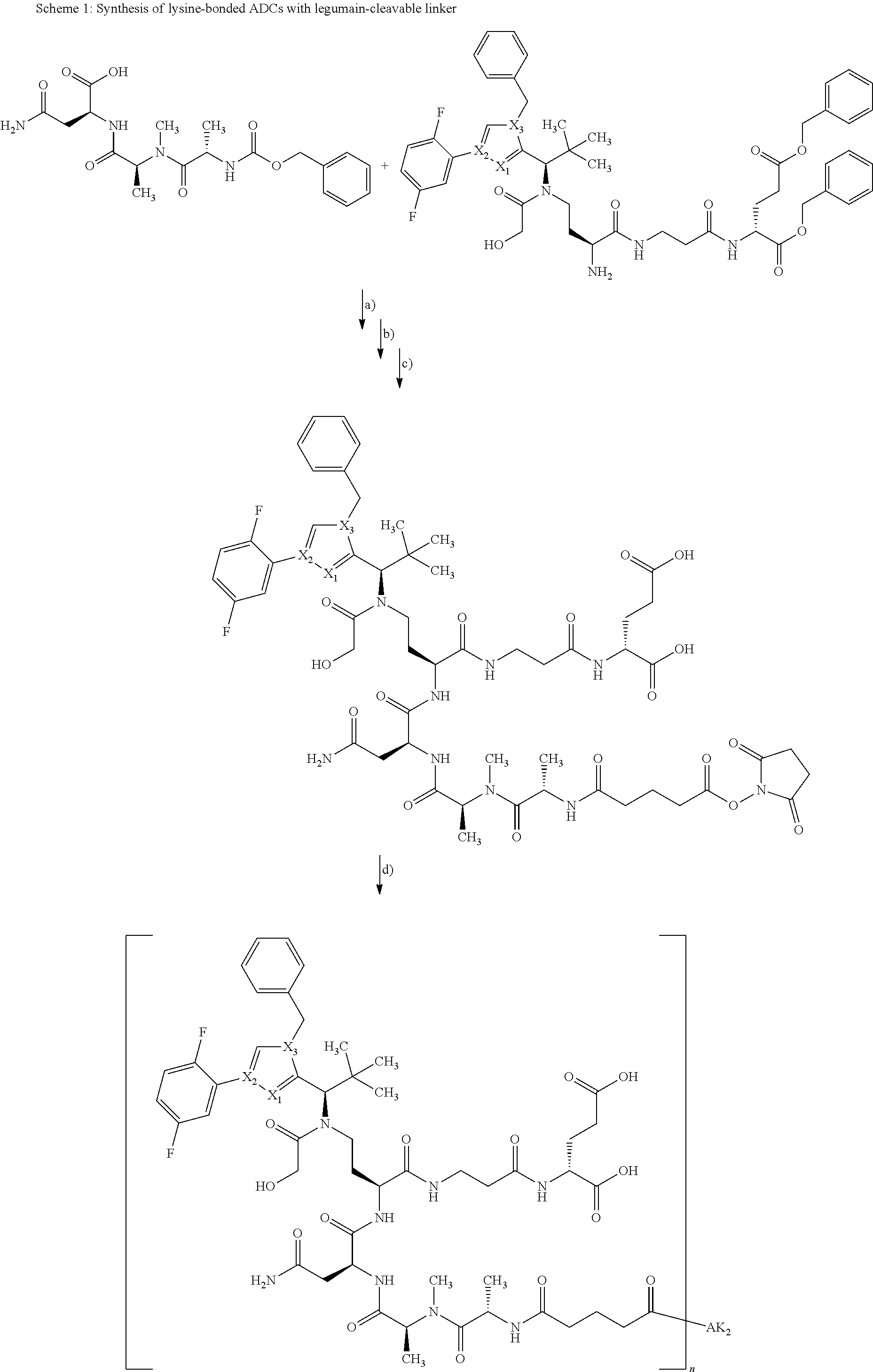
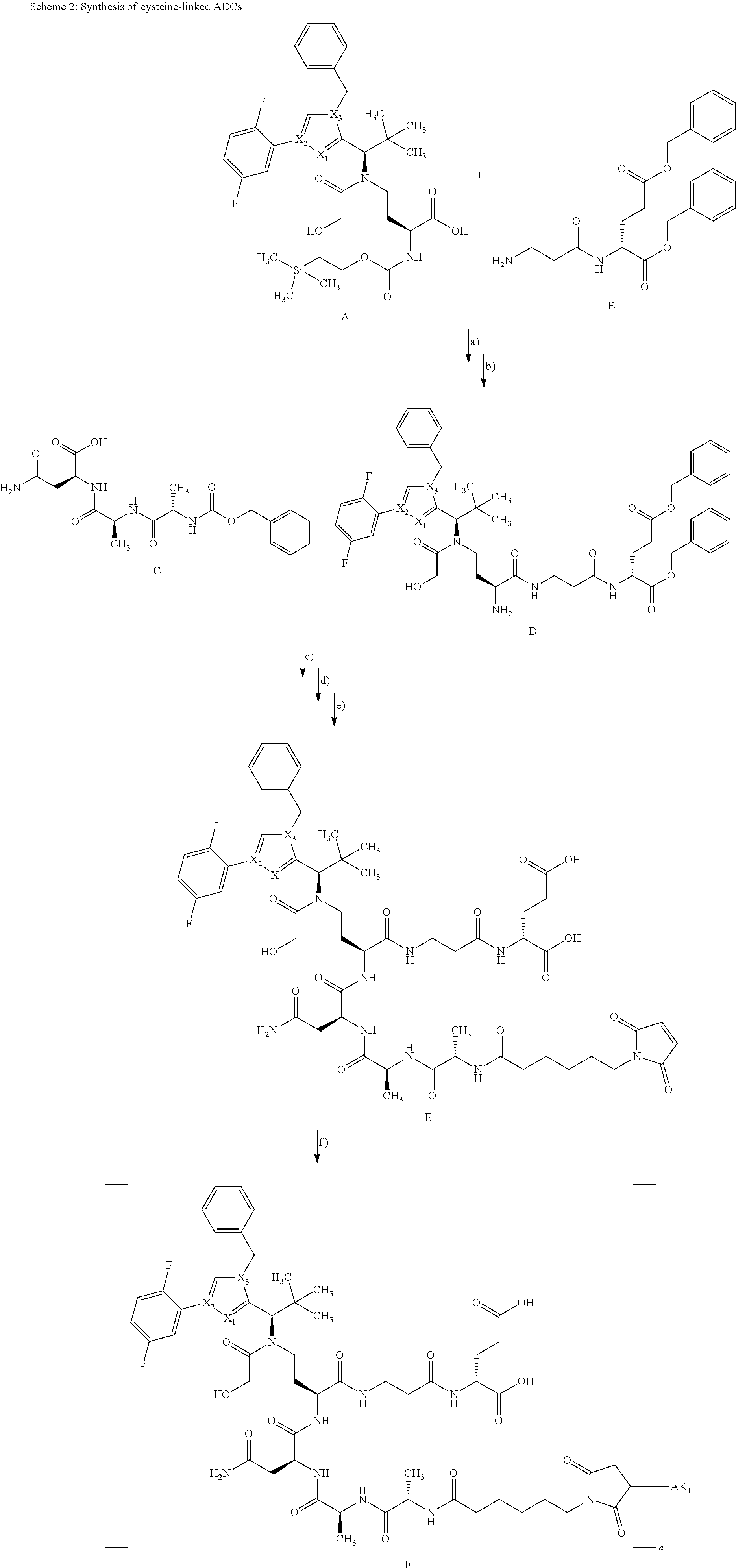
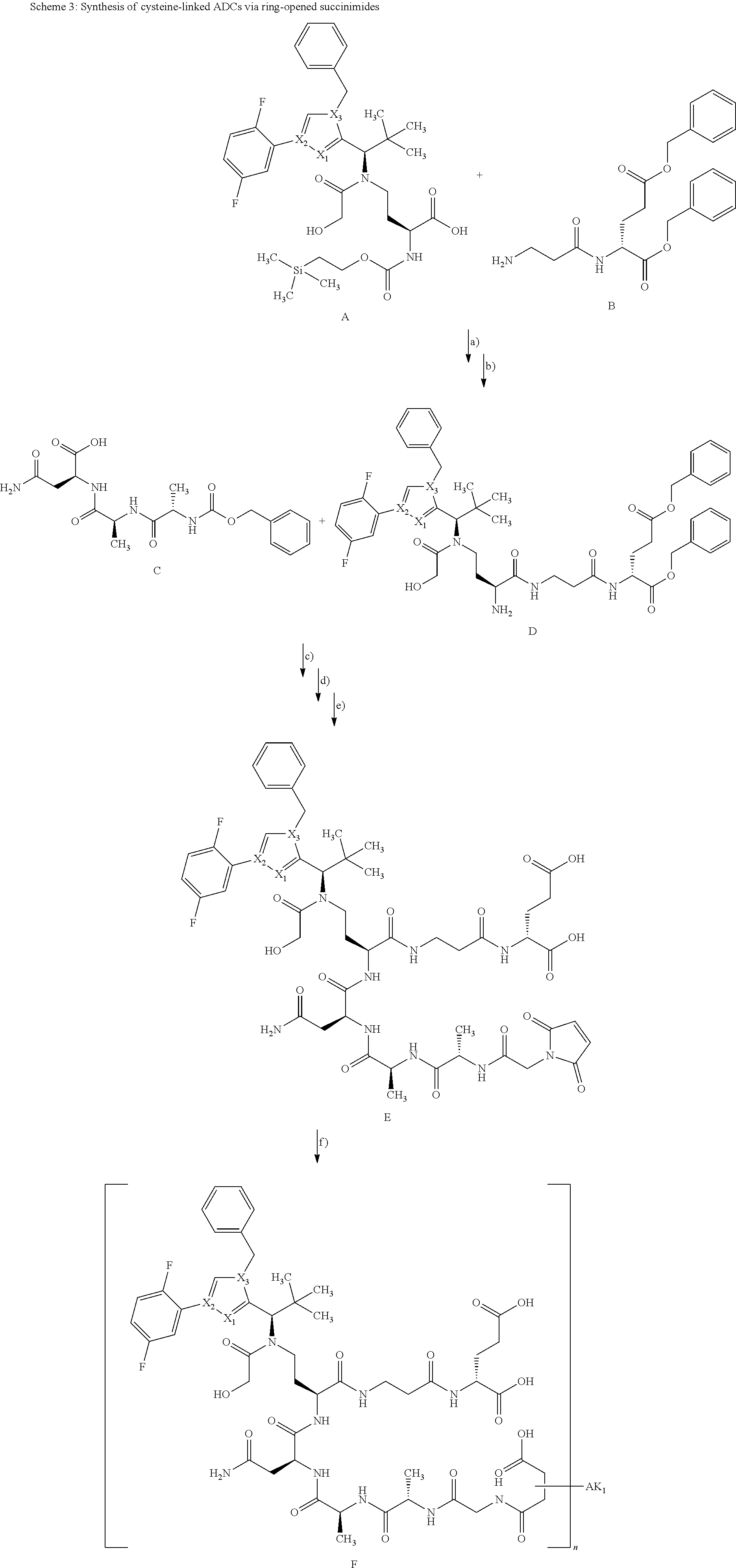
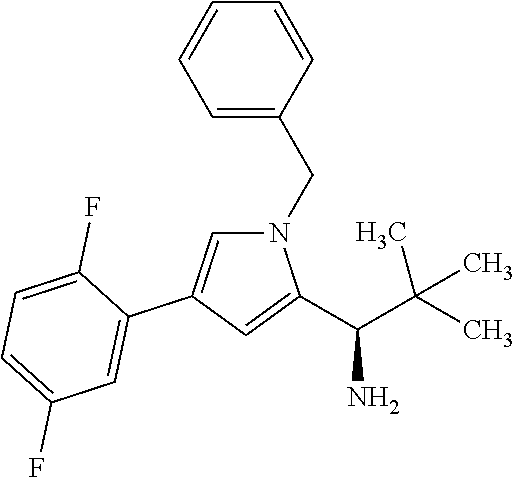
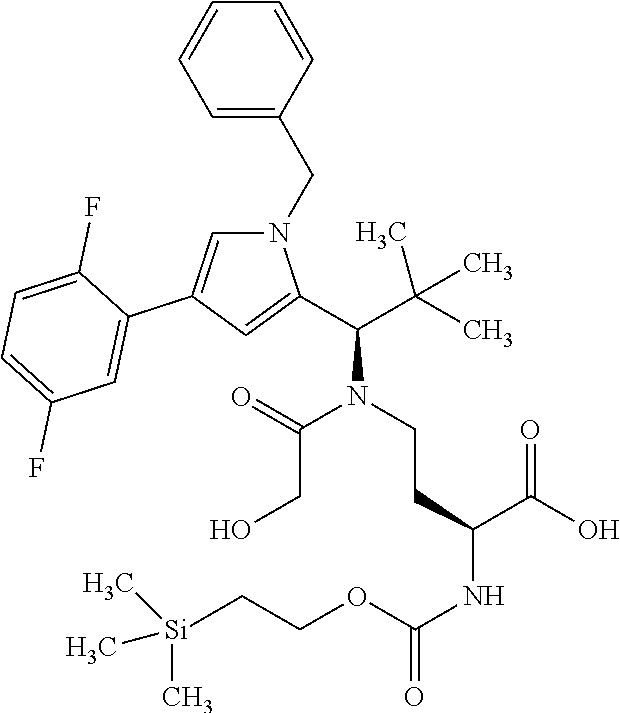
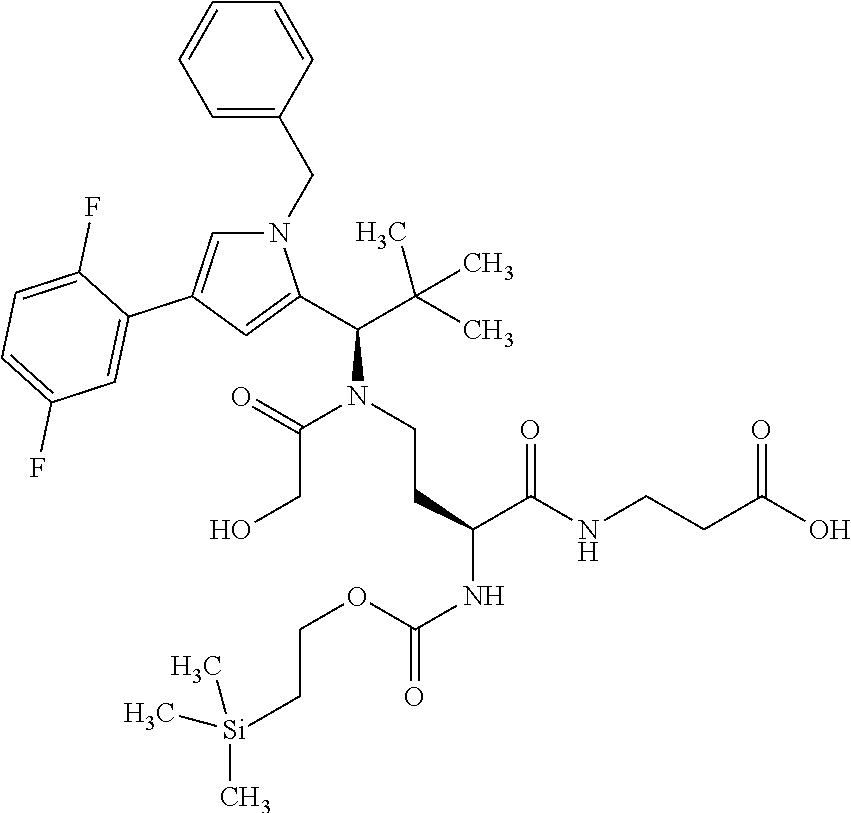
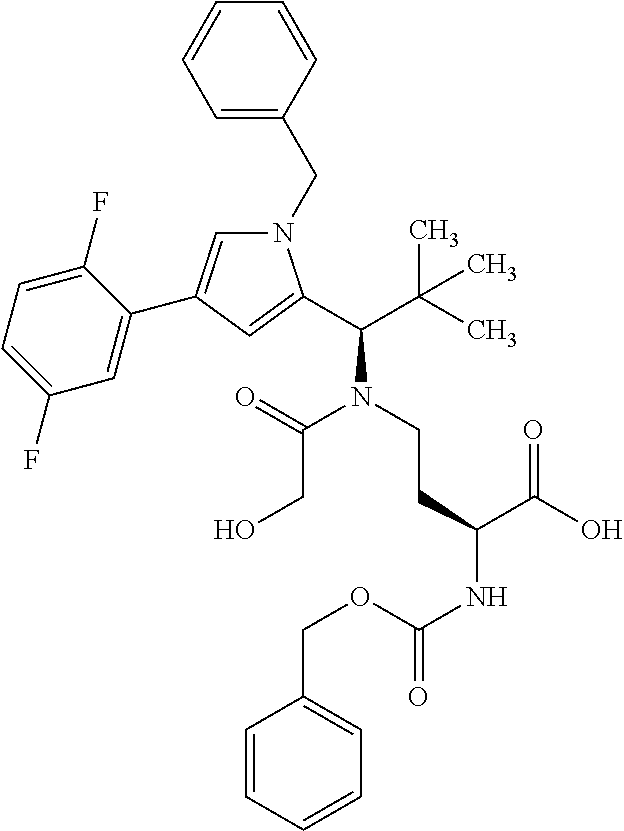
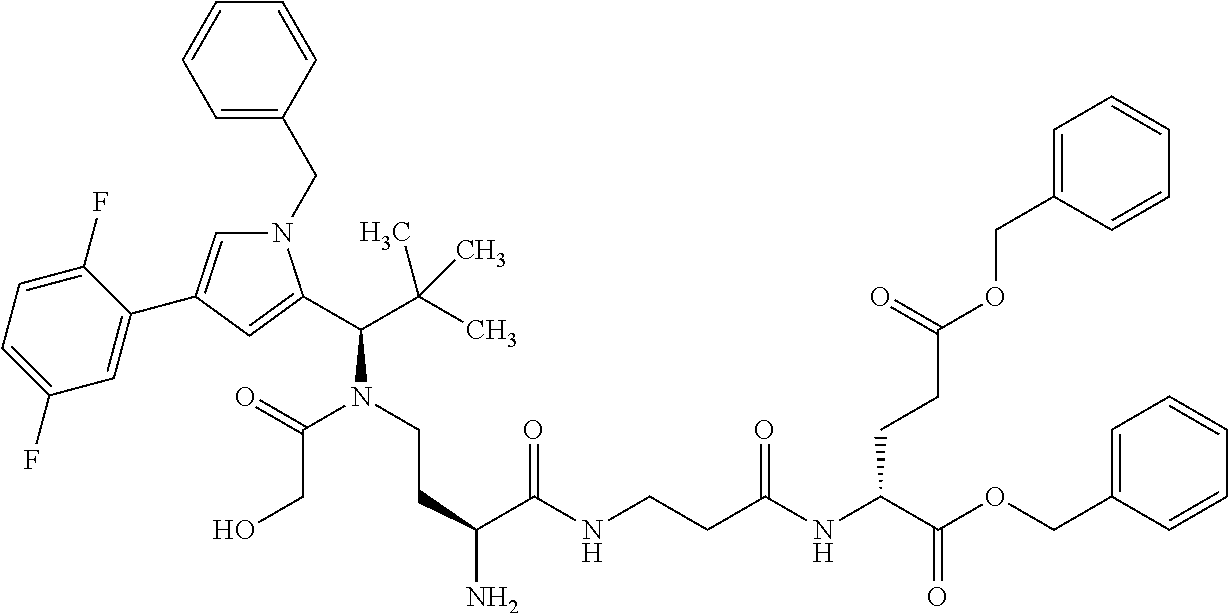
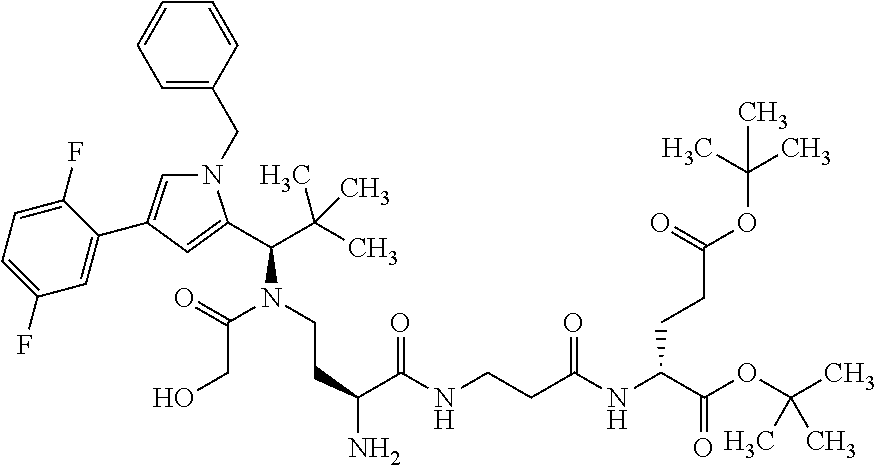
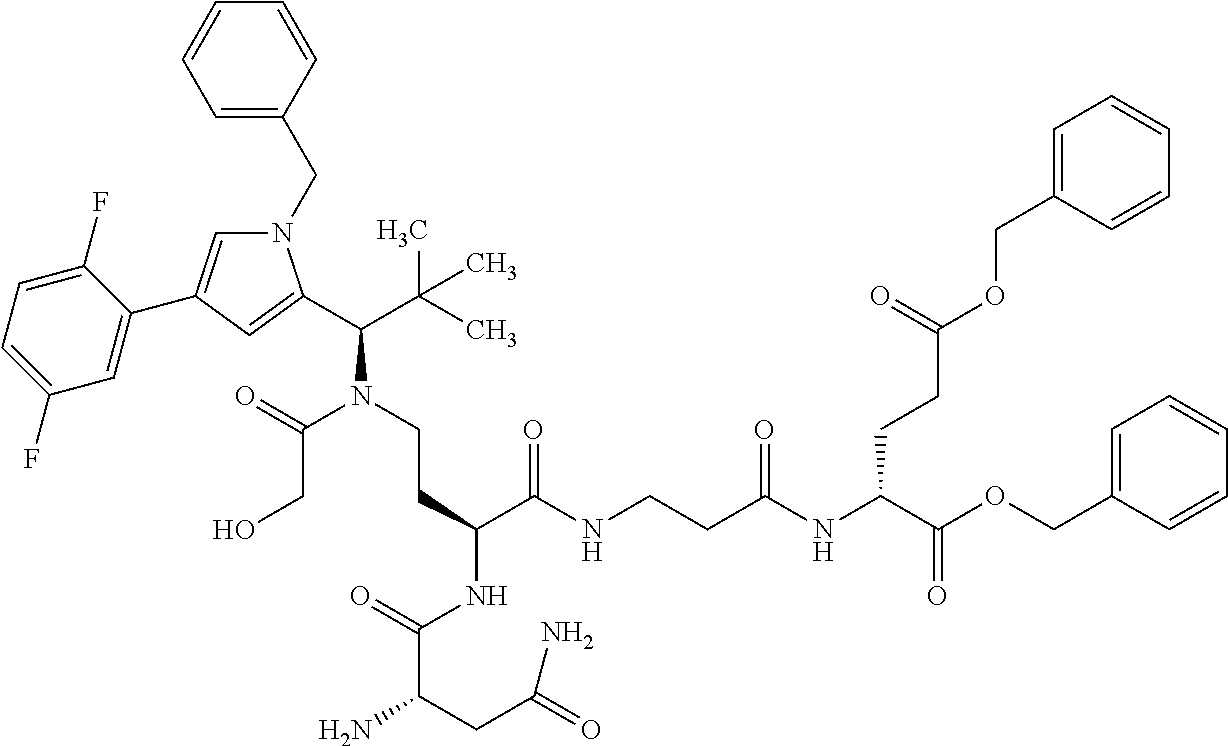
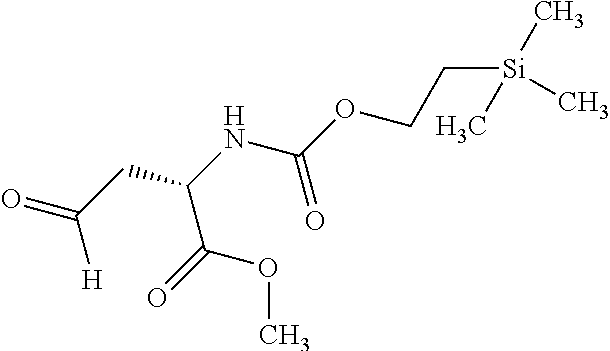
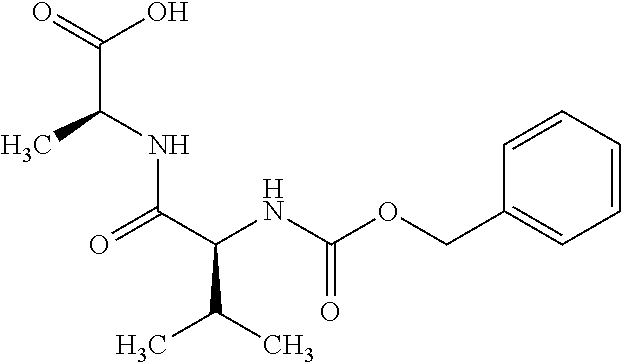
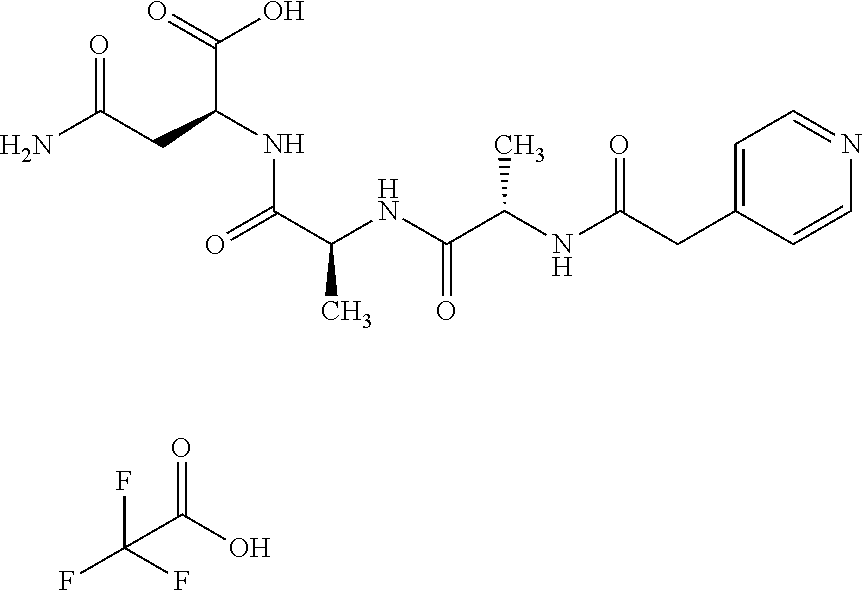

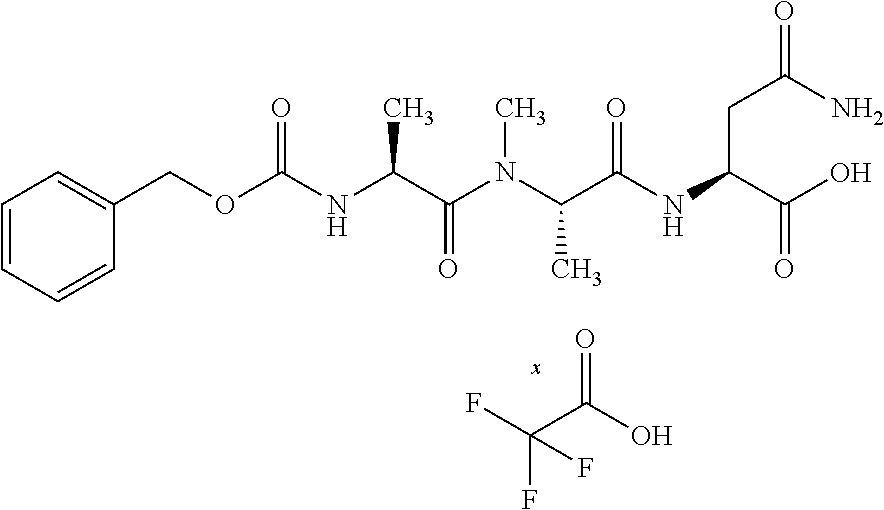

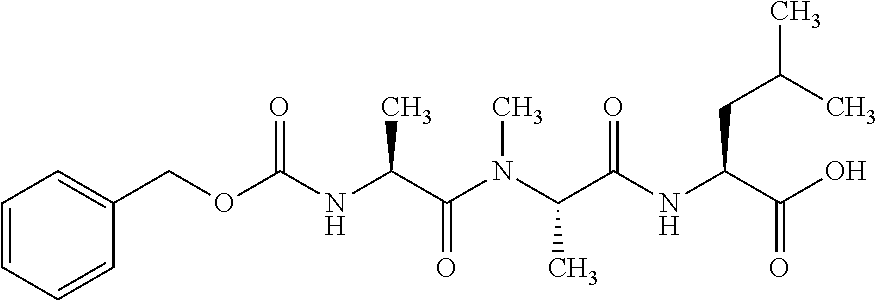
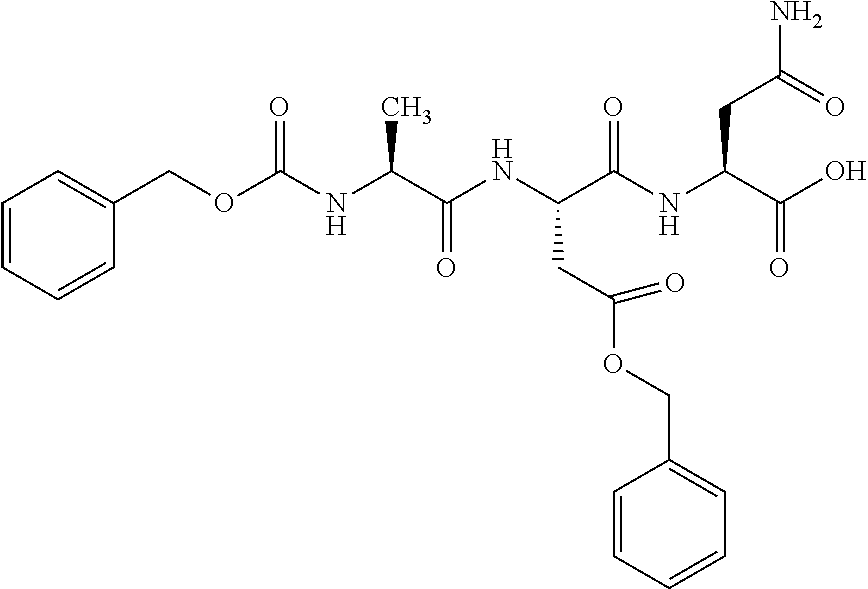
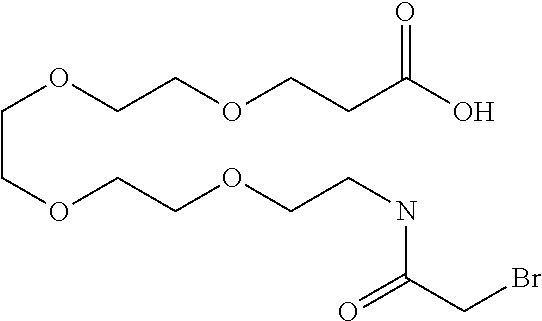
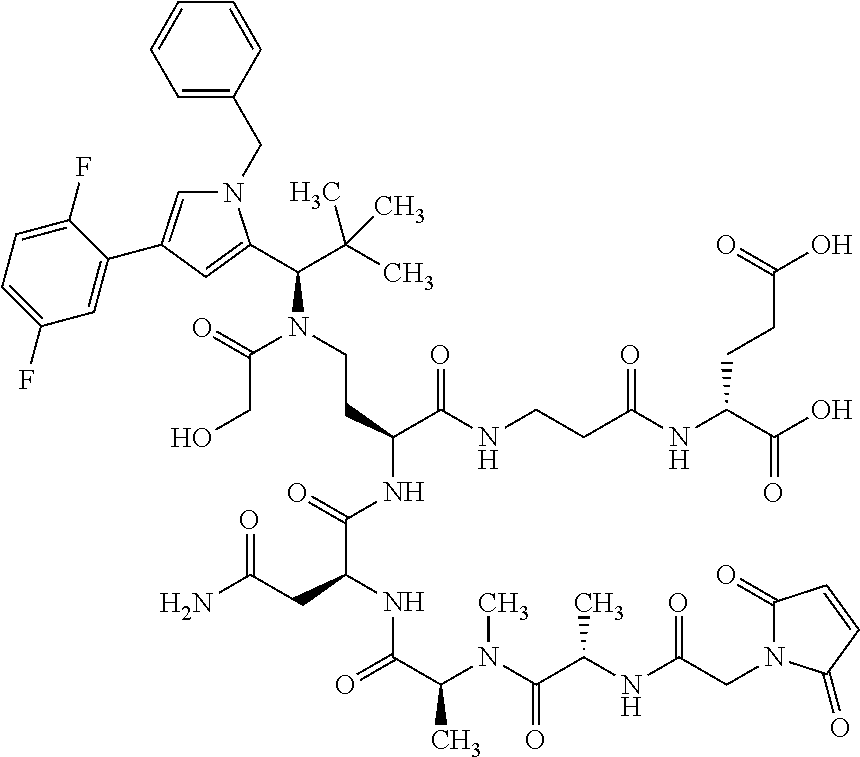
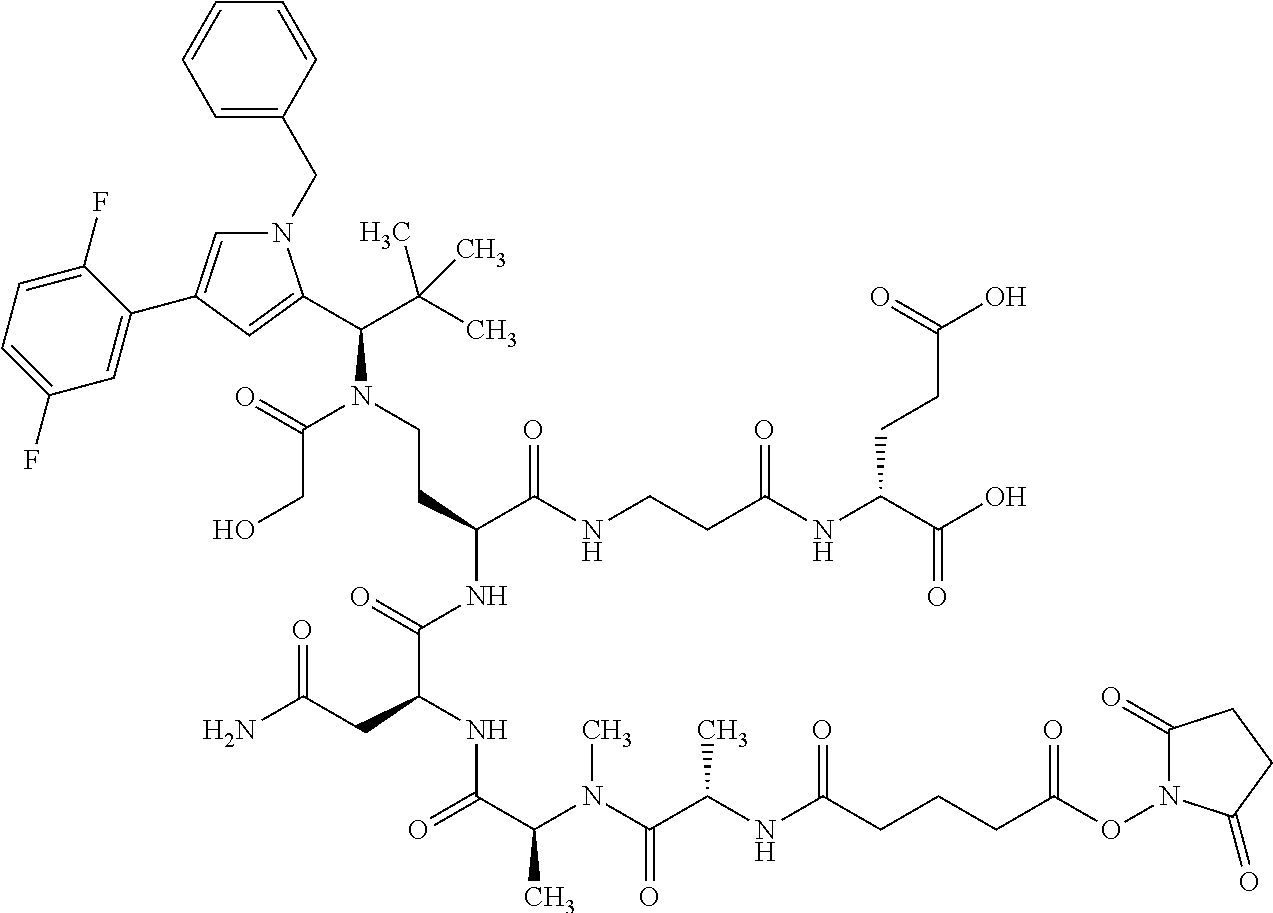
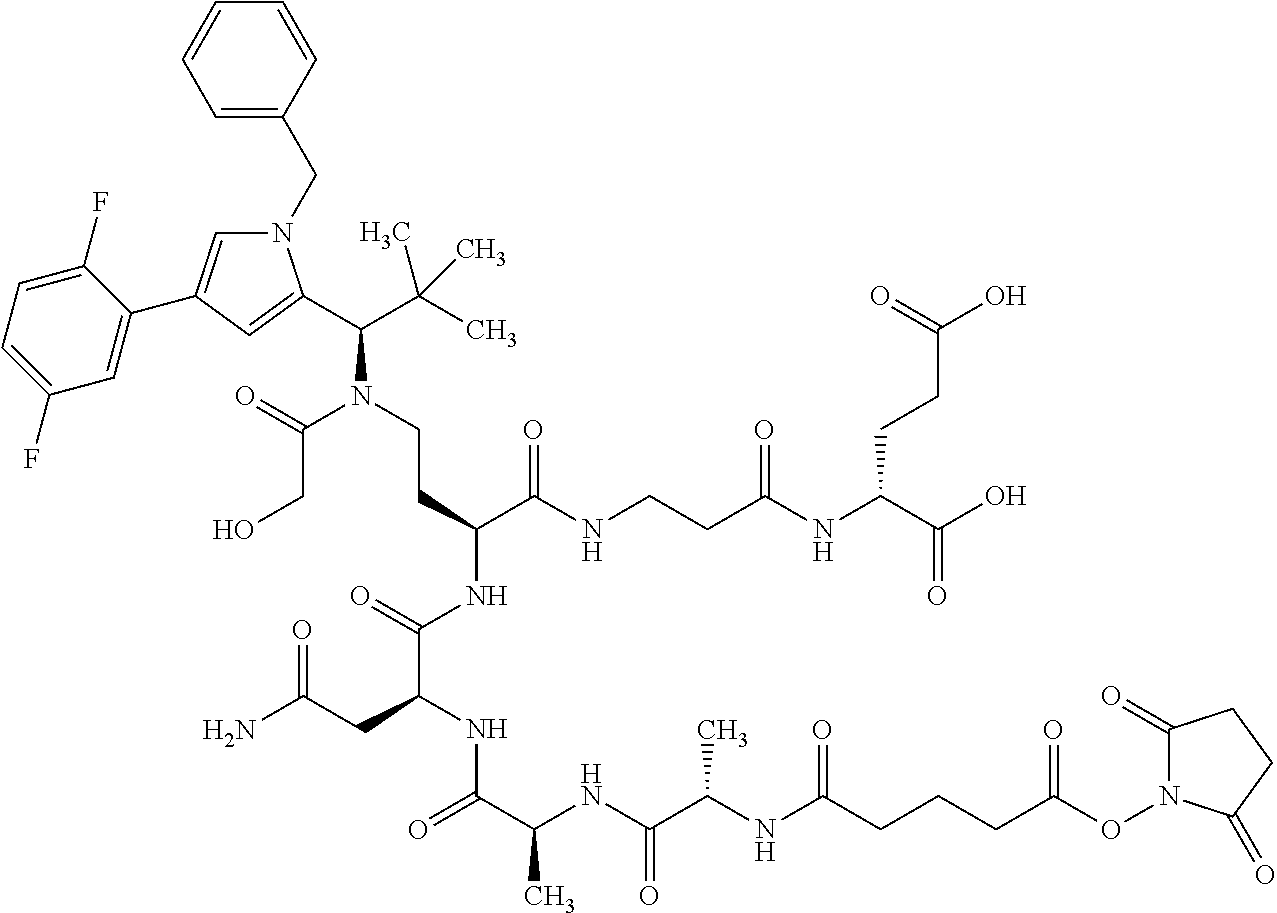
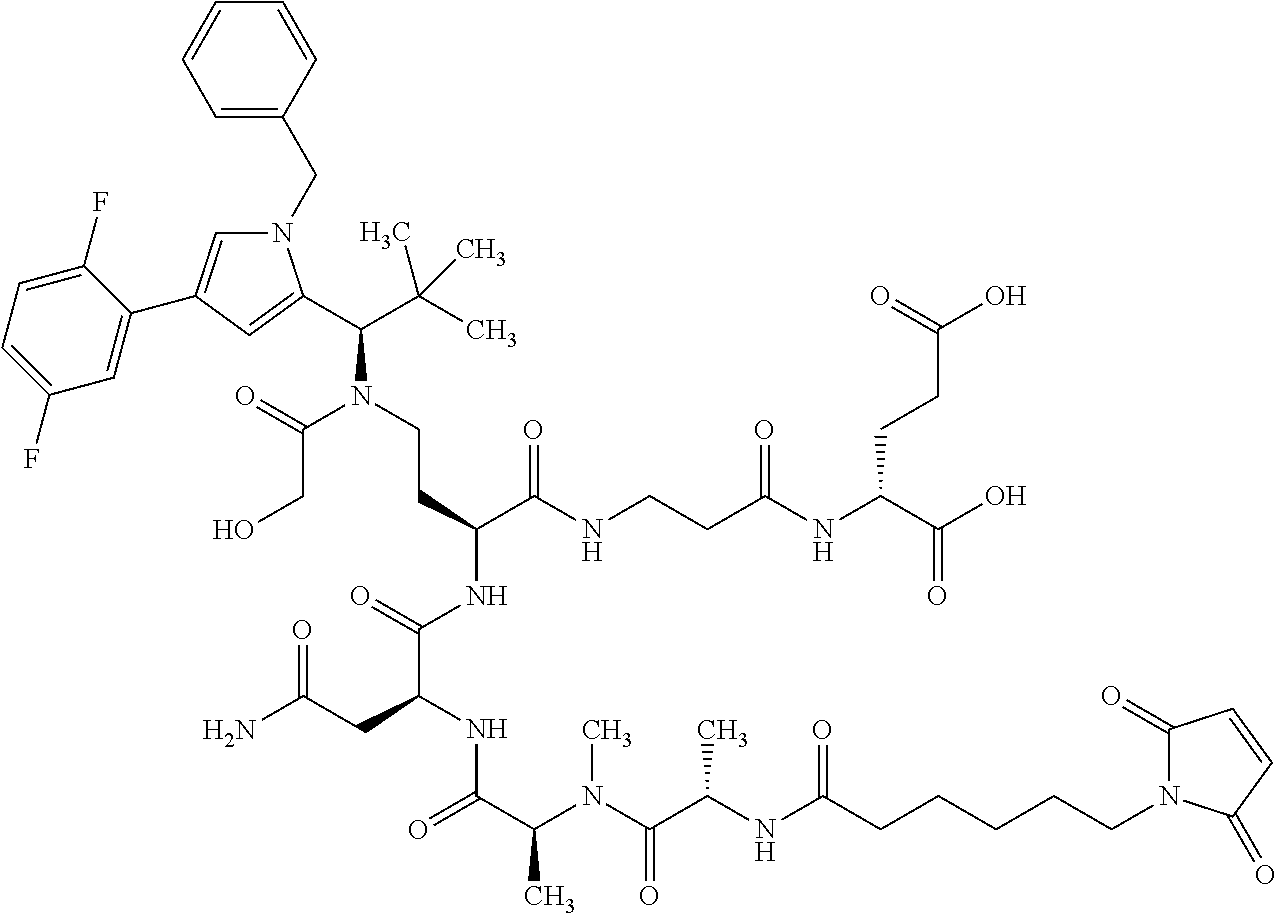
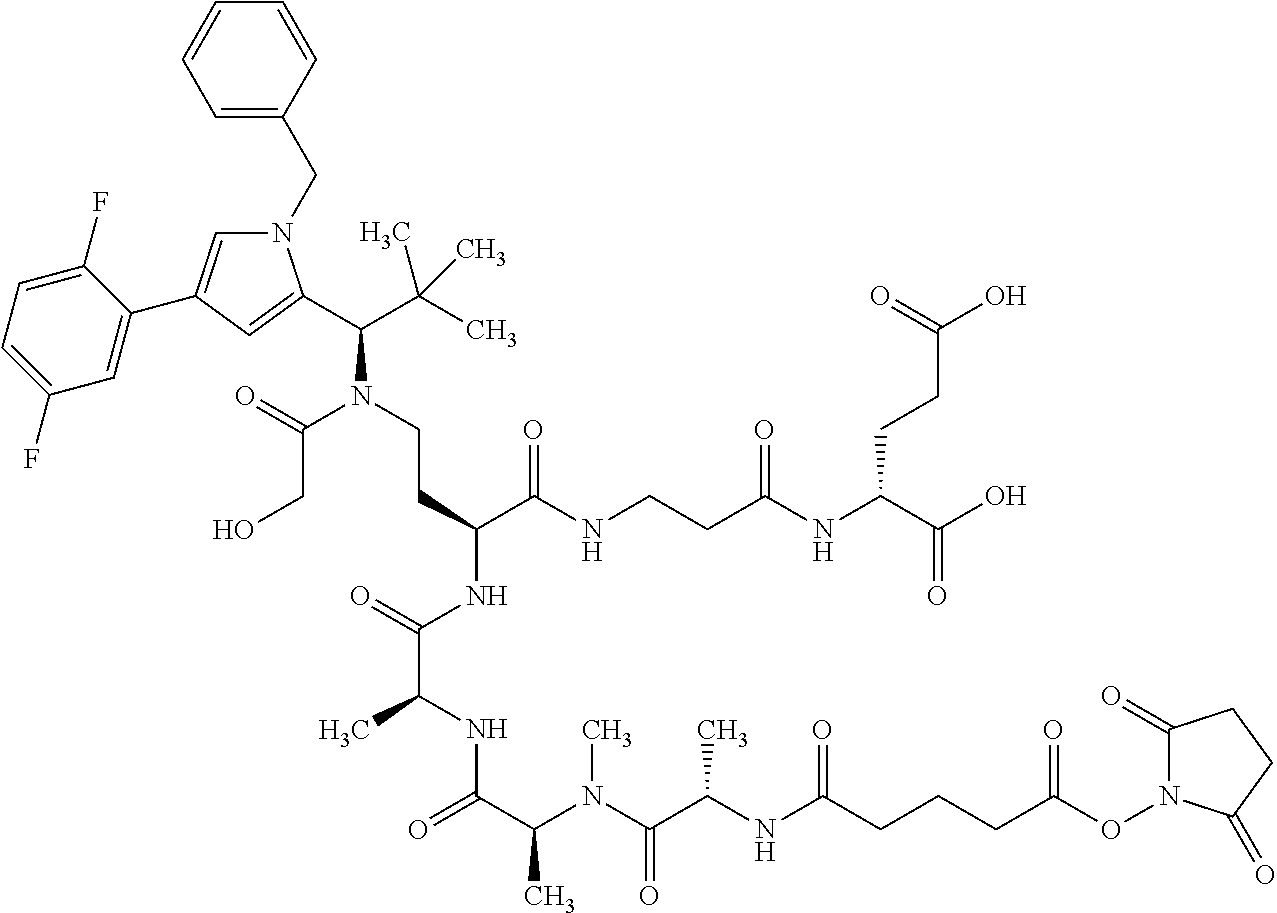
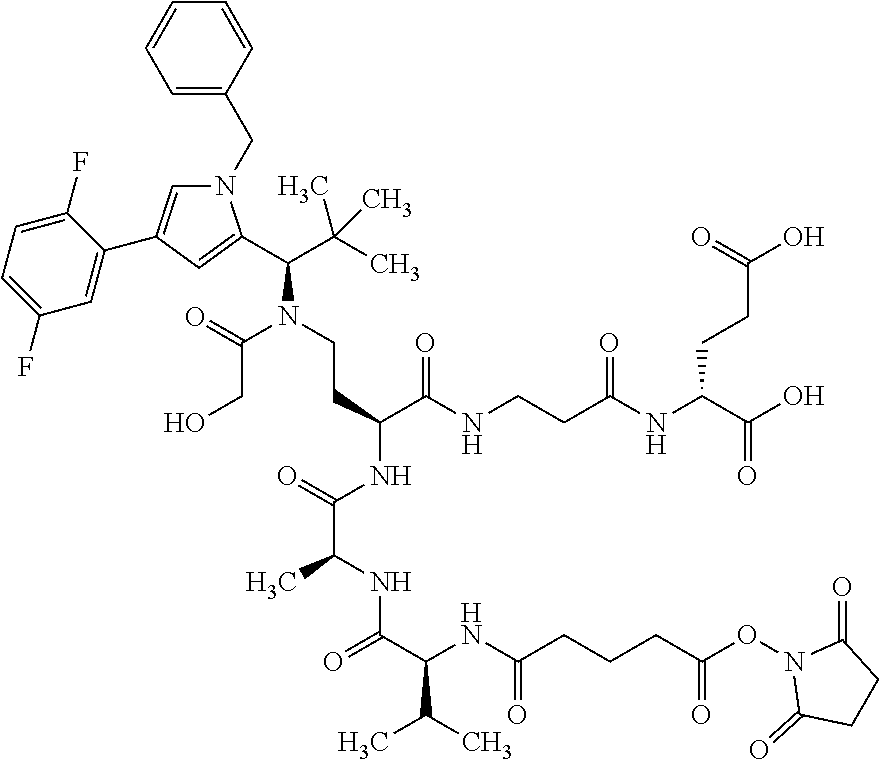
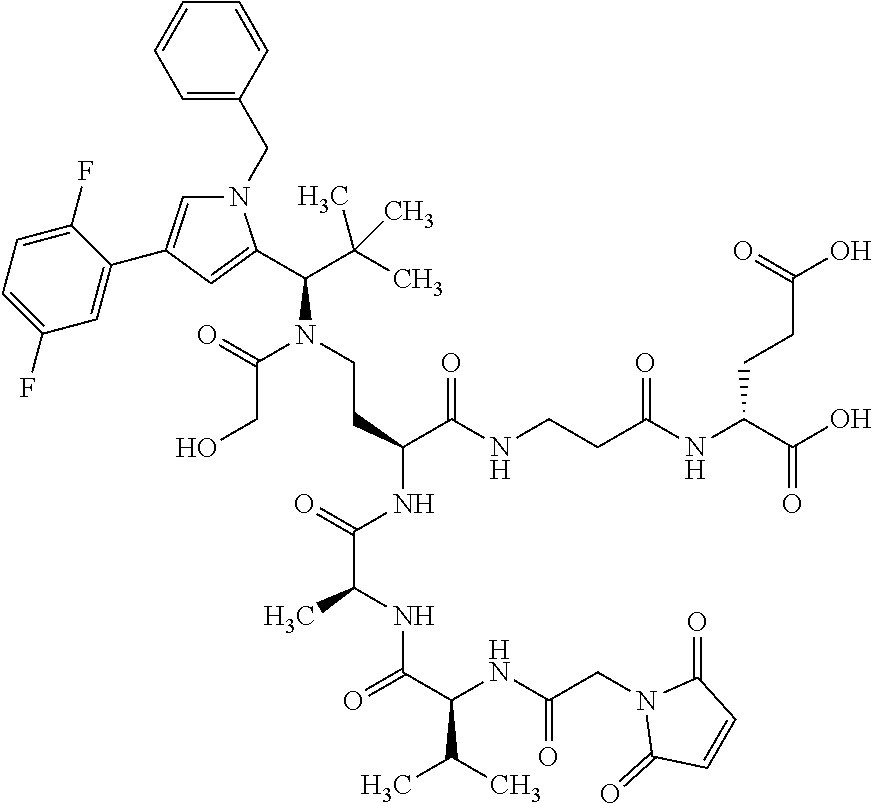
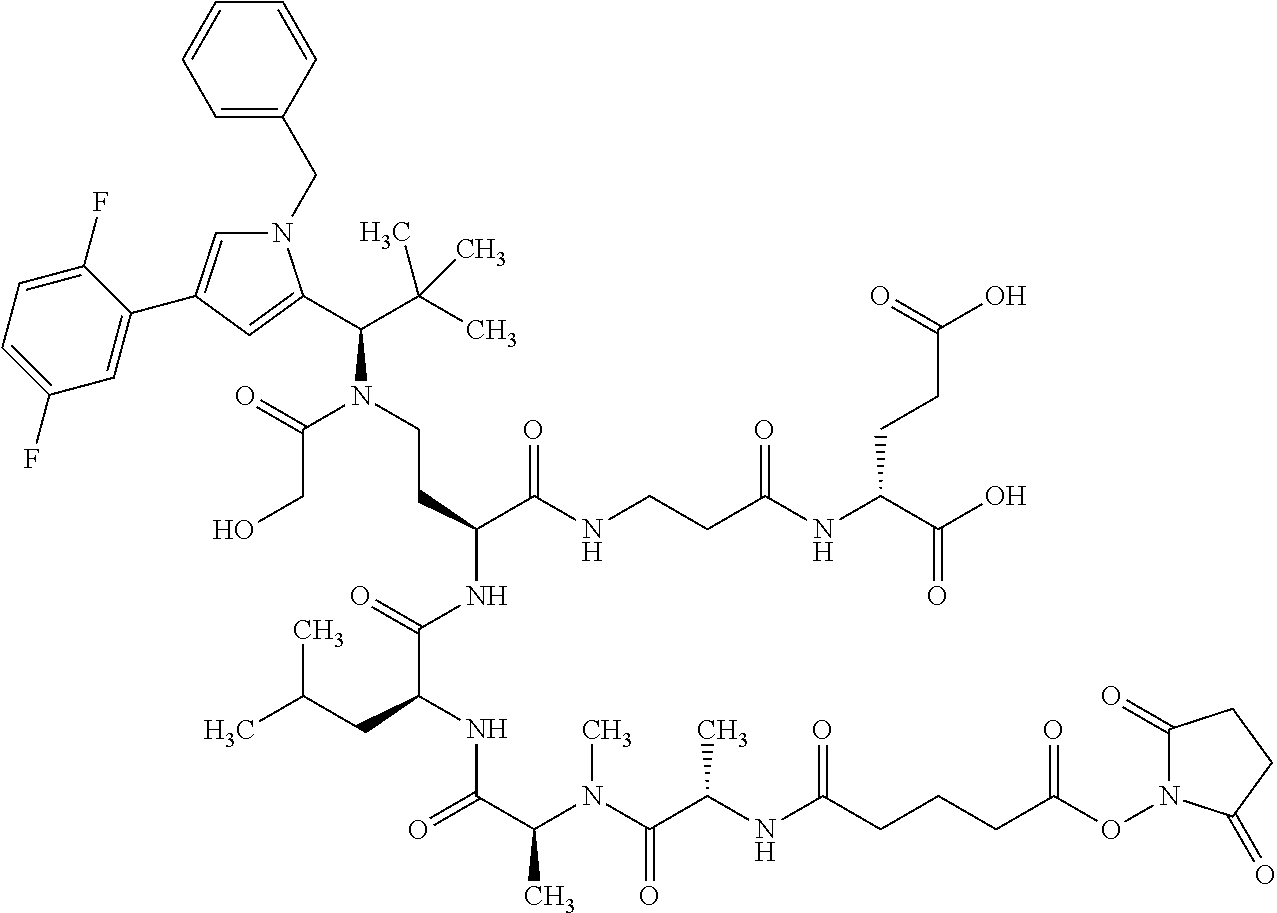
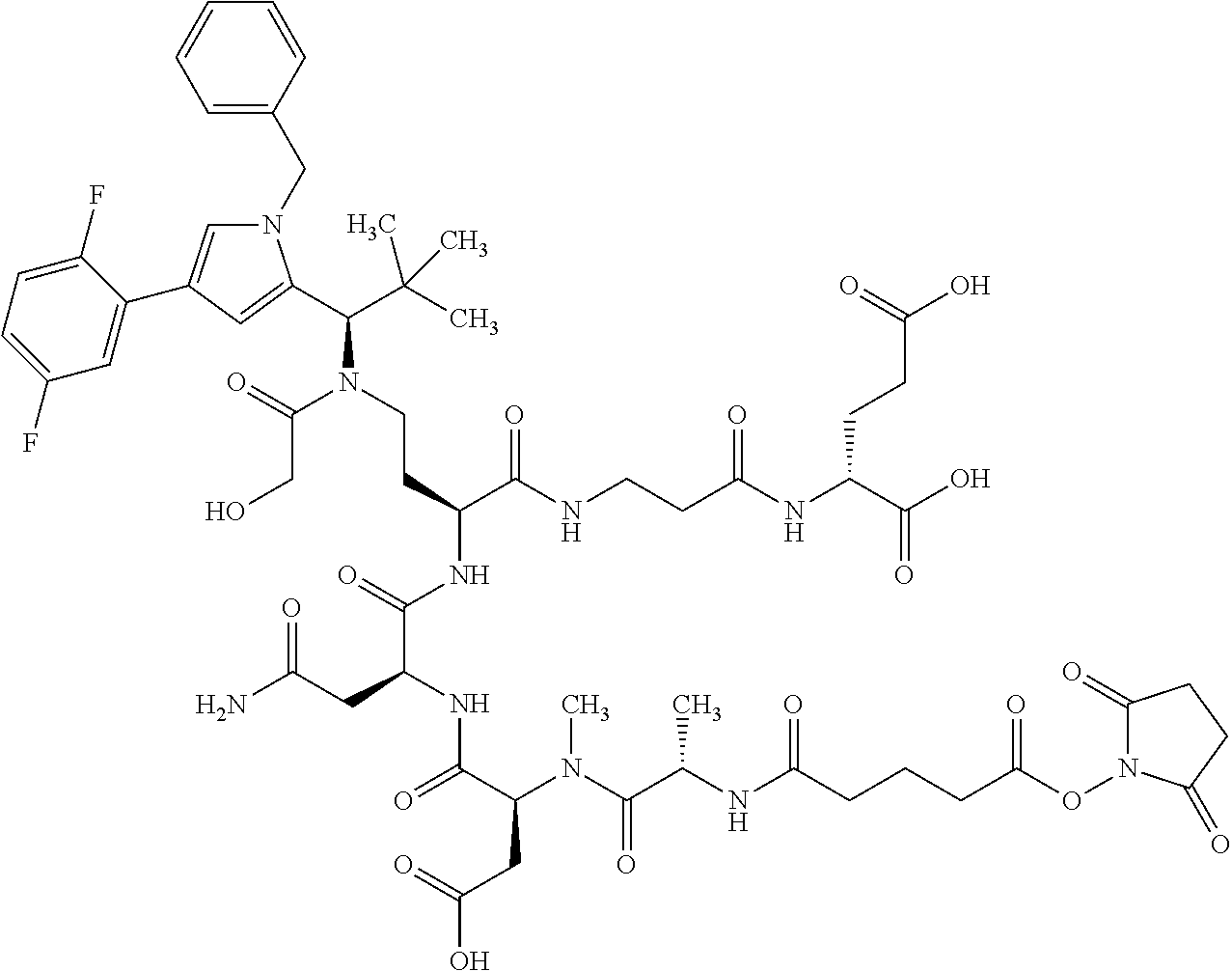
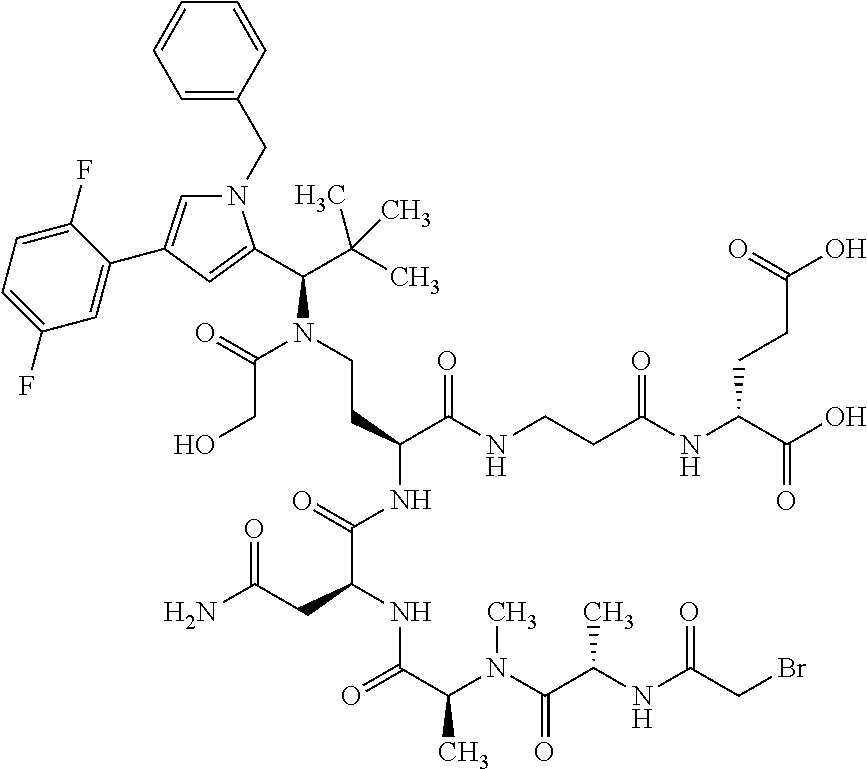
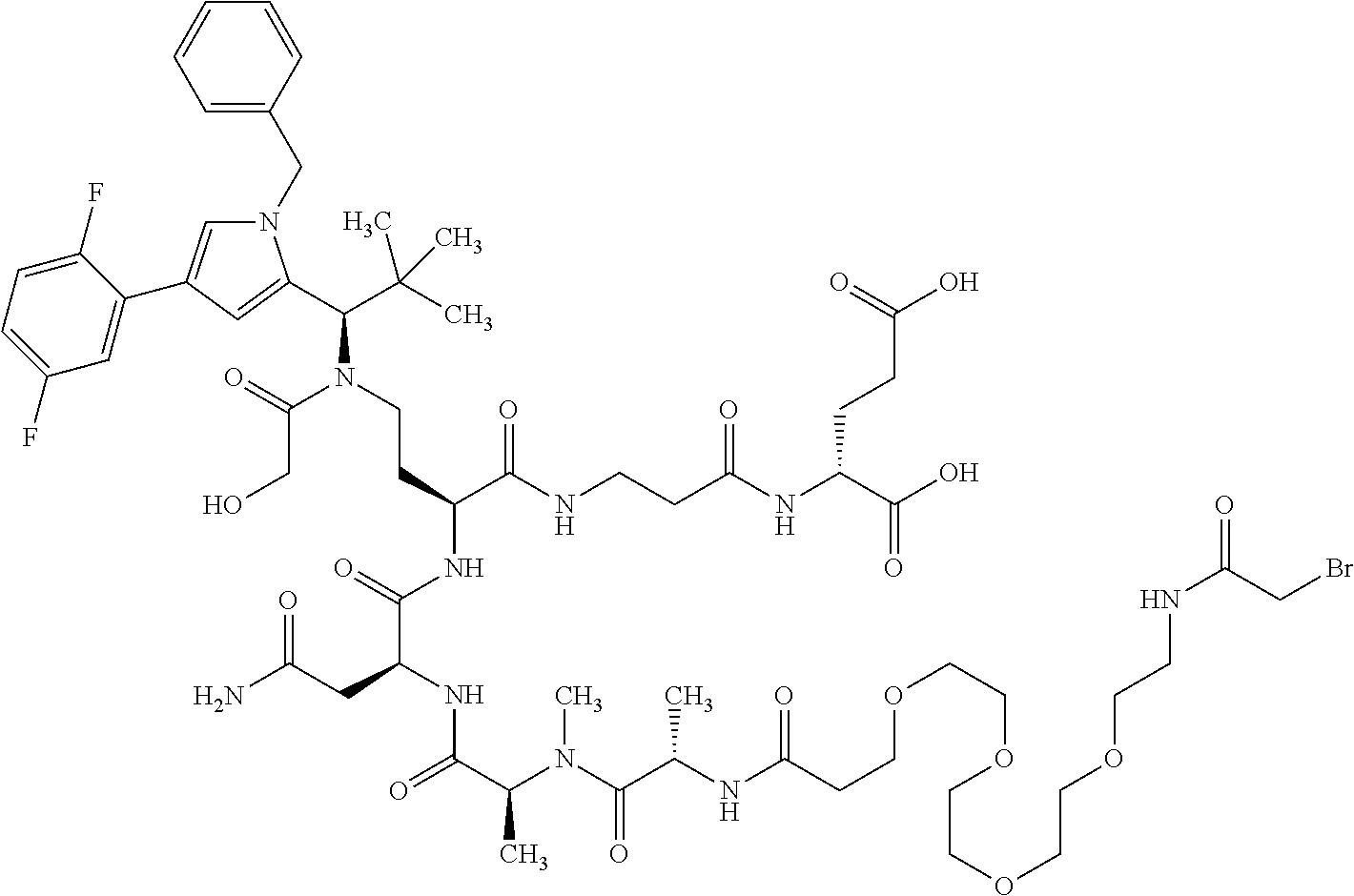
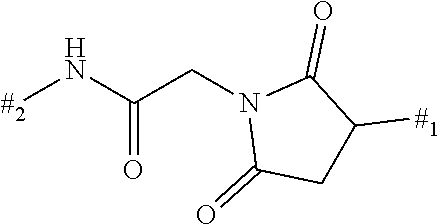
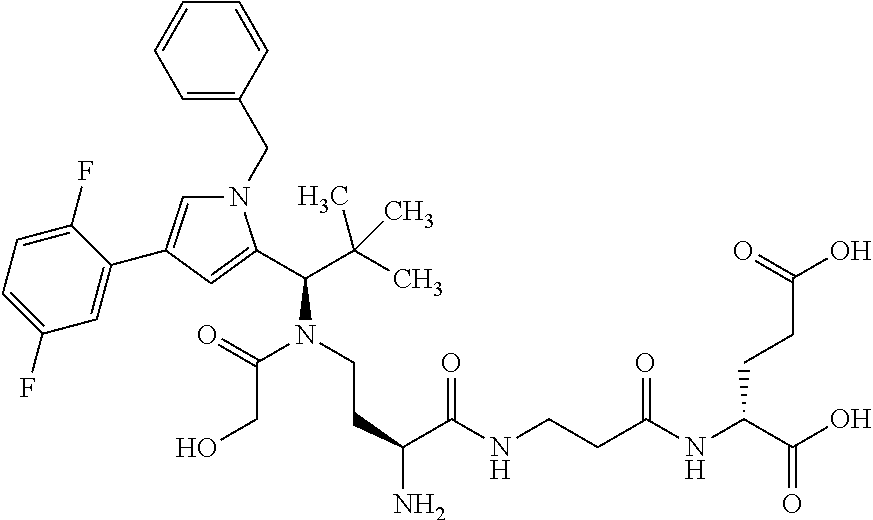
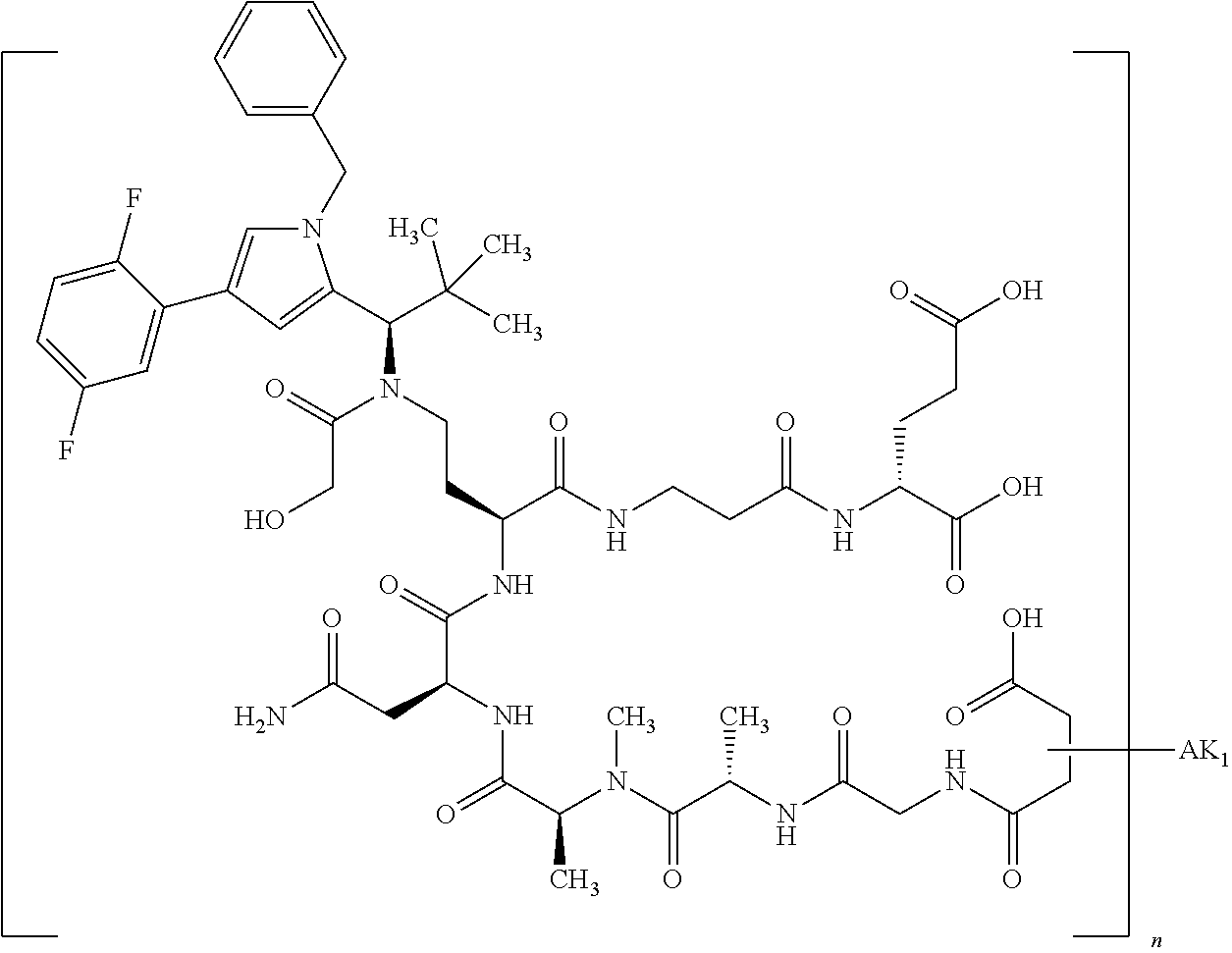
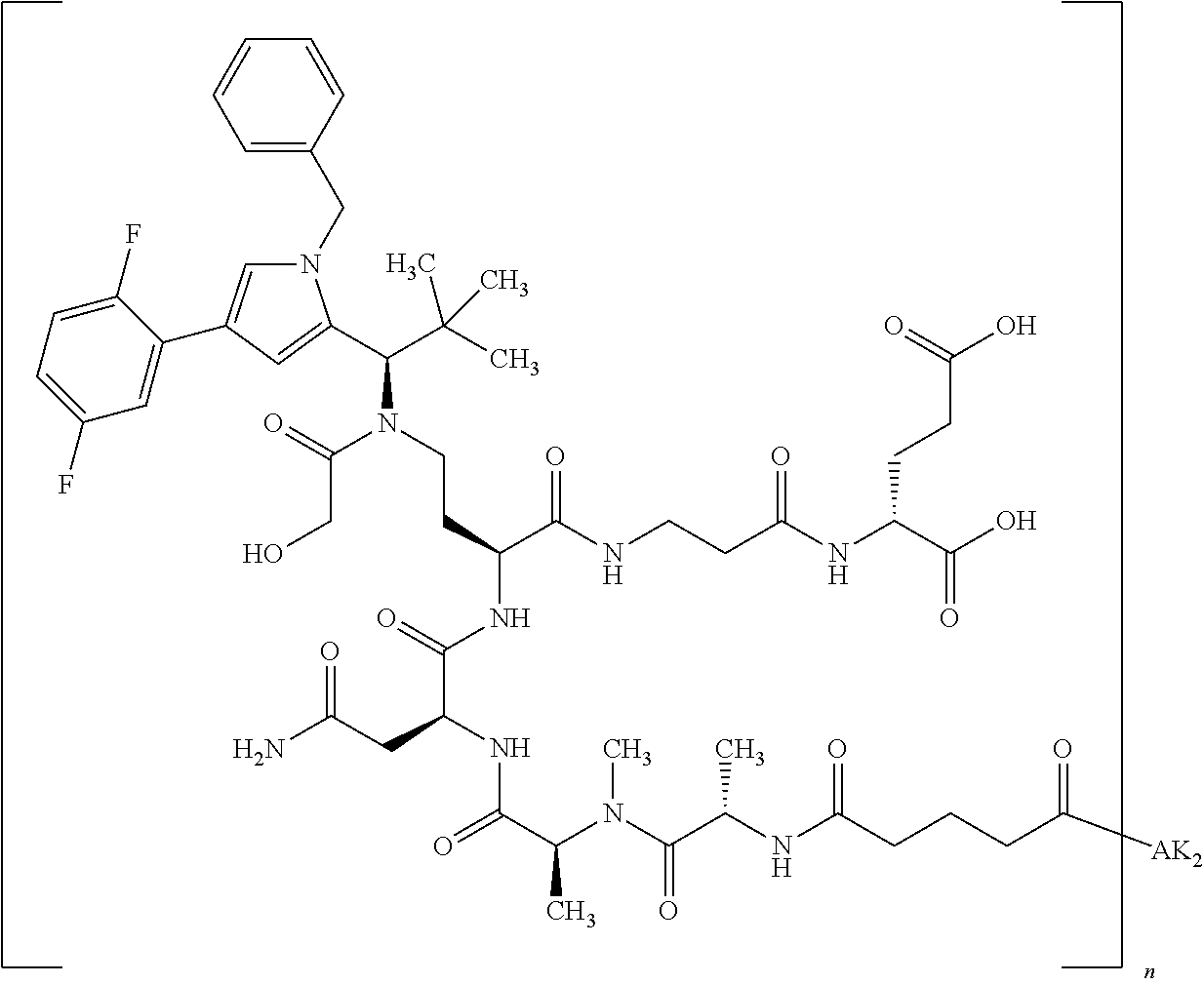
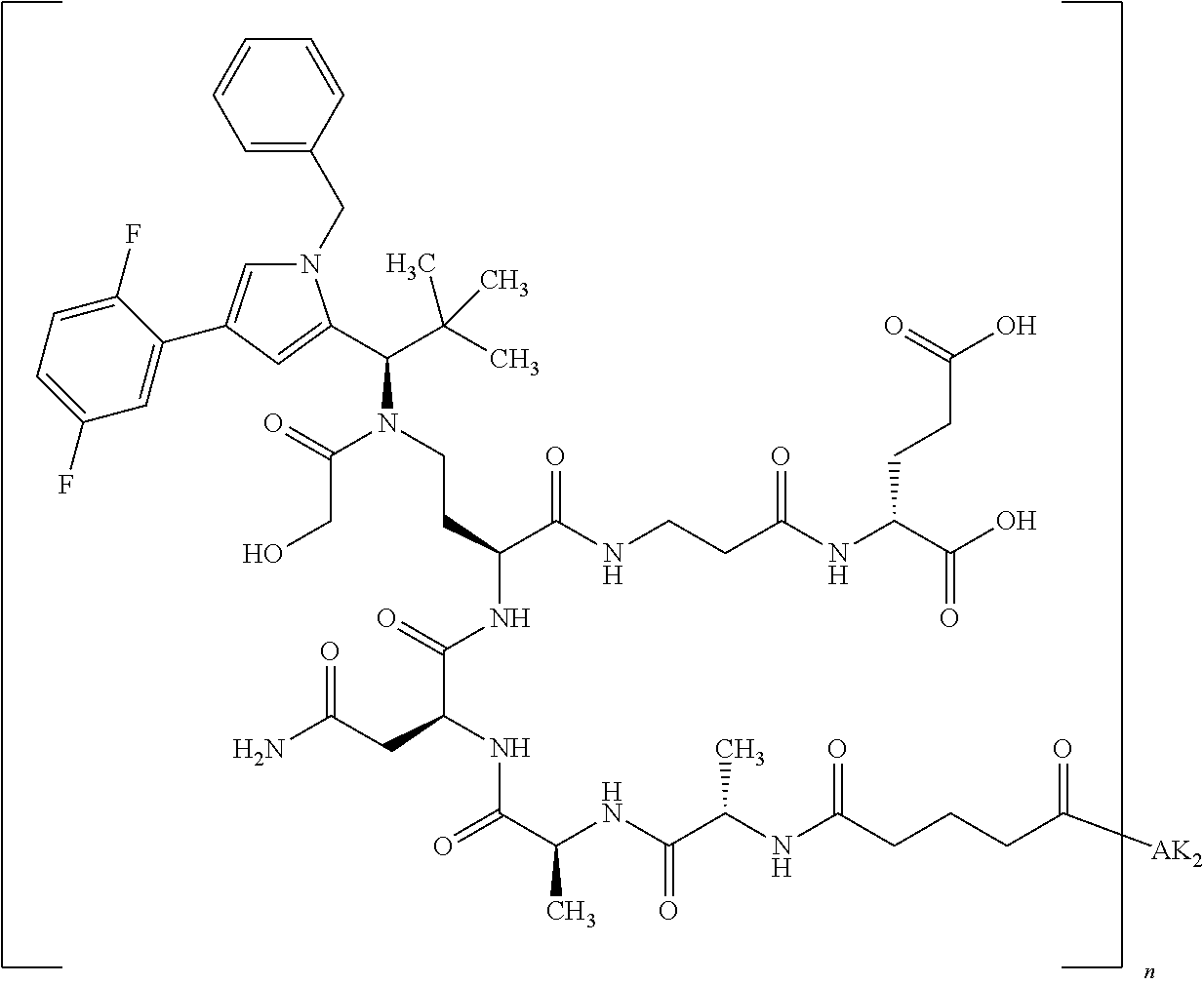
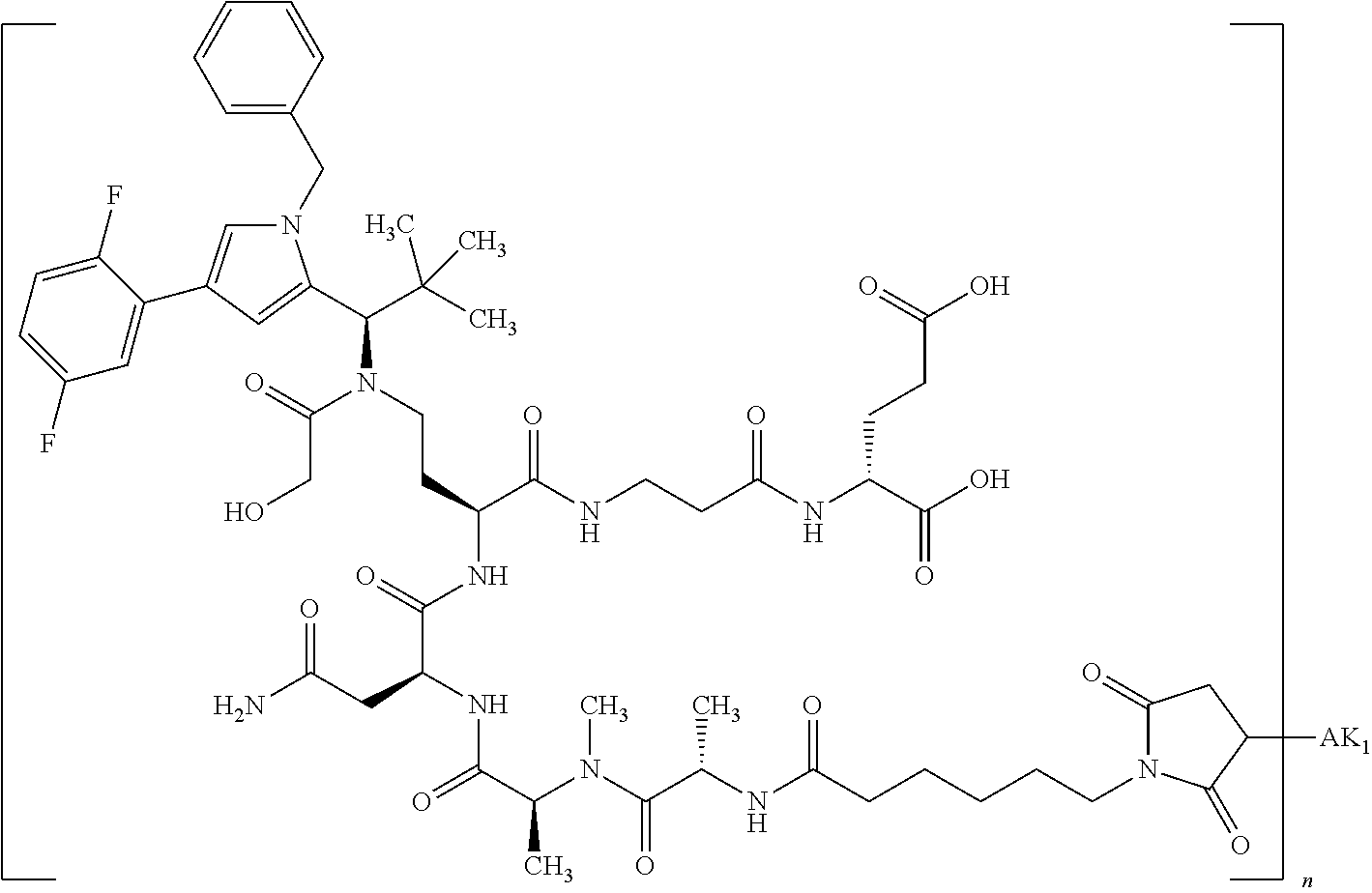
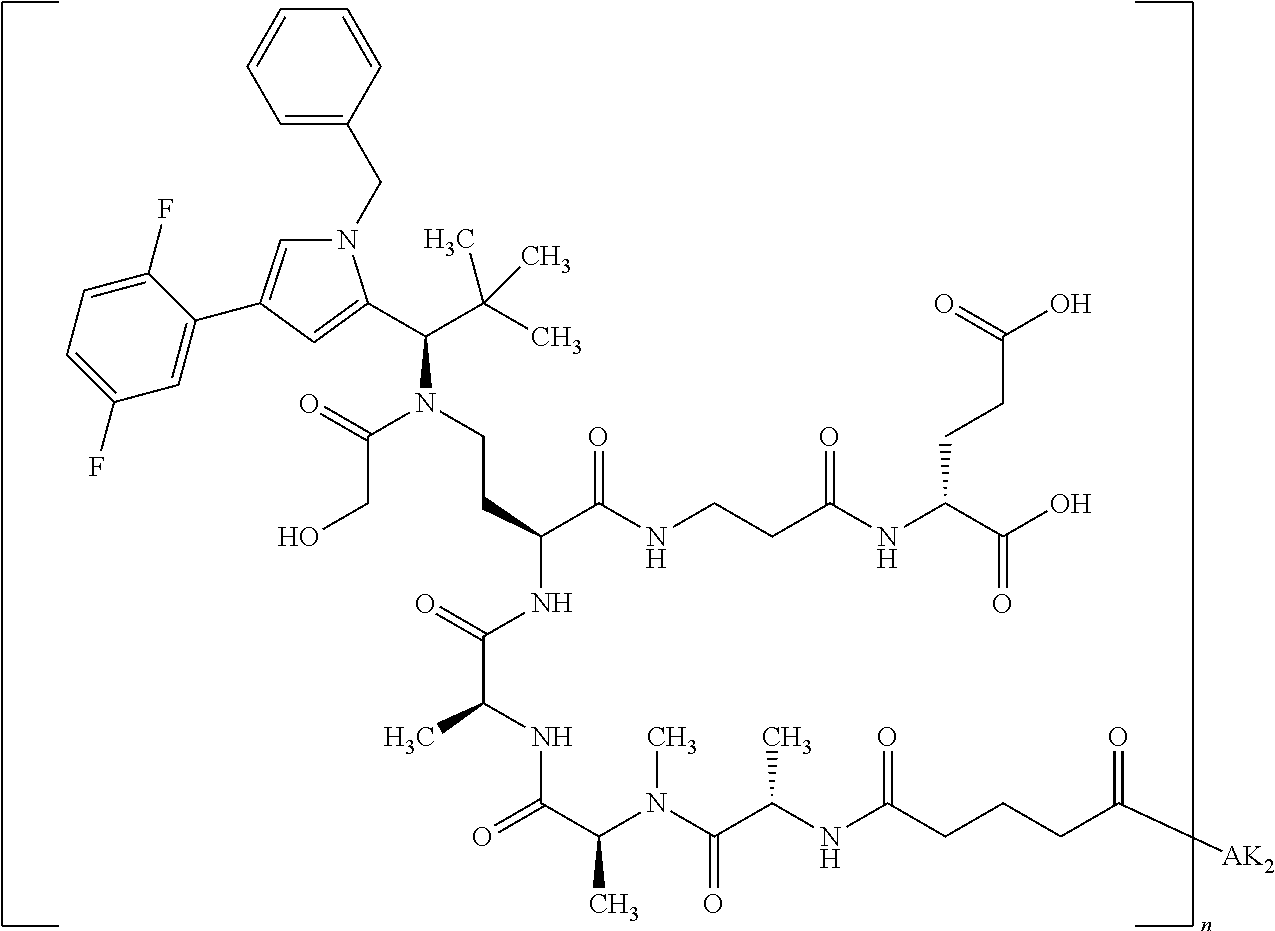
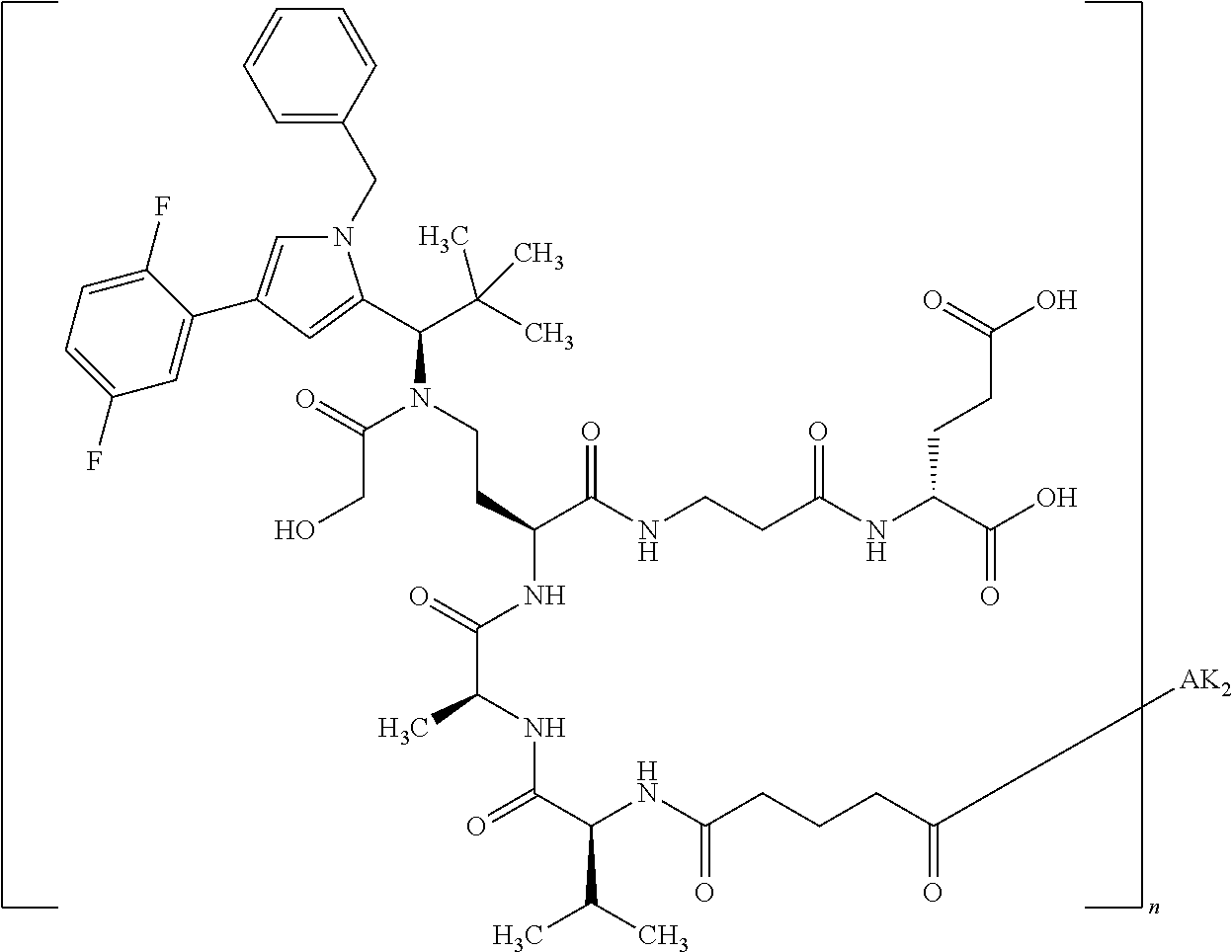
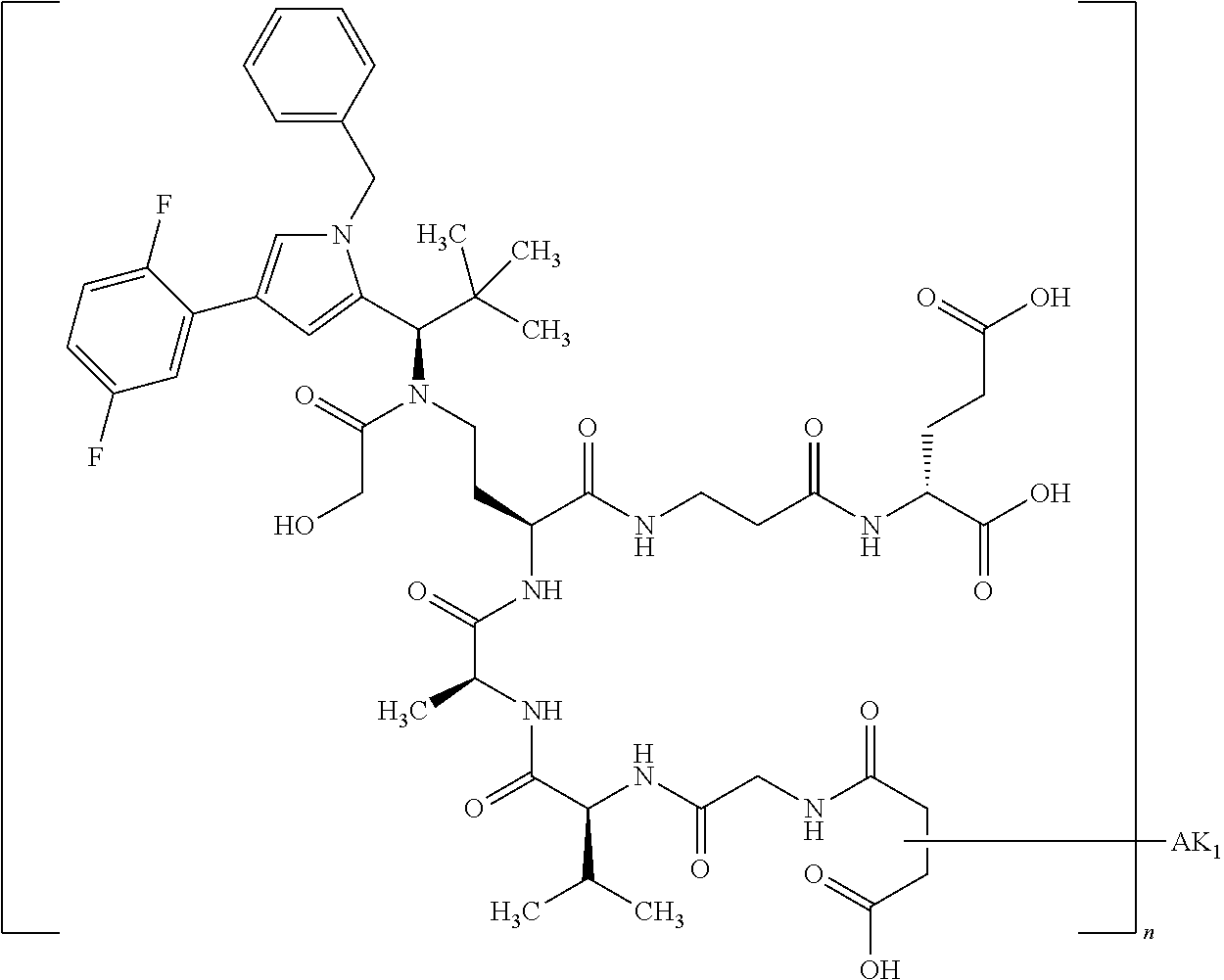
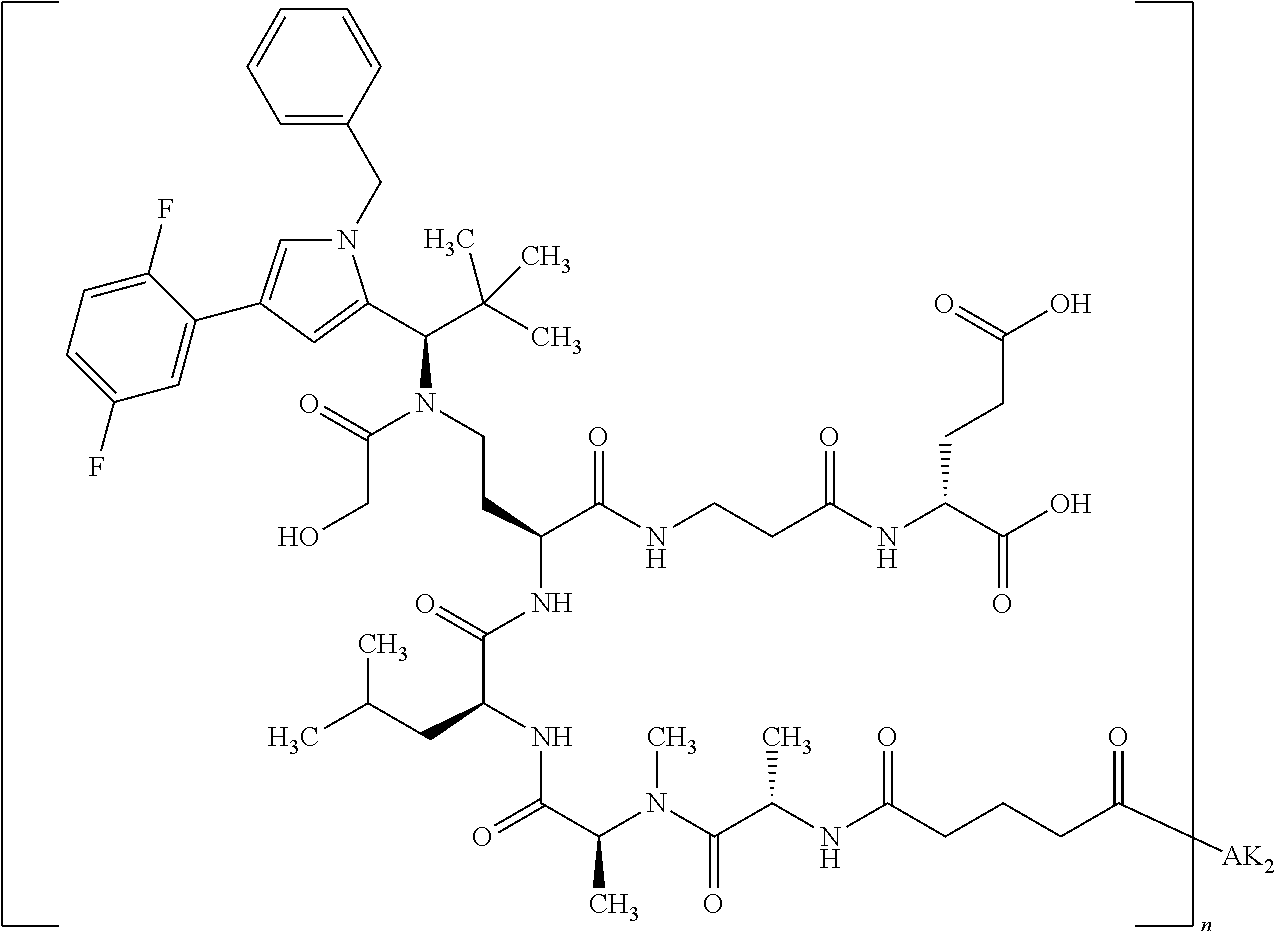
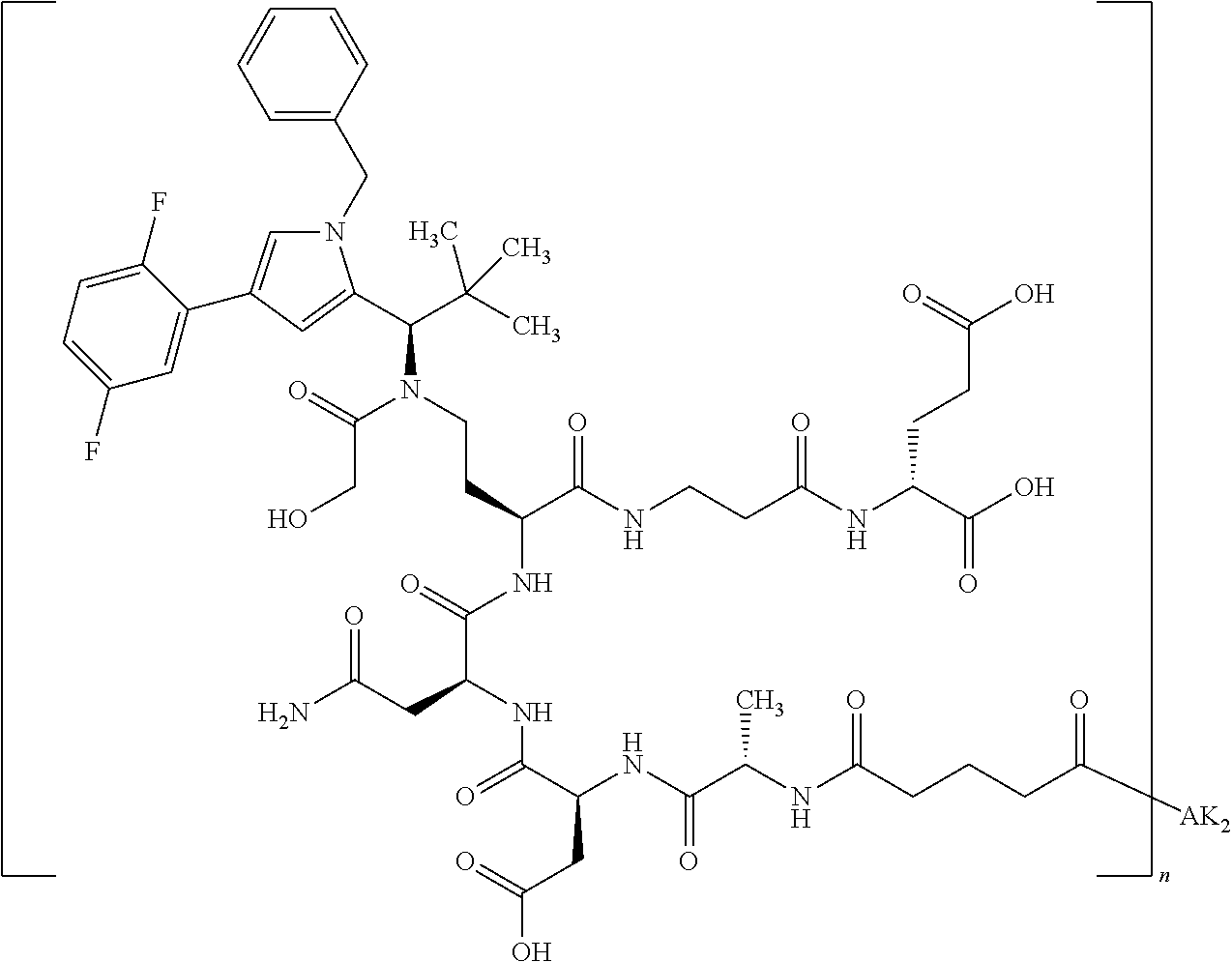
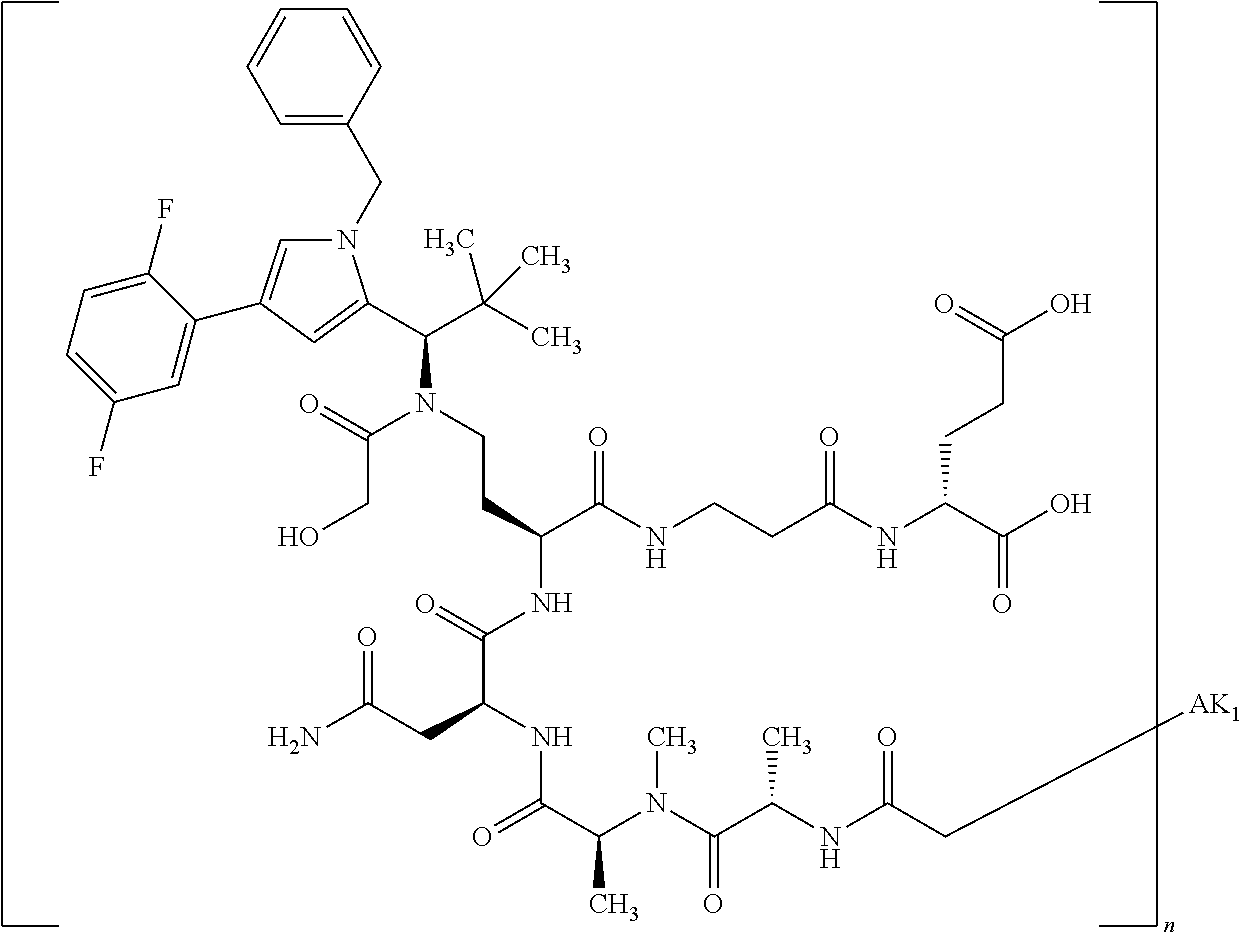
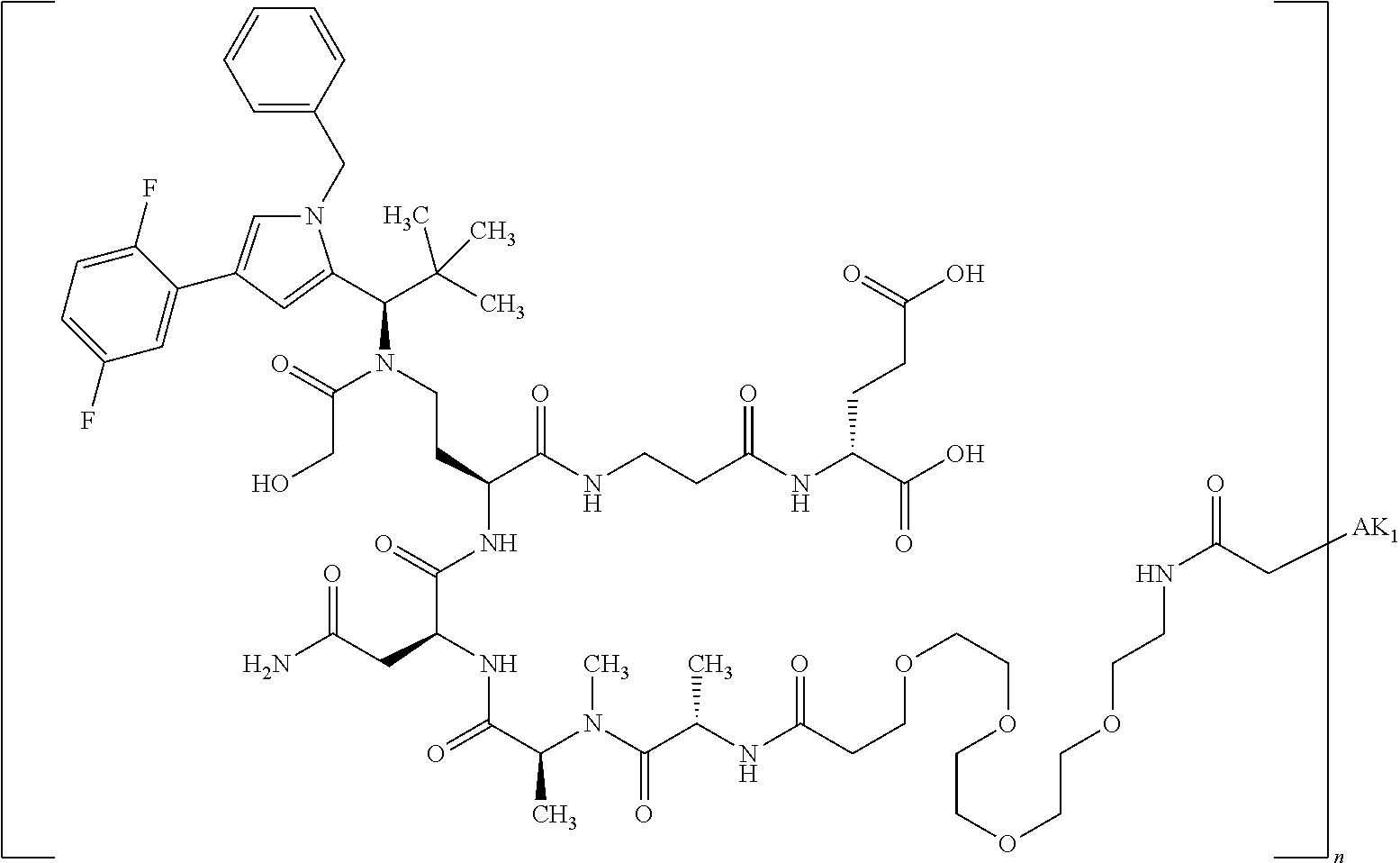
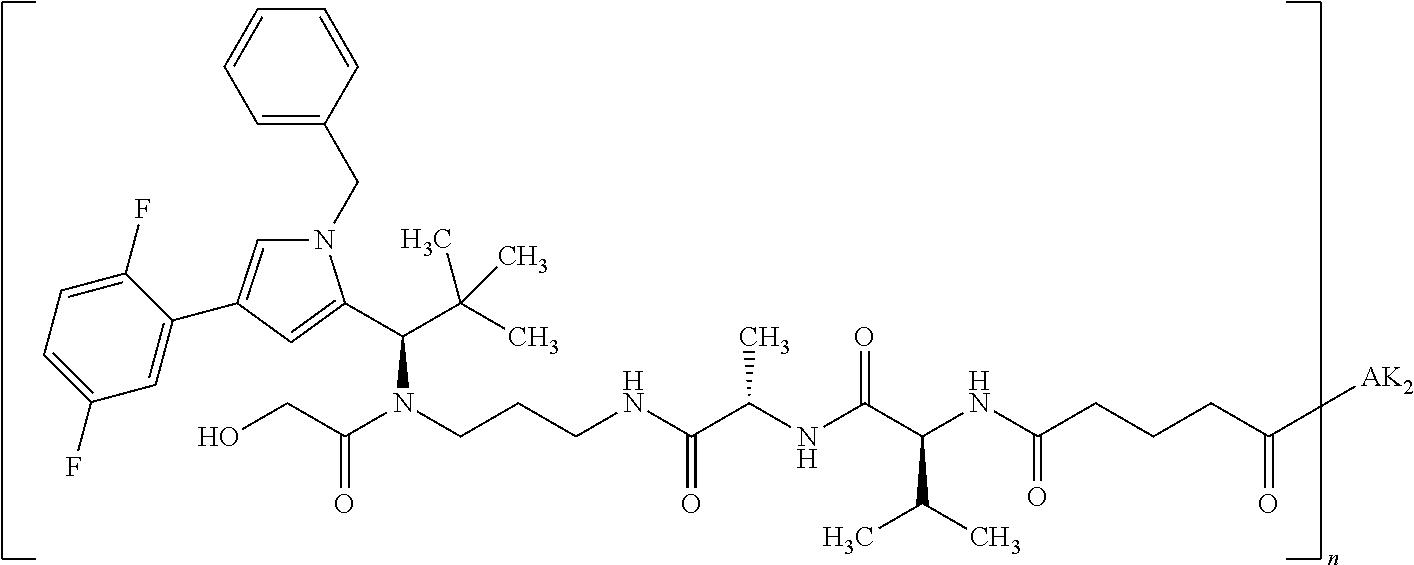
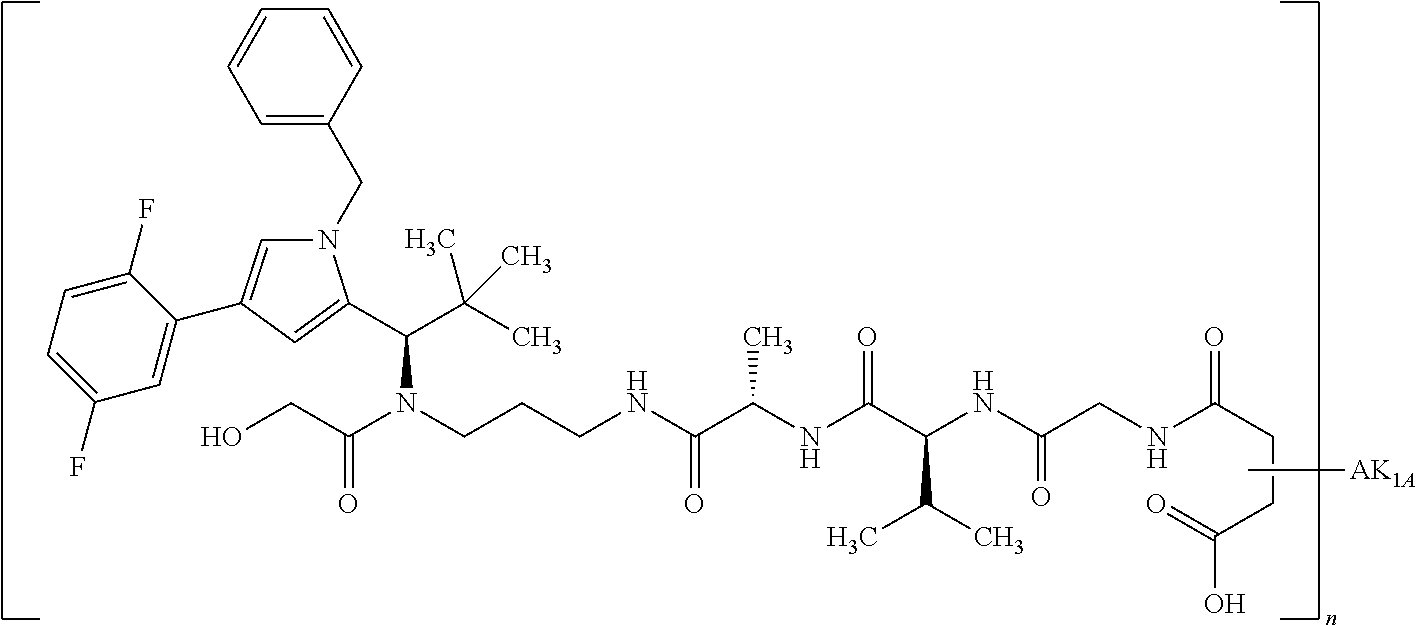
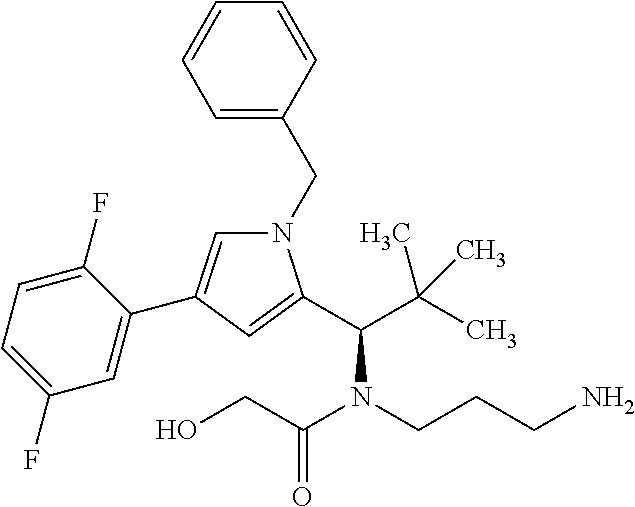
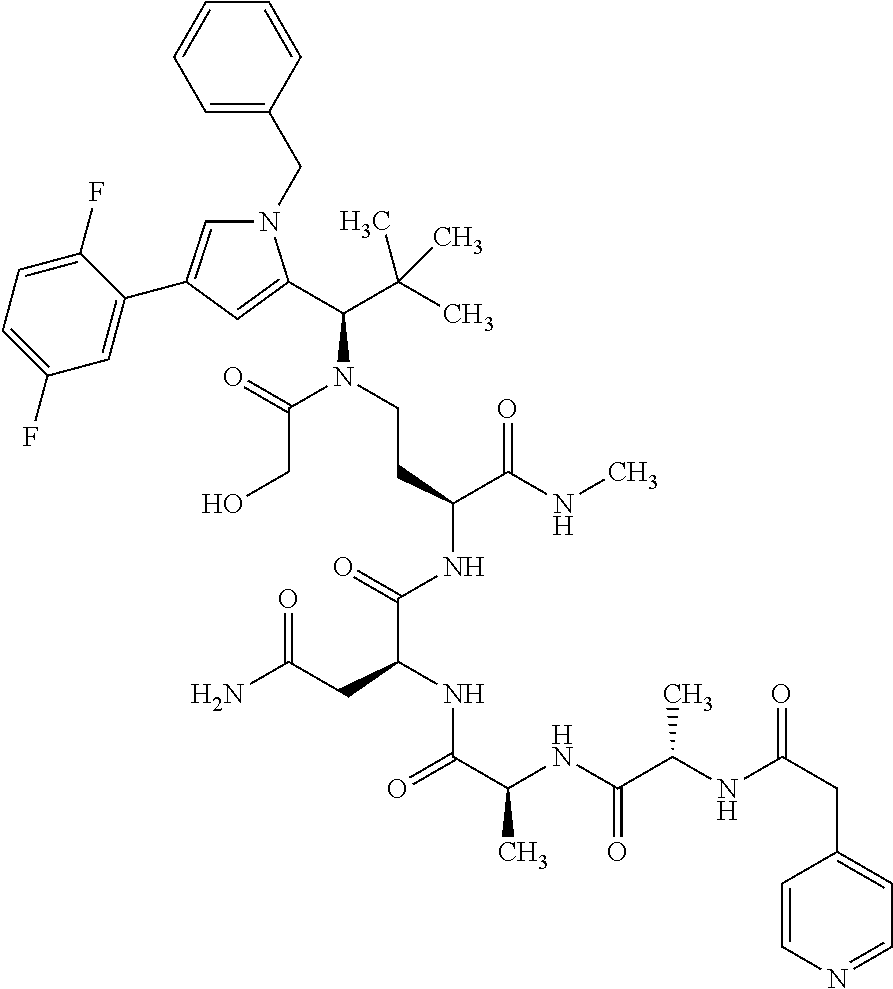
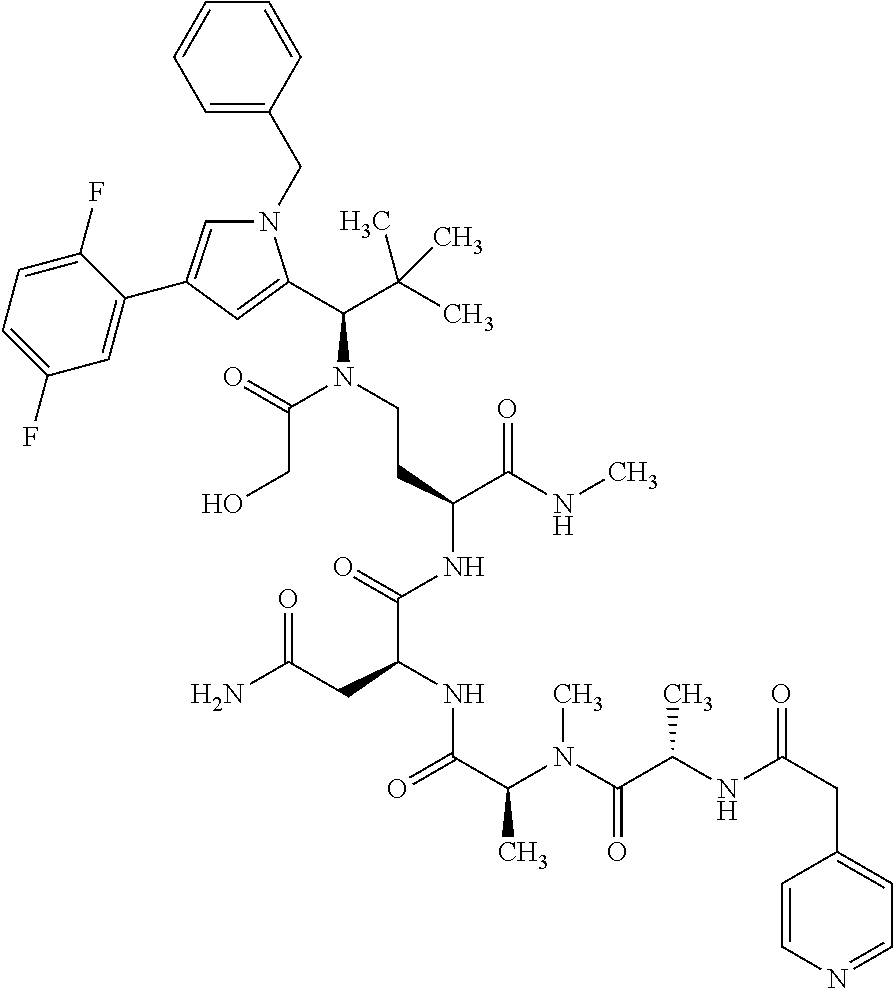
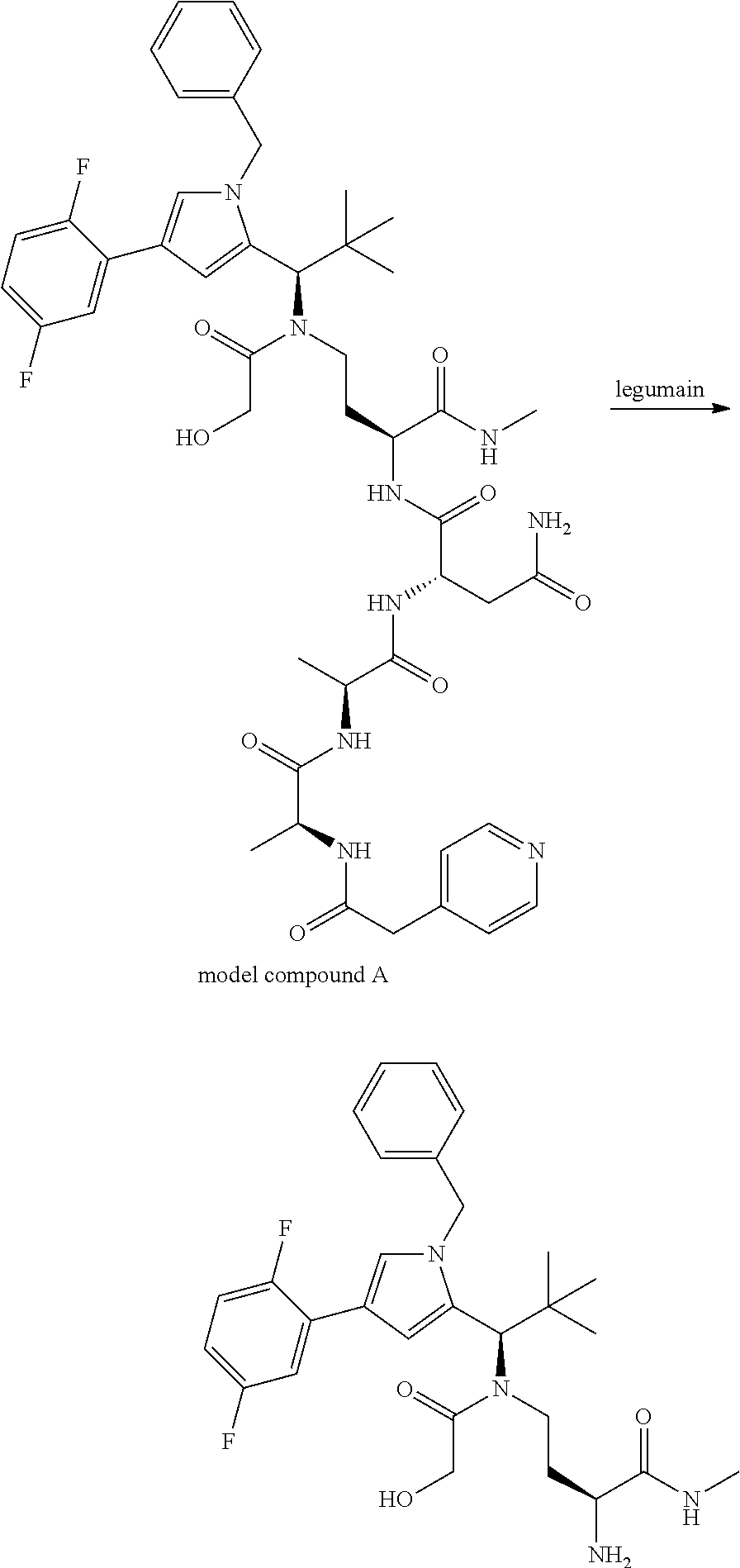
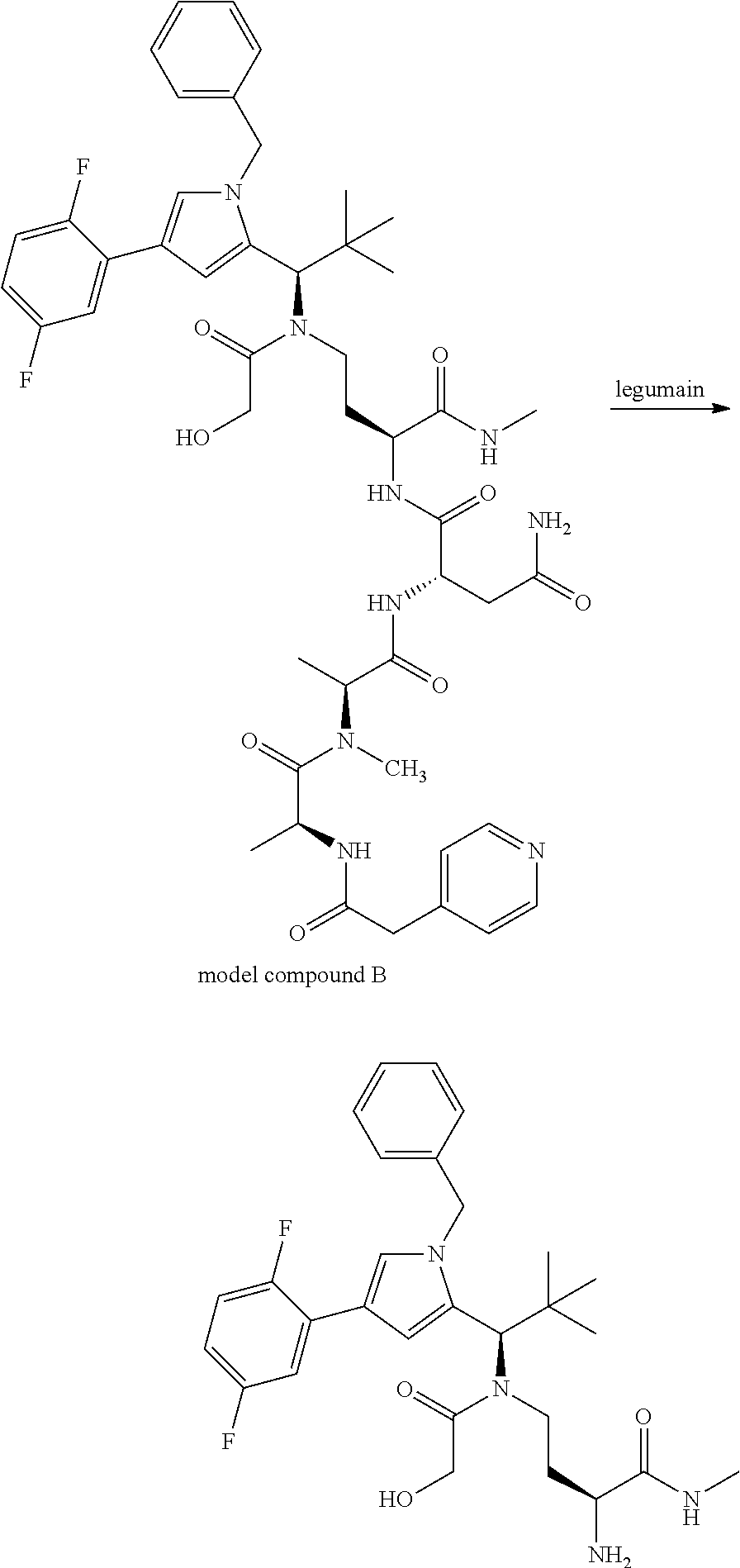
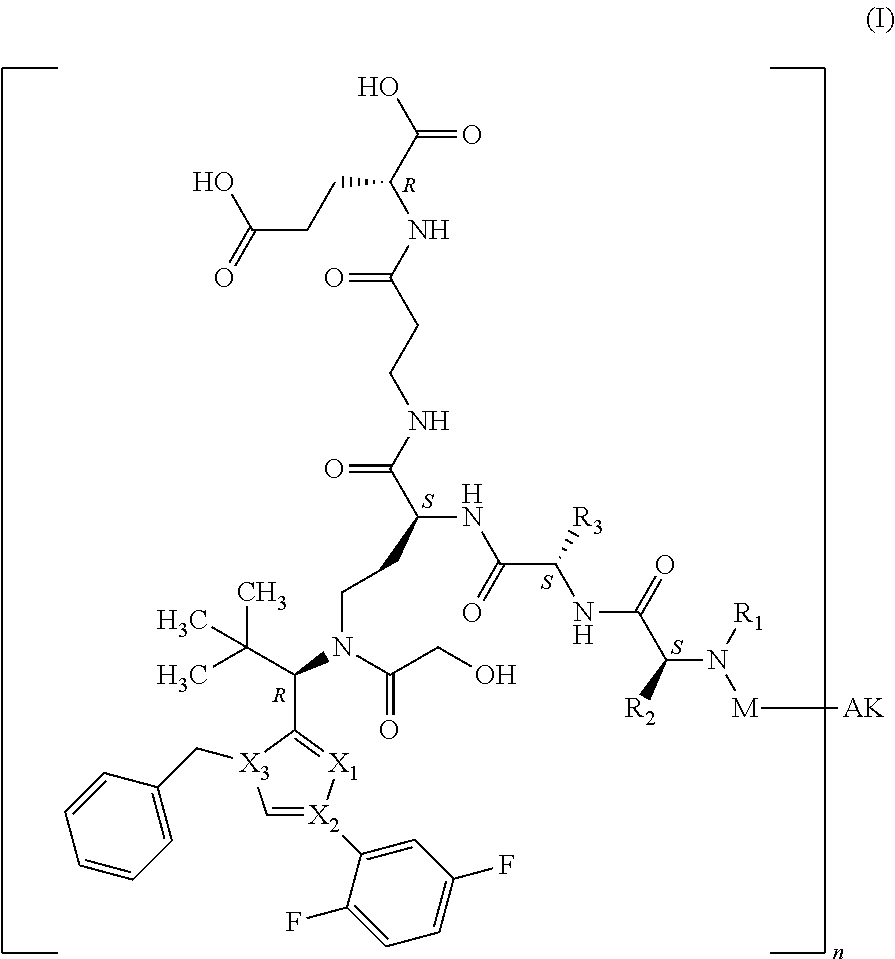
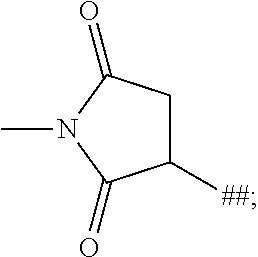
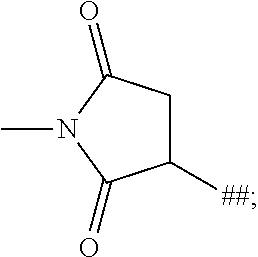
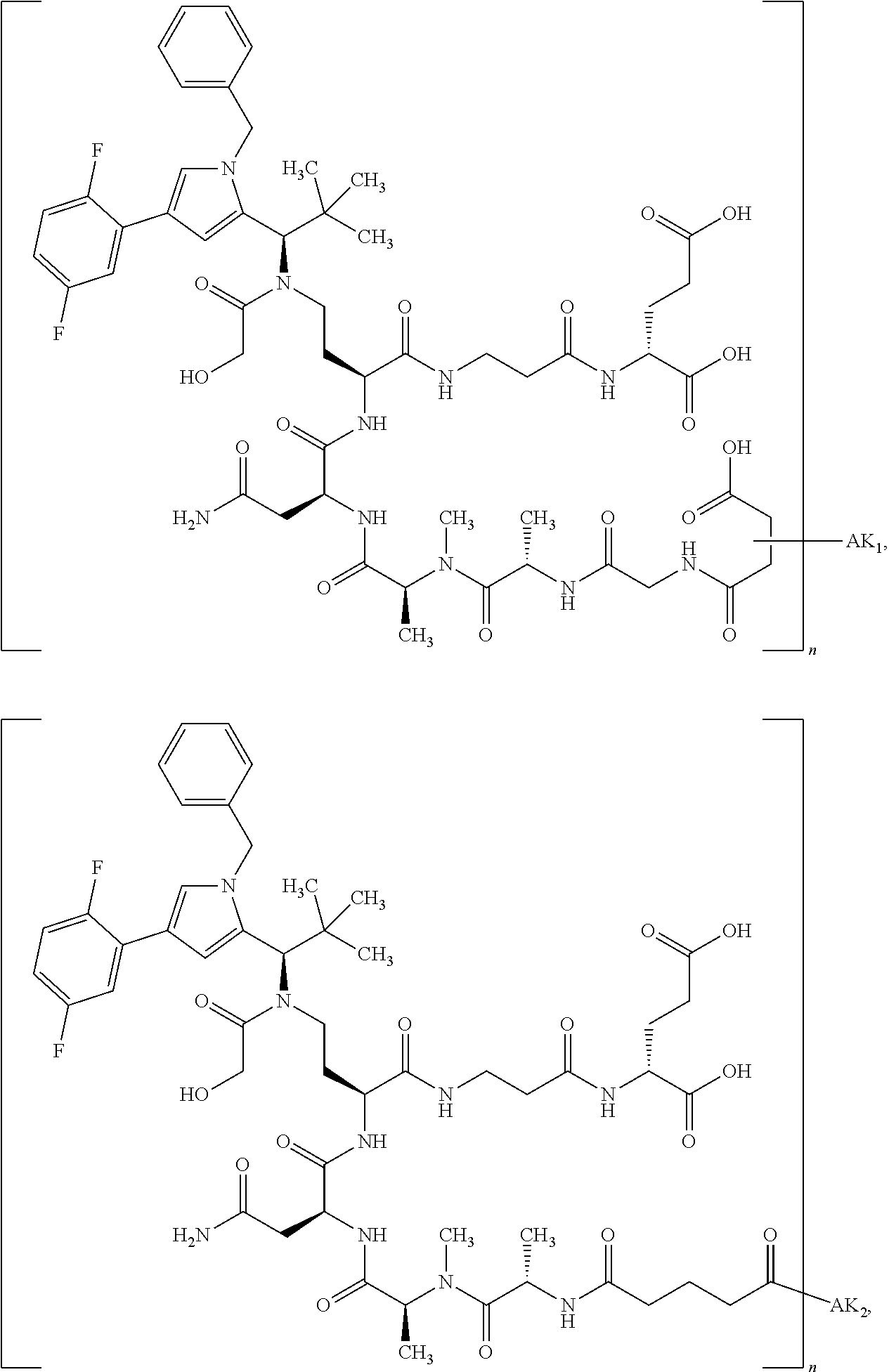
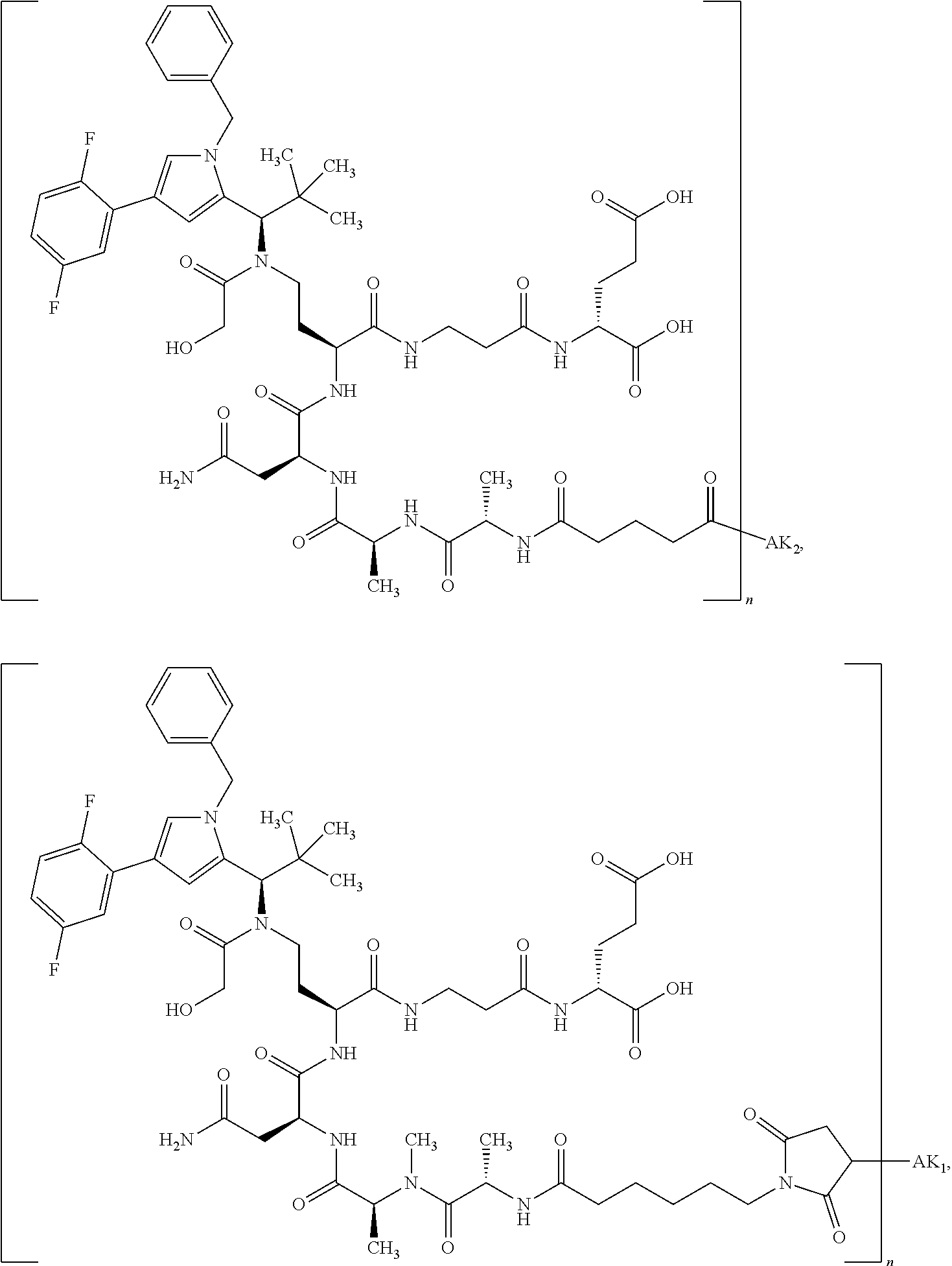
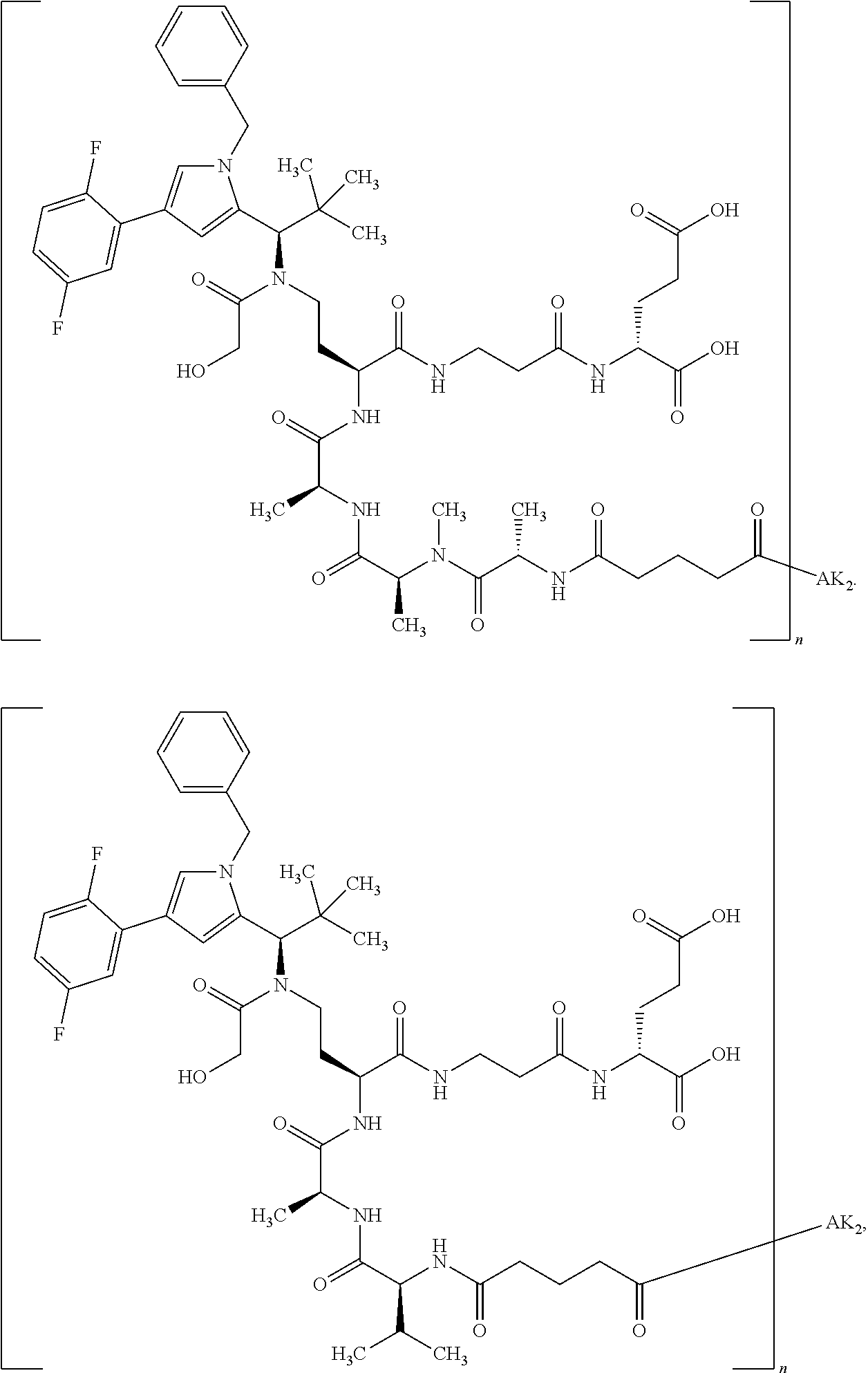
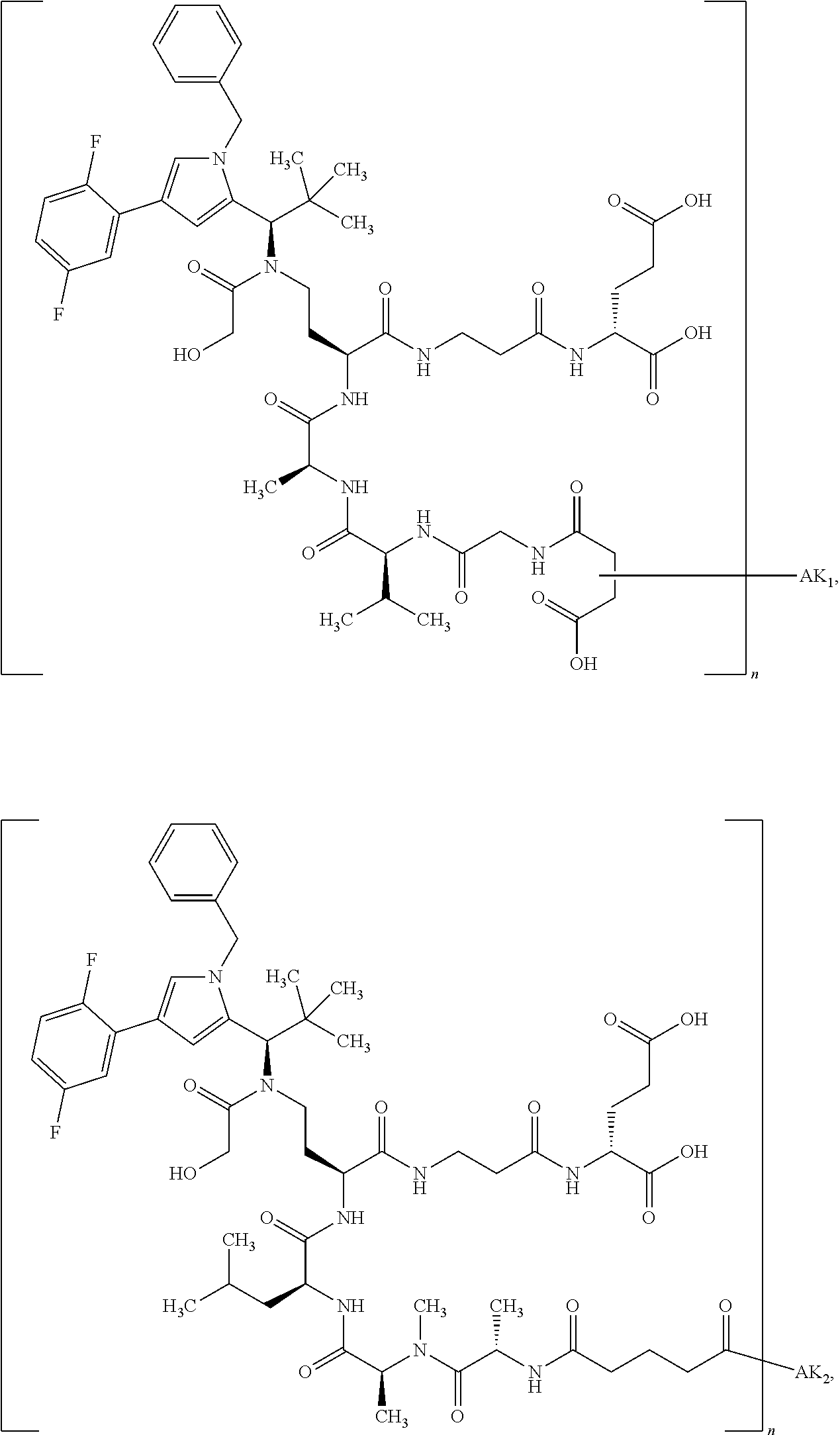
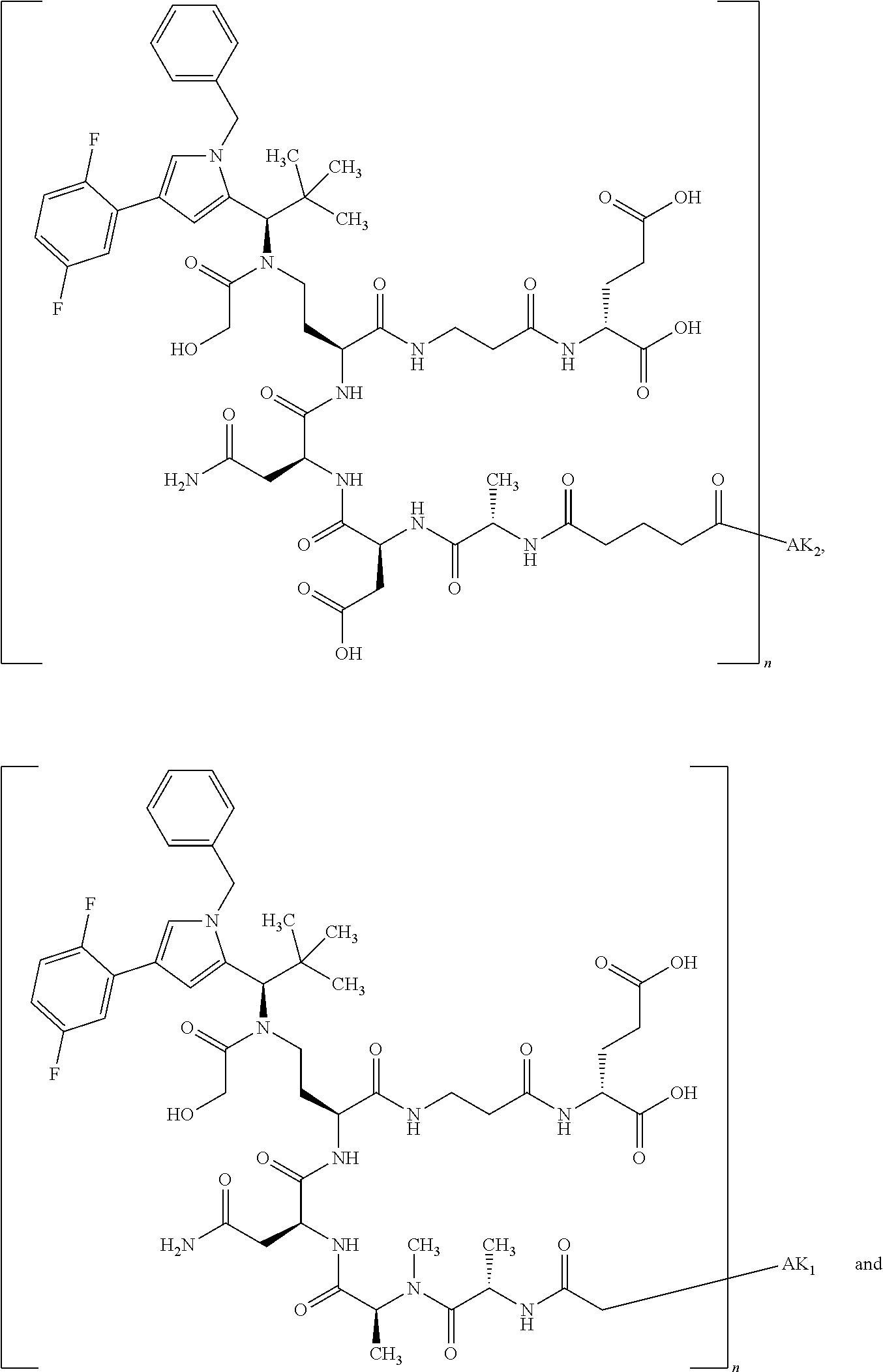
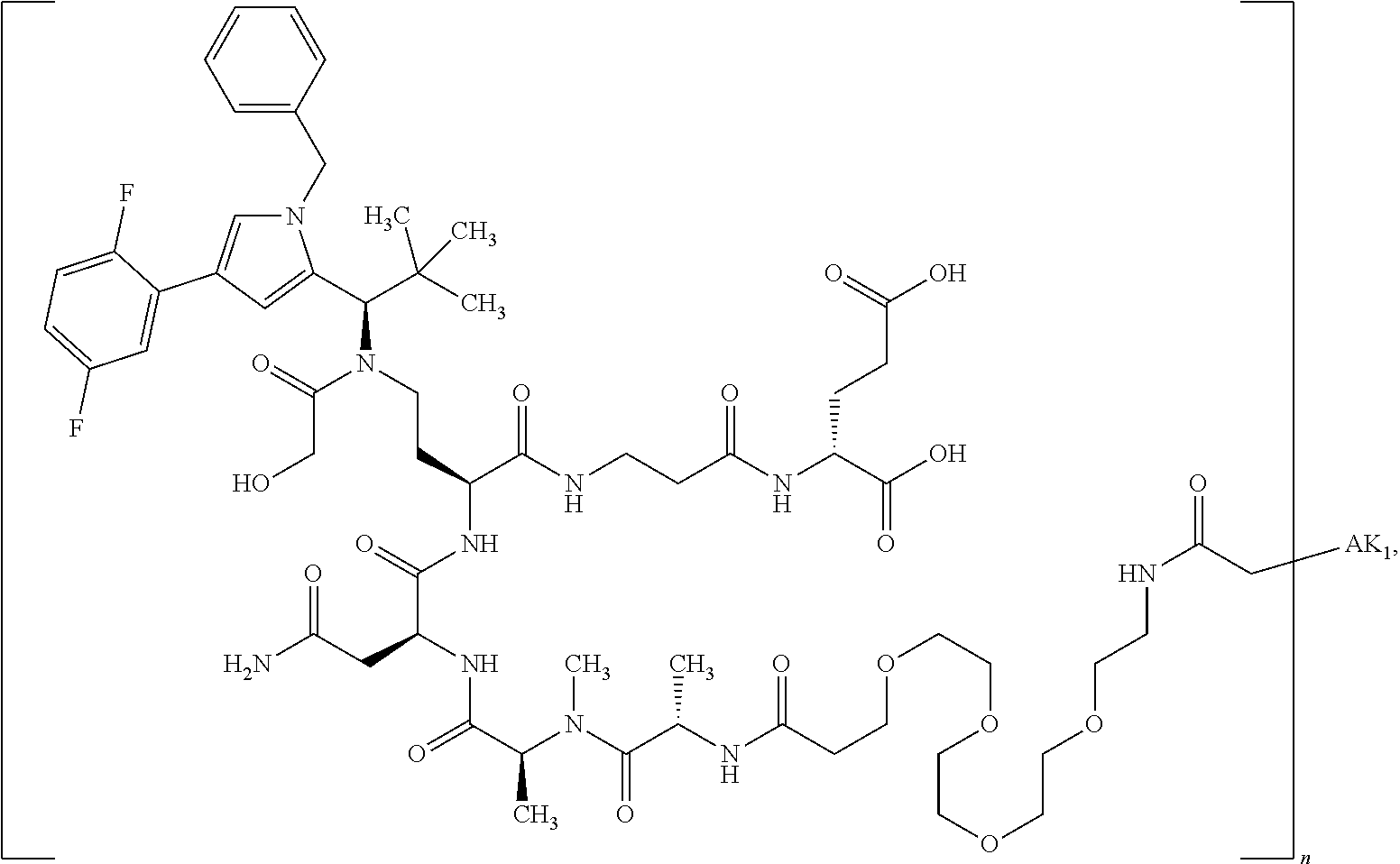
D00001
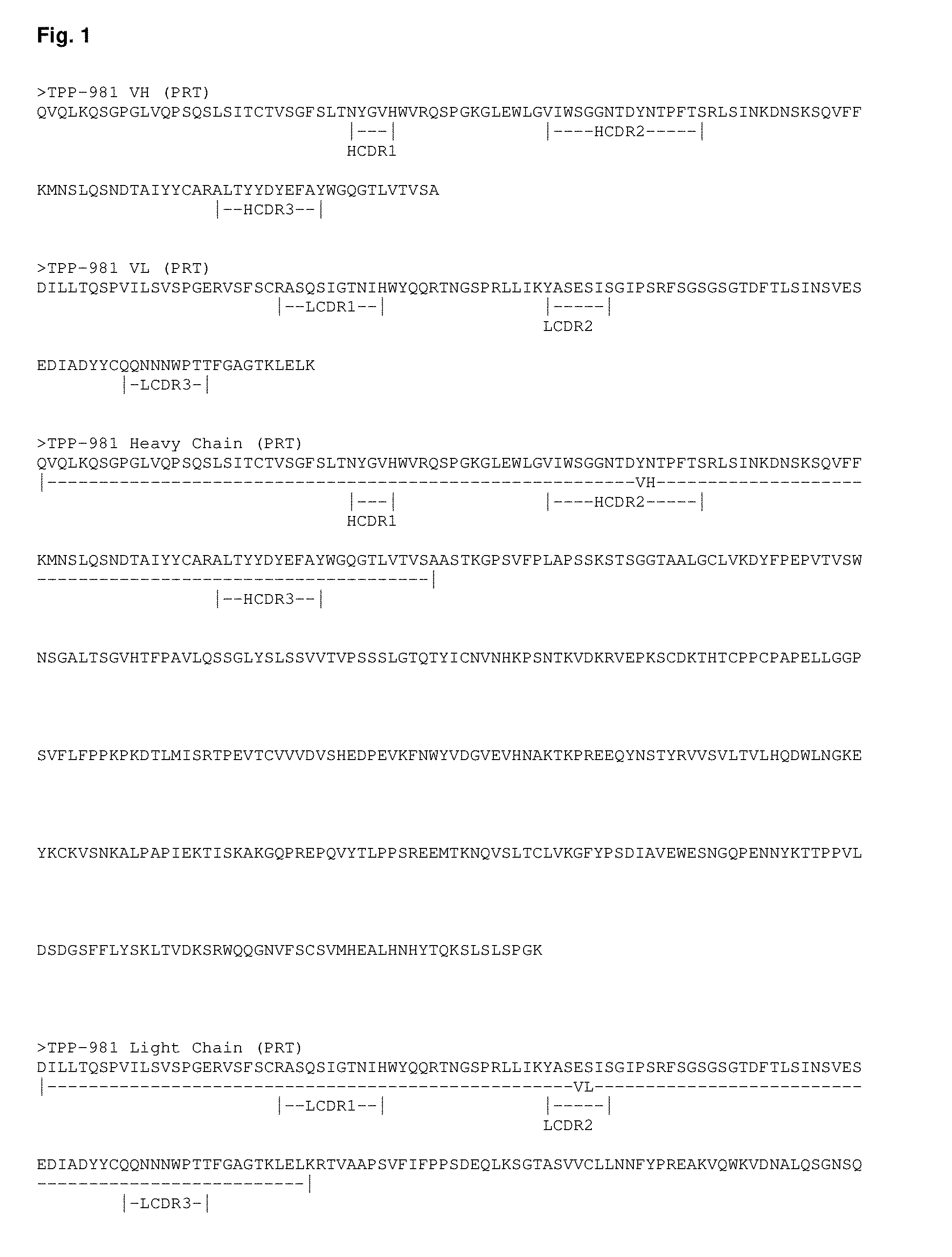
D00002
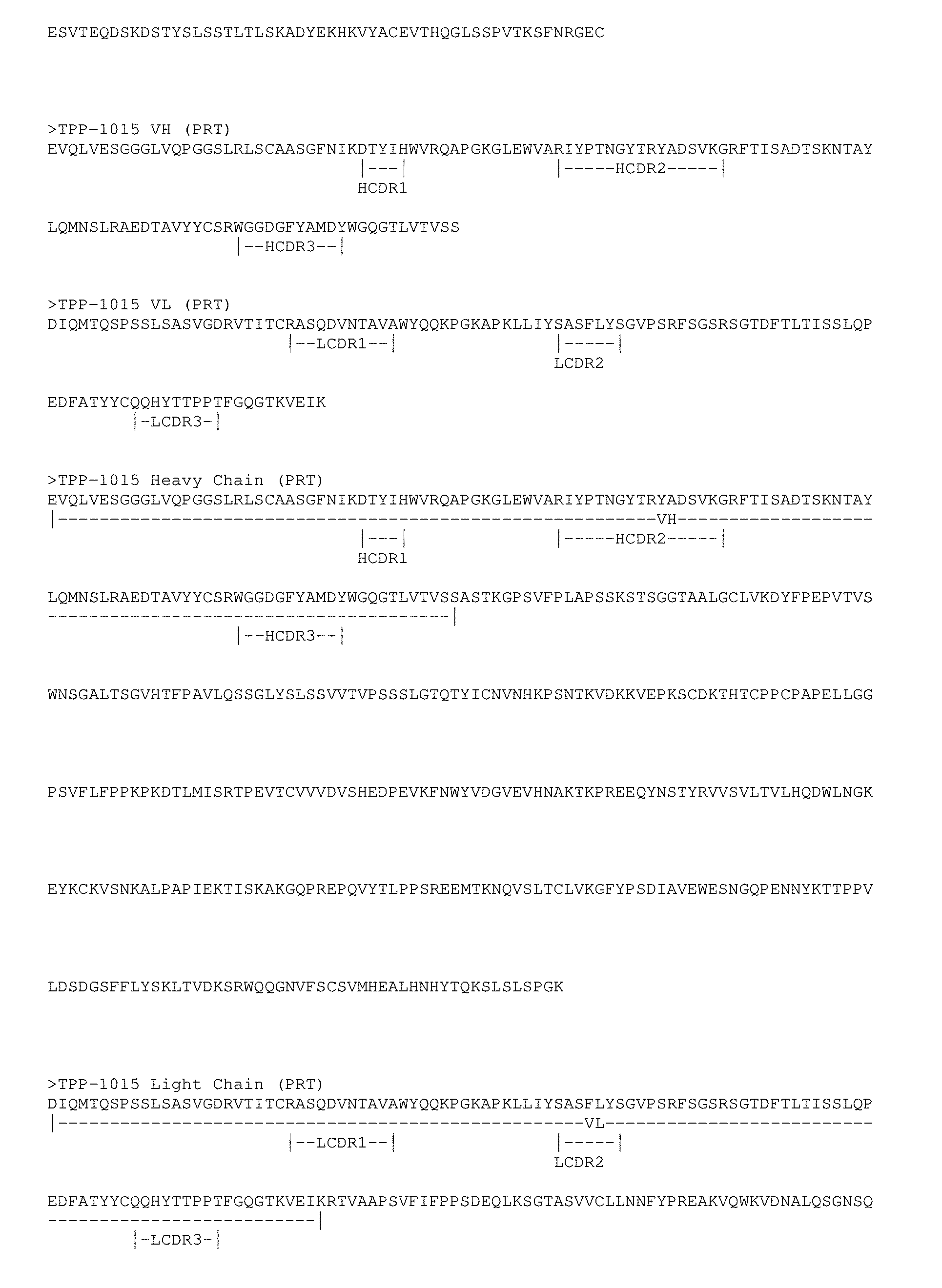
D00003
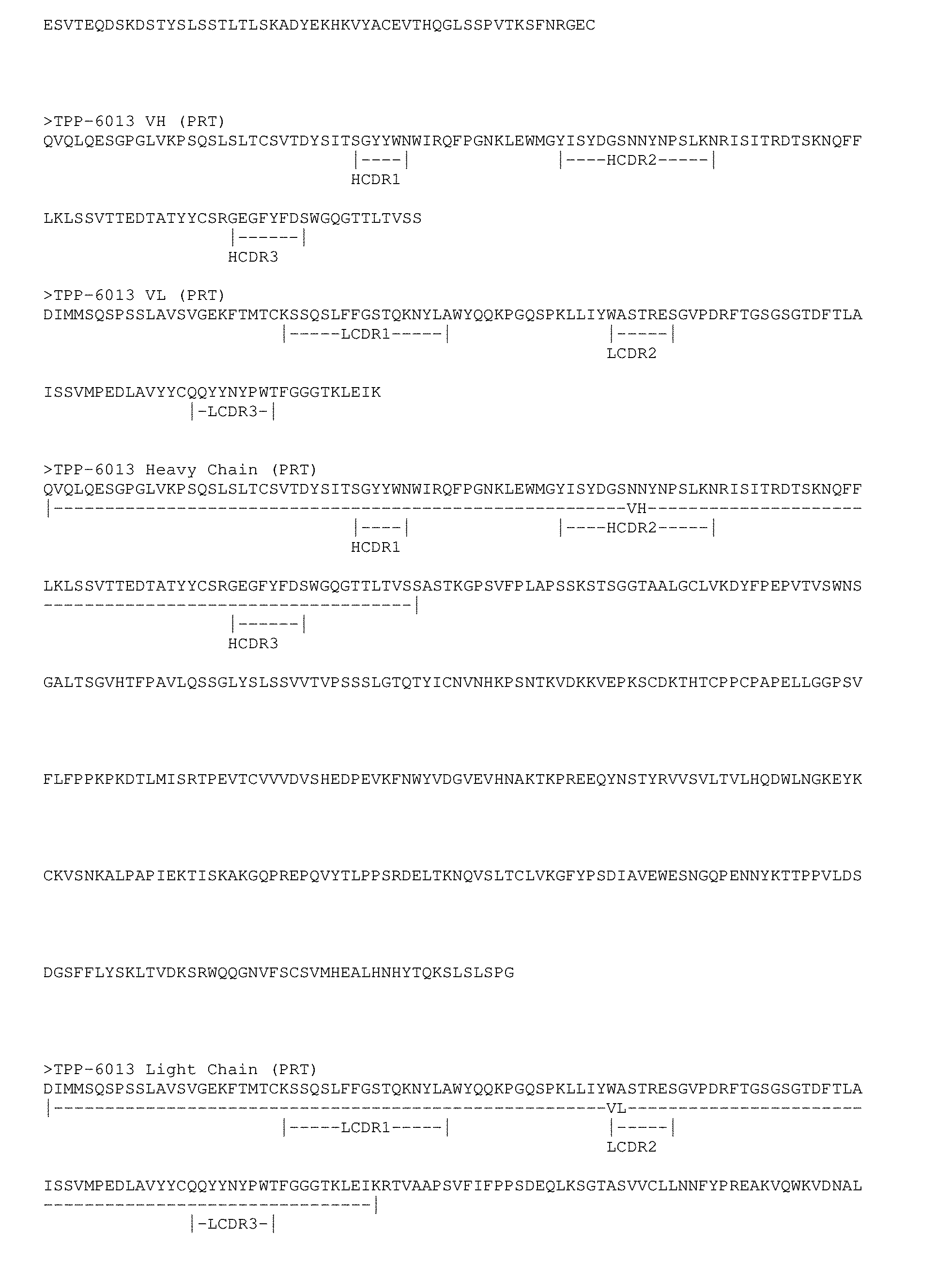
D00004
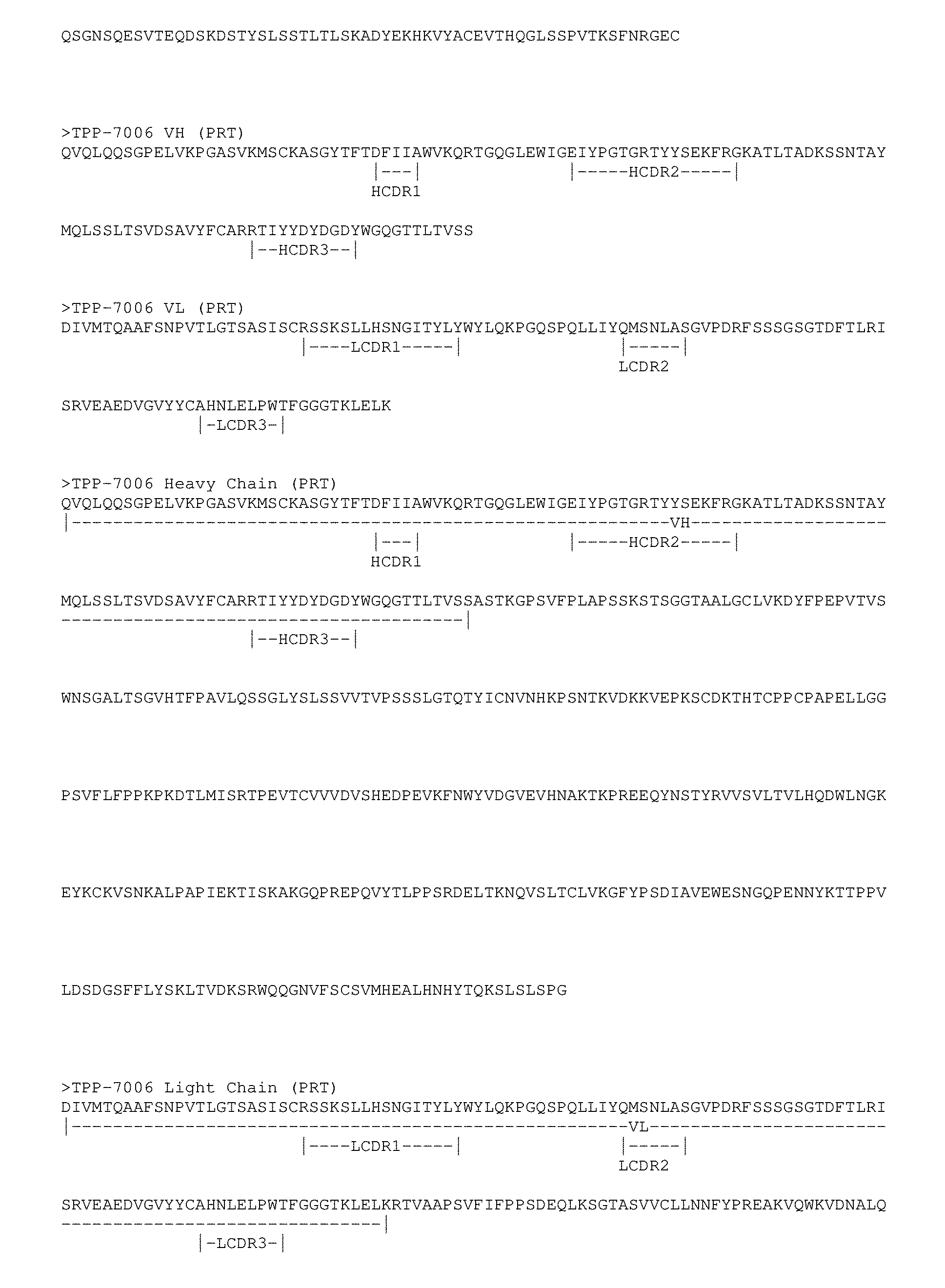
D00005
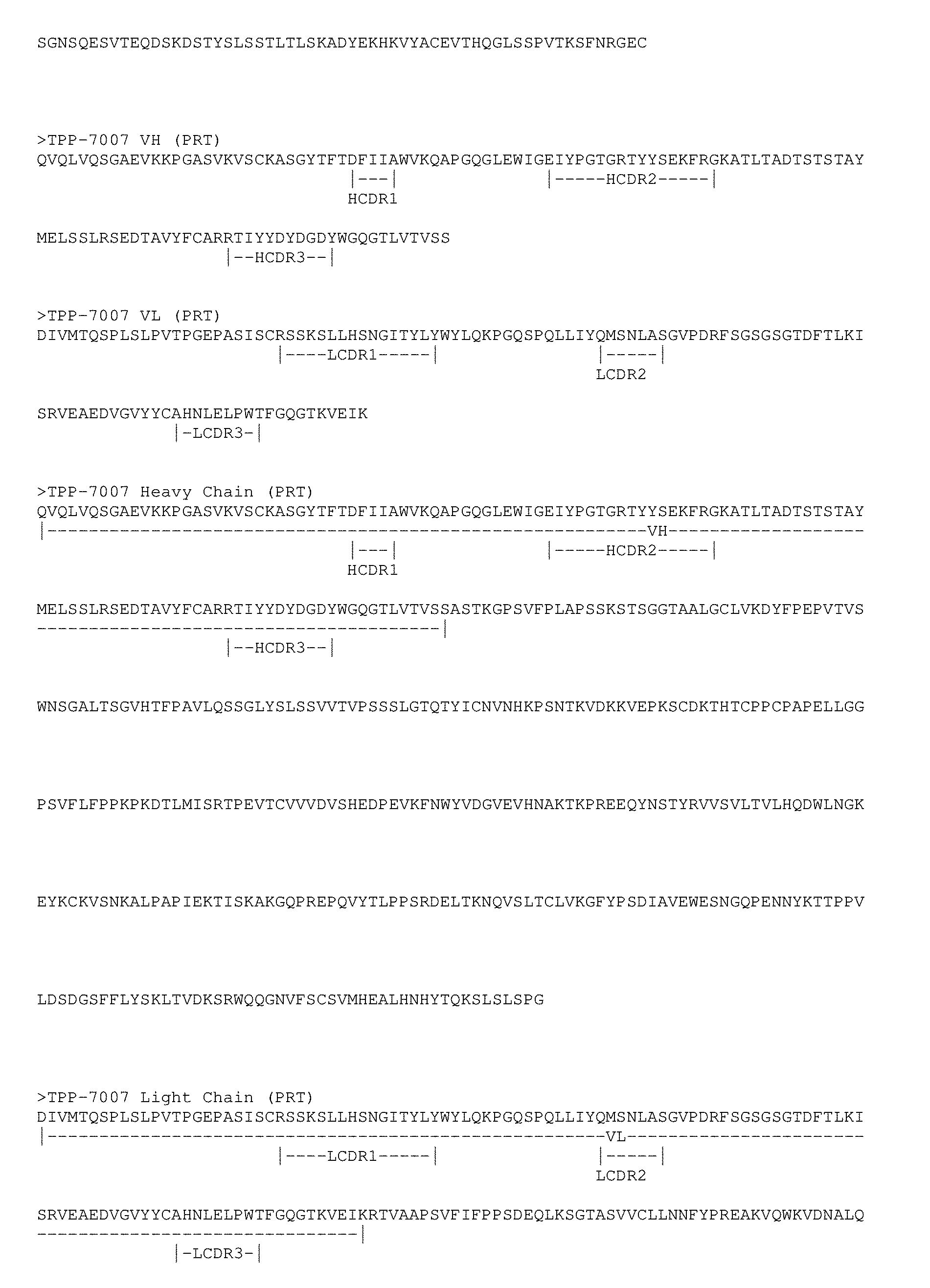
D00006
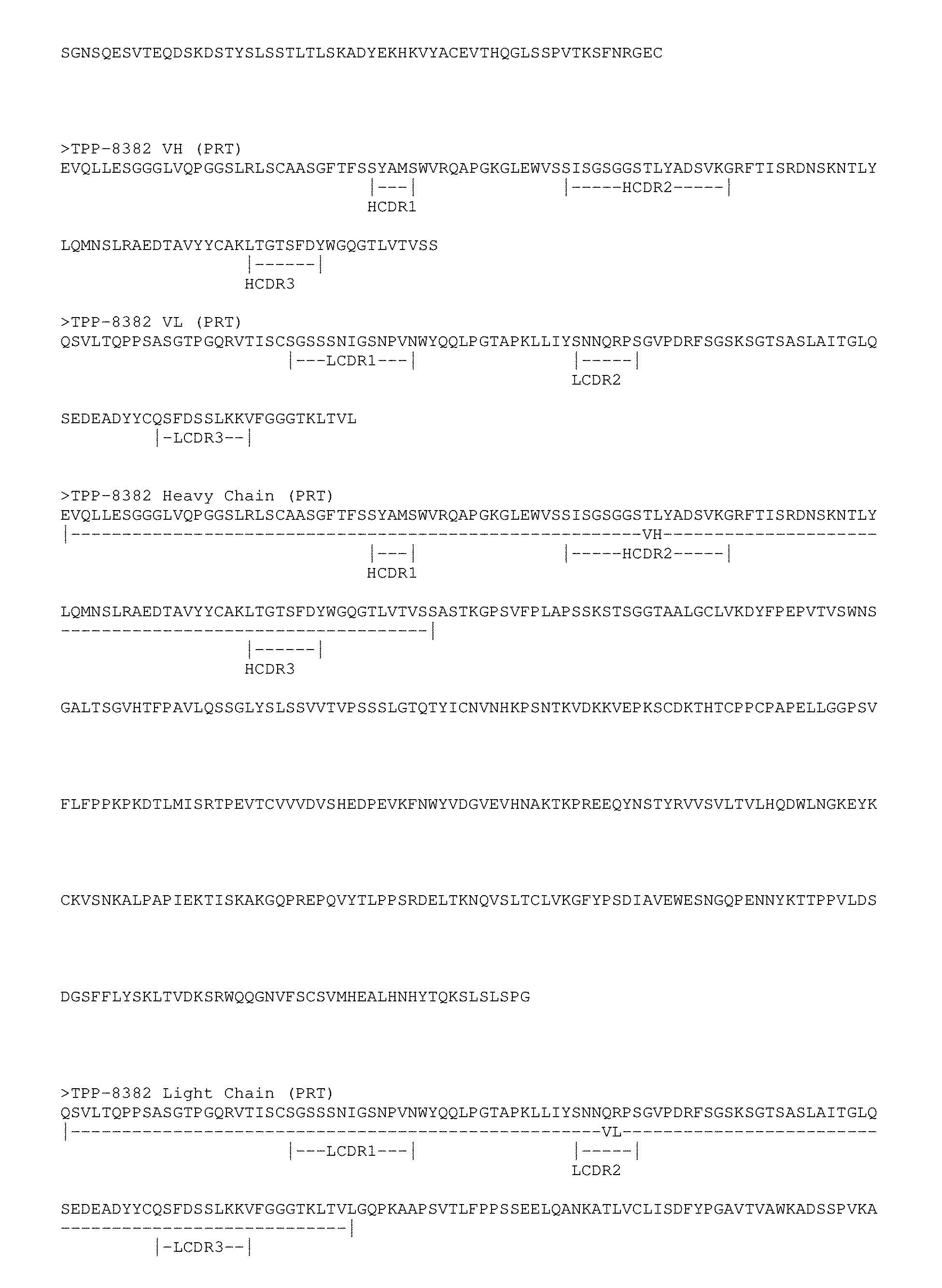
D00007
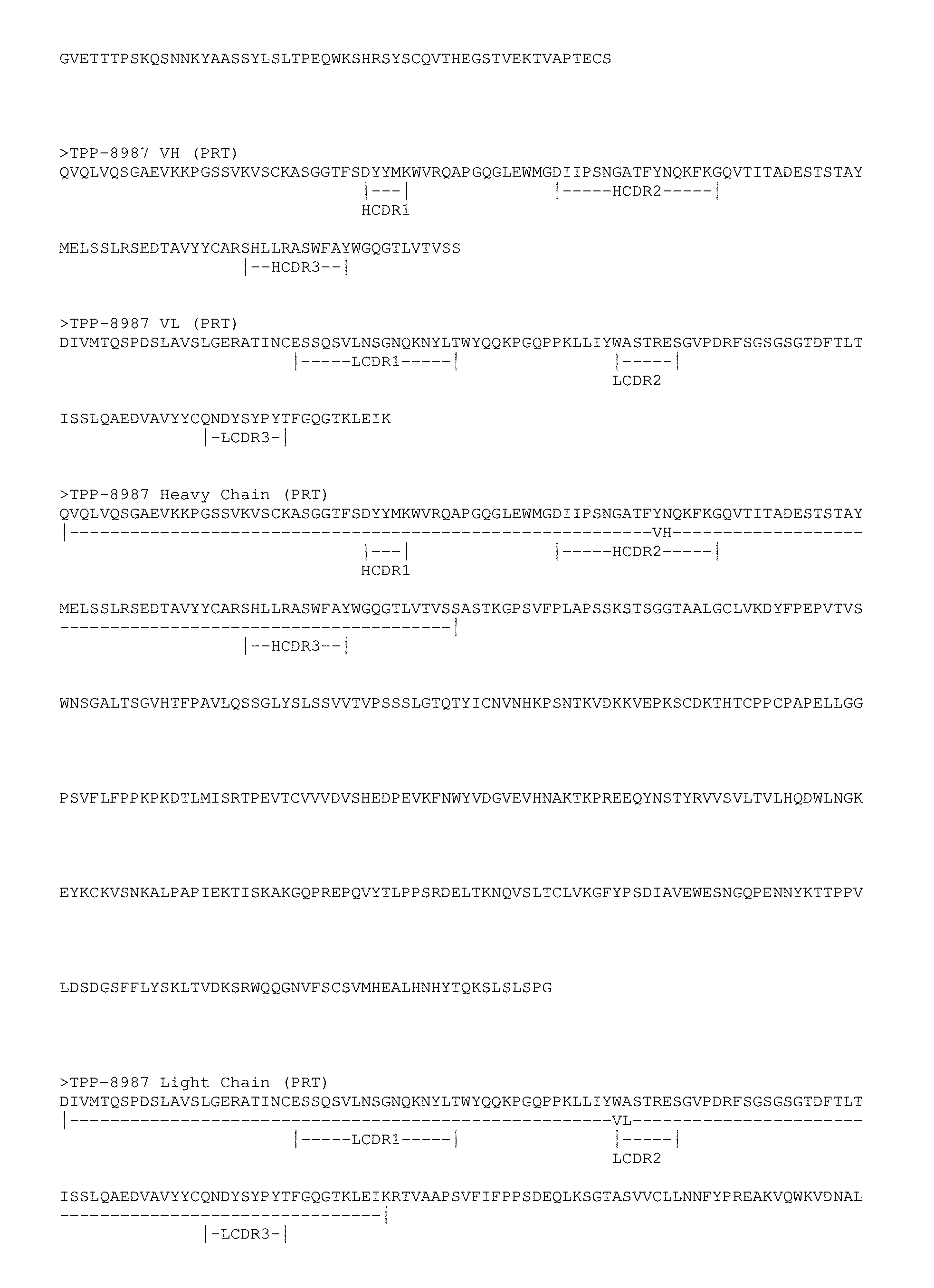
D00008
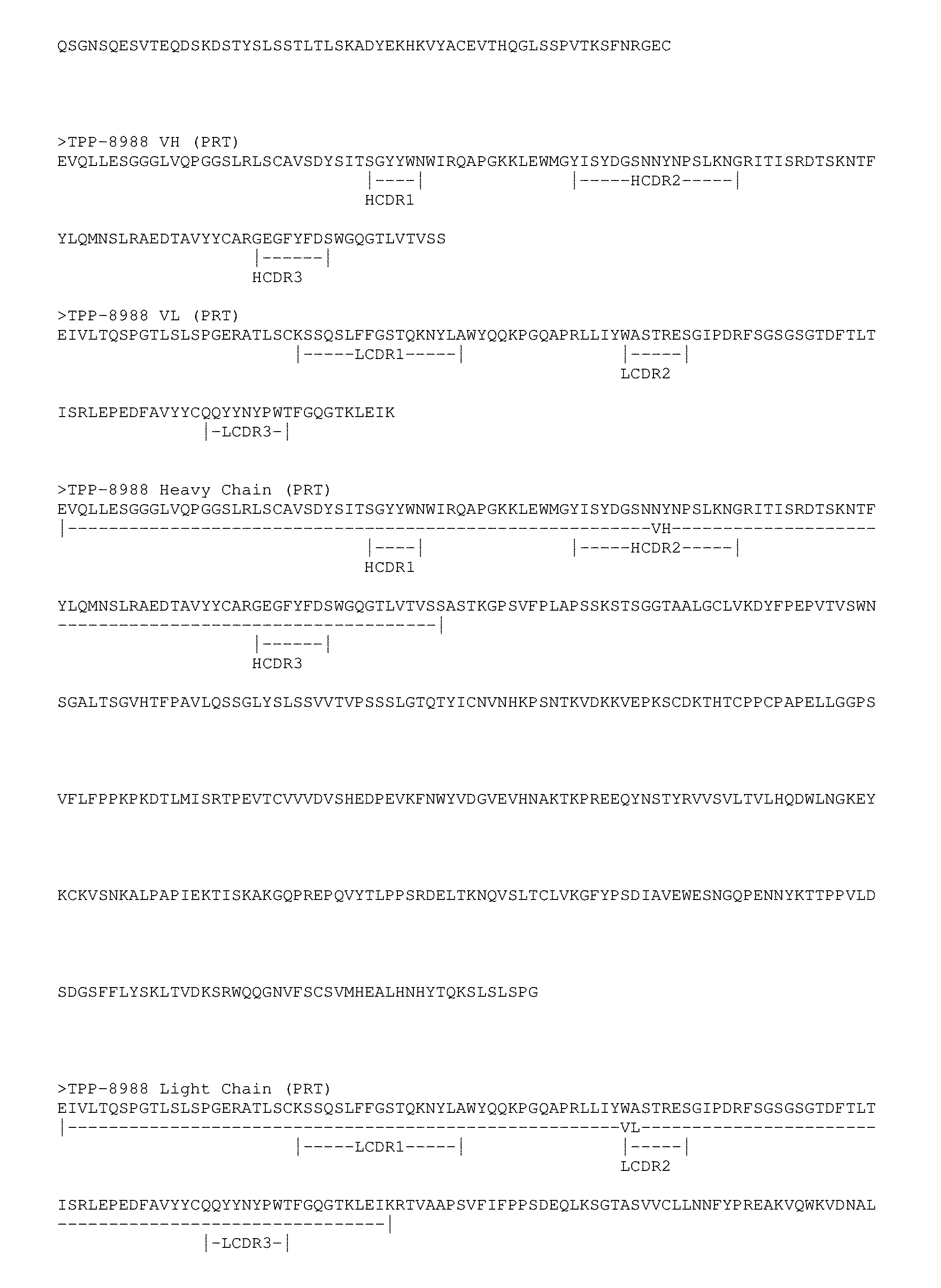
D00009
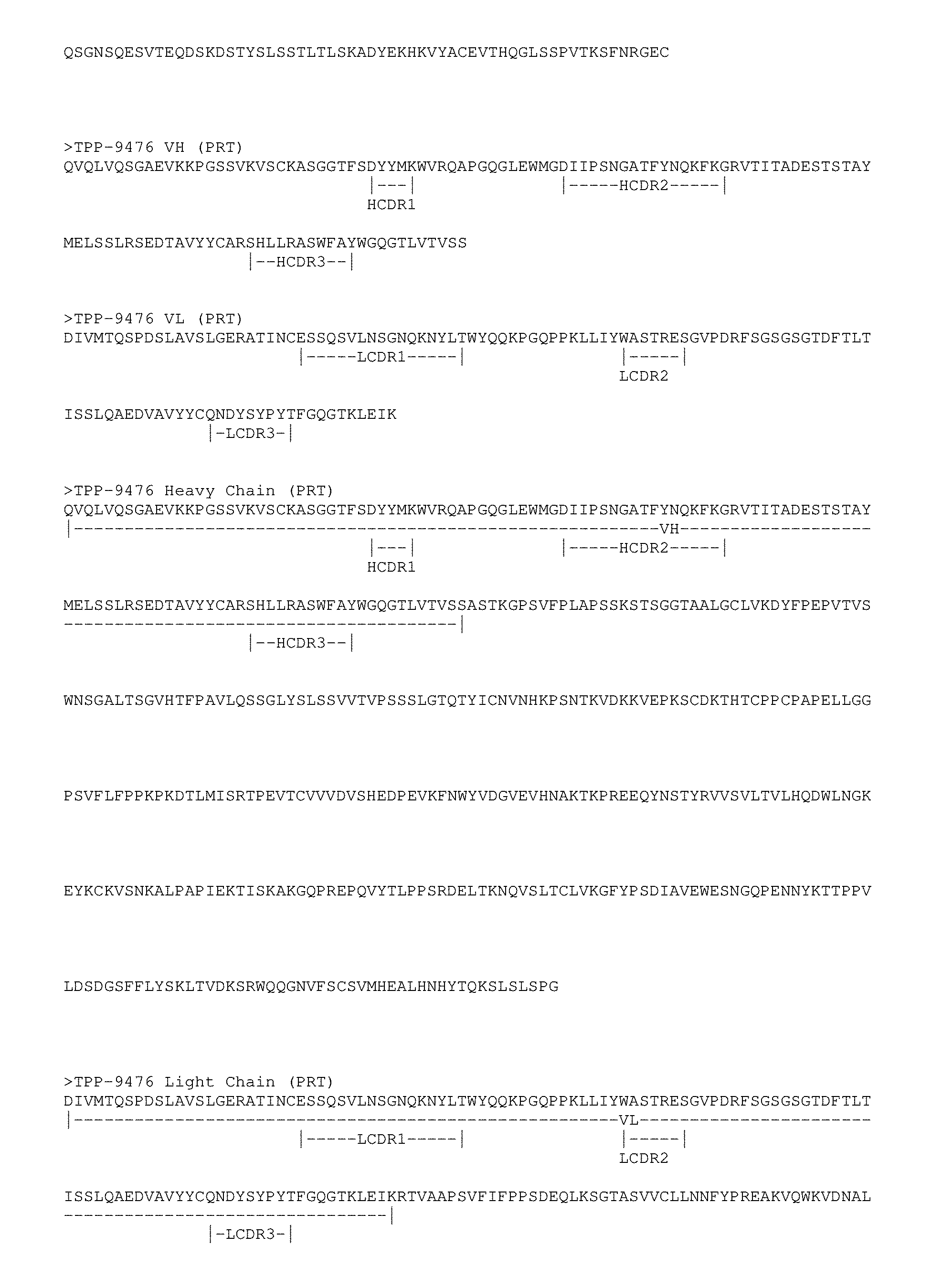
D00010
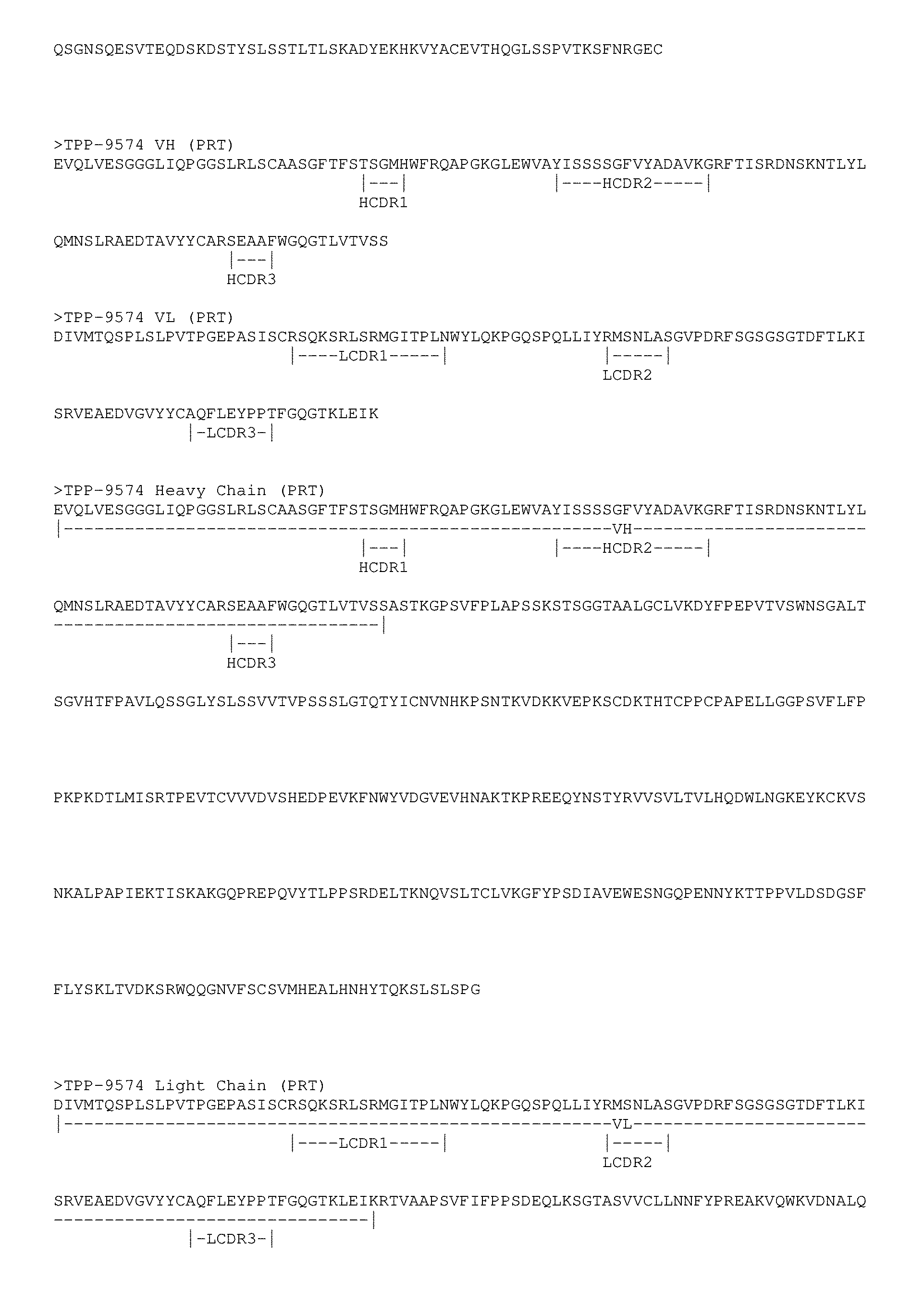
D00011
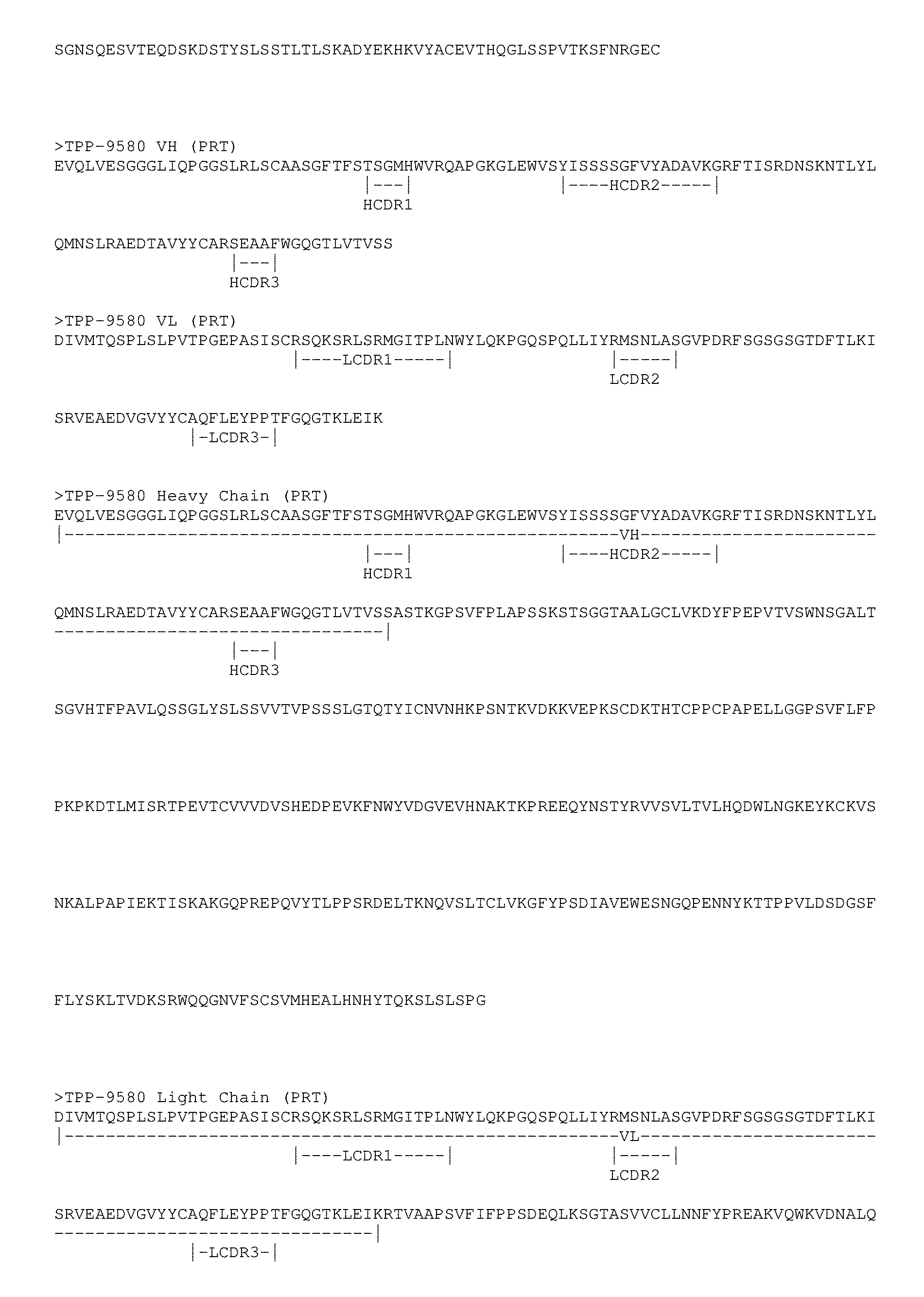
D00012
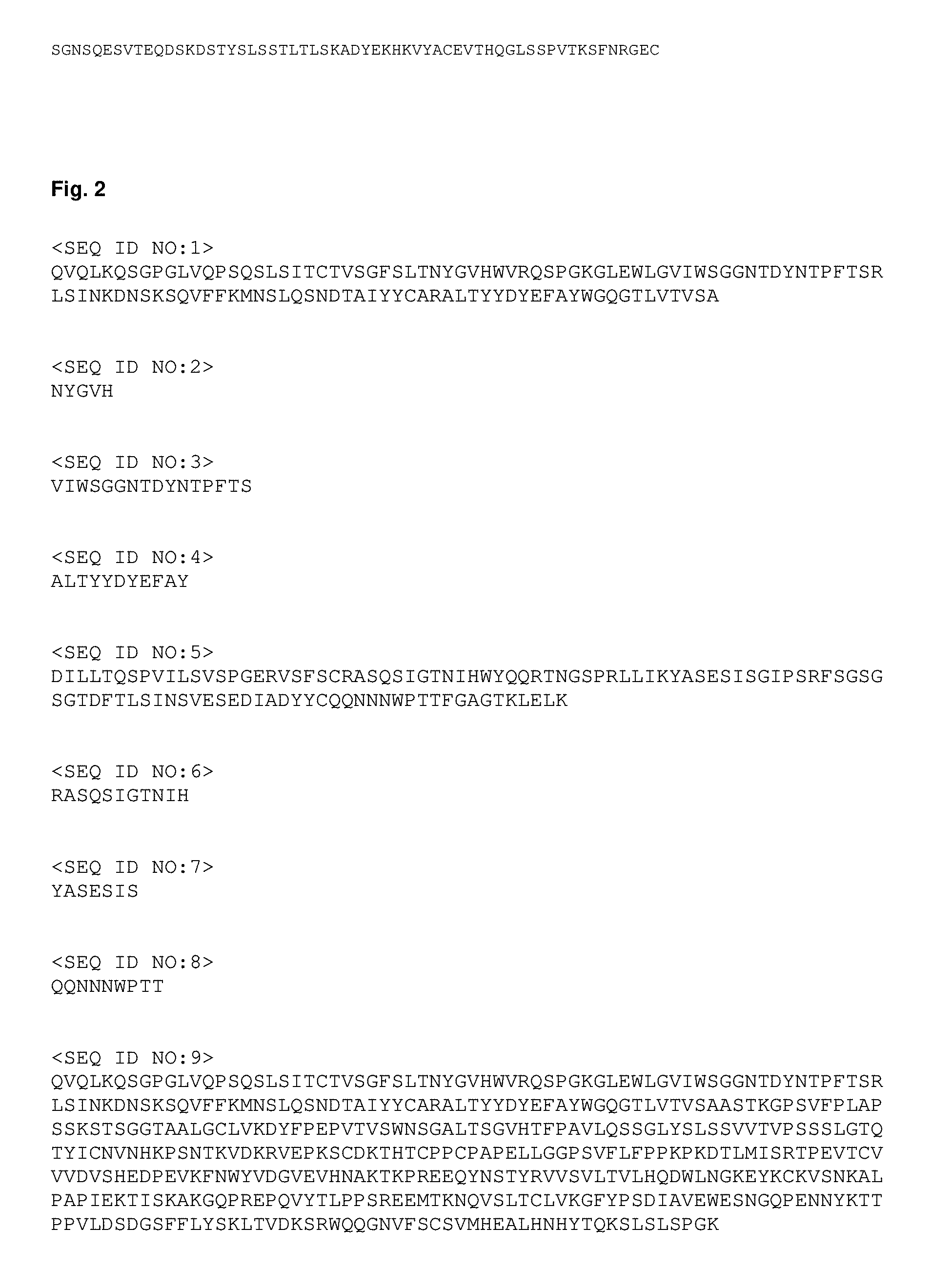
D00013
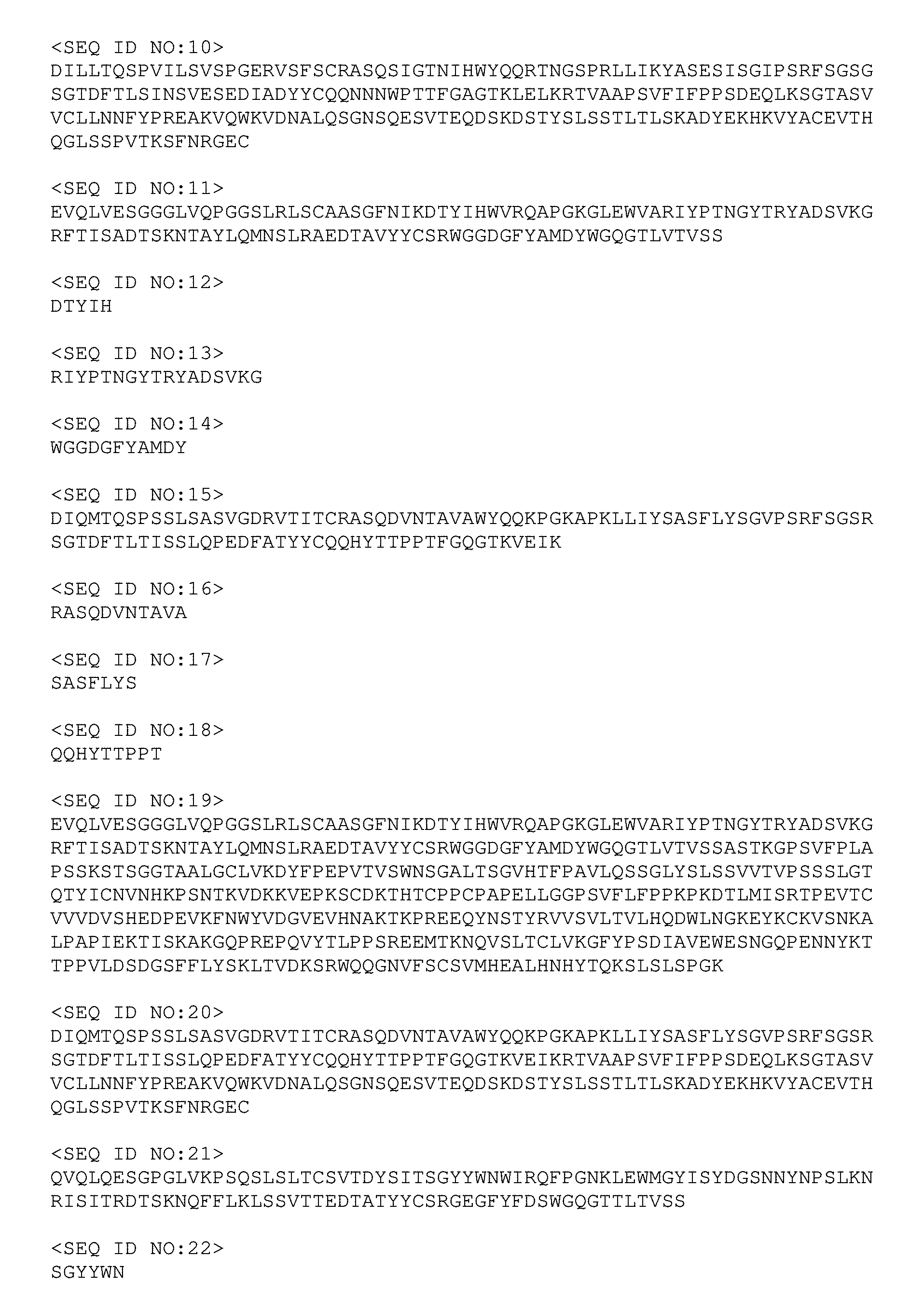
D00014
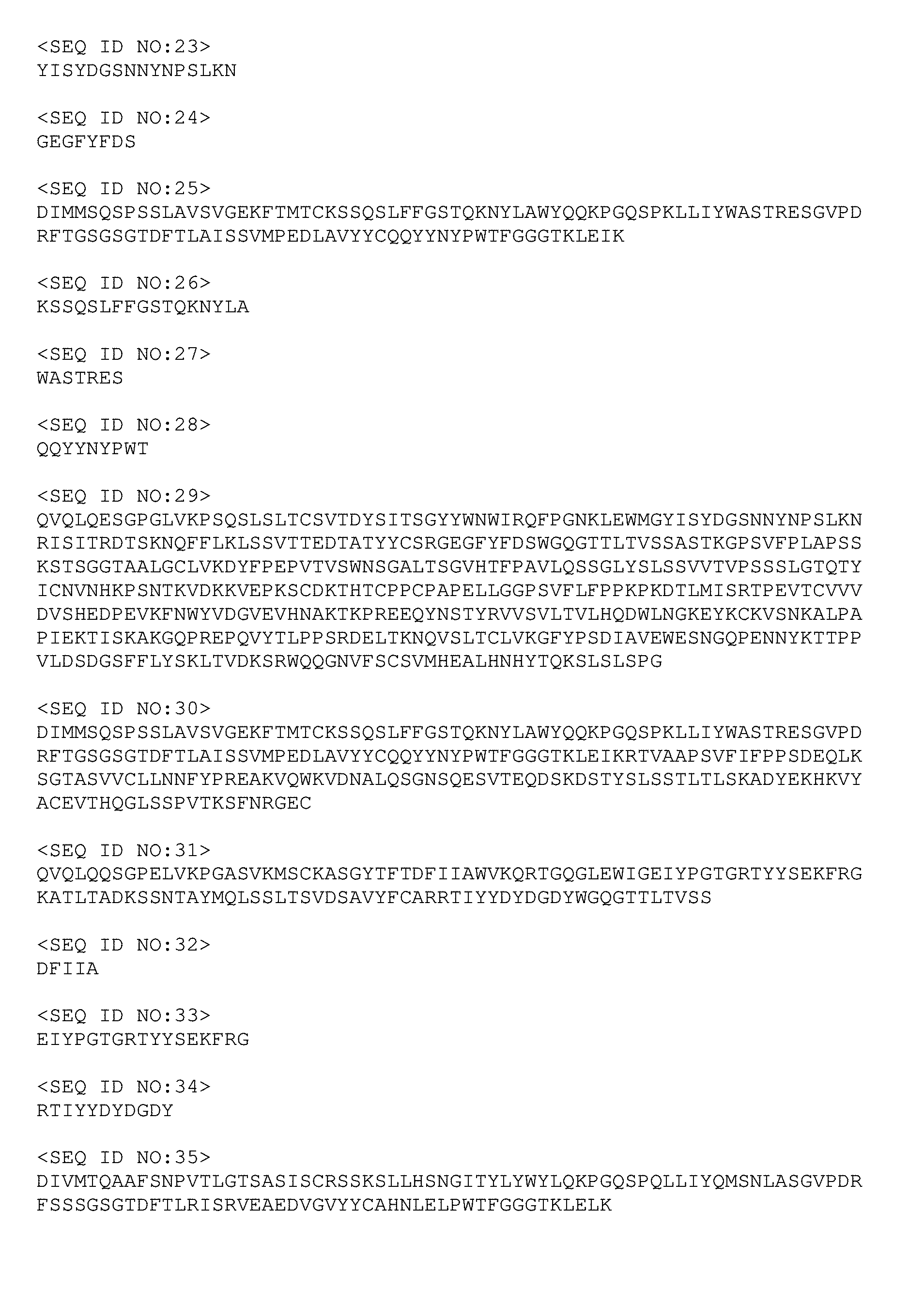
D00015
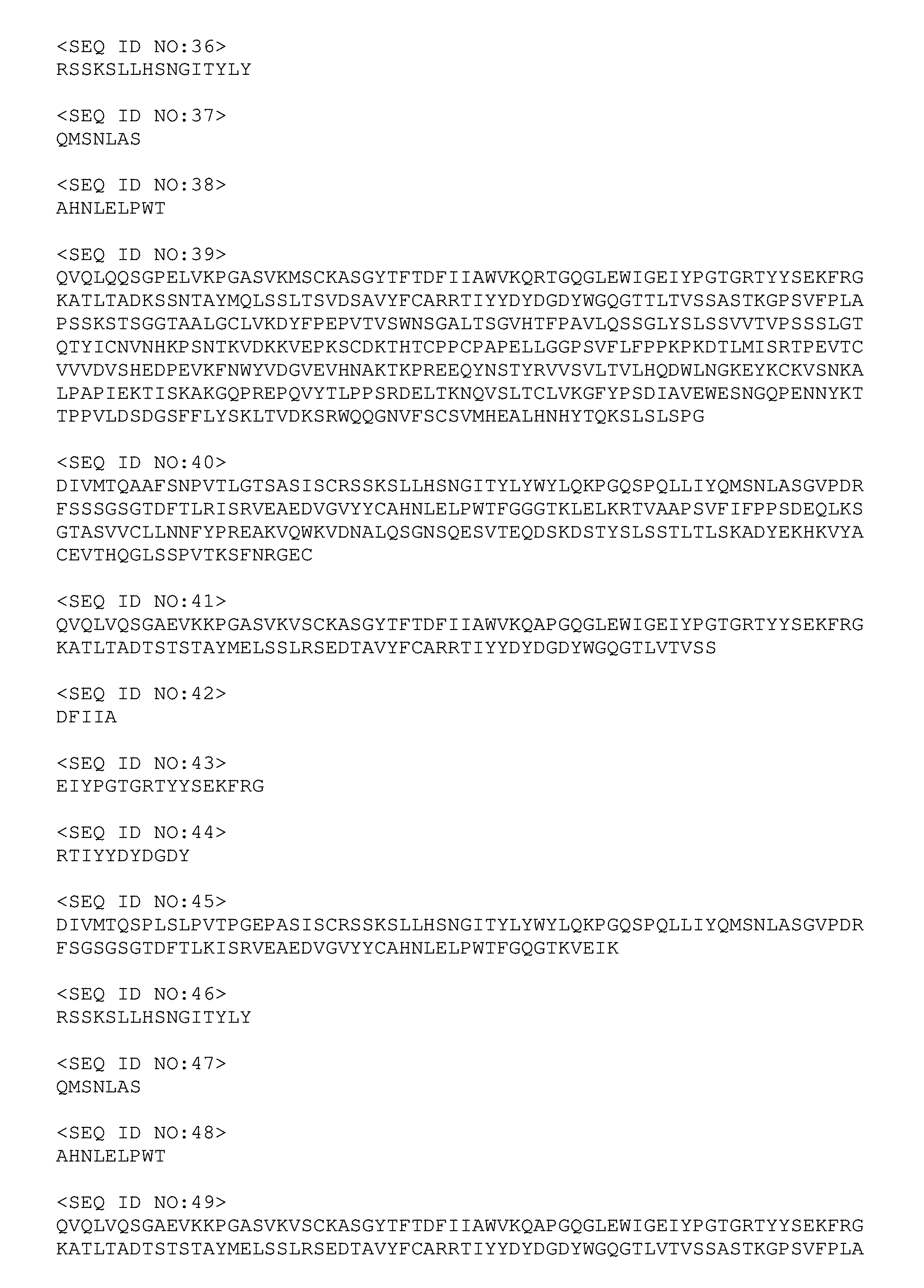
D00016
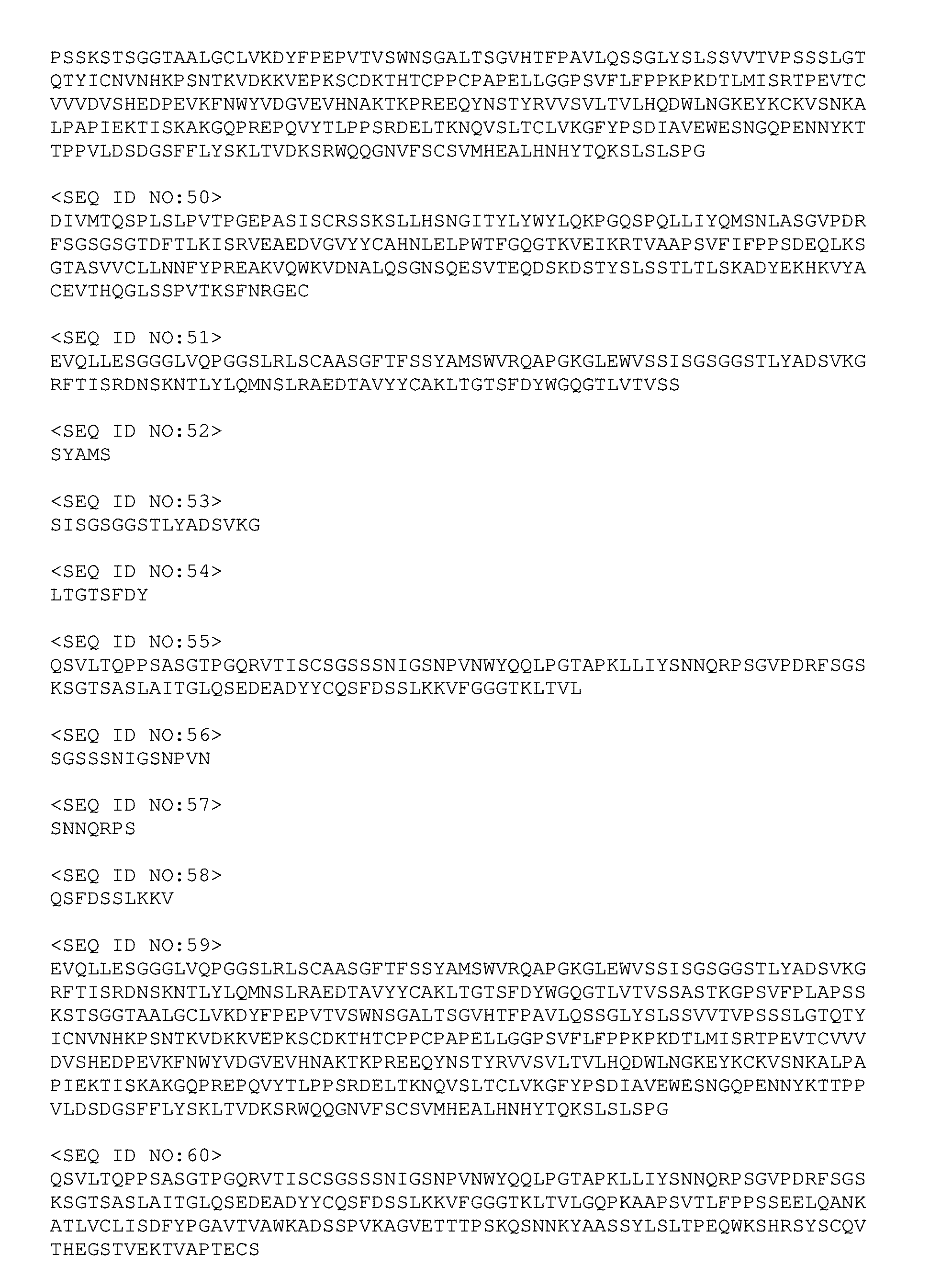
D00017
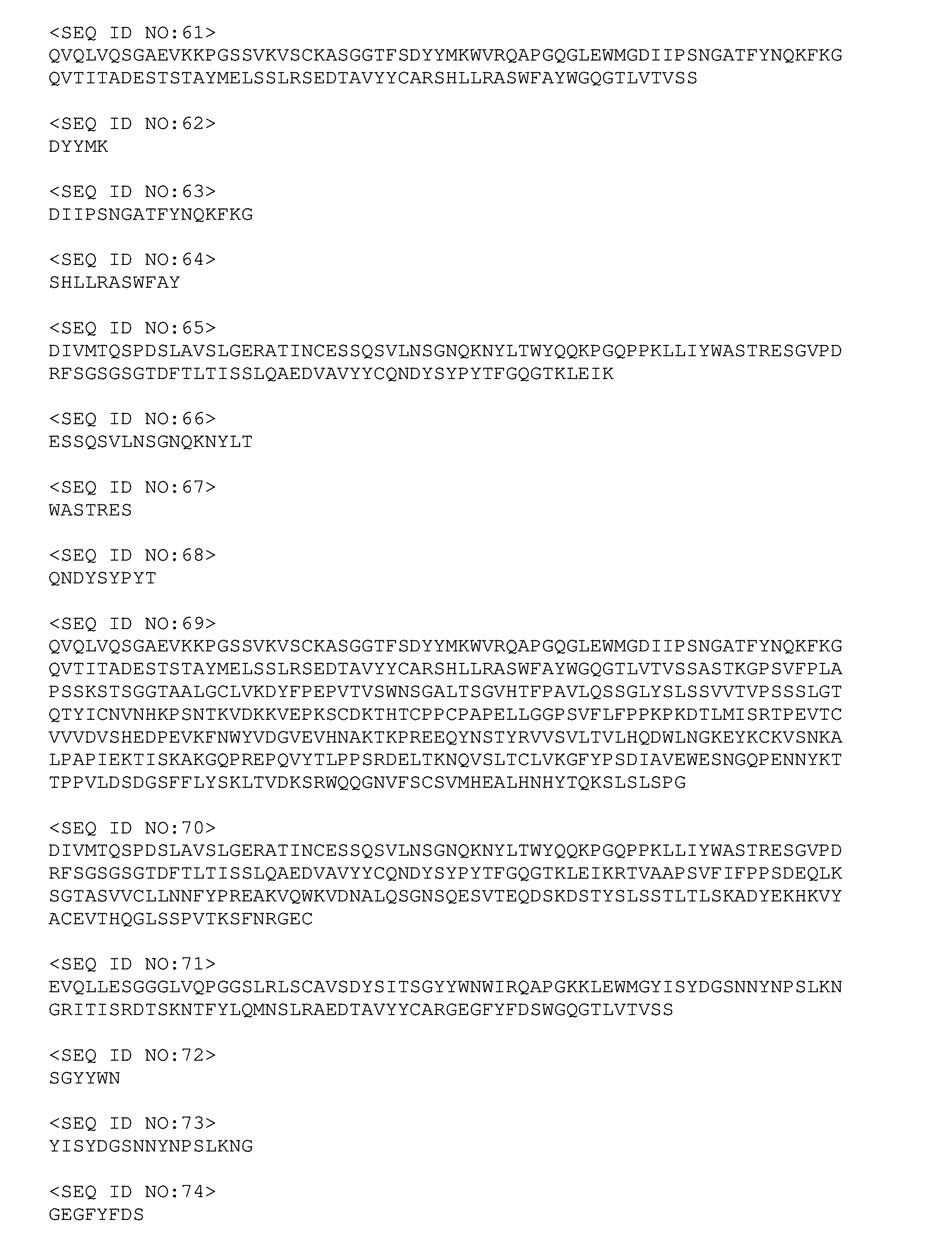
D00018
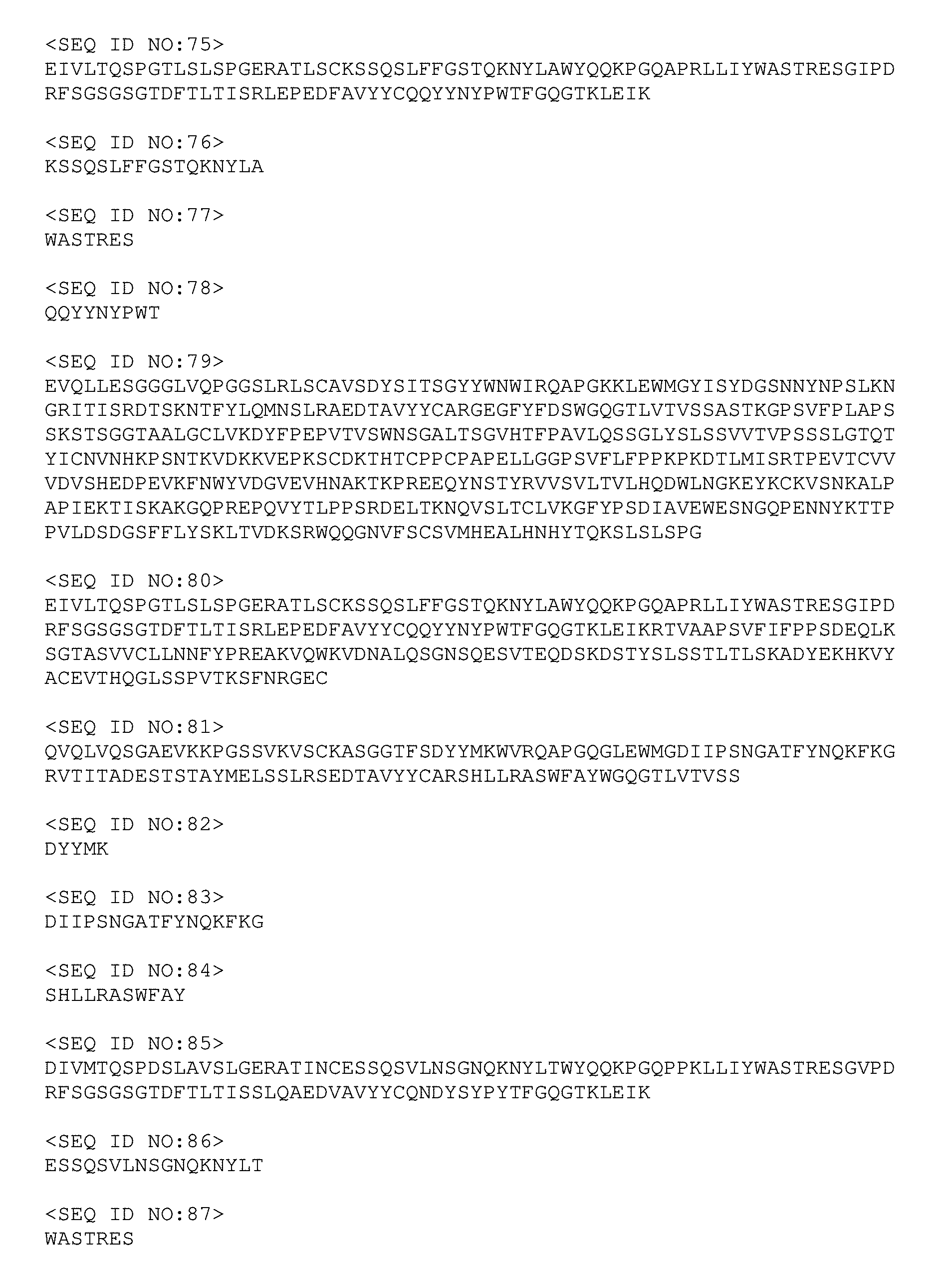
D00019
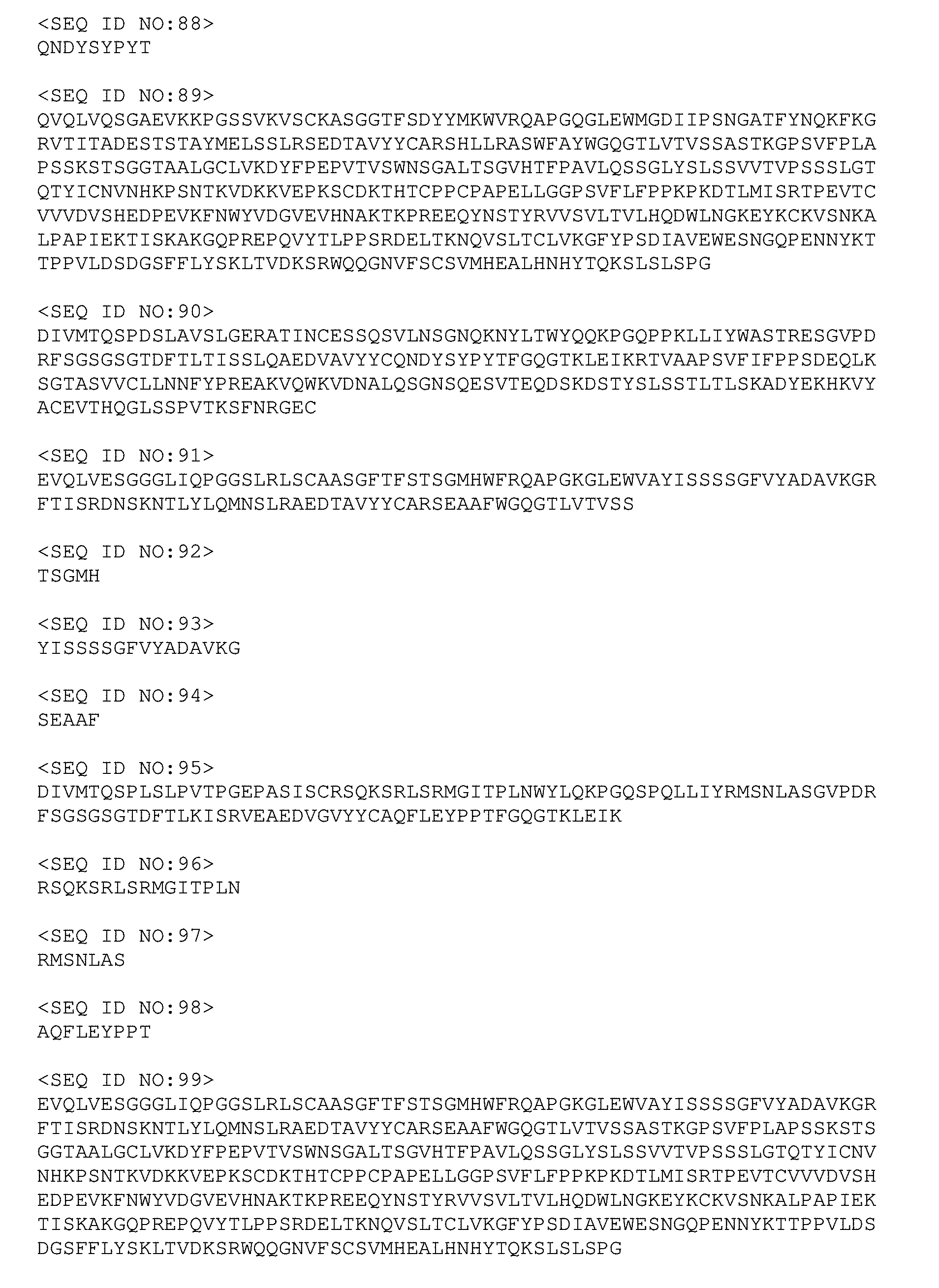
D00020
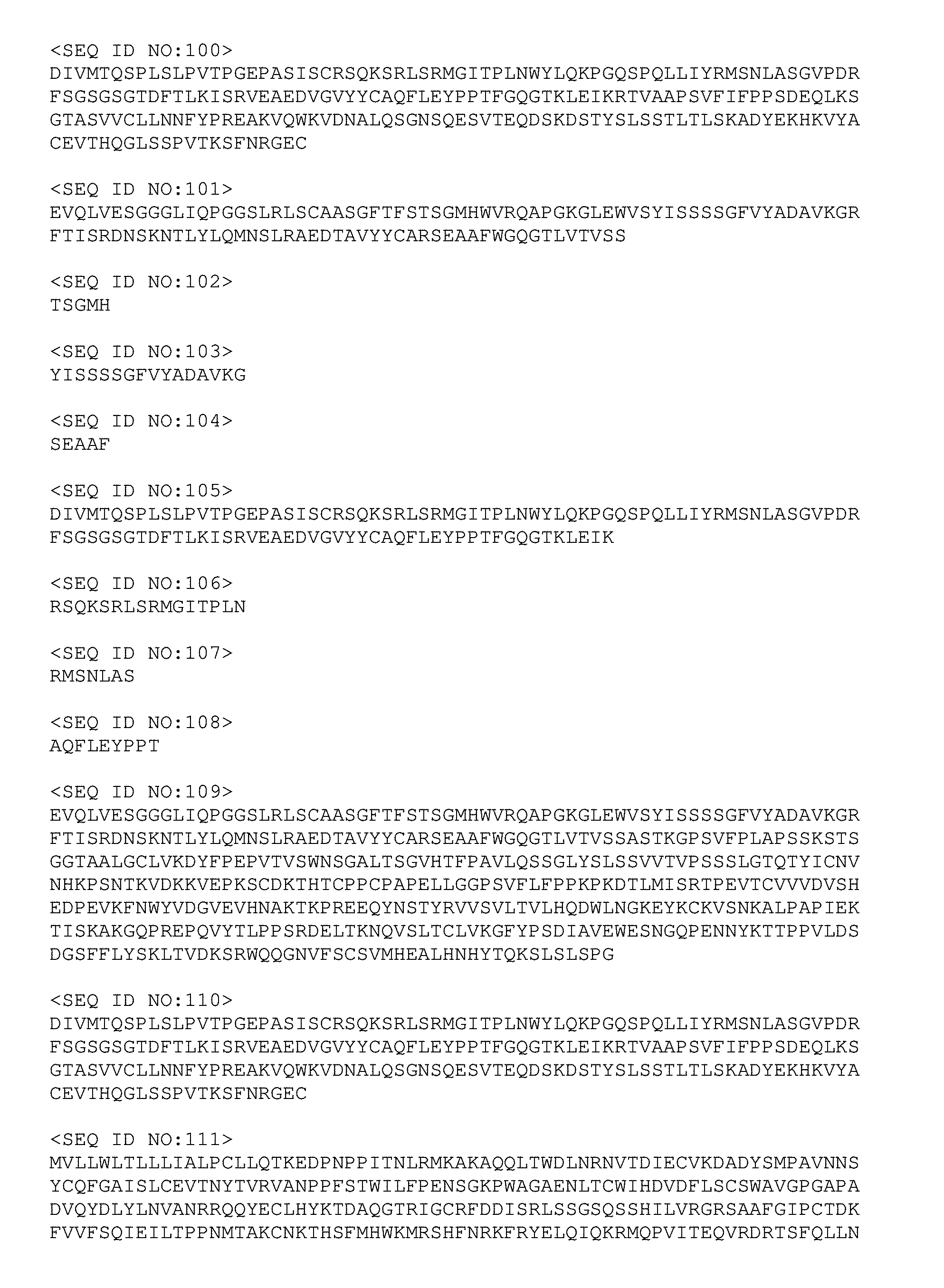
D00021
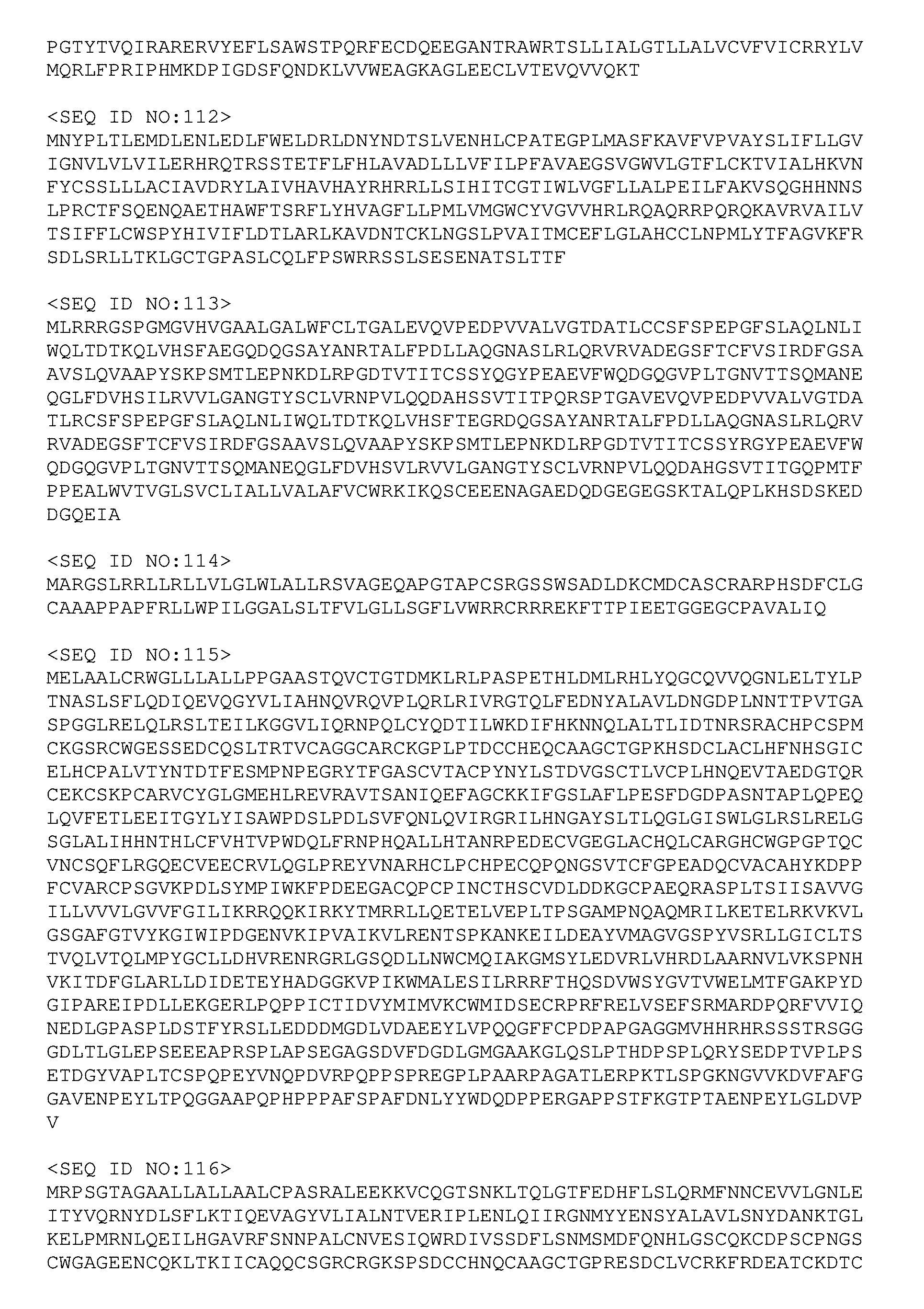
D00022
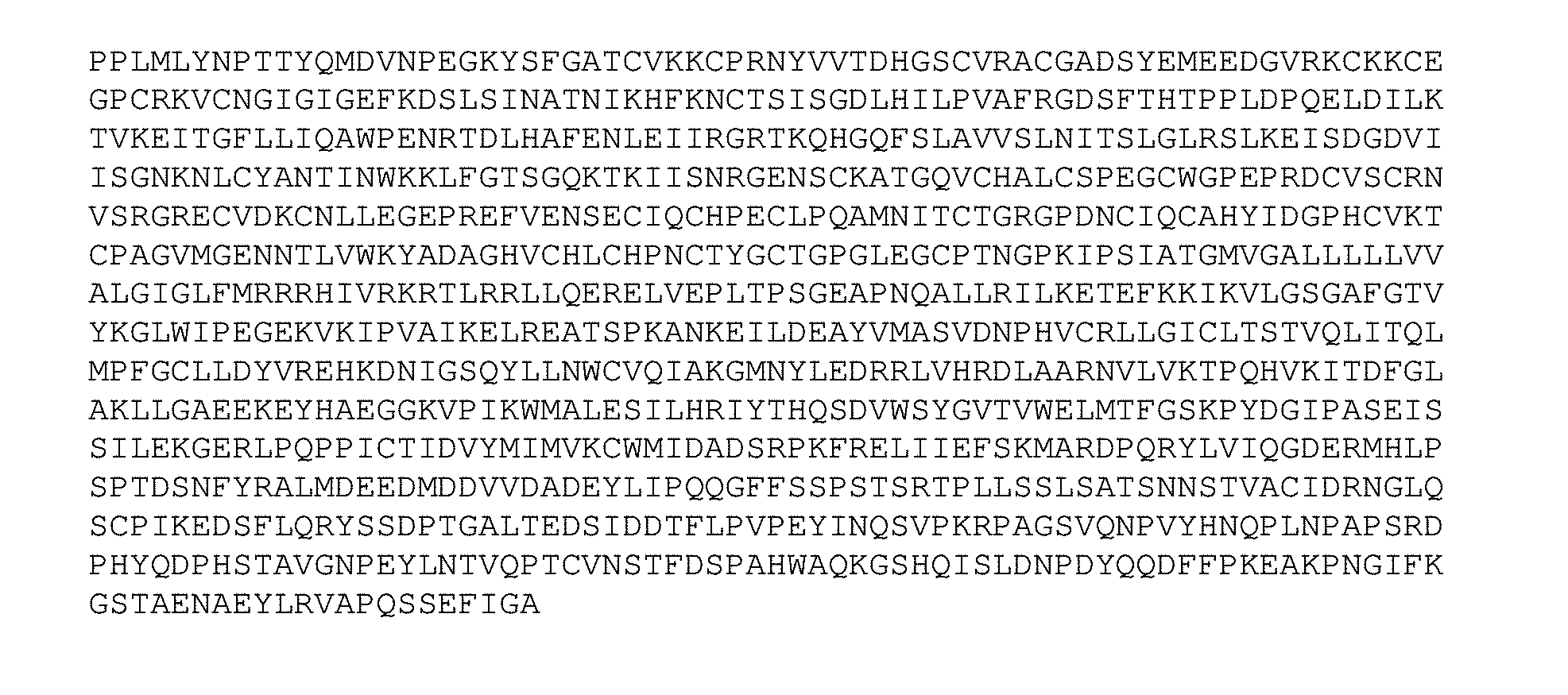
S00001
XML
uspto.report is an independent third-party trademark research tool that is not affiliated, endorsed, or sponsored by the United States Patent and Trademark Office (USPTO) or any other governmental organization. The information provided by uspto.report is based on publicly available data at the time of writing and is intended for informational purposes only.
While we strive to provide accurate and up-to-date information, we do not guarantee the accuracy, completeness, reliability, or suitability of the information displayed on this site. The use of this site is at your own risk. Any reliance you place on such information is therefore strictly at your own risk.
All official trademark data, including owner information, should be verified by visiting the official USPTO website at www.uspto.gov. This site is not intended to replace professional legal advice and should not be used as a substitute for consulting with a legal professional who is knowledgeable about trademark law.